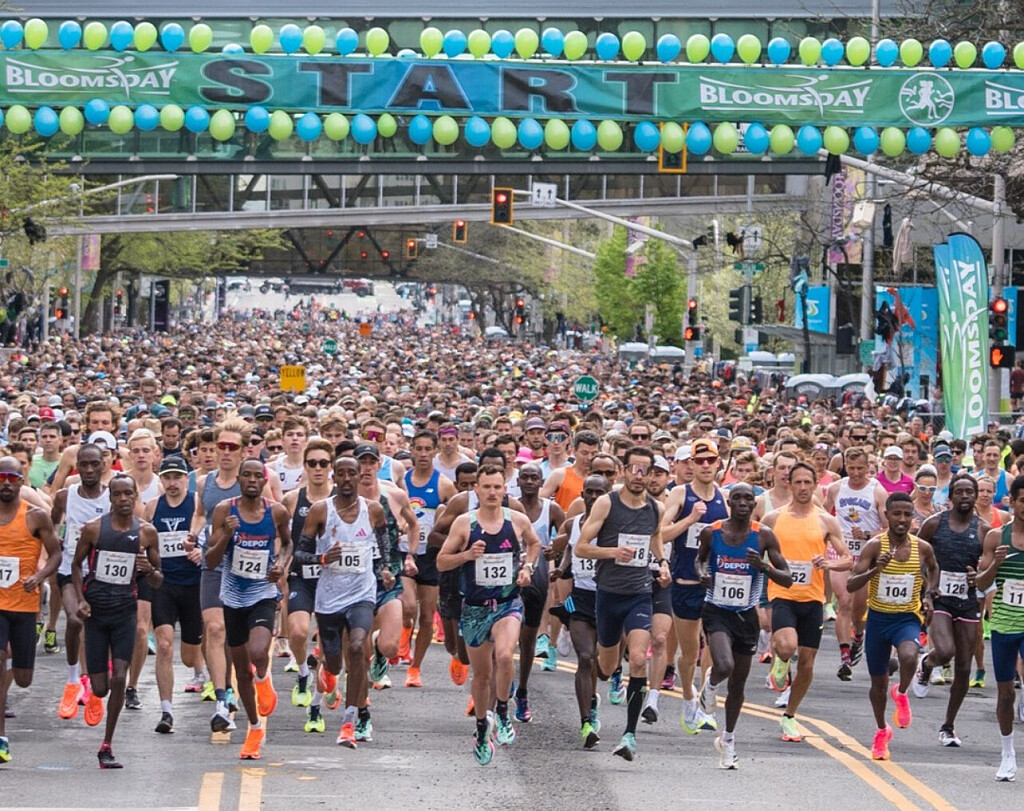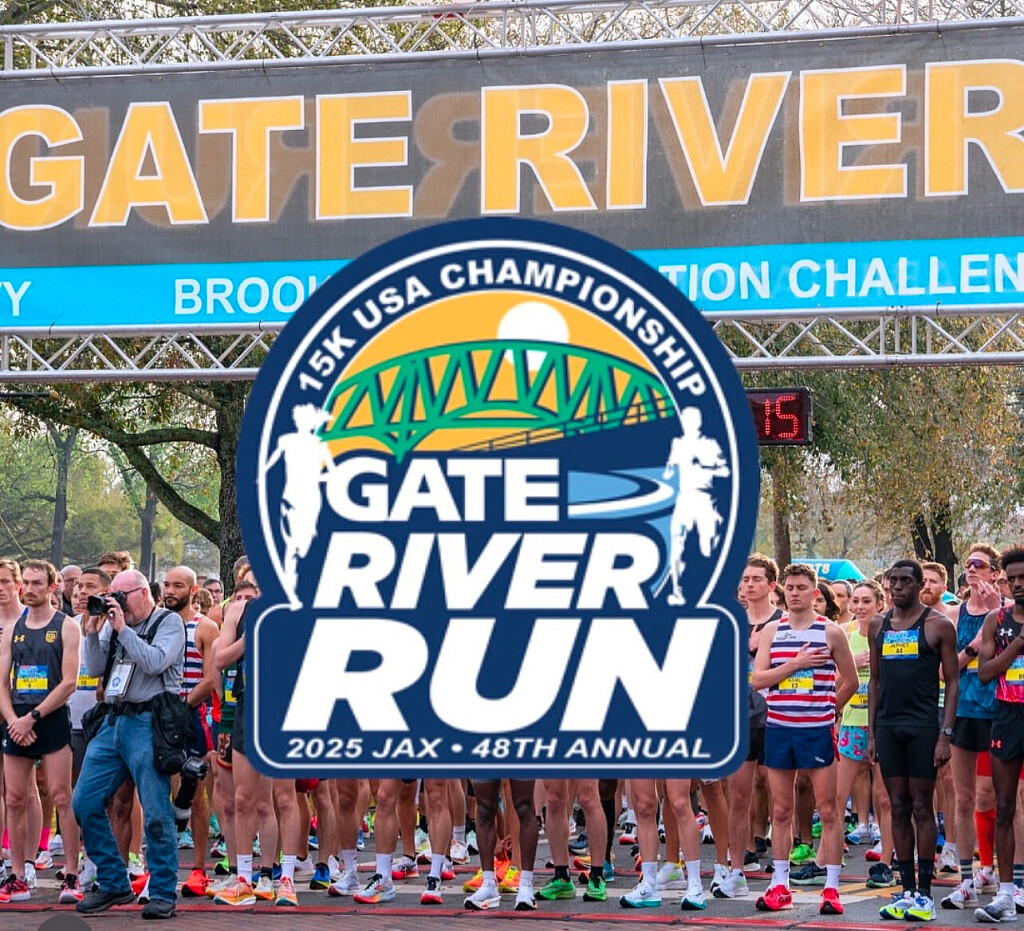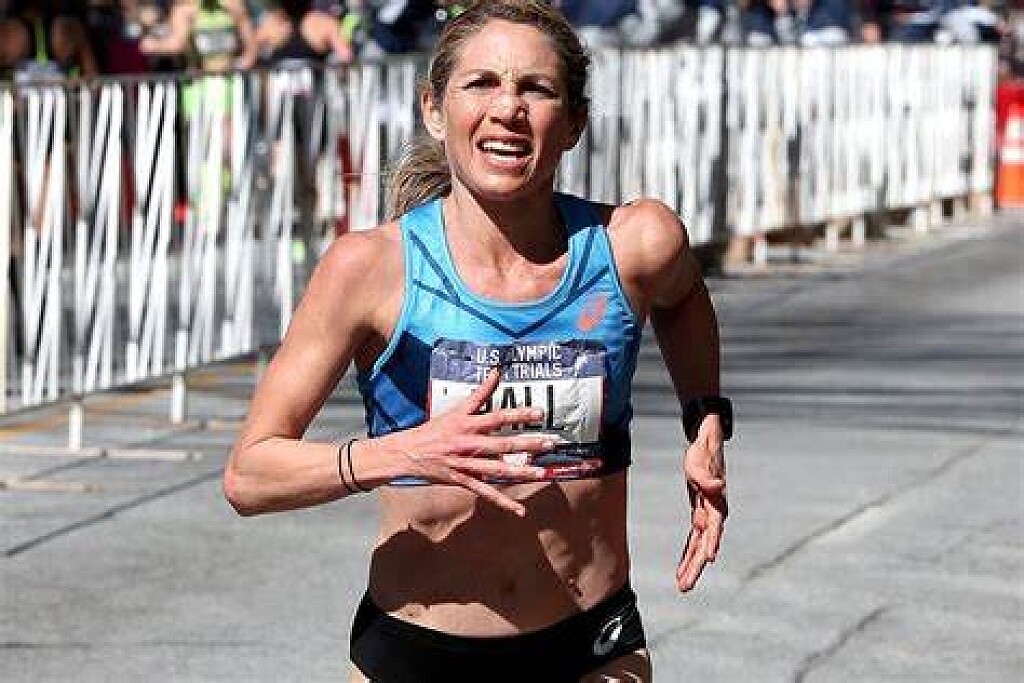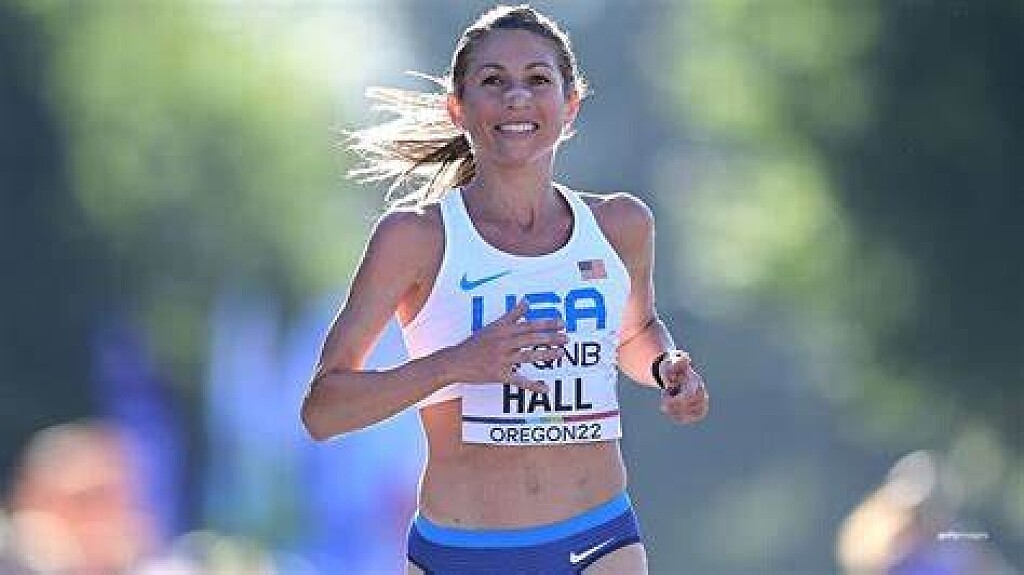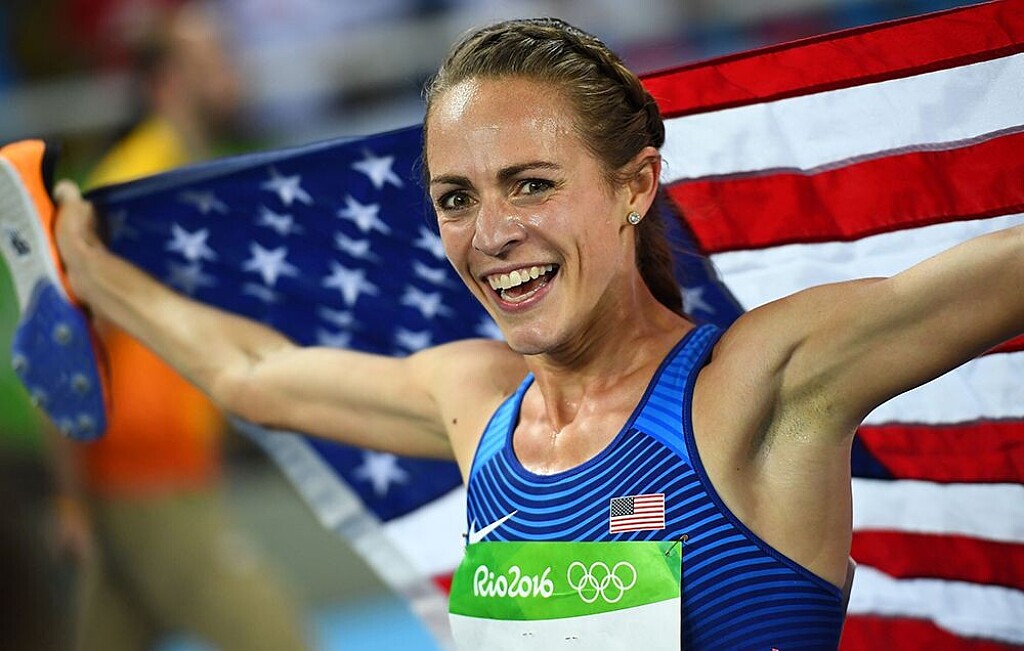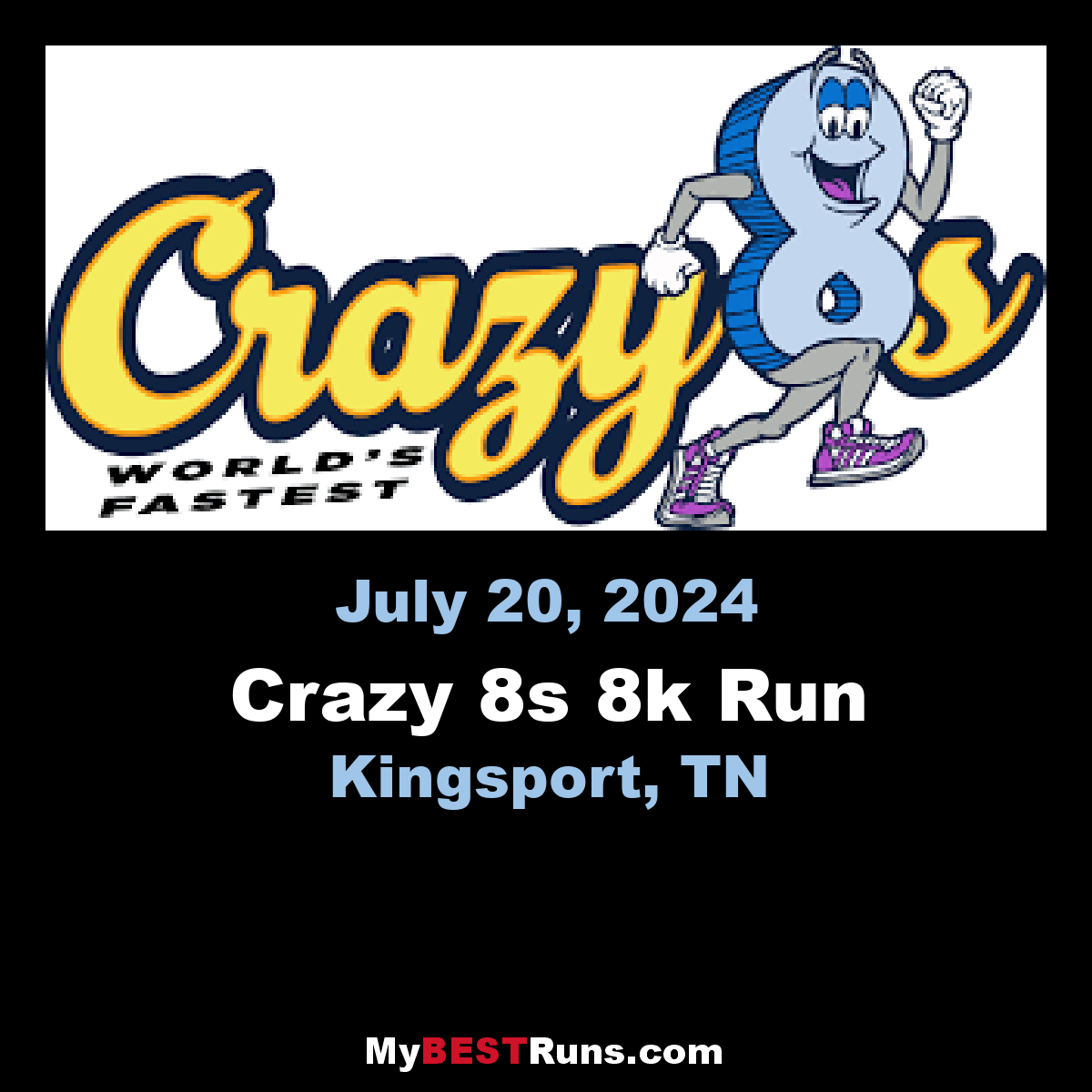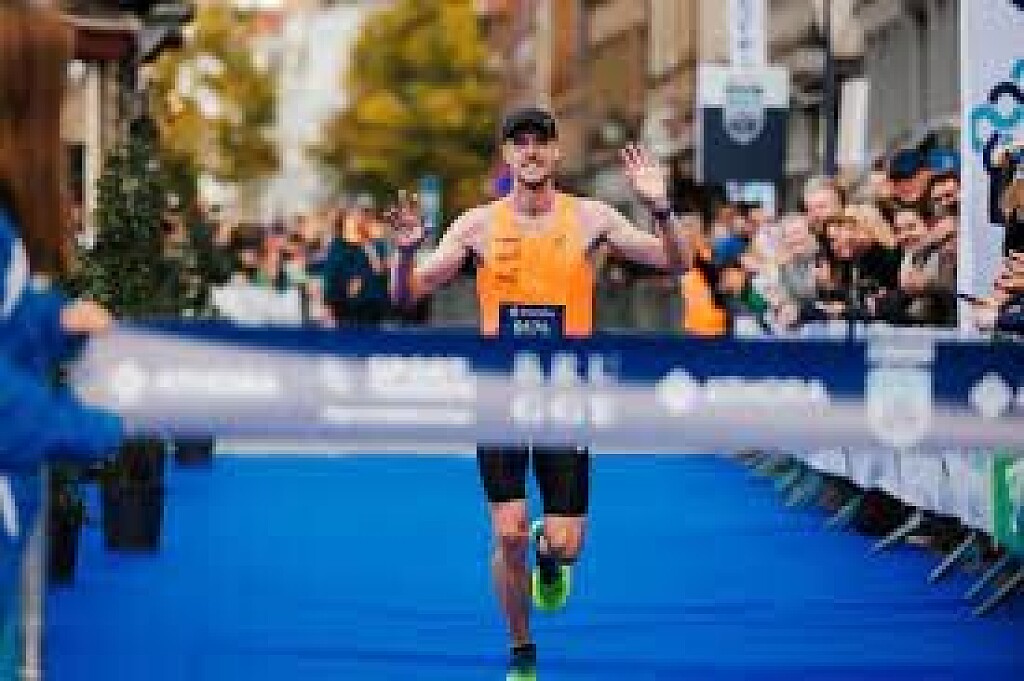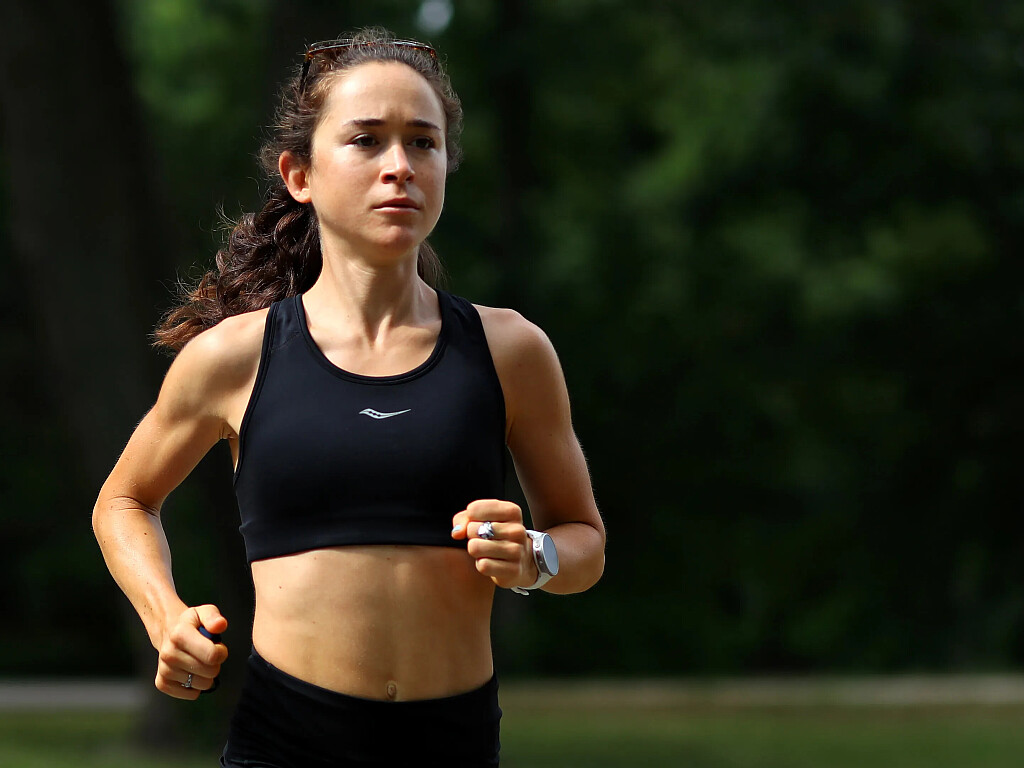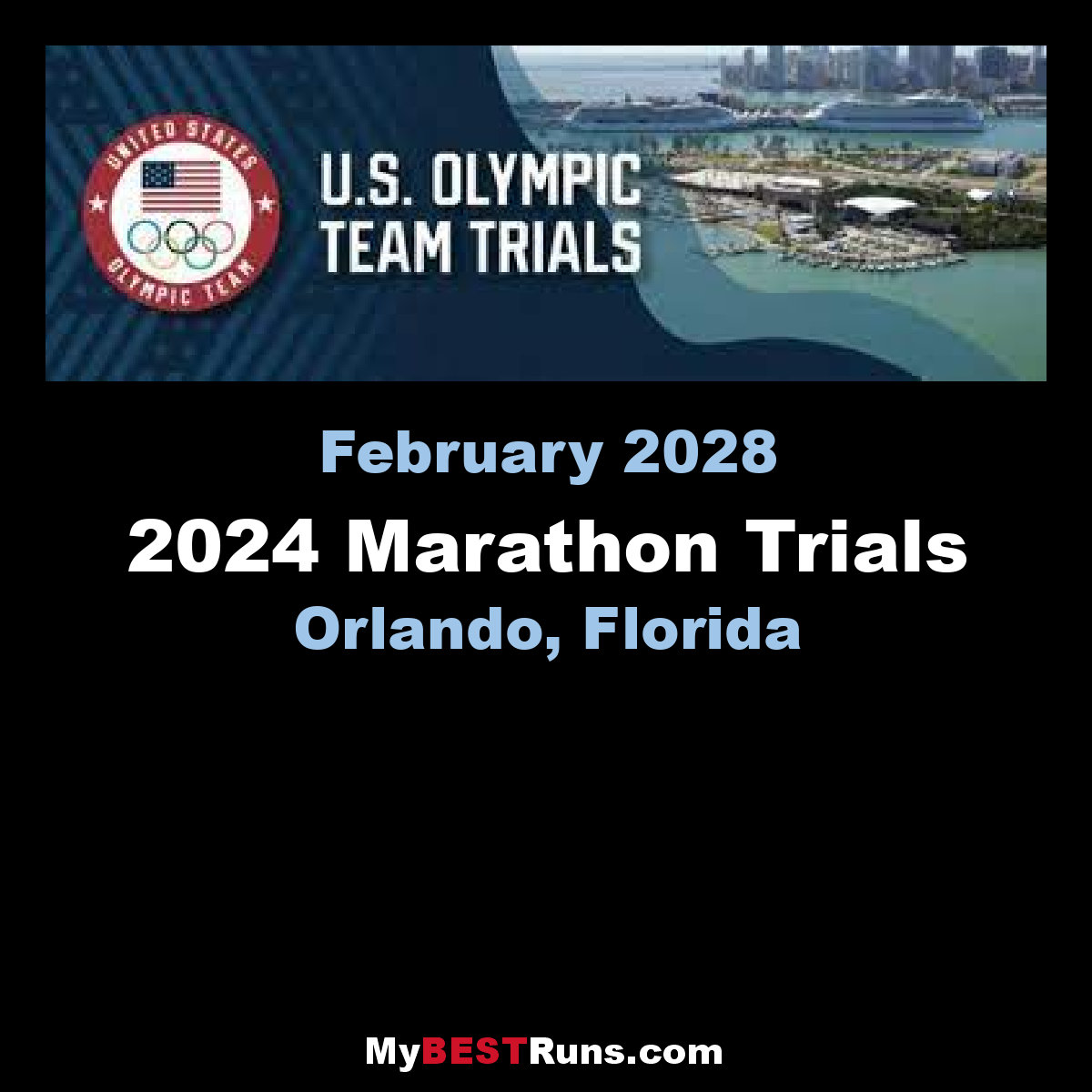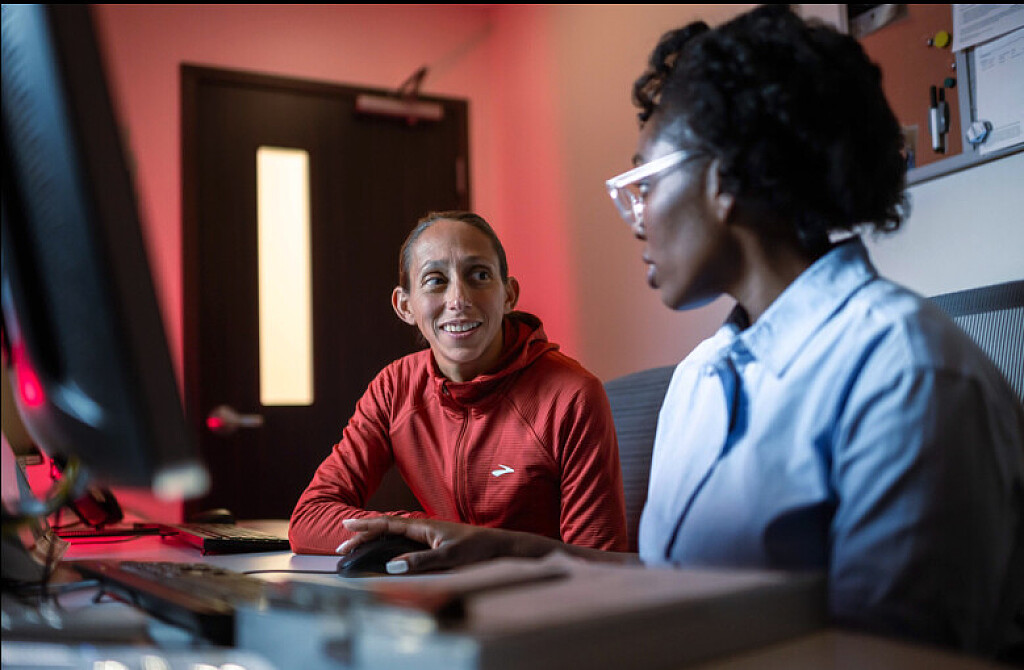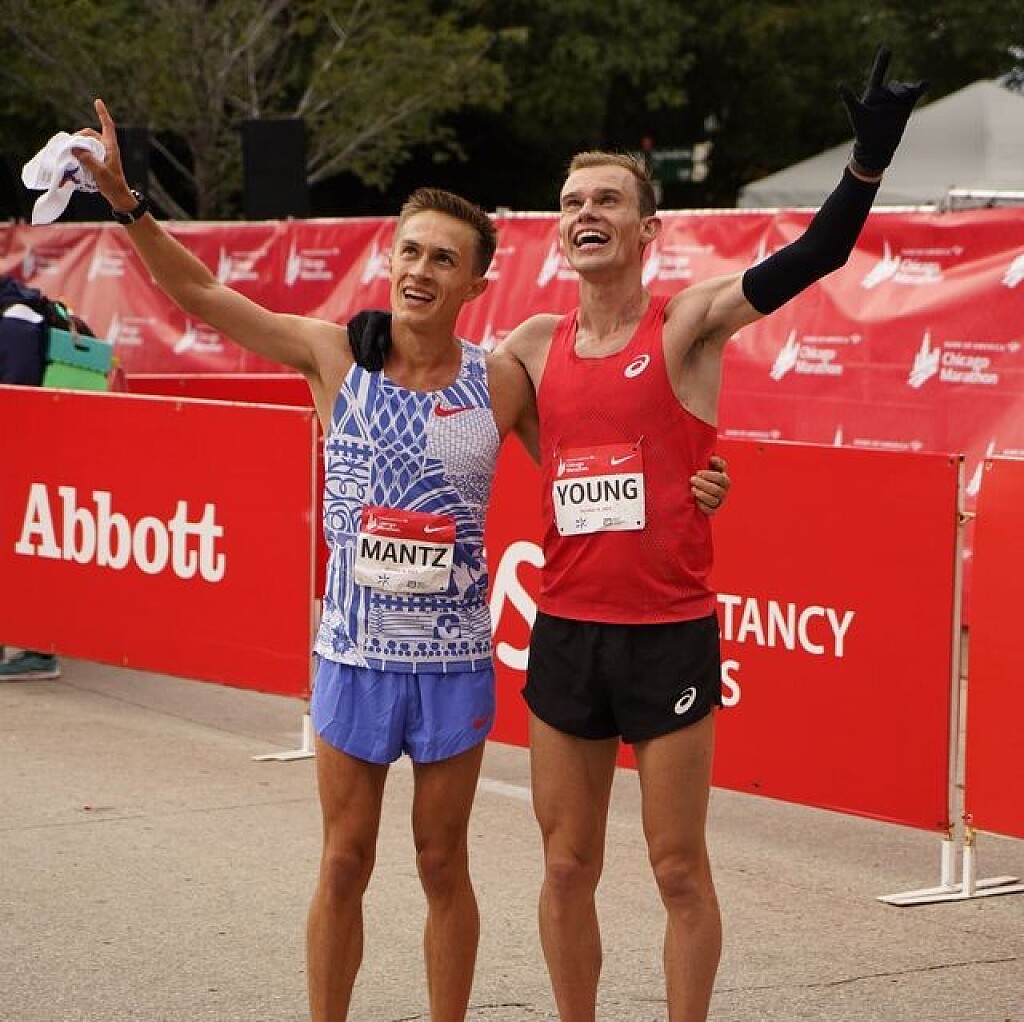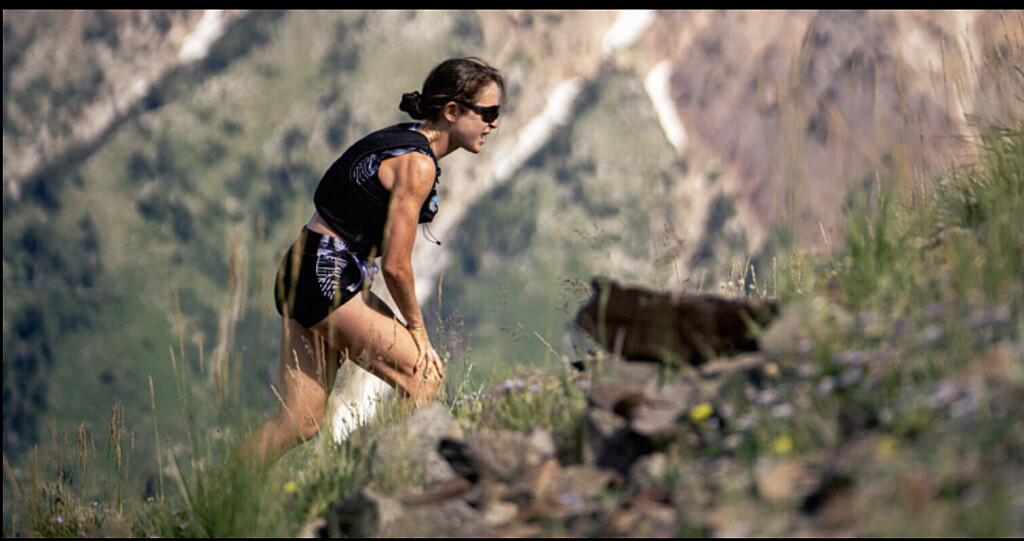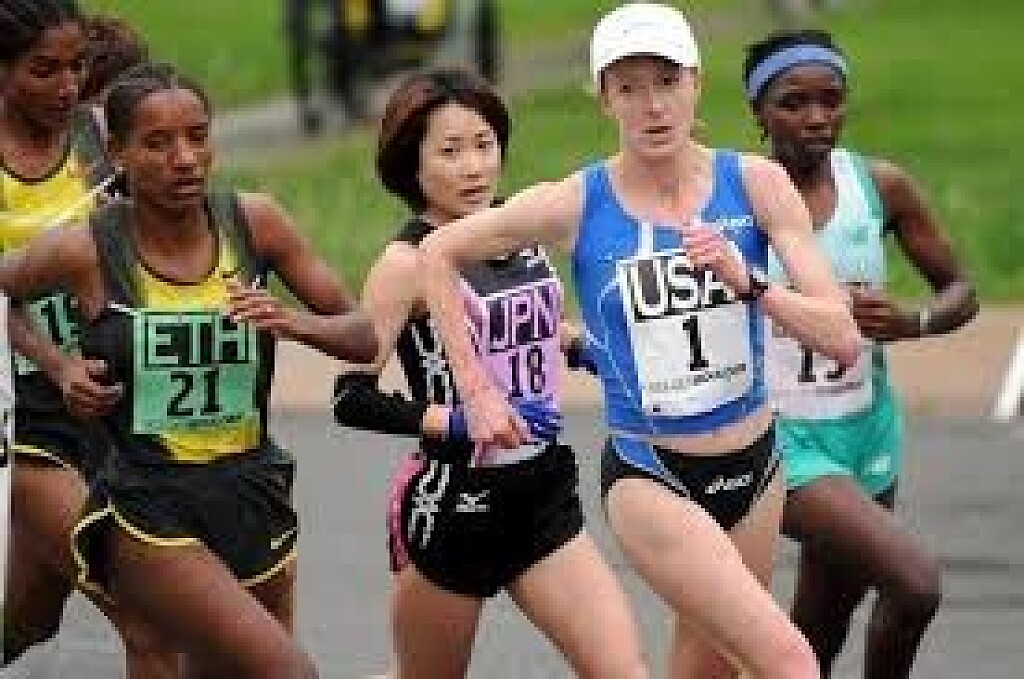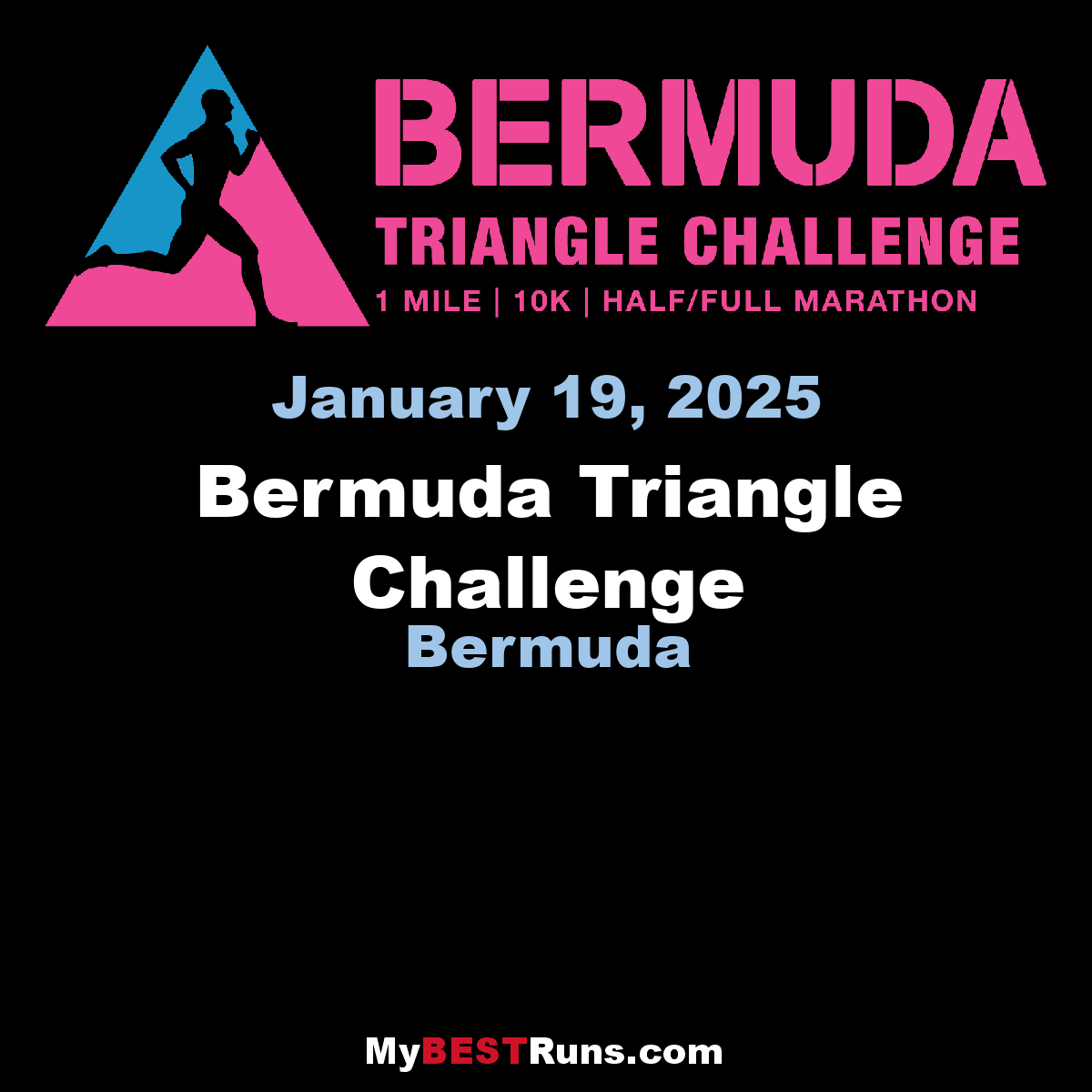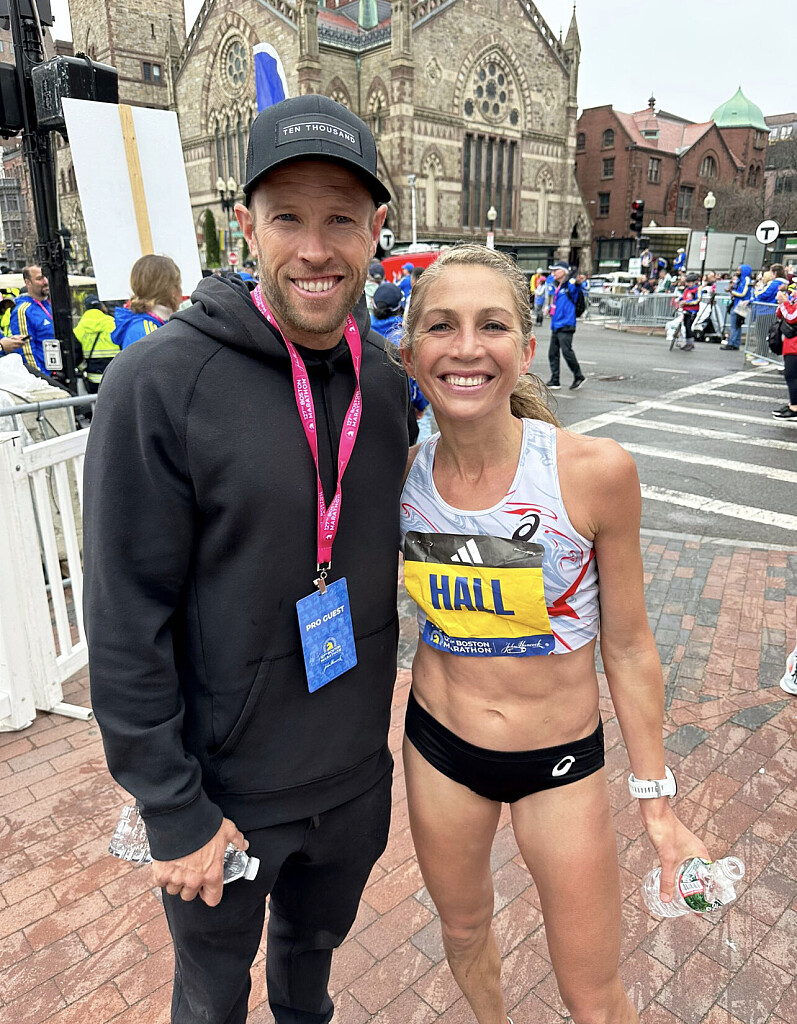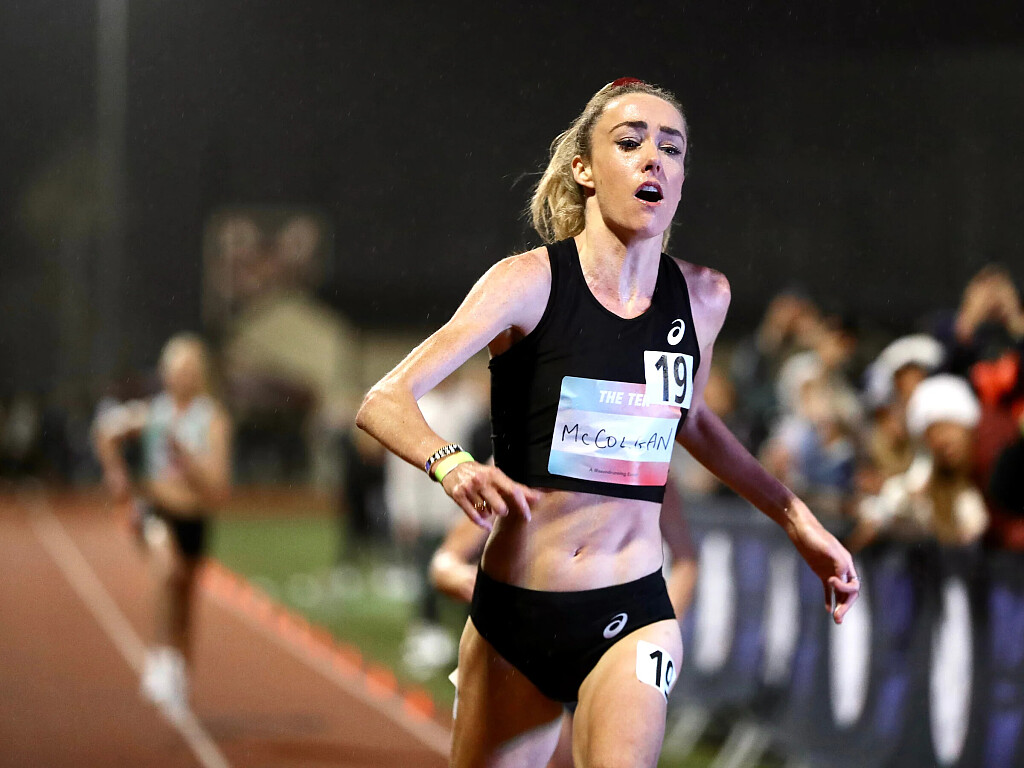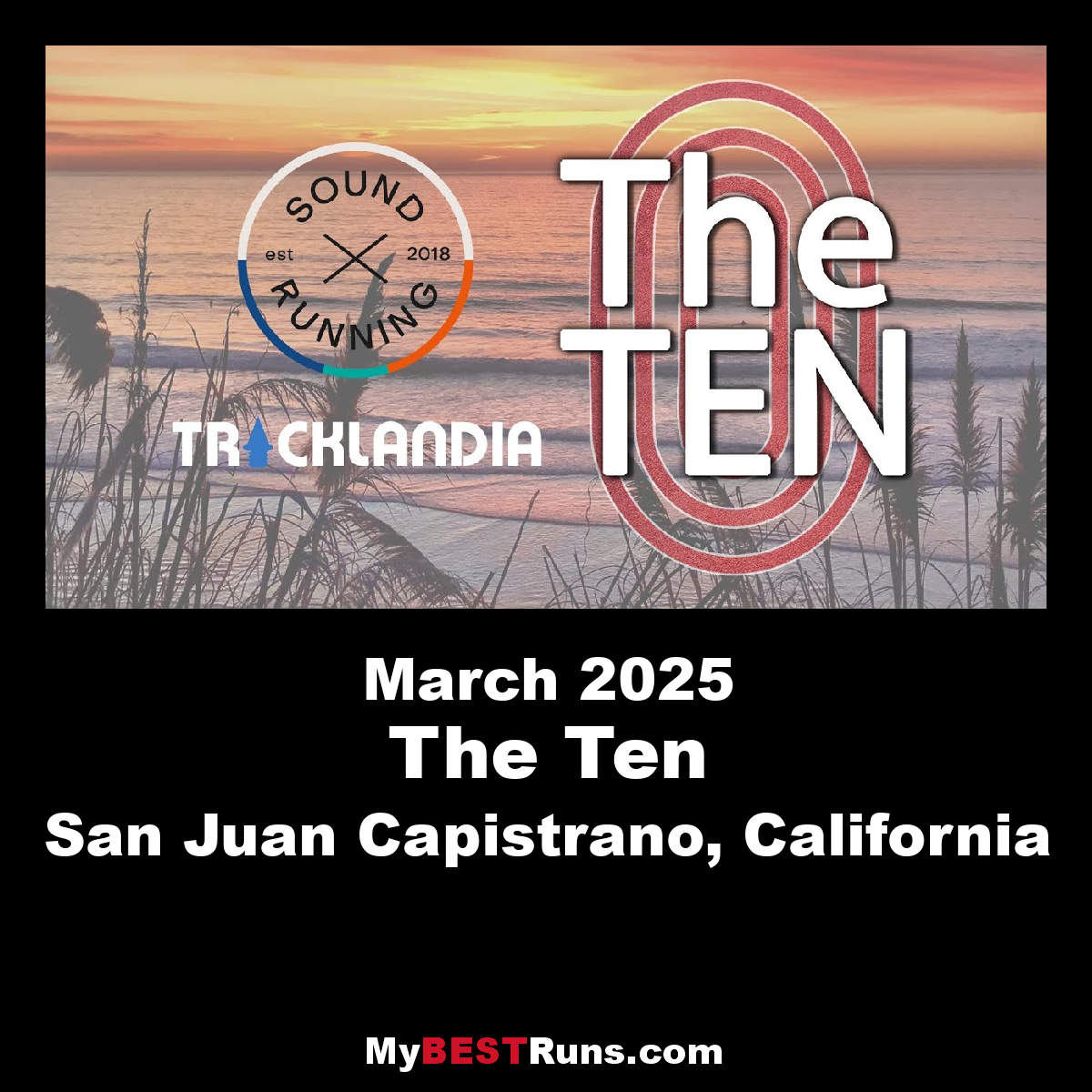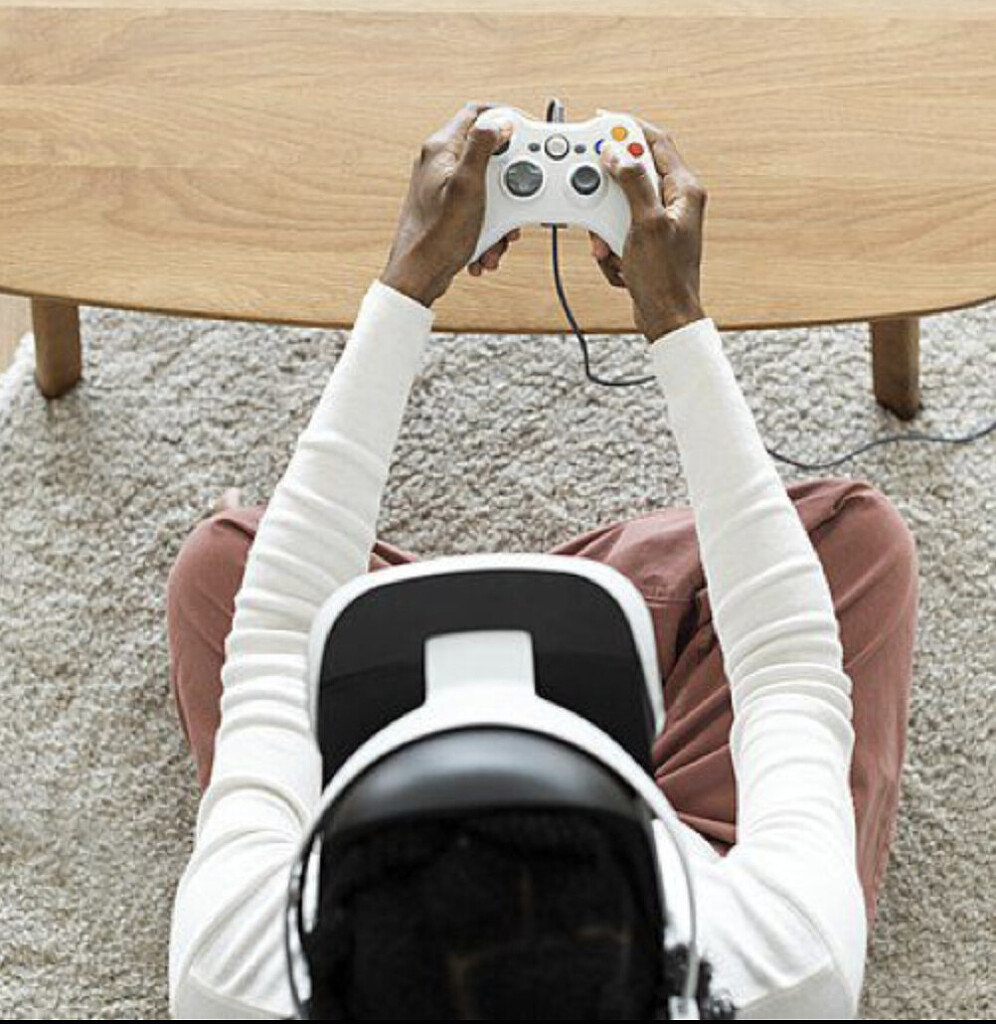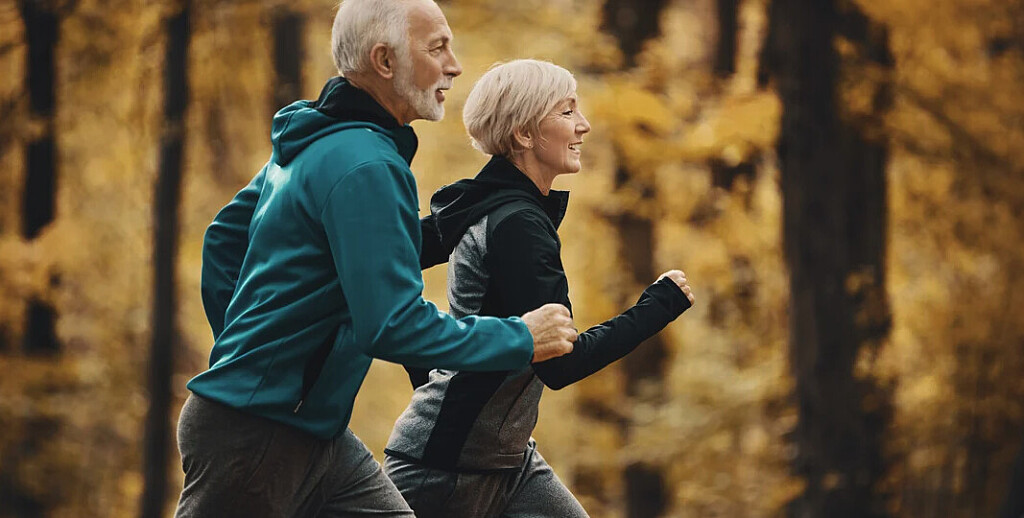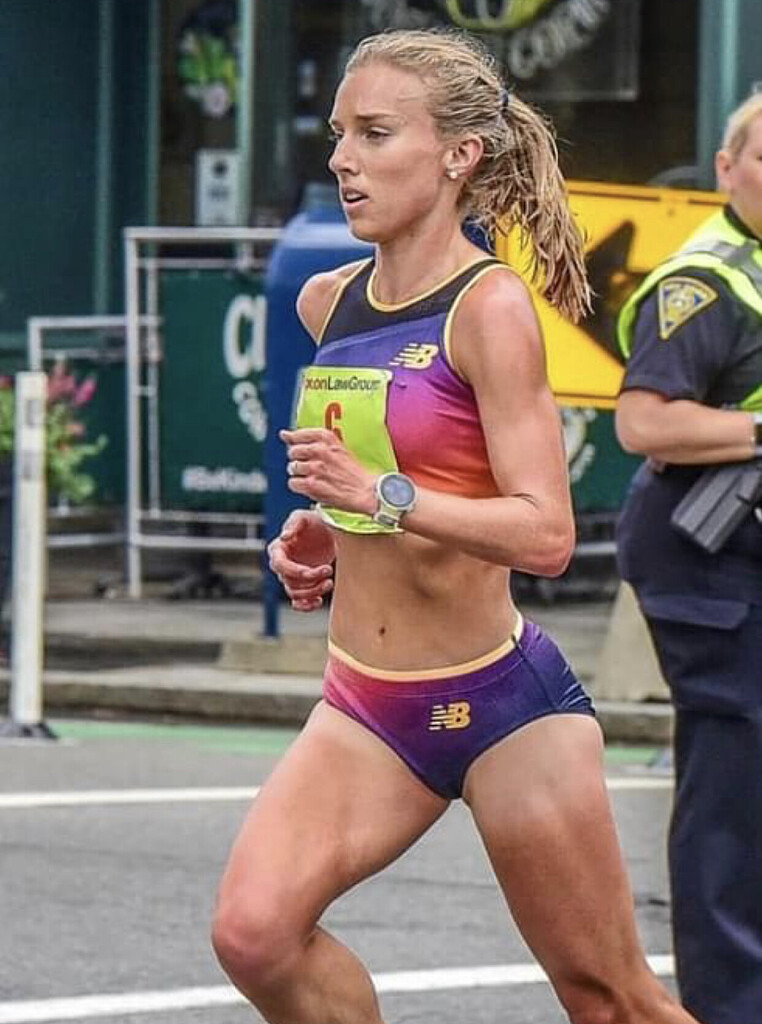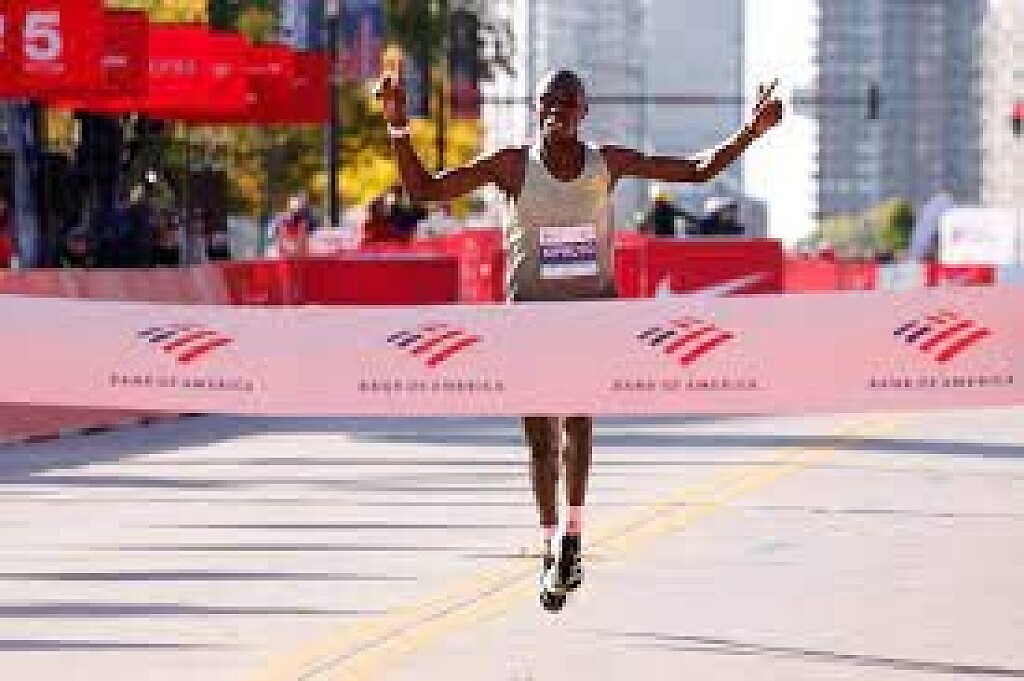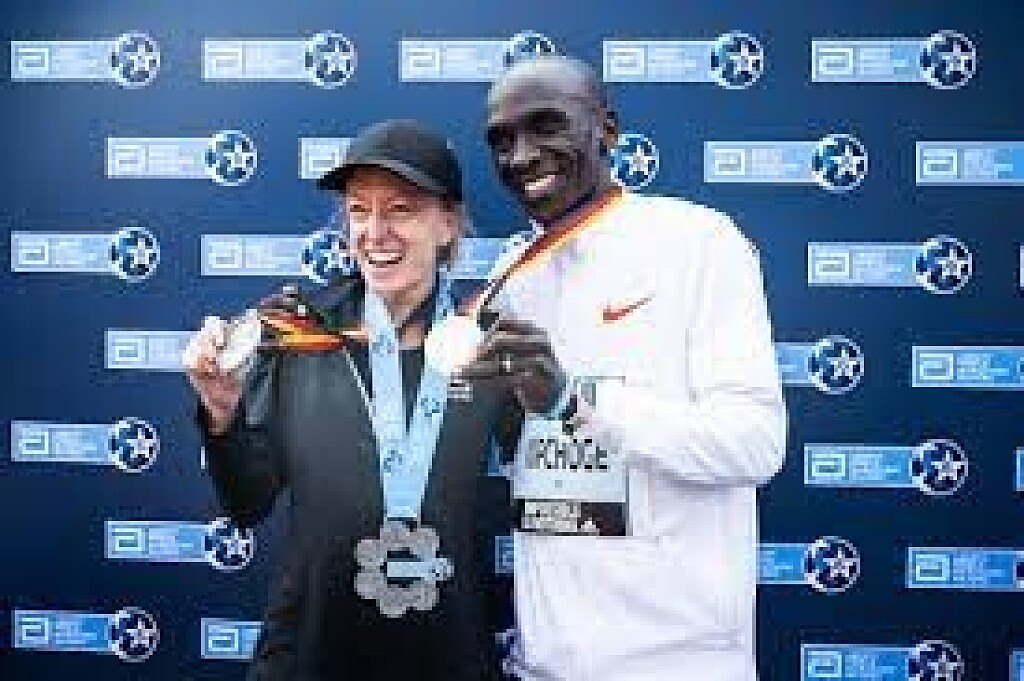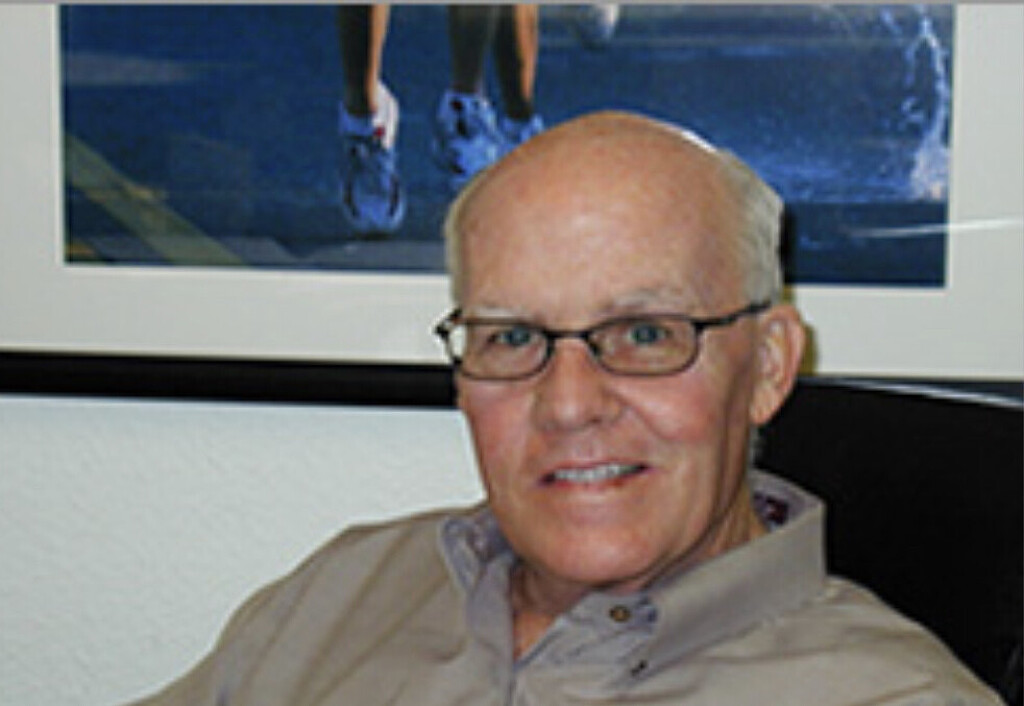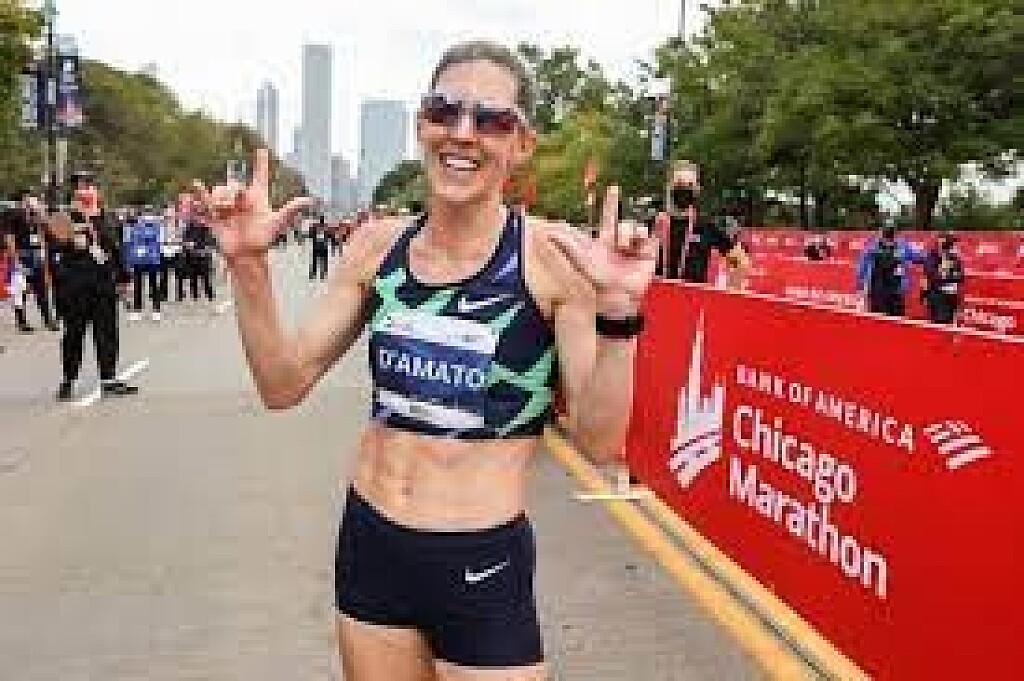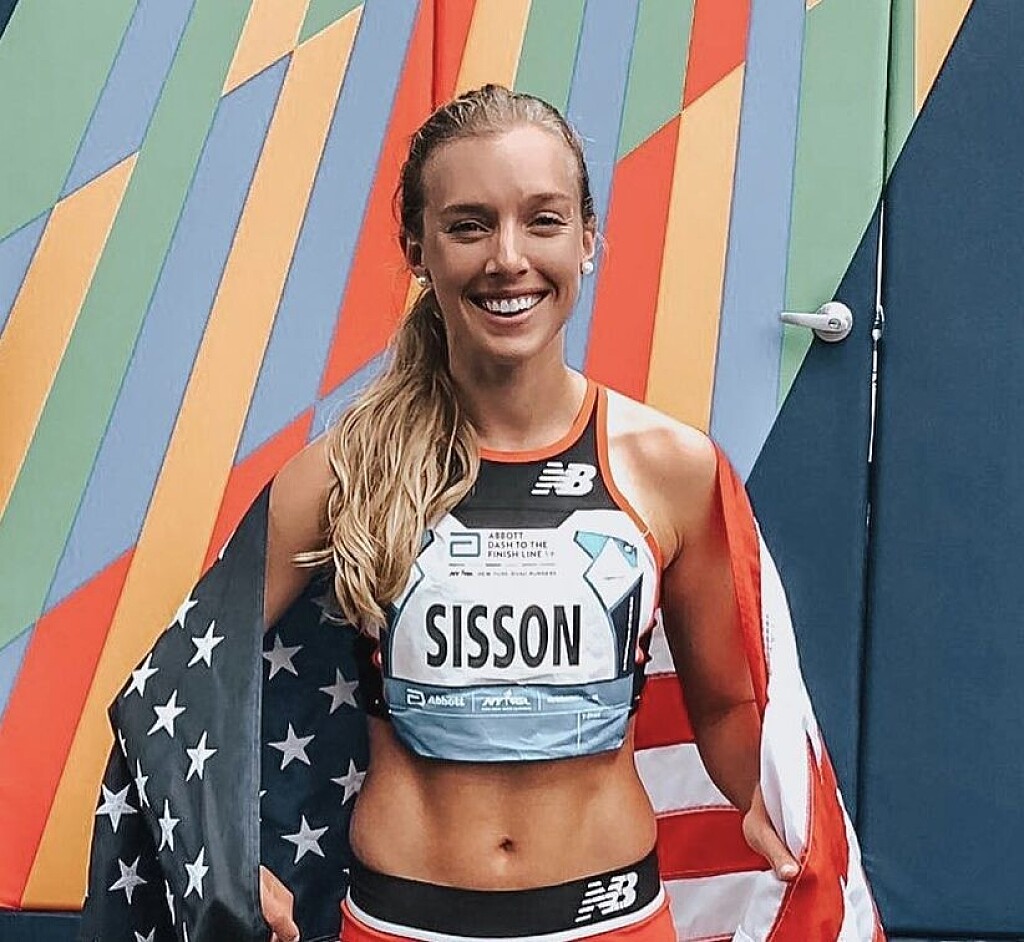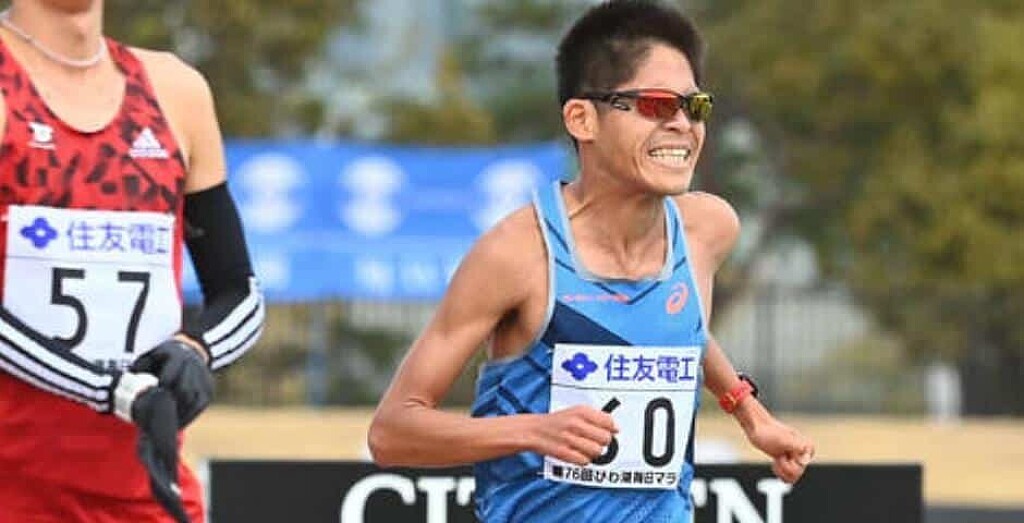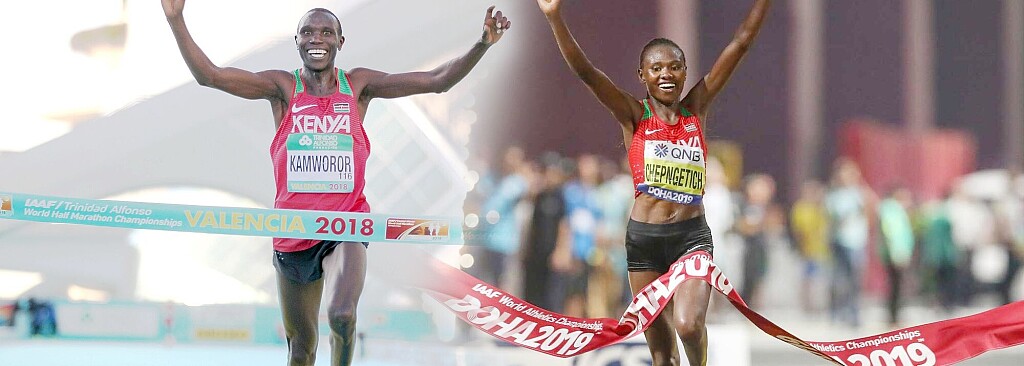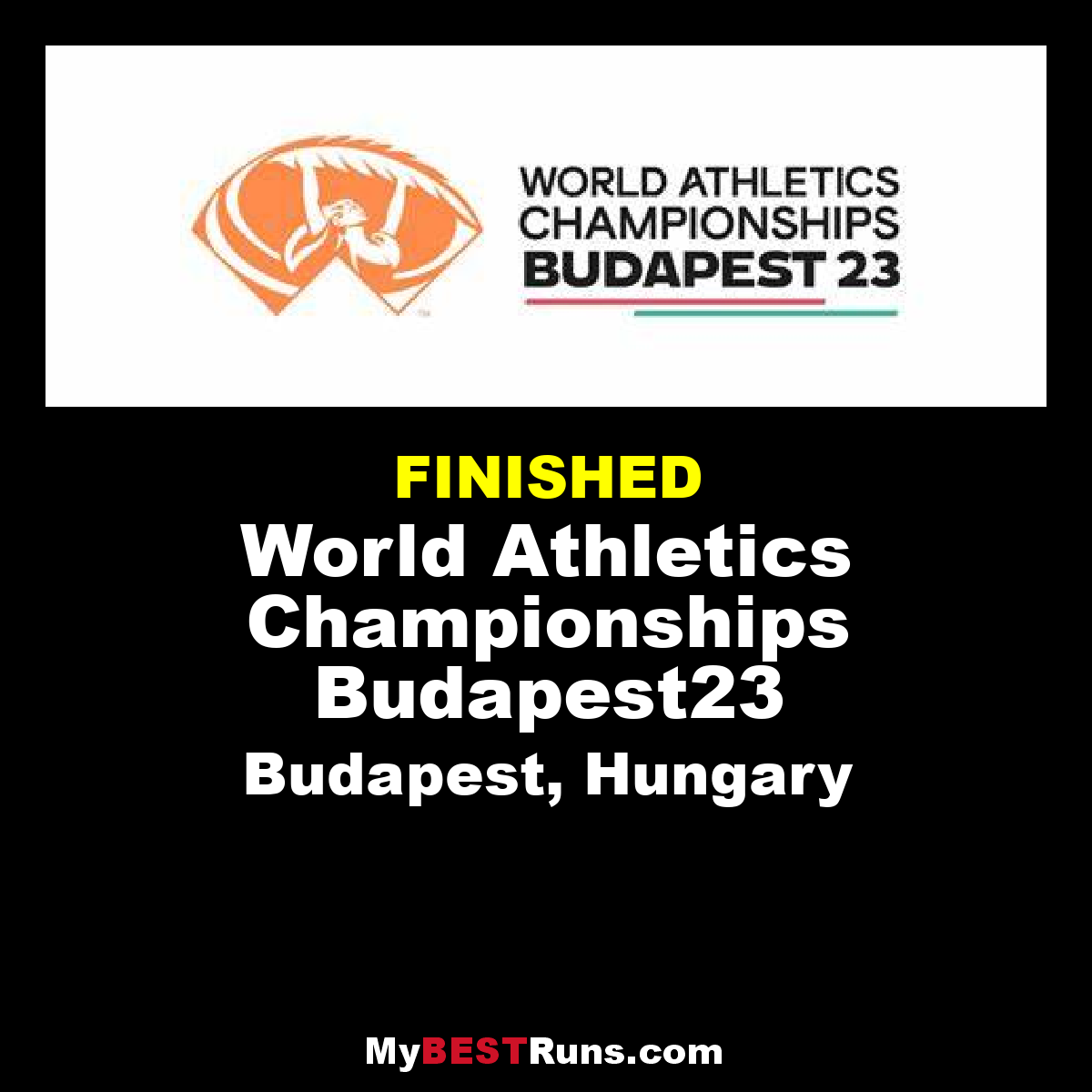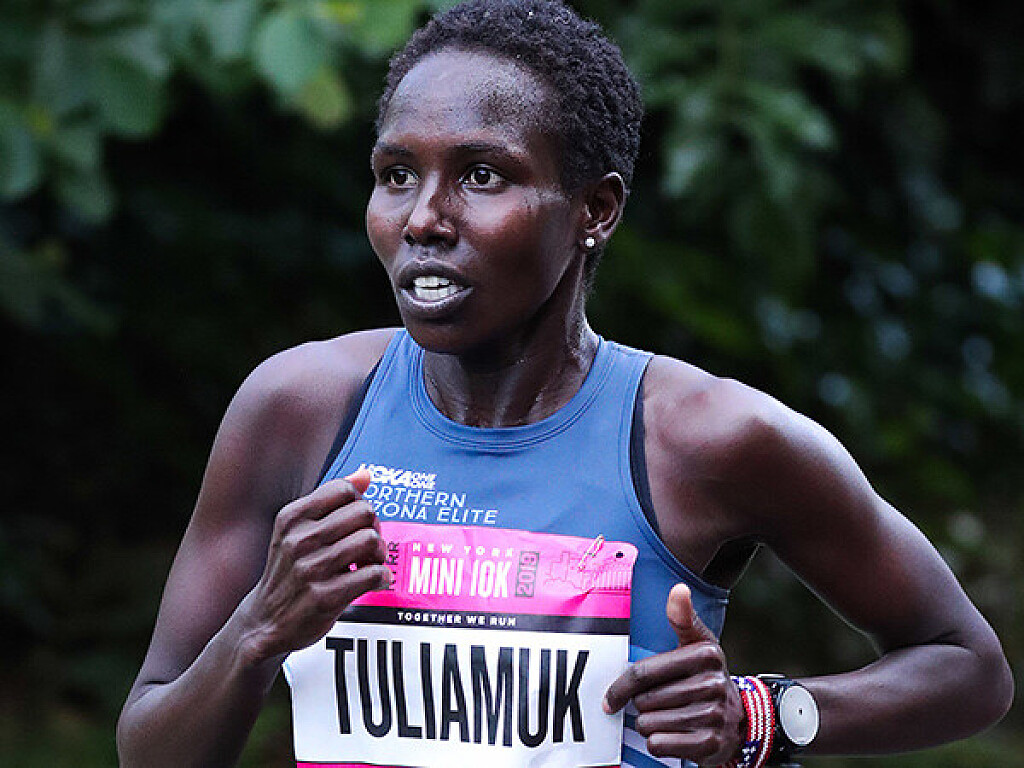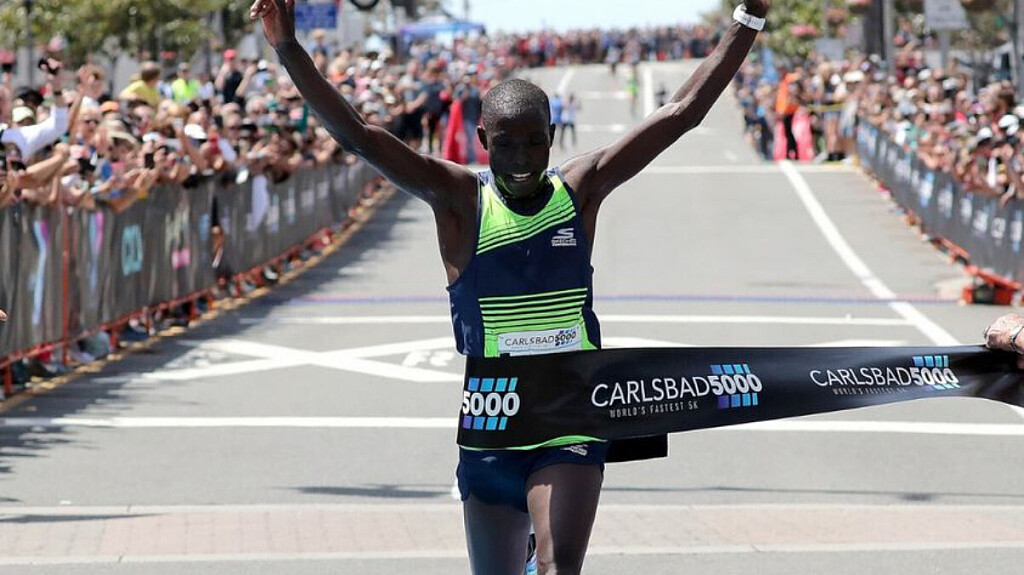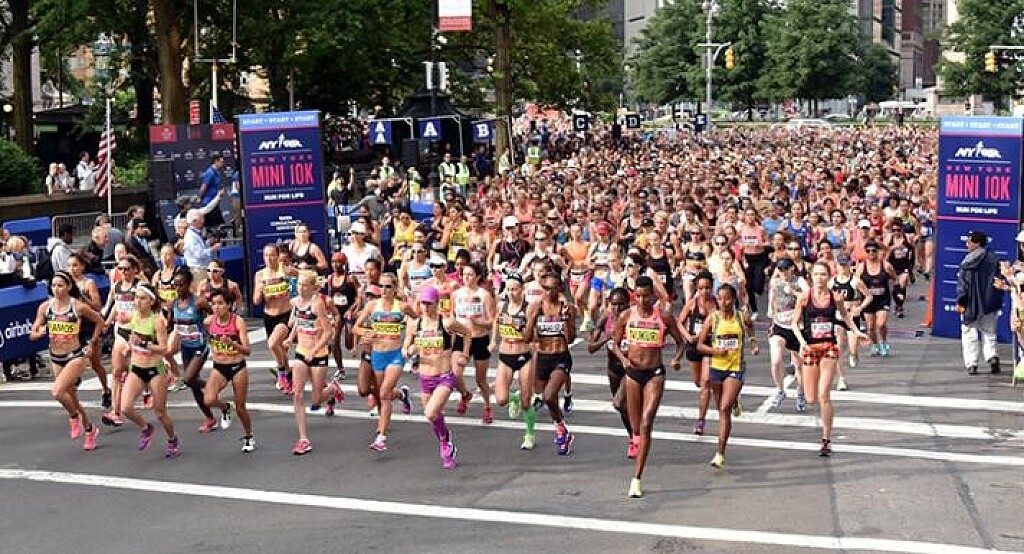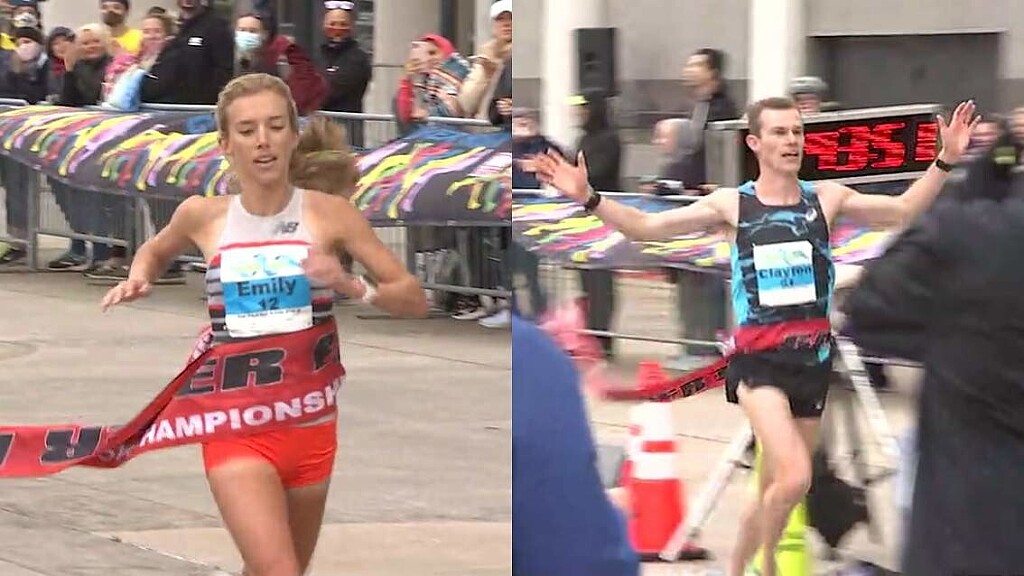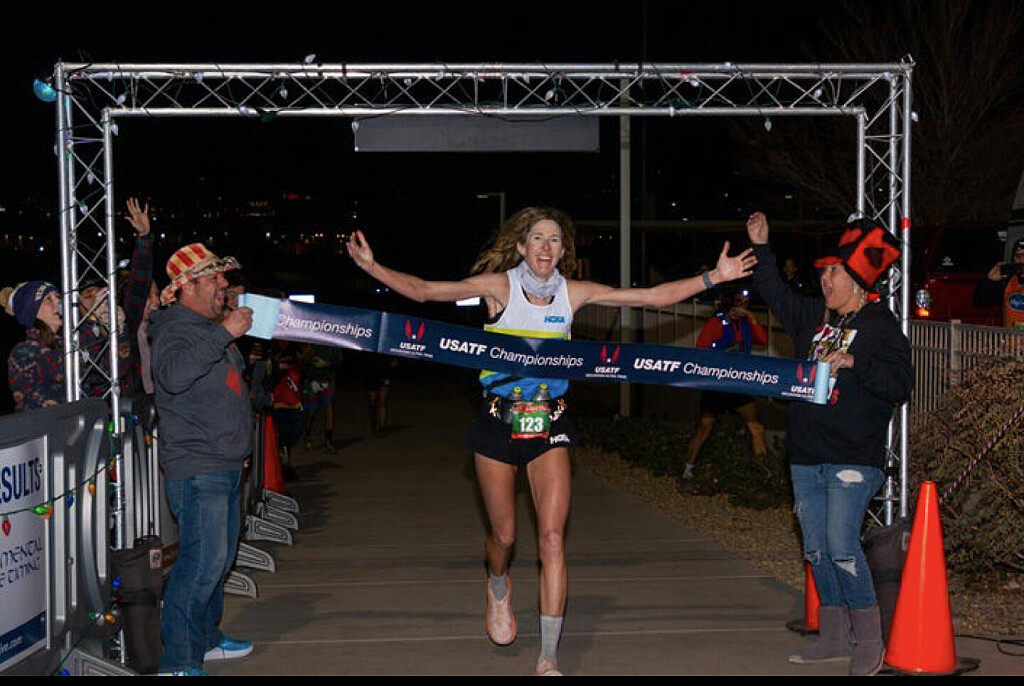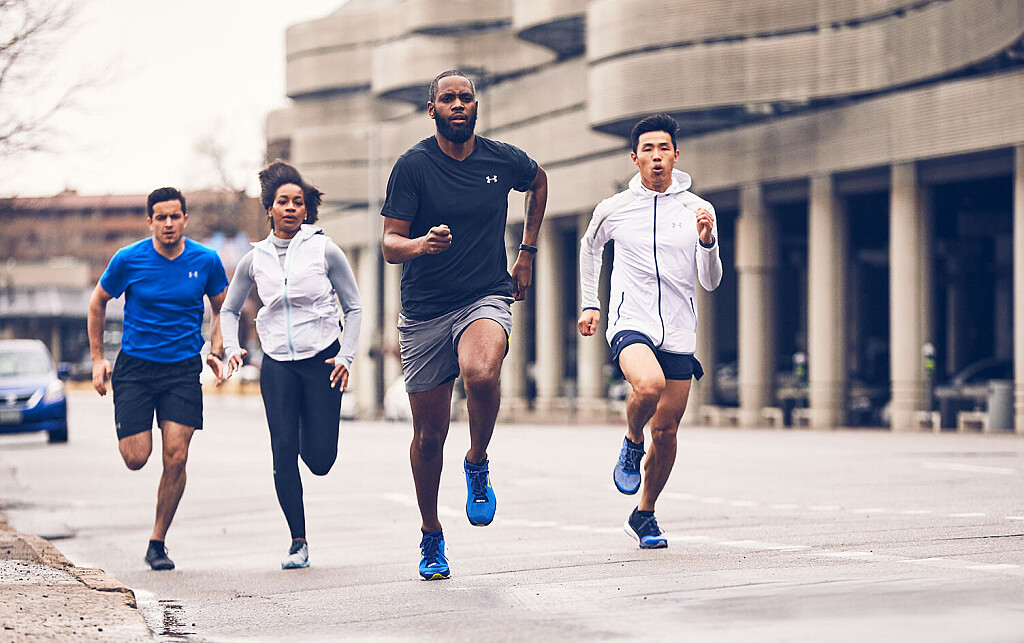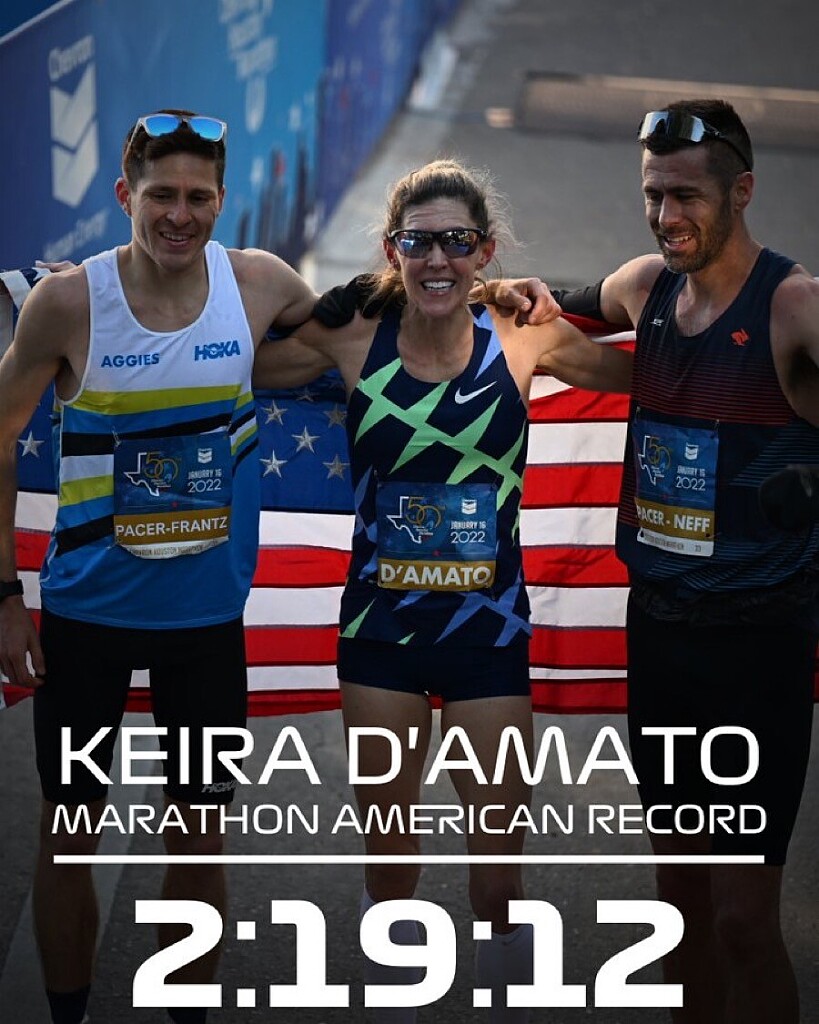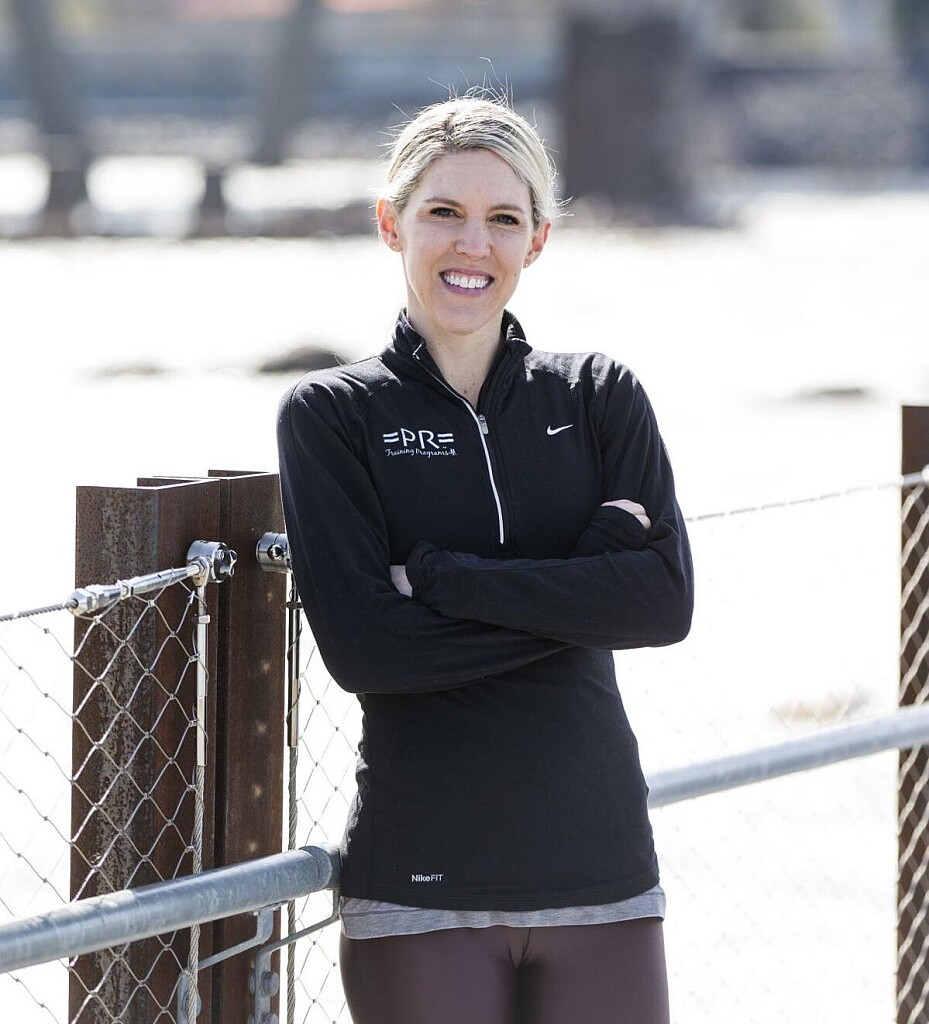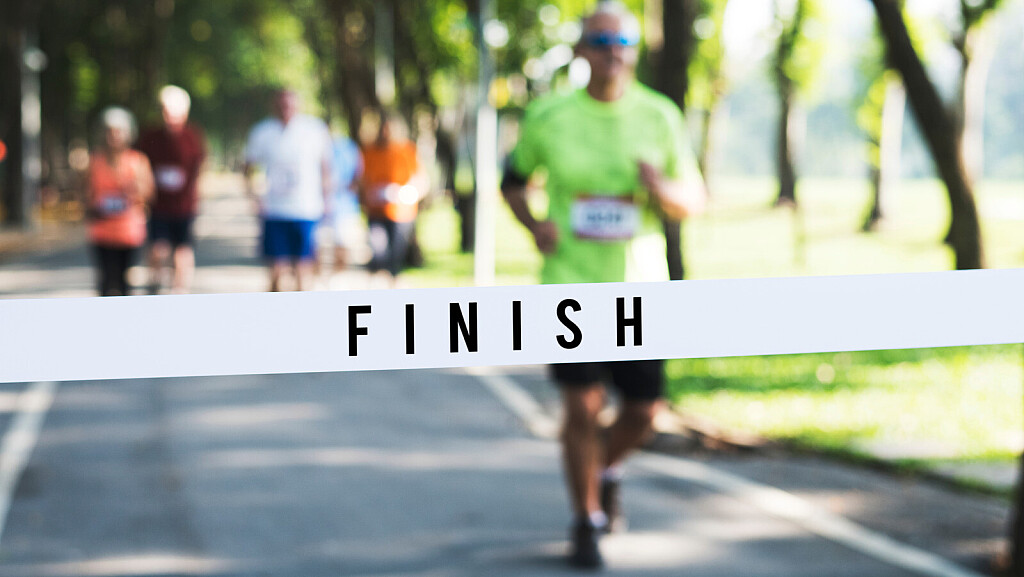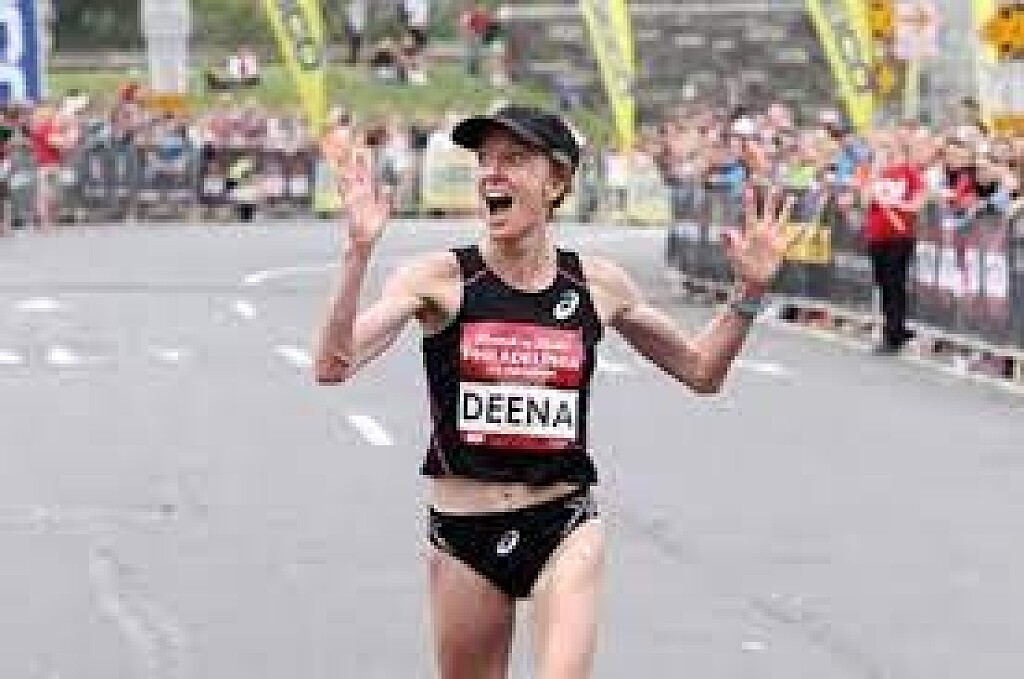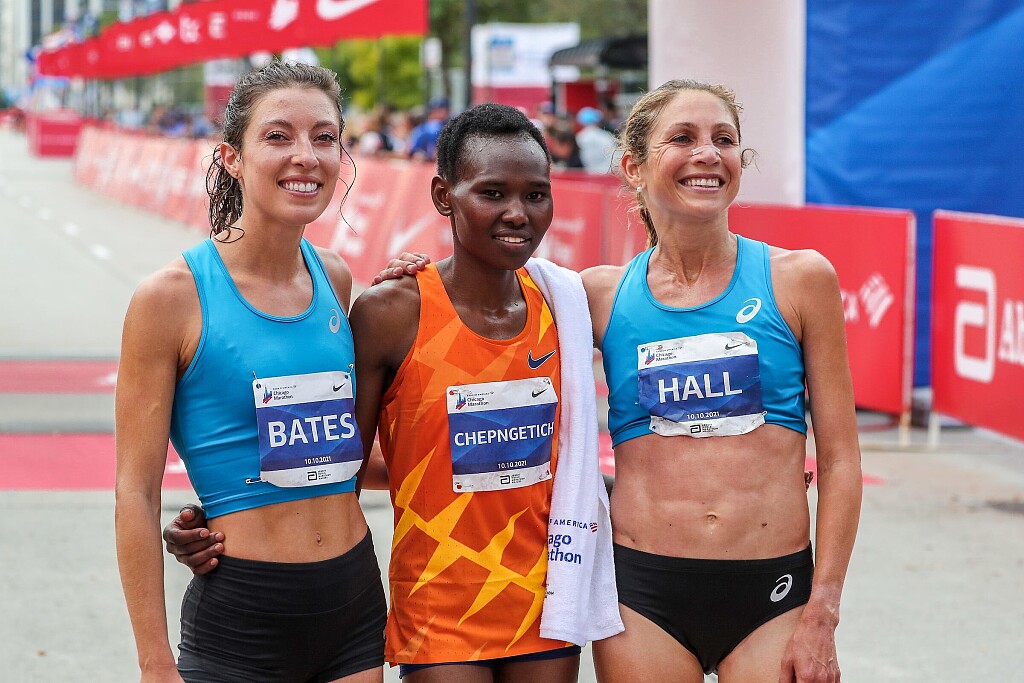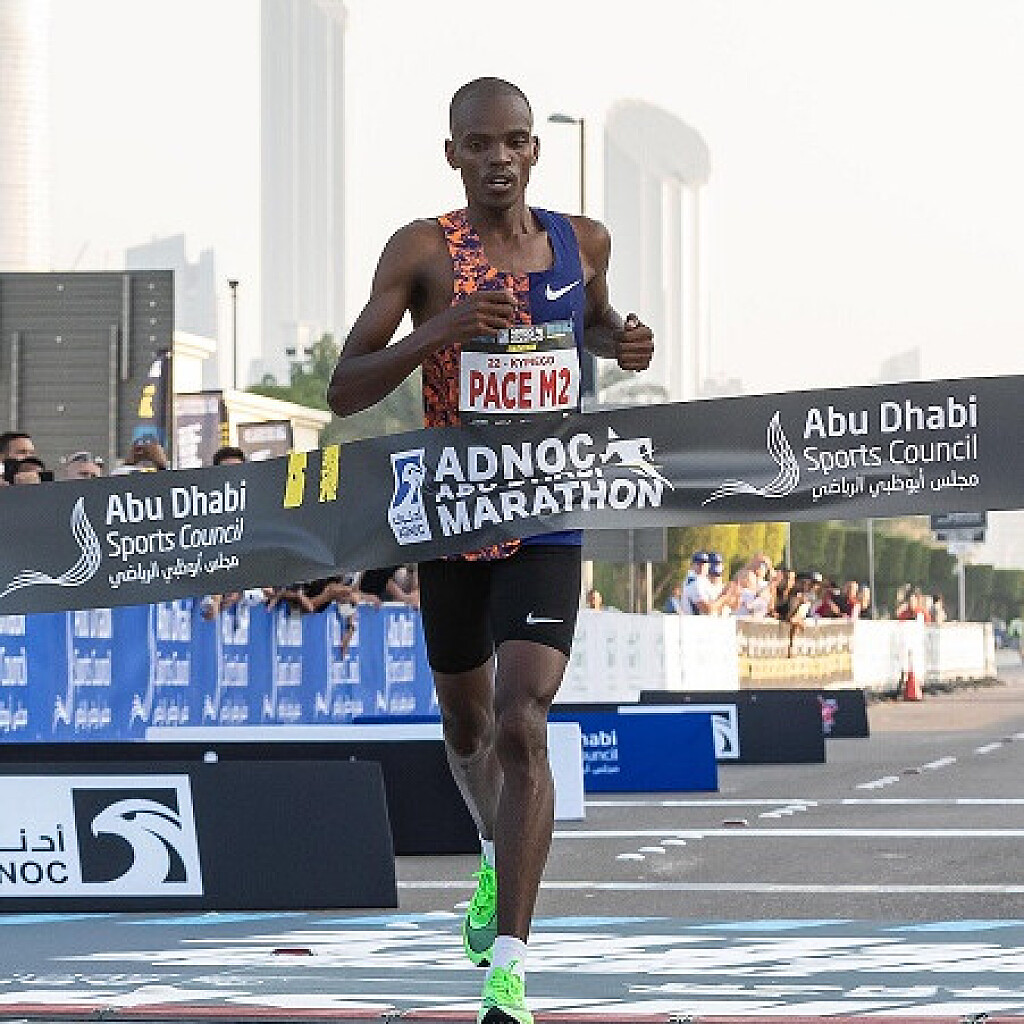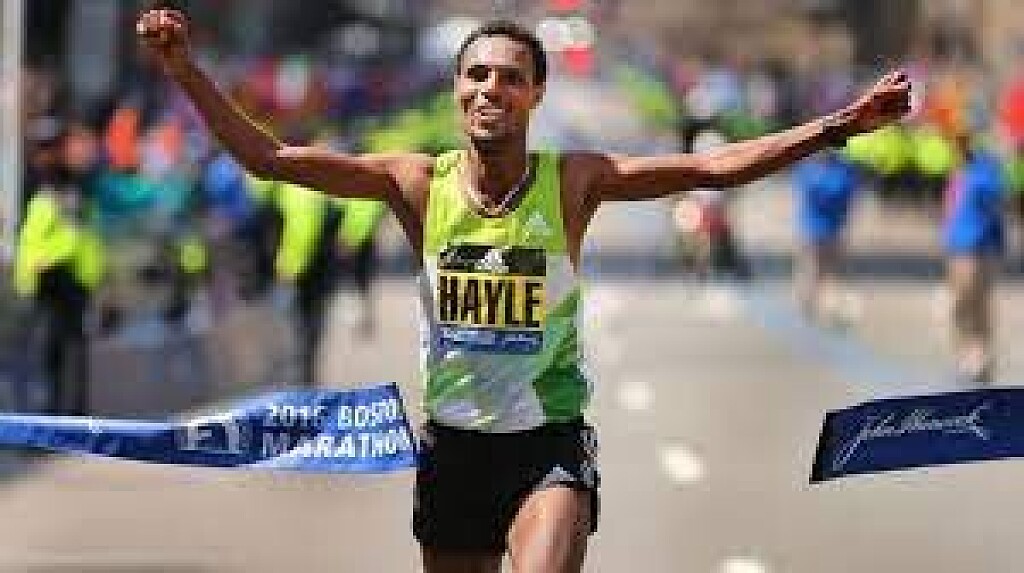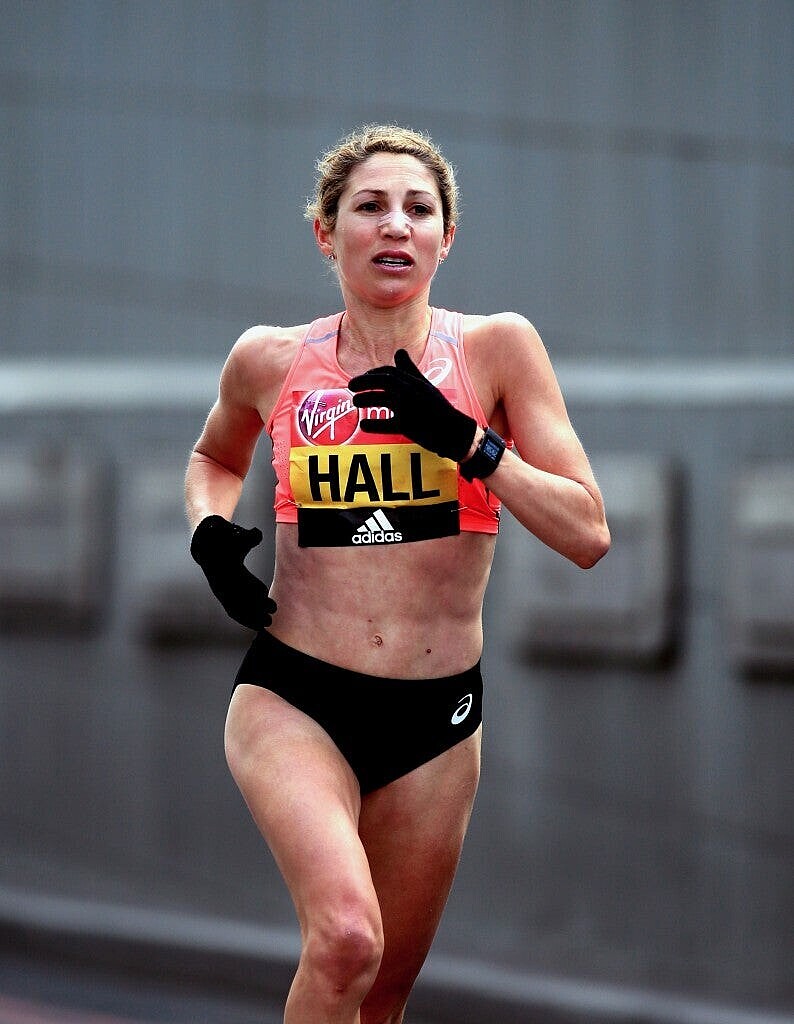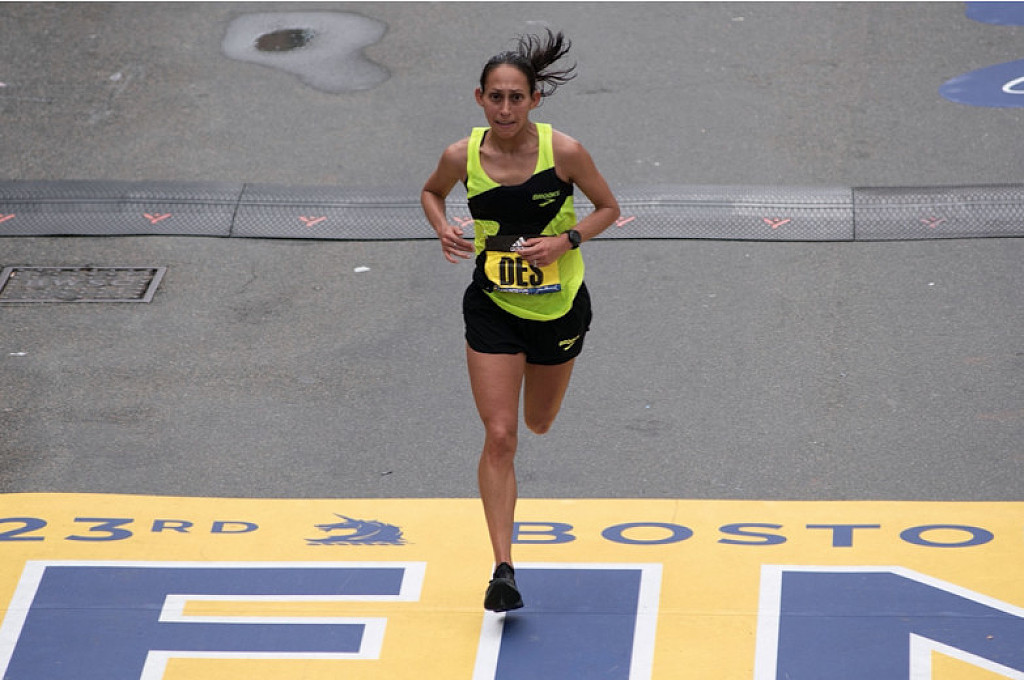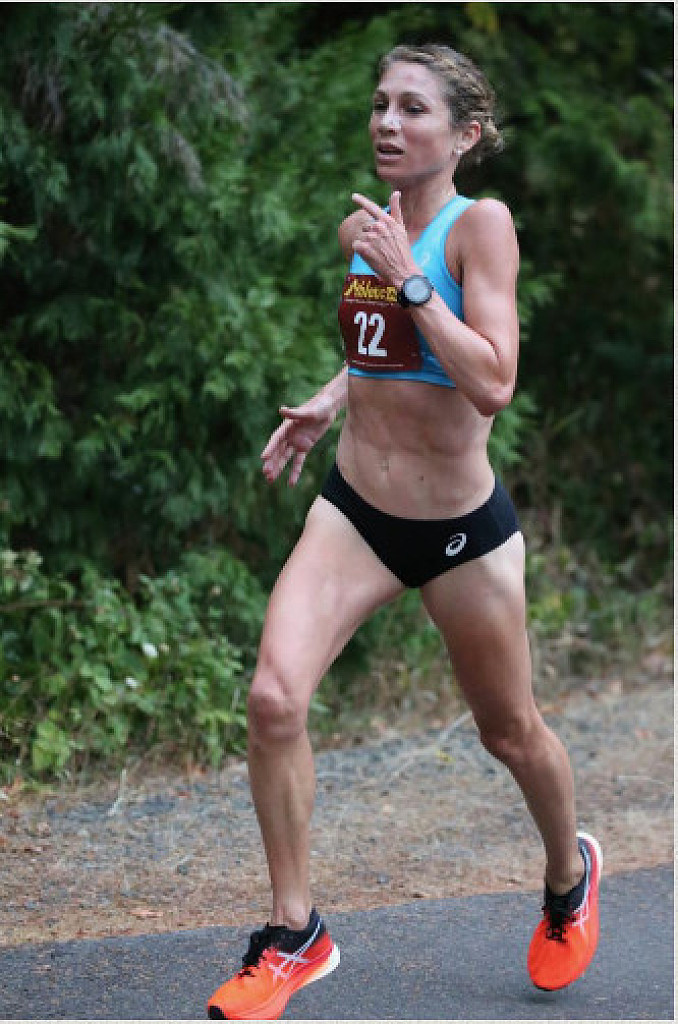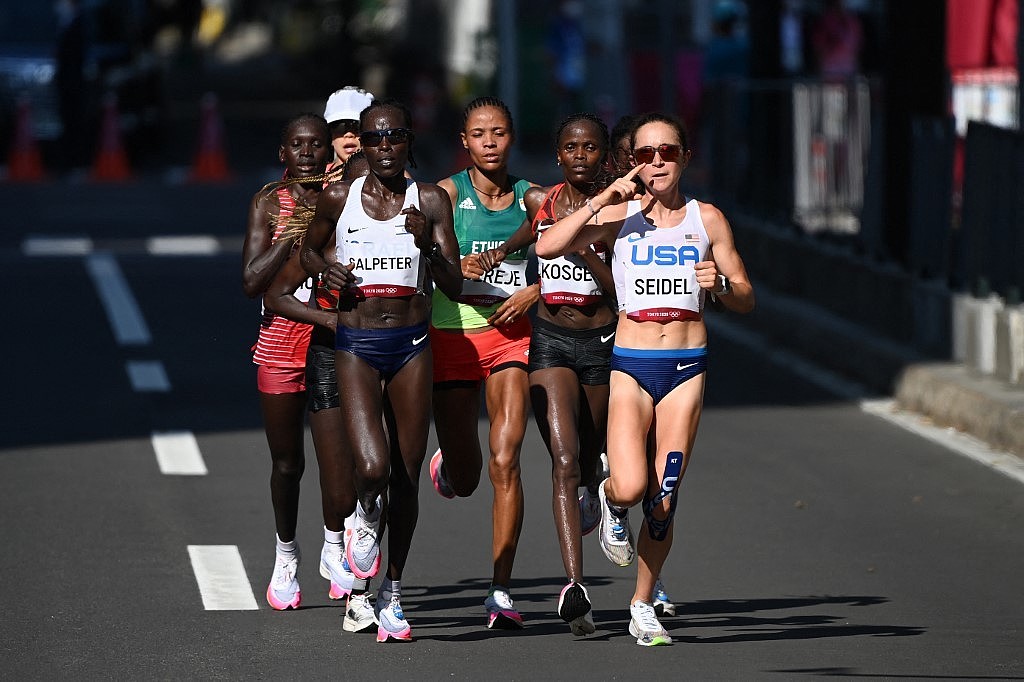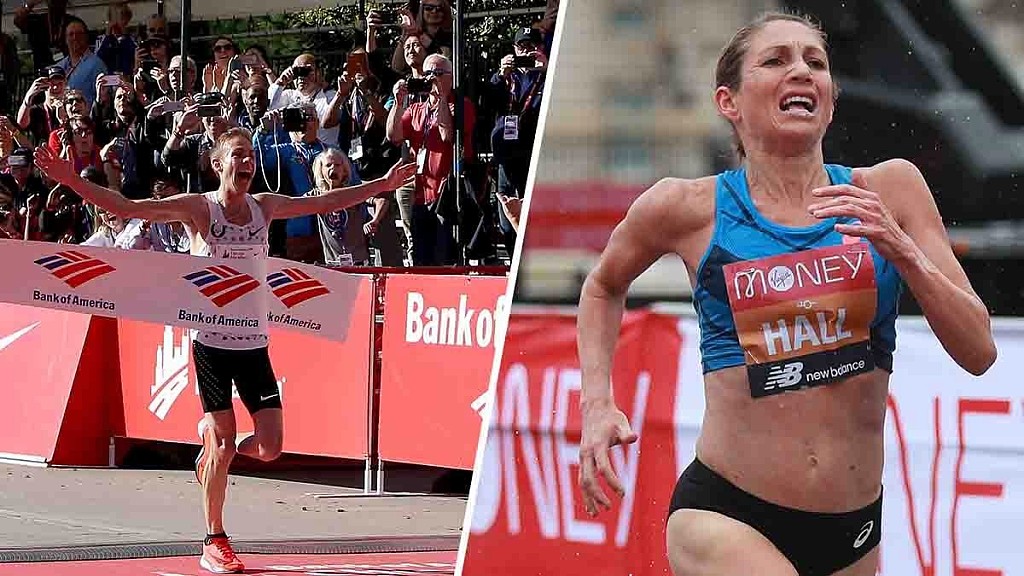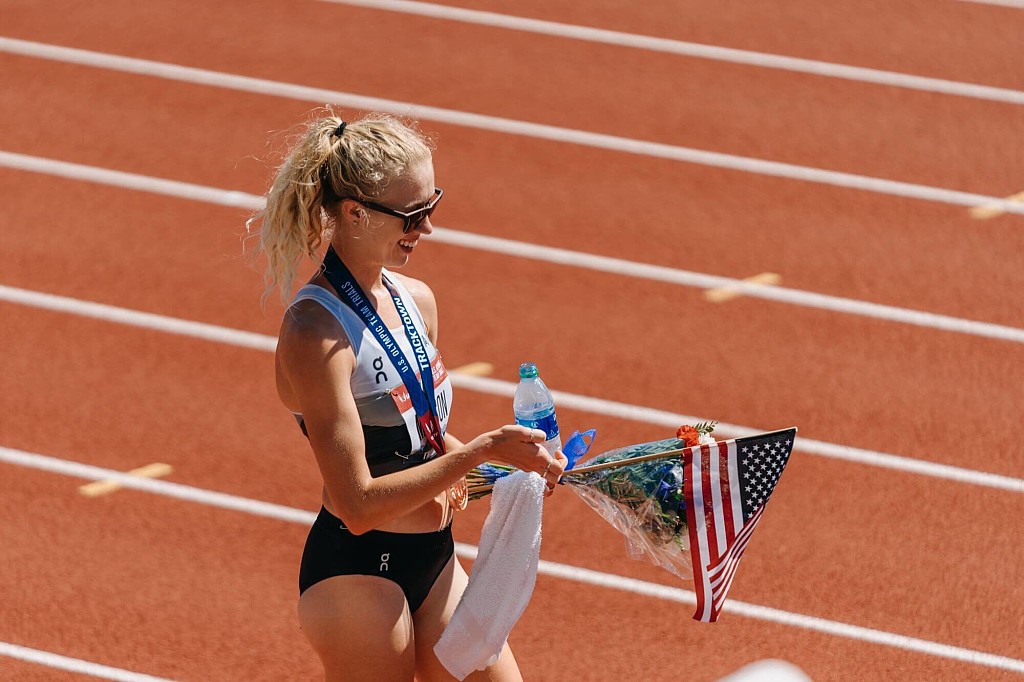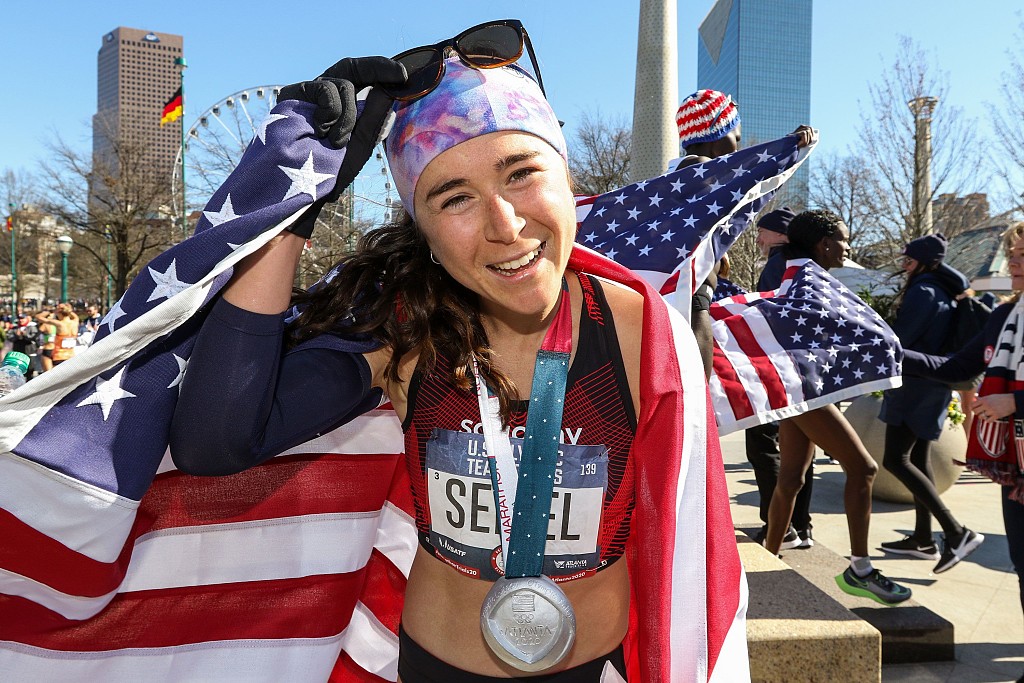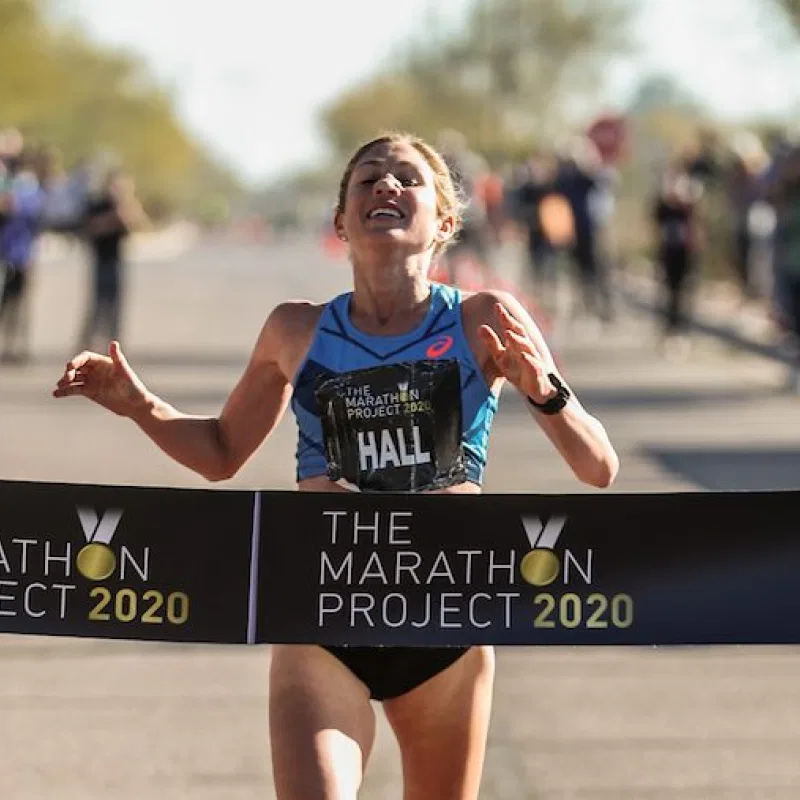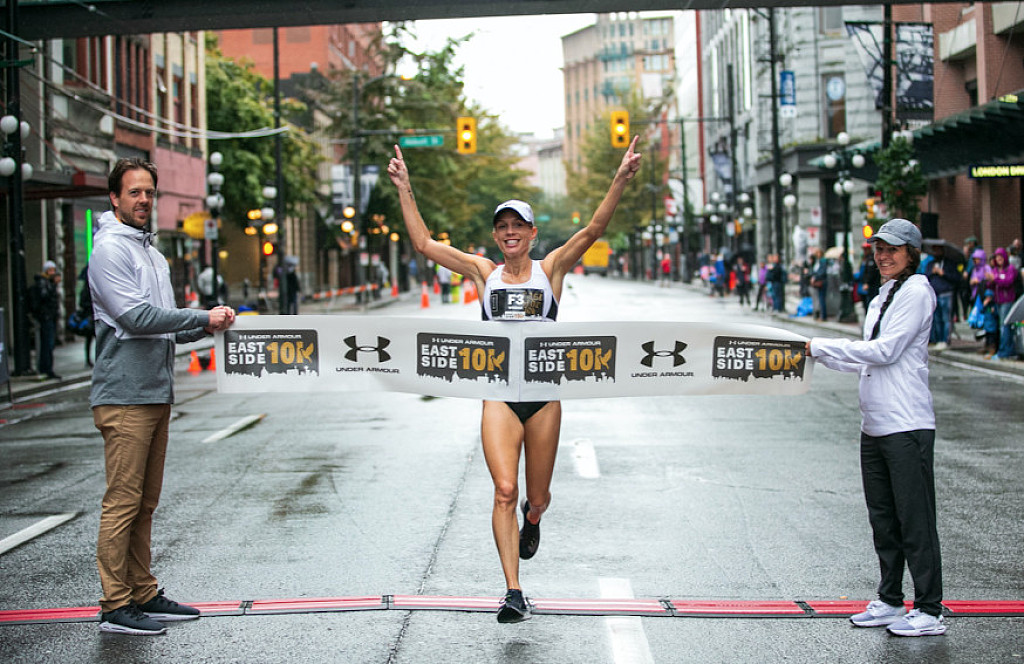Running News Daily
Running News Daily is edited by Bob Anderson. Send your news items to bob@mybestruns.com Advertising opportunities available. Train the Kenyan Way at KATA Kenya and Portugal owned and operated by Bob Anderson. Be sure to catch our movie A Long Run the movie KATA Running Camps and KATA Potato Farms - 31 now open in Kenya! https://kata.ke/
Index to Daily Posts · Sign Up For Updates · Run The World Feed
Articles tagged #Deena Kastor
Today's Running News
Spokane’s Iconic Lilac Bloomsday Run Set for Another Memorable Edition This Weekend
The Lilac Bloomsday Run, one of America’s most cherished road races, is ready to welcome thousands of runners, walkers, and wheelchair athletes to the streets of Spokane, Washington this weekend. Known for its festive atmosphere, scenic course, and rich history, Bloomsday remains a signature event in the running world nearly five decades after its humble beginnings.
The idea for Bloomsday was born during the running boom of the late 1970s. Don Kardong, a local runner who had moved to Spokane in 1974, helped spark the movement. Kardong, fresh off his impressive fourth-place finish in the marathon at the 1976 Montreal Olympics, had been competing in national-class road races and saw the potential for Spokane to host its own major event. In the fall of 1976, he casually mentioned the idea of a downtown run to a local reporter. That simple suggestion quickly captured the city’s imagination and made headlines, laying the foundation for what would become a legendary race.

The first Lilac Bloomsday Run was held in May 1977, drawing about 1,200 participants—a remarkable turnout for an inaugural event. Since then, Bloomsday has grown into one of the largest timed road races in the world, attracting more than 40,000 entrants in its peak years. The race has also hosted elite athletes from around the globe, many of whom appreciate Bloomsday’s challenging course and the enthusiastic support from the local community.
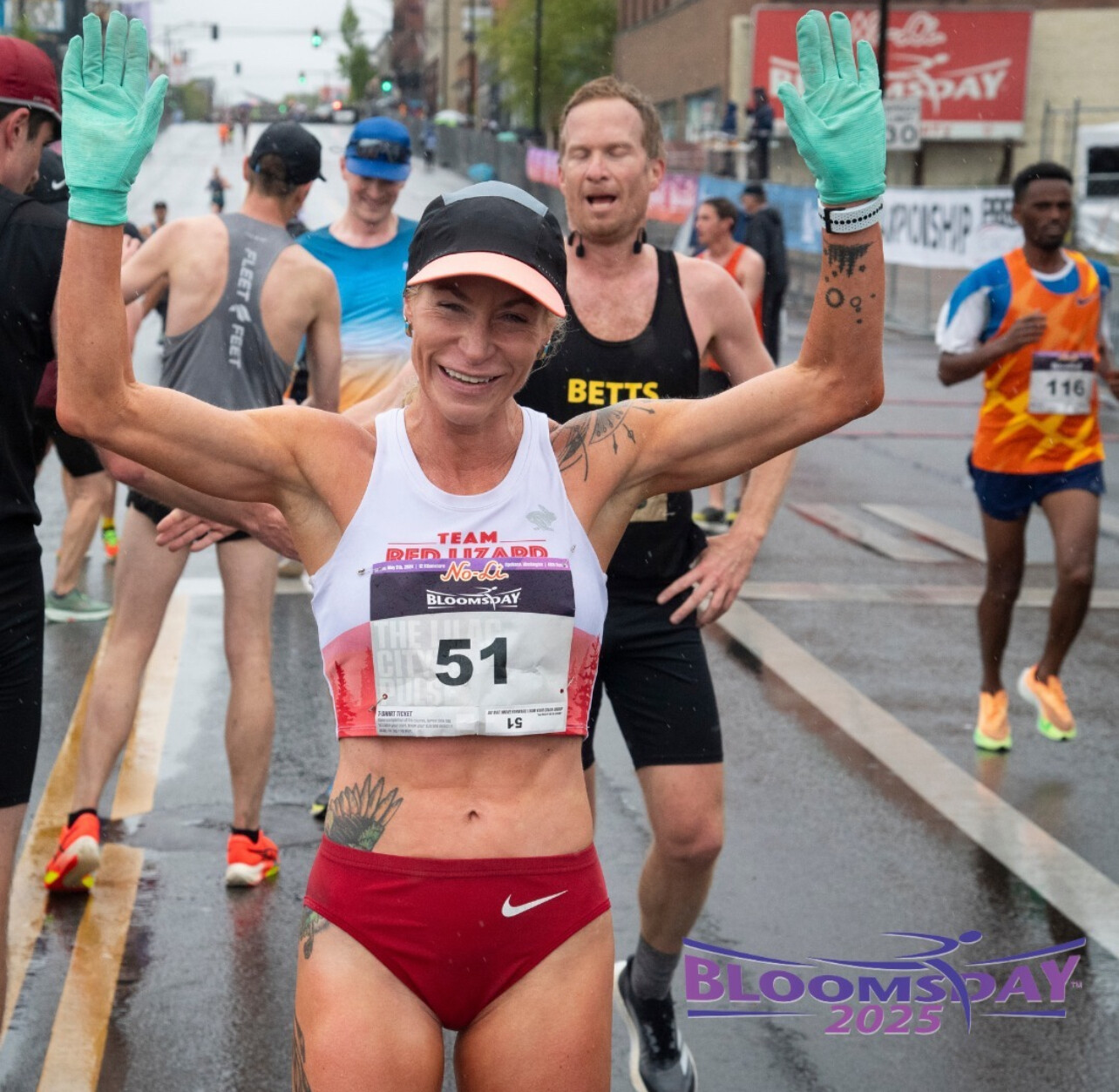
The 12-kilometer (7.46-mile) course weaves through the heart of Spokane, featuring a mix of downtown streets, park trails, and residential neighborhoods. One of the course’s most famous features is “Doomsday Hill,” a grueling climb near mile five that tests the endurance and spirit of every participant. At the top of the hill, runners are cheered on by the race’s beloved mascot, the “Bloomsday Vulture,” a humorous reminder that making it to the summit is a victory in itself.
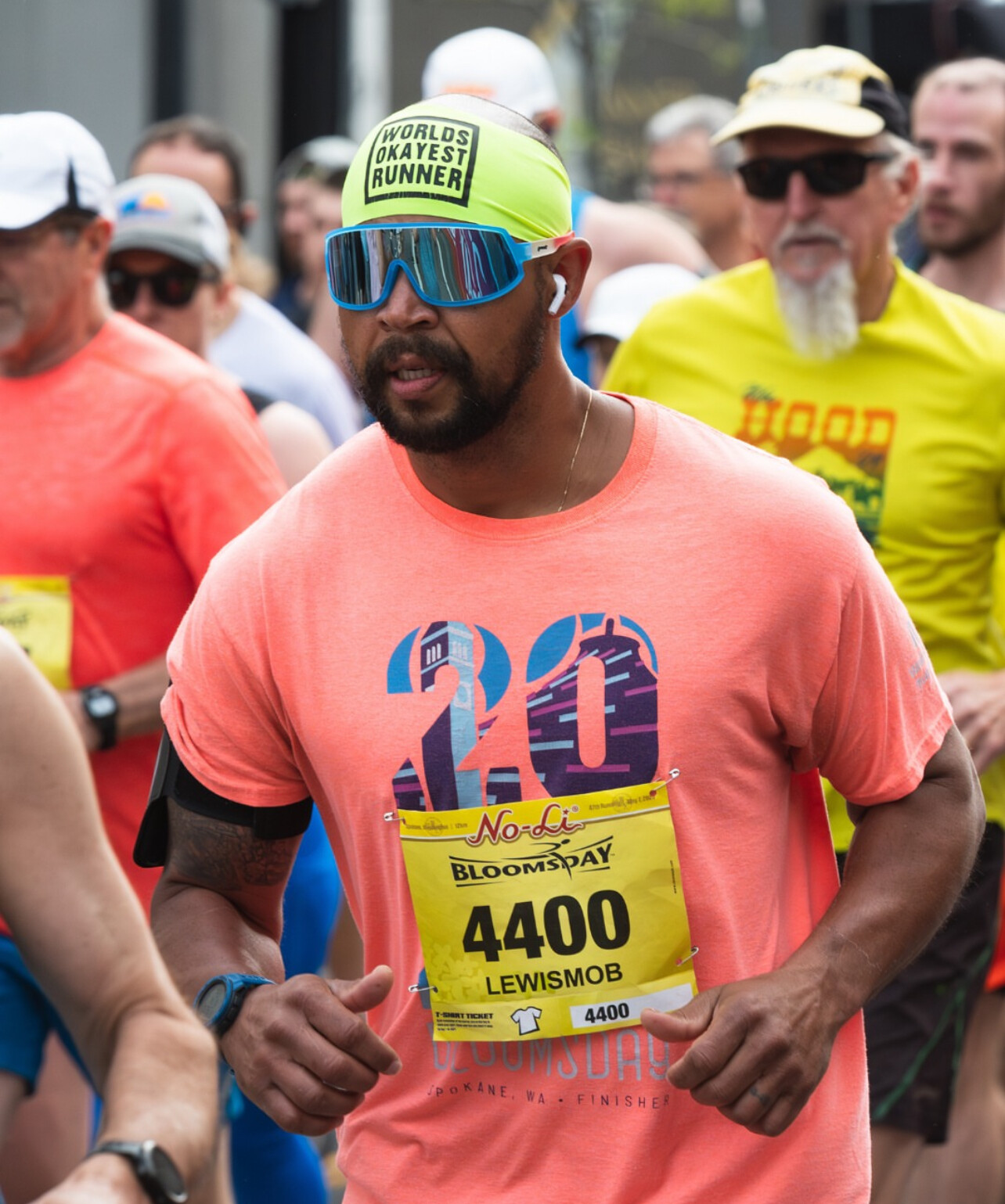
Course Records and Notable Performances
The Bloomsday course has seen some truly world-class performances over the years. The men’s course record was set by Micah Kogo of Kenya, who blazed through the 12K in 33:51 in 2008. On the women’s side, Tegla Loroupe, also from Kenya, holds the women’s course record with her time of 38:29, set back in 1995.
Over the years, Bloomsday has crowned many notable champions. Bloomsday legend Jon Sinclairwon the race three times during the 1980s, helping to establish its national prominence. Tegla Loroupe, a multiple-time winner, used Bloomsday as a springboard to international stardom, later setting a marathon world record. More recently, Leonard Korir and Emily Chebet have continued the strong tradition of elite competition, pushing the pace and maintaining Bloomsday’s reputation for excellence.
Bloomsday also played a role in the careers of American stars like Meb Keflezighi and Deena Kastor, both of whom have competed in Spokane on their way to Olympic and World Championship success.
More Than a Race
Bloomsday is more than just a race—it’s a celebration of fitness, community, and perseverance. The event embraces runners and walkers of all abilities, offering divisions for competitive racers, recreational participants, and wheelchair athletes. It also maintains a commitment to innovation and fun, with live music, costumes, and spirited crowd support lining the route.
As Spokane prepares to host the 2025 edition of Bloomsday this weekend, excitement is building once again. Whether chasing a personal best, tackling Doomsday Hill for the first time, or simply enjoying the festive atmosphere, participants can look forward to an unforgettable experience that embodies the spirit of community and the enduring joy of running.
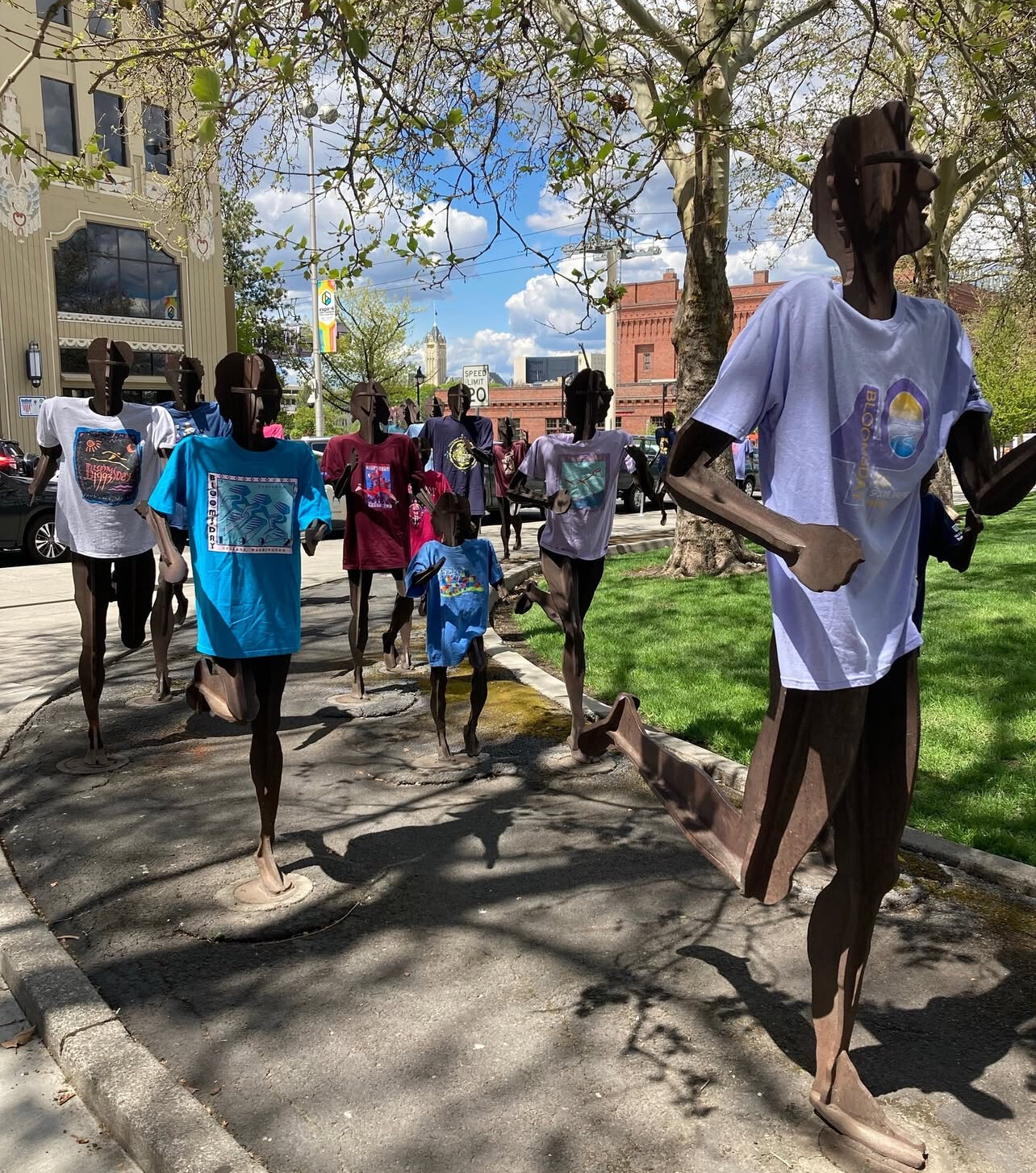
by Boris Baron
Login to leave a comment
Lilac Bloomsday 12K
The Lilac Bloomsday Run was born during the running boom that swept the nation in the late 1970s. Local runner Don Kardong, who moved to Spokane in 1974, competed in several national class road races before and after his participation in the 1976 Olympic Marathon, and in the fall of 1976 he suggested to a local reporter that Spokane should...
more...Gate River Run 2025 Returns to PRRO Circuit with Elite Competition and a Scenic Challenge
The Gate River Run is back for its 48th edition on Saturday, March 1, 2025, in Jacksonville, Florida, bringing together elite athletes, competitive runners, and thousands of participants for one of the most exciting road races in the country.
This year marks a historic moment as the race rejoins the Professional Road Running Organization (PRRO) Circuit for the first time since 1993, elevating its status on the international stage. With a challenging 15K course, a prize purse of $62,000, and the famous climb over the Hart Bridge, the Gate River Run is set to deliver another thrilling race in one of Florida’s most vibrant cities.
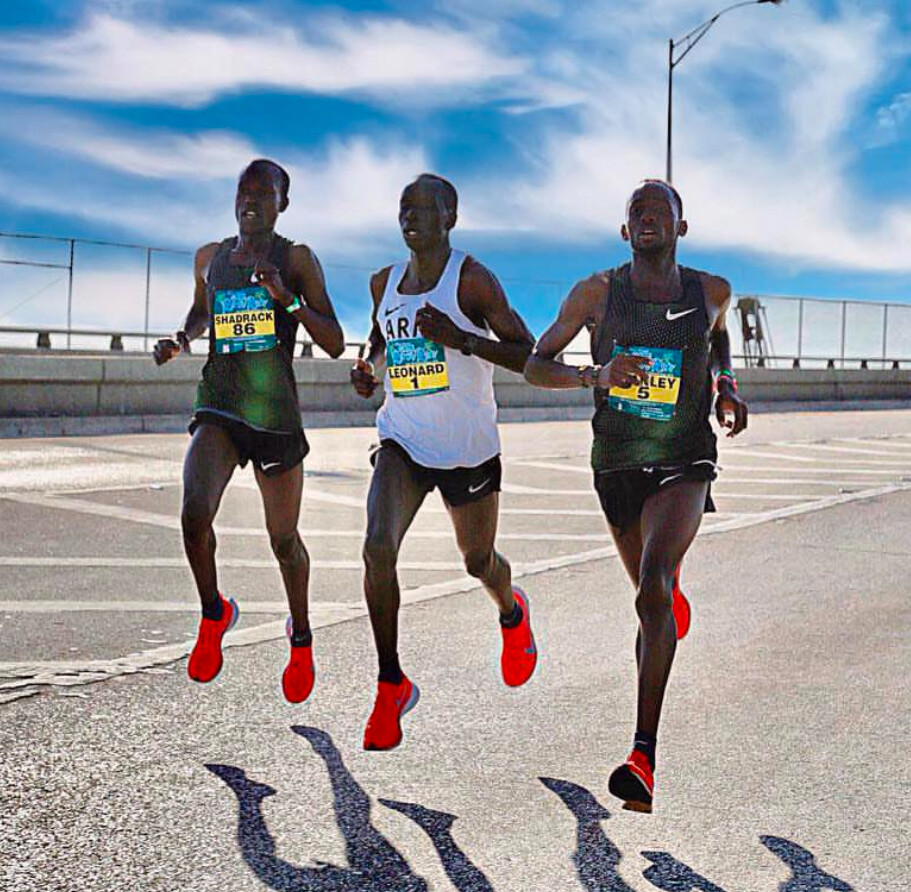
The event will once again serve as the USA 15K Championship, a title it has held since 1994, ensuring a strong field of American contenders alongside international competition. More than 18,000 runners are expected to take part, making this the largest 15K race in the country.
Elite field and prize structure
The 2025 Gate River Run is expected to feature a deep and competitive field, with elite athletes competing for national titles and significant prize money. As part of the PRRO Circuit, the race will draw top talent from both the U.S. and abroad.
The total prize purse for 2025 is $62,000, distributed as follows:
Open division: $20,500 each for men and women, awarded to the top ten finishers
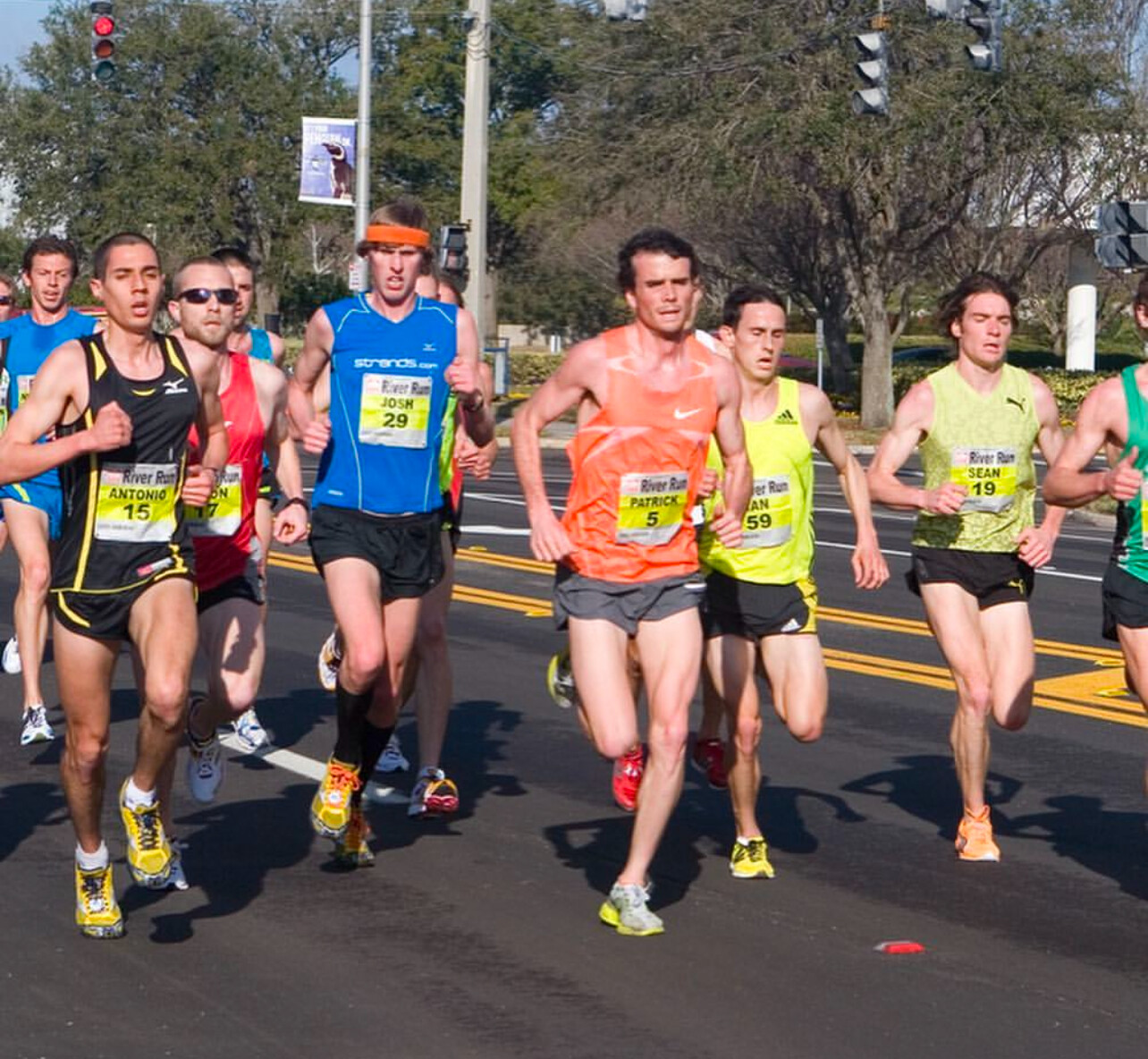
American Cup: $8,000 each for the top five U.S. male and female athletes
Equalizer bonus: $5,000 to the first athlete, male or female, to cross the finish line
Additional bonuses are available for record-breaking performances:
World record: $10,000
American record: $5,000
Course record: $3,000
The current course records belong to Todd Williams, who ran 42:22 in 1995, and Shalane Flanagan, who set the women’s mark of 47:00 in 2014.
Course details
The 15K (9.3-mile) course showcases some of Jacksonville’s most scenic and historic neighborhoods, including Downtown, San Marco, and St. Nicholas, with sweeping views of the St. Johns River. The early miles feature fast and flat stretches, allowing runners to settle into their rhythm before tackling the city’s signature challenge—the Hart Bridge.
Known as the “Green Monster,” the Hart Bridge presents a daunting climb in the final two miles, rising 141 feet above the river. The demanding half-mile ascent has tested even the strongest runners, making it one of the most memorable features of the race. After cresting the bridge, runners experience a thrilling downhill stretch toward the finish line at Metropolitan Park.
Event schedule
Elite women start at 7:55 am
Elite men and wave one start at 8:00 am
Subsequent waves begin shortly after, accommodating runners of varying paces
Jacksonville’s running heritage
Jacksonville has long been a city that embraces running. Home to one of the largest urban park systems in the U.S., its scenic riverfront, historic districts, and expansive green spaces have made it a favorite for runners of all levels. The Gate River Run, founded in 1978 by JTC Running, has played a major role in shaping the city’s running culture.
Over the years, the race has hosted some of the biggest names in distance running, including Olympic medalists Deena Kastor, Shalane Flanagan, and Meb Keflezighi. With its return to the PRRO Circuit, the event reaffirms its place as one of the premier road races in the country.
by Boris Baron
Login to leave a comment
Gate River Run
The Gate River Run (GRR) was first held in 1978, formerly known as the Jacksonville River Run, is an annual 15-kilometer road running event in Jacksonville, Fla., that attracts both competitive and recreational runners -- in huge numbers! One of the great running events in America, it has been the US National 15K Championship since 1994, and in 2007...
more...Sara Hall Smashes Her Own American Masters Record
In her fourth marathon of 2024, Sara Hall finished 10th at the Valencia Marathon in Spain in 2:23:45. Hall, 41, shattered her own U.S. masters record, 2:26:06, which she set at the Olympic Marathon Trials in February.
The race was won by Megertu Alemu of Ethiopia in 2:16:49.
Hall averaged 5:29 per mile pace in Valencia. It was her best marathon since 2022, when she ran 2:22:10 at the World Championships in Eugene, Oregon, and placed fifth.
Hall has been frequent racer throughout her career, not needing much time to recover between races. Her entry into Valencia was a last-minute addition, after she raced in Chicago eight weeks earlier, and the race did not go according to plan. (Hall was 18th in 2:30:12.) She also ran Boston this year, finishing 15th in 2:27:58.
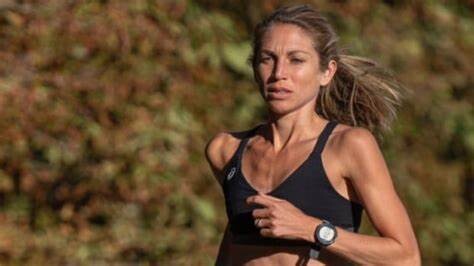
She posted to her Instagram account after the race.
“After a long stretch of not feeling like myself since Boston, it felt so good to have my normal fight out there,” Hall wrote, in part. “Applied the lessons I learned from Chicago, handled the very similar conditions much better. Chose to believe in myself even when my confidence had been rattled over and over. What a dream to do this four times this year.”
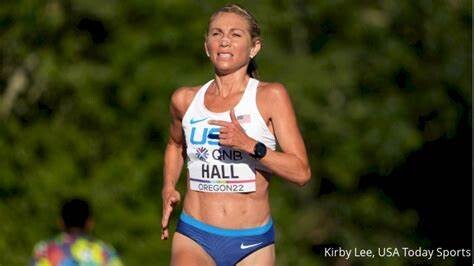
Hall elaborated in a text message to Runner’s World that she missed several bottles in Chicago—she fumbled a couple, and others she didn’t drink much out of—and became dehydrated in the humid conditions. “This time just was much more intentional to consume fluids even if I didn’t feel like I needed it,” she said.
She also increased her electrolytes and said she went out more conservatively than she would normally run and did at Chicago. Hall ran half spits that were almost even—1:11:40 and 1:12:05.
Hall’s PR is 2:20:32 from the Marathon Project in Chandler, Arizona, a one-time event set up for elite runners during the pandemic. That PR puts her fifth on the U.S. all-time list, behind Emily Sisson, Keira D’Amato, Betsy Saina, and Deena Kastor.
Her career is notable for its duration. Hall has appeared in every Olympic Trials since 2004, either on the track or in the marathon, or both. She is coached by her husband, Ryan Hall, who is third on the U.S. all-time list for men’s marathoners.
Hall was not the only record setter in Valencia. Roberta Groner, 46, who represented the U.S. at the 2019 world championships in Doha, Qatar, where she finished sixth, ran 2:29:32, setting an American record for the 45–49 age group.
Groner’s record should be safe for at least the next three years—or until Hall turns 45 in April 2028.
by Sarah Lorge Butler
Login to leave a comment
VALENCIA TRINIDAD ALFONSO
The Trinidad Alfonso EDP Valencia Marathon is held annually in the historic city of Valencia which, with its entirely flat circuit and perfect November temperature, averaging between 12-17 degrees, represents the ideal setting for hosting such a long-distance sporting challenge. This, coupled with the most incomparable of settings, makes the Valencia Marathon, Valencia, one of the most important events in...
more...Six American runners to watch in the 2024 Chicago Marathon
Excitement is building for this year’s Chicago Marathon that takes place on Sunday 13 October. Once again, a stellar field has been assembled including some of the best American runners operating today. Read on to find out which US athletes will compete in the 2024 Chicago Marathon.
It’s been seven years since the last American was victorious in the Chicago Marathon, with Galen Rupp crowned winner of the men’s race in 2017. In the women’s race, you need to go back almost 20 years to find the last US winner, when Deena Kastor became the first female American to claim victory on the streets of Chicago in almost a decade.
But with this year’s Chicago Marathon just days away, a strong group of elite American runners will take on the challenge of the 42.195km race, bringing with them experience, pedigree and the hopes of a nation as they battle for glory on home soil.
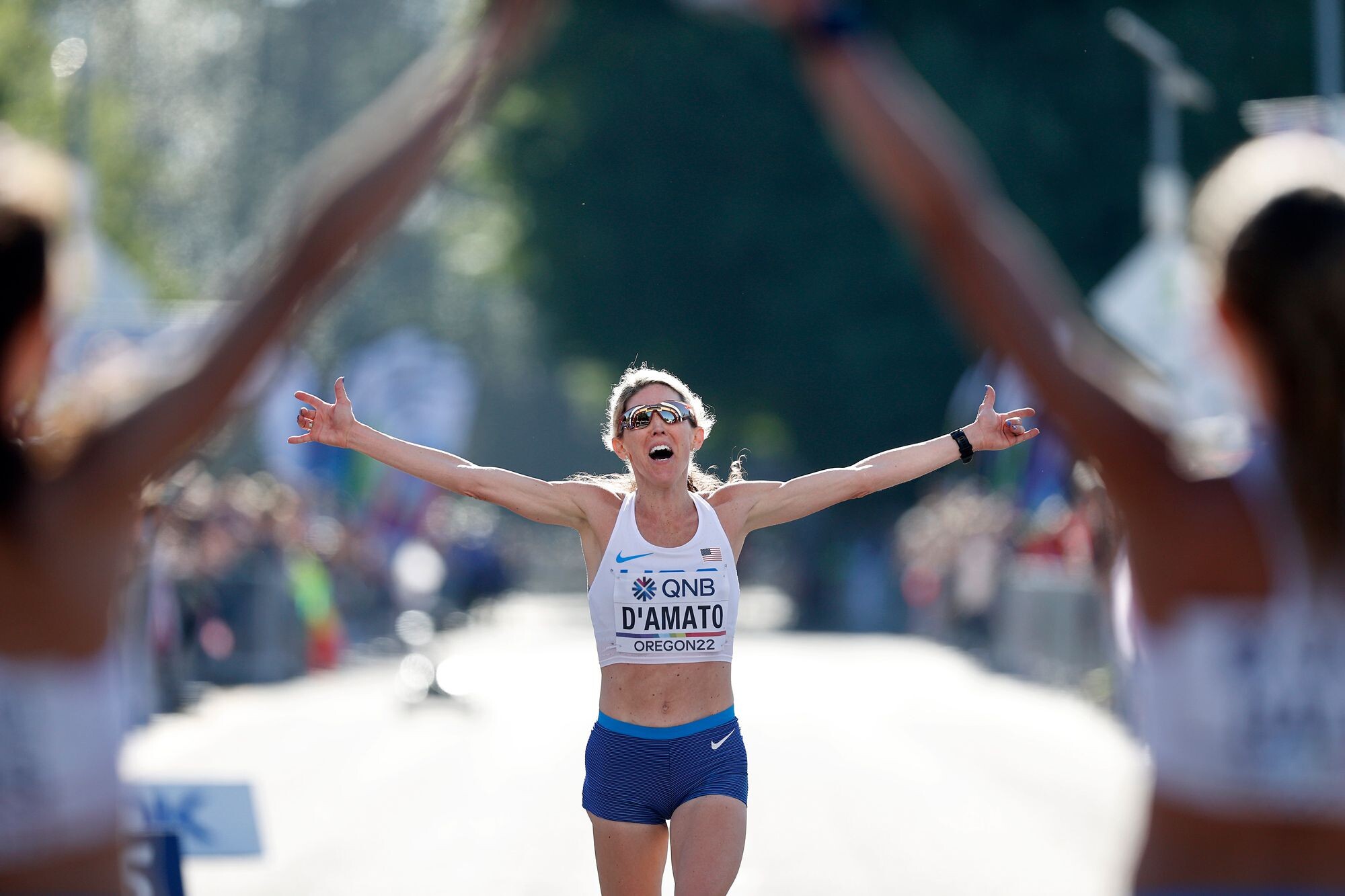
Read on to discover the top American athletes competing in the 2024 Chicago Marathon.
Top Americans in the 2024 Chicago Marathon women’s race
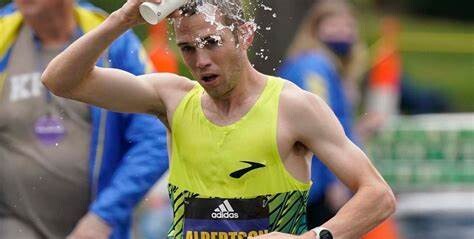
Keira D’Amato
Keira D'Amato, the former fastest female American runner of all time, has an exceptional track record in long-distance events. The 39-year-old still holds the fastest US women’s time in the half marathon at 1:06:39, set in the Gold Coast, Australia in 2023, while her best in the 42.195km race is an impressive 2:19:12, which she achieved in Houston in 2022.
This year, D’Amato will have speedy support by her side, as she revealed her pacer for the Chicago Marathon will be none other than Rio 2016 Olympic 1500m gold medallist Matthew Centrowitz. Can the addition to her race-day crew catapult D’Amato to glory in the Windy City? All will be revealed on Sunday.
Born in Kenya, Betsy Saina has since received her US citizenship and will be one of the favourites to hold the title of fastest American in this year’s Chicago Marathon women’s race. Saina became a mother in 2021 but has gone from strength to strength since then, becoming the fastest female American marathoner in 2023. While her dreams of making the Olympic team for Paris 2024 were not realised, she comes into this year’s Chicago Marathon showpiece with one of the fastest times among all US runners with a personal best of 2:19:17 set at the 2024 Tokyo Marathon.
A fan favourite and former American marathon record holder, Sara Hall has vast experience in elite marathon running, which includes a third-place finish in the 2021 Chicago Marathon.
Perhaps her most memorable performance was in the 2021 London Marathon where she produced a stunning all-out sprint finish to claim second-place in Britain’s capital.
At 41 years old, Hall will be among the older members of the elite field but she is showing few signs of slowing down. She finished fifth in the 2024 Olympic marathon trials and in April this year ended the Boston Marathon as the second-fastest American finisher in a time of 2:27:58.
Top Americans in the 2024 Chicago Marathon men’s race
Zach Panning
During the US marathon trials for the last Olympics, Zach Panning sent the crowd into a frenzy with a courageous run where he led from the front for almost three-quarters of the race. Panning eventually fell off the pace to finish the trials in sixth place, with only the top three nominated for the team.
However, the fearlessness of the 29-year-old, who holds a personal best of 2:09:28, makes him one of the most exciting runners in the field.
Following his 10th-place finish in the 2024 London Marathon, Brian Shrader is back on home soil hoping to impress on the streets of Chicago, where he finished 11th last year in a personal best time of 2:09:46.
While a DNF in the Olympic trials shattered Shrader’s dreams of going to Paris 2024 he enters this race with real aspirations of finishing as the top American and perhaps challenging the front-runners in the elite men’s race.
Perhaps best known for his exploits over distances that trickle into the category of ultrarunning, CJ Albertson’s pace over the legendary 42.195km distance makes him one of the top three American men in the Chicago Marathon field.
The former world record holder over 50km enters Sunday’s race with a best marathon time of 2:09:53 set at the 2024 Boston Marathon, where he finished seventh.
Albertson finished fifth in the 2024 Olympic trials but his recent form shows just why he is one of the most talked-about US athletes operating in the marathon today.
by Athletics
Login to leave a comment
Bank of America Chicago
Running the Bank of America Chicago Marathon is the pinnacle of achievement for elite athletes and everyday runners alike. On race day, runners from all 50 states and more than 100 countries will set out to accomplish a personal dream by reaching the finish line in Grant Park. The Bank of America Chicago Marathon is known for its flat and...
more...Simpson, Frisbie, Rodriguez, Estrada Commit to Run Crazy 8s 8K Hoping for USATF National Championshisp
With the announcement that the Ballad Health Niswonger Children’s Network Crazy 8s 8K Run will host both the USATF Men’s & Women’s 8K Road Championship Presented by Gatorade on July 20th, competition is heating up for both championships.
Olympic bronze medalist Jenny Simpson and Annie Frisbie will be two of the headliners in the women’s field with Isai Rodriguez and Diego Estrada the early favorites on the men’s side.“We’re off to a good start,” said co-director Hank Brown.
“We are receiving tremendous interest from some of the best runners from around the country. We’re expecting 40-50 elite runners in the USATF championship which will be very exciting.”
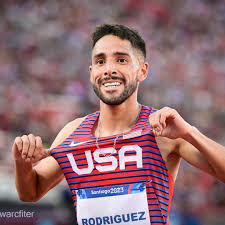
Simpson is arguably one of the more recognizable women’s middle/long distance runners in the United States. She won the bronze medal in the 1500 meters at the 2016 Rio Olympics, the gold medal at the 2011 World Championships, and followed with silver medals at the 2013 and 2017 World Championships Simpson is a former American record holder for the 3000 meter steeplechase and has represented the United States at three Olympics – 2008 Beijing, 2012 London, and 2016 Rio.
Frisbie is on a personal tear recently, running personal bests in 2024 for the 10K (31:49), 15K (49:28), 25K (1:22:37), and half marathon (1:07:34, 1st place). She is running her best and is in excellent shape.In 2023, the men’s race came down to a sprint finish in J. Fred Johnson Stadium with Clayton Young outlasting Andrew Colley and Isai Rodriguez. Young will be going to Paris to run the marathon and Colley is nursing a sore foot, so Rodriguez will be the top returning finisher (Colley is still tentative).
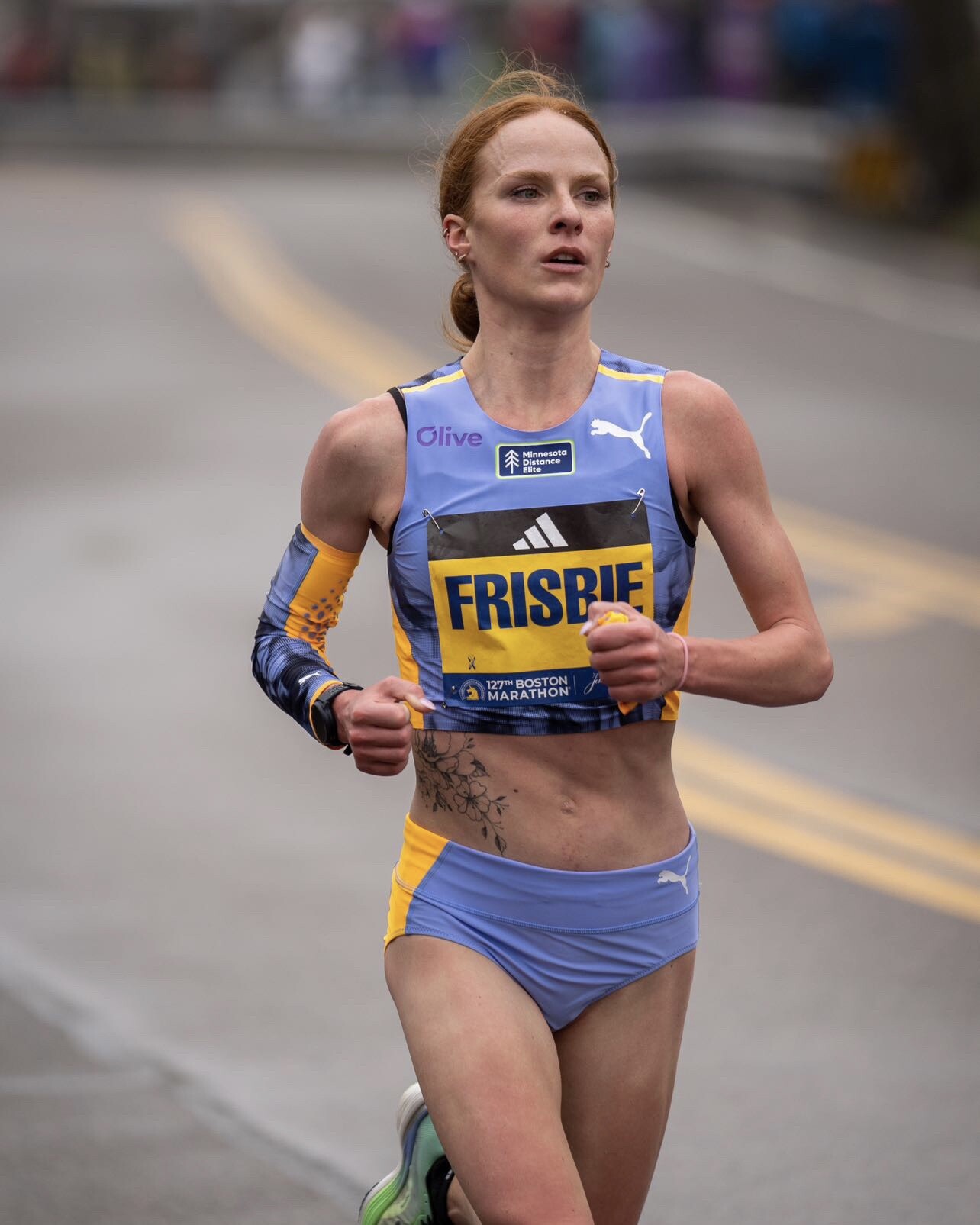
Rodriguez has a 10,000 meter personal-best under 28 minutes and was the Pan Am Games 10k champion in 2023.Estrada is a veteran runner making a successful comeback in 2024. He represented his native Mexico in the 10,000 meters in the 2012 London Olympics, but became a US citizen in 2014 at which time became eligible to represent the USA in international competition.
He has an impressive 10k time of 27:30 set in 2015, and 5K of 13:31 at the Carlsbad 5K in 2014. He is now 34 and quite possibly running his best times in 2024.
He placed fifth at the Aramco Houston Half Marathon in January, running a very fast 1:00:49, which is a personal best at that distance and tnen followed that a thrid-. place finish at the USATF 15K Championship in Jacksonville. In May he set an American best of 1:13:09 at the USATF 25K Championship, winning the Amway 25K River Run in Grand Rapids, MI.
“We are thrilled to have these guys and gals at Crazy 8s,” said Brown. “When we decided to host the USATF 8K Championship this is exactly the caliber of runners we were hoping to attract to Kingsport.”
The Regional Eye Center is offering a $10,008 American Record bonus for men who can break Alberto Salazar’s record of 22:04 (1981) or women who can break Deena Kastor’s record of 24:36 (2005).
In addition to the bonus, the race is offering prize money to the top 10 in the USATF Men’s and Women’s Championships.Sponsors are Ballad Health Niswonger Children’s Network, Gatorade, The Regional Eye Center, Eastman Credit Union, Kingsport Pediatric Dentistry, Food City, Martin Dentistry, Mycroft Signs, Culligan, Associated Orthopaedics of Kingsport, and JA Street.
by TriCitiesSports.com
Login to leave a comment
Crazy 8s 8k Run
Run the World’s Fastest 8K on the world famous figure-8 course on beautiful candle-lit streets with a rousing finish inside J. Fred Johnson Stadium. Crazy 8s is home to womens’ 8-kilometer world record (Asmae Leghzaoui, 24:27.8, 2002), and held the men’s world record (Peter Githuka, 22:02.2, 1996), until it was broken in 2014. Crazy 8s wants that mens’ record back. ...
more...U.S. Olympic Marathoners Will Race the Bolder Boulder 10K as a Pre-Paris Tune-Up
Conner Mantz, Clayton Young, and Leonard Korir will run in the International Pro Team Challenge on May 27.
Memorial Day is always an exceptional celebration for runners in Boulder, Colorado, but this year, it will have some extra special Olympic flair.
On Monday, May 27, more than 40,000 runners will run through the city that’s known for the iconic Flatirons rock formations, the Pearl Street pedestrian mall, and an exceptionally active population in the annual Bolder Boulder 10K. Now in its 44th year, it’s been one of the top road running races in the U.S. since its inception, and this year will serve as one of the final tune-ups for the men’s U.S. Olympic marathon squad before racing in the Paris Olympics later this summer.
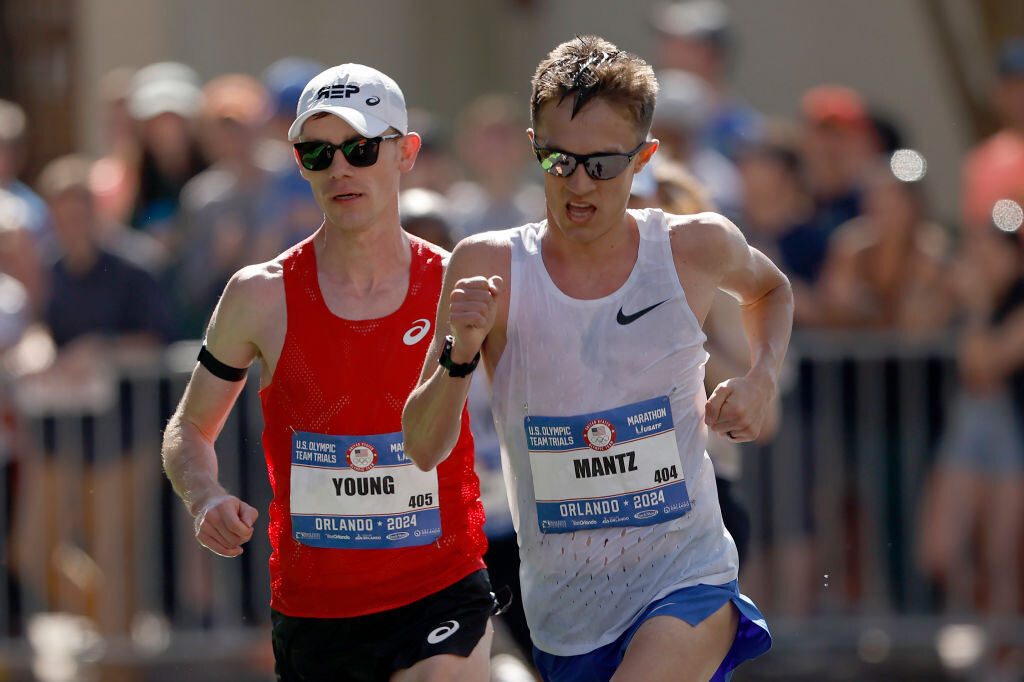
Conner Mantz, Clayton Young, and Leonard Korir, the top three finishers in the 2024 U.S. Olympic Trials who will be racing the marathon in the Paris Olympics on August 10, will be competing as Team USA Red in the Bolder Boulder’s International Pro Team Challenge that follows the citizen’s races. (Korir is expected to officially be named to the U.S. team in early May based on final pre-Olympic international rankings.)
The pro race, which has a prize purse of $83,700 before potential bonuses, is one of the things that makes the Bolder Boulder so unique. After all the runners in 98 citizen waves have completed the race, professional men’s and women’s international teams from more than a dozen countries compete on the same course for team and individual titles. The races feature a staggered start, with women beginning 15 minutes before the men so the winners of each race will finish about 10 minutes apart inside the University of Colorado’s Folsom Field football stadium.
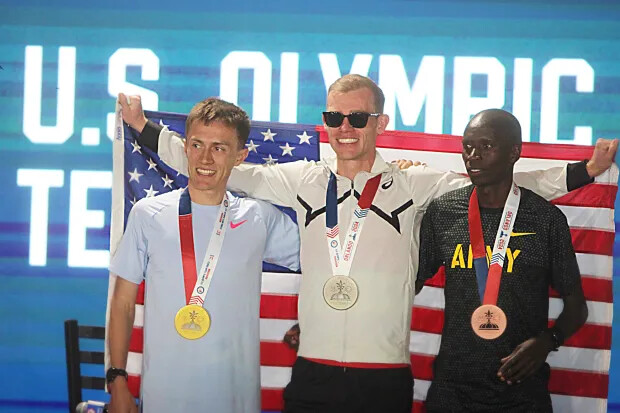
The finishing moments are among the thrilling spectacles in American running. By that point, the stadium is filled with a near-capacity crowd of roaring runners, family, and friends who have been watching the action play out on the massive video screens.
“The finish in the full stadium is like nothing else in the sport,” says Mantz, 27, who won the men’s race last year in 29:08 with a thrilling late-race surge to pass Kenya’s Alex Masai in the final 200 meters before the finish. “It was pretty electric. It took away all the pain you’re feeling mid-race. I was like, ‘Just race as hard as you can.’”
Team USA Red will have plenty of competition, from Team USA White, the secondary American team of Jared Ward, Futsum Zienasellassie, and Sam Chelanga, as well as teams from Kenya, Ethiopia, Mexico, and Rwanda. Teams are scored like a cross country race, with points awarded on the basis of finishing place, which means the team with the lowest combined score for all three runners is the winner. Ties are decided by the positions of the third-place finishers.
The women’s Team USA Red team will be led by defending champion Emily Durgin, along with Sara Hall and Boulder native Nell Rojas. Durgin finished ninth at the U.S. Olympic Trials in February and won the USATF 10 Mile Championships on April 7 in Washington D.C. At last year’s Bolder Boulder, she stormed to victory in 33:24, winning by 24 seconds over Kenya’s Daisy Kimeli.
Hall placed fifth in the U.S. Olympic Trials Marathon on February 3 in a U.S. master’s record (2:26:06) and 15th in the Boston Marathon on April 15. The women’s Team USA White roster will be composed of an all-University of Colorado alumnae squad—Makena Morley, Sara Vaughn, and Carrie Verdon.
“I can’t wait to be back in Boulder for the best day of the year,” says Durgin, 29, who will compete in the U.S. Olympic Trials 10,000 meters on the track in late June with the hopes of making the U.S. Olympic team. “Competing with Nell and Sara will make the experience even better.”
The women’s U.S. Olympic marathon team of Fionna O’Keefe, Emily Sisson, and Dakotah Lindwurm were invited to race in the Bolder Boulder but each runner declined, citing scheduling timing conflicts or a disinterest in racing at Boulder’s lofty altitude (5,430 feet). All of the runners who are racing for the U.S. teams in Boulder live at 4,500 feet or higher.
An Olympic Legacy
Boulder is known as one of the top running meccas in the U.S., in part because elite-level American and international runners have made it their training base since Olympic gold medalist Frank Shorter arrived in the early 1970s. Emma Coburn, Jenny Simpson, Yared Nuguse, Joe Klecker, Jake Riley, Hellen Obiri, and Edna Kiplagat are among the many top-level runners who are currently training in Boulder. Shorter, the 1972 marathon gold medalist, was a co-founder of Bolder Boulder 10K in 1979, and helped it grow into one of the country’s largest races.
Since then, numerous U.S. Olympians have raced in the Bolder Boulder, including Deena Kastor (a three-time women’s champion), Aliphine Tuliamuk (the 2022 women’s winner), Alan Culpepper, Elva Dyer, Ryan Hall, Abdi Abdirahman, Jorge Torres, Shalane Flanagan, Amy Cragg, Magdalena Boulet, and Libby Hickman, as well as Korir (who won it in 2022), and Ward (who was fourth in 2022).
Thanks to Boulder’s robust running community and the prestige of the race, the Bolder Boulder has also always featured fast sub-elite runners competing in the early citizen waves. Yet, the race has also celebrated dedicated middle-of-the-pack runners, as well as the first-time runners and walkers in the later waves. It was one of the first races to have bands playing along the course (as well as belly dancers and other entertainers), runners dressed up in costumes, elite wheelchair races, and in recent years, it has been known for a mid-race slip-and-slide and unofficial bacon aid station.
For the past 25 years, the Bolder Boulder has organized a special Memorial Day tribute—one of the largest in the country—that honors military veterans and new cadets.
The U.S. men’s Olympic marathon team competing in this year’s Bolder Boulder will be a legacy moment for the race, says Bolder Boulder race director Cliff Bosley.
“Having the three men that will represent our country in the marathon at this summer’s Paris Olympic Games is something we are extremely proud of,” Bosley says. “All three ran here last year, and to have them back is just incredible for the race, the city of Boulder, and the sport of running.”
by Brian Metzler
Login to leave a comment
'I’ve found my spot in Iten'- Belgian marathoner training in Kenya ahead of Paris 2024 Olympics
A Belgian long-distance runner has opened up about how training in Kenya has changed his mindset ahead of the Paris 2024 Olympic Games.
Koen Naert, a Belgian long-distance runner loves training in Kenya and he also has a favorite spot he loves training at as he gears up for the Olympic Games in Paris, France later this year.
The 34-year-old already qualified for the Olympic Games, clocking a stunning personal best of 2:06:56 at last year’s Rotterdam Marathon.
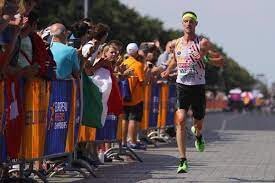
The Belgian is targeting a top-eighth finish after finishing 22nd at the 2016 Rio Olympics and then improved that with a 10th-place finish at the delayed 2020 Tokyo Olympics.
To achieve the goal, Naert has been burning the midnight oil in Kenya, and in an interview with Athletics Weekly, he explained how it feels training in his new-found spot in Iten.
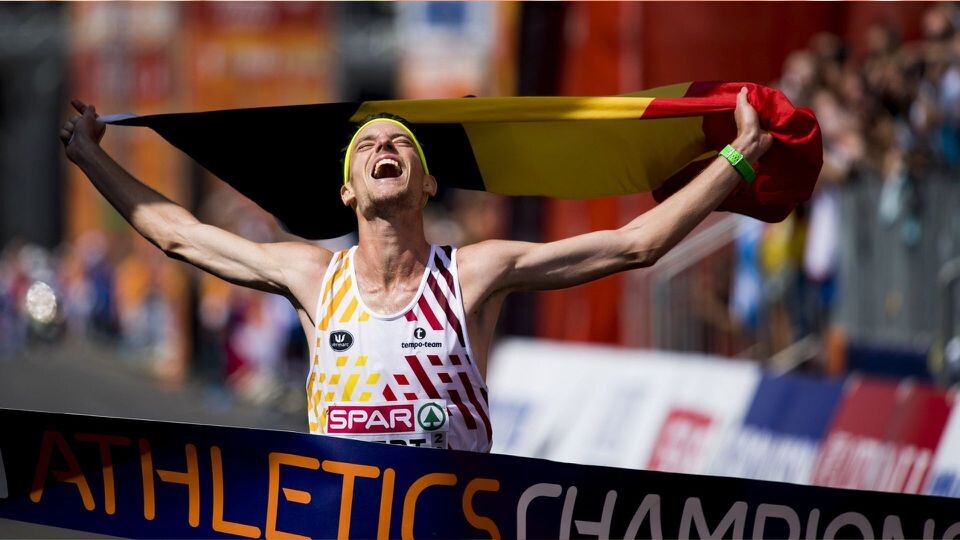
He explained that being in Kenya has helped him work on different aspects of his training since he is away from family and has time to work.
“It depends on the build-up. I think right now I’m doing 100km of running and a 50/60km alternative on the Elliptical Machine. In between my marathon blocks, I’ll do a lot of alternative training like aqua jogging but during the marathon block itself – the 12 weeks preceding my marathon – I’ll run 200km a week. Sometimes even 240km or 250km.
“I meditate at least twice a day and when I’m on camp at altitude I do a lot more sessions of meditation. That’s one advantage of being in Kenya. I also like to train in the US and have been to train with Deena Kastor’s group on occasion.
“Since 2021 however, I’ve found my spot in Iten. I waited a long time to go to Kenya because I was a little bit afraid of the food and life there but once you are on the ground, there’s no distraction and it’s a bit like living like a monk on a mountain,” he told Athletics Weekly.
He added that Olympic success for him would be to have to be honest with himself and he explained that he would need a little miracle to get on the podium.
“However, sometimes miracles exist and you never know. It will be challenging with the weather and the course. I will prepare myself the best I can but the top eight is my absolute goal. I was pretty close in Tokyo but we will see and every race/championship is different,” he said.
There are a lot of training camps in Kenya. One of the best is the KATA Running Retreat located near Thika. At any one time there are 20 or more athletes training at the Kenyan Athletics Training Academy (KATA).
by Abigael Wuafula
Login to leave a comment
Paris 2024 Olympic Games
For this historic event, the City of Light is thinking big! Visitors will be able to watch events at top sporting venues in Paris and the Paris region, as well as at emblematic monuments in the capital visited by several millions of tourists each year. The promise of exceptional moments to experience in an exceptional setting! A great way to...
more...Molly Seidel withdraws from Olympic Marathon Trials due to injury
Tokyo Olympic bronze medalist Molly Seidel announced she is withdrawing from Saturday’s U.S. marathon trials for the Paris Games due to a knee injury.
Seidel, 29, said in a video posted Thursday that she suffered a knee injury a month ago, couldn’t run on it and got an MRI that revealed a broken patella and a partially torn patella tendon.
“I have done everything in my power over this last month to try and get myself to the (starting) line,” she said. “I’ve had just the most incredible physios and doctors doing everything in their power to help me. I’ve been cross-training my (butt) off, but ultimately I got to this week, and my knee had not healed up enough, and I knew that I could not race a marathon hard on it in its current state without really, really injuring myself.”
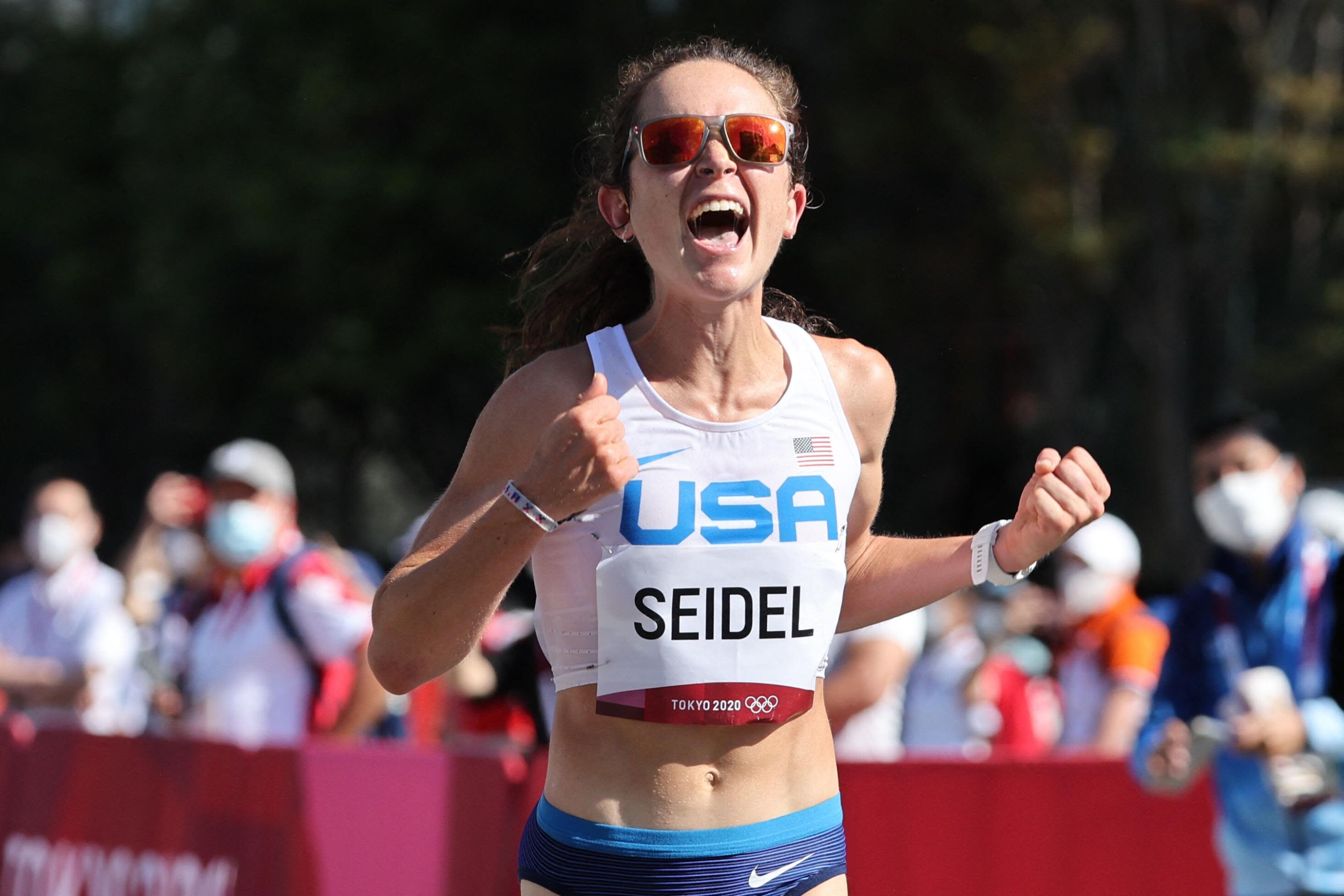
The trials are Saturday at 10 a.m. ET from Orlando, airing live on Peacock with coverage on NBC, NBCSports.com and the NBC Sports app at noon.
Four years ago, Seidel placed second in the trials in her marathon debut to make the three-woman Olympic team.
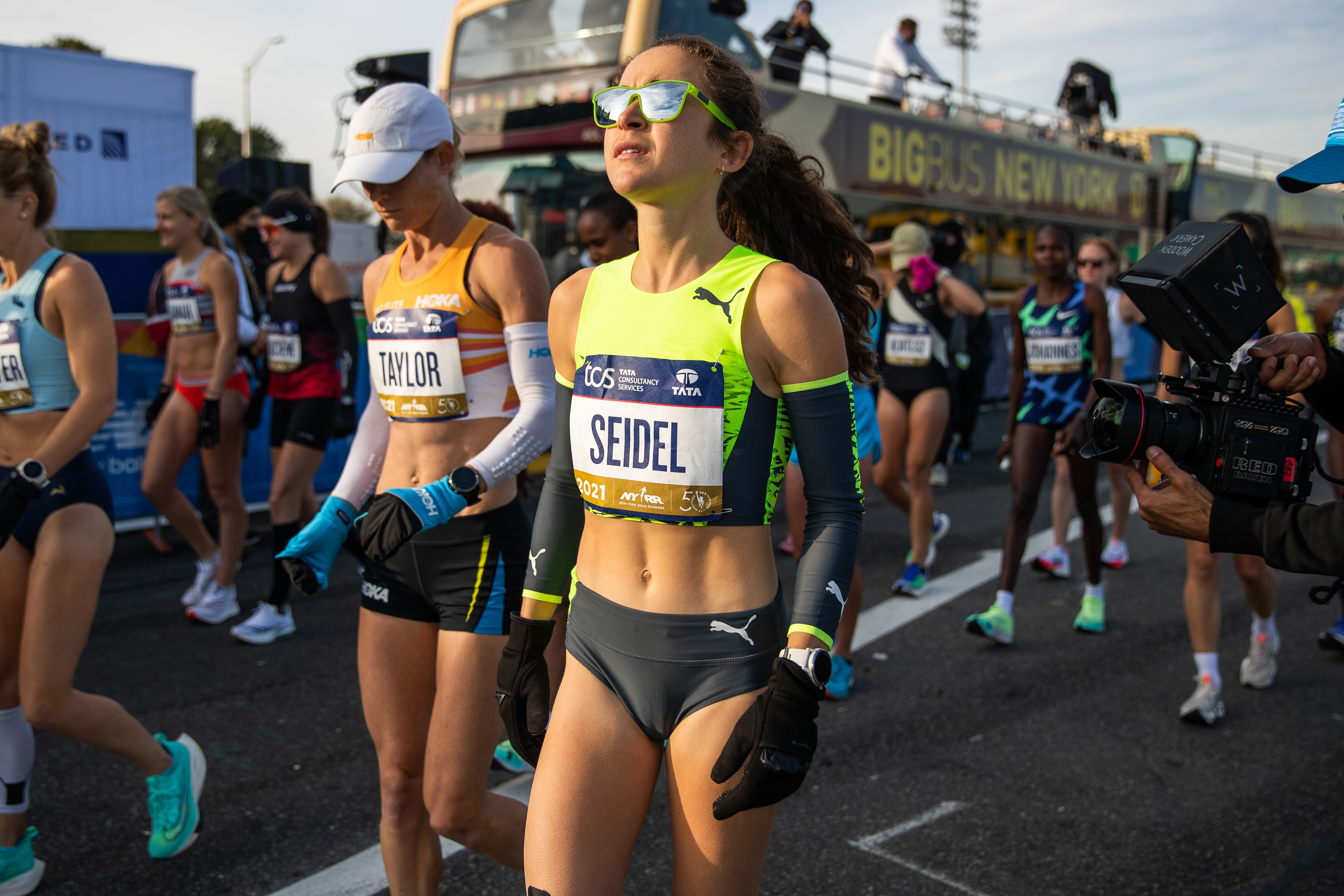
After the COVID-19 pandemic postponed the Tokyo Games by one year, Seidel finished third in the Olympic marathon held in Sapporo.
She became the third U.S. woman to win a marathon medal after Joan Benoit Samuelson, who won the first Olympic women’s marathon in 1984, and Deena Kastor, the 2004 bronze medalist.
After Tokyo, Seidel dealt with a hip injury and anemia, plus took time to focus on mental health after an eating disorder relapse.
Then last Oct. 8, Seidel finished a 26.2-mile race for the first time in two years. She was the second-fastest American woman at the Chicago Marathon, running a personal best and re-establishing herself as a prime candidate to make the Paris team of three at trials.
Seidel is the second contender to withdraw in the lead-up to trials.
Emma Bates, the third-fastest U.S. female marathoner of 2023, bowed out Jan. 7, saying then, “There’s just not enough time to be where I need to be.”
The field still includes three of the four fastest American women in history — American record holder Emily Sisson, former American record holder Keira D’Amato and Sara Hall, No. 4 on the all-time list.
Plus, former Iowa State teammates Betsy Saina (the fastest American in 2023) and Aliphine Tuliamuk (Tokyo Olympic Trials winner).
by Olympic Talk
Login to leave a comment
2028 US Olympic Trials Marathon
Most countries around the world use a selection committee to choose their Olympic Team Members, but not the USA. Prior to 1968, a series of races were used to select the USA Olympic Marathon team, but beginning in 1968 the format was changed to a single race on a single day with the top three finishers selected to be part...
more...Scientists Are Trying to Clone Des Linden’s Heart
“Digital twin” technology might unlock new insights into performance and health—for everyone
In the age of lab-tested super shoes, blood lactate testing, and endless GPS watch data, companies are constantly searching for new ways to improve athletic performance. The next step for precious marginal gains might be in the virtual world.
This week, the IT and consulting firm Tata Consultancy Services (TCS) announced they’re creating a “digital twin” of marathon runner Des Linden’s heart. According to TCS, which is the title sponsor for road races like the New York City Marathon and London Marathon, “A Digital Twin Heart is a real-time, virtual replica of a person’s heart, offering precise data on its function, efficiency, and response to varying conditions.” If that sounds like something out of a Stanley Kubrick film, we’re right there with you. In plain English, TCS hopes that a digital heart can provide precise, real-time training feedback to help inform athletes in the future. For example, imagine if you could analyze your cardiac activity at a certain point in a race. Say, mile 15 of the New York City Marathon, on hilly Queensboro Bridge.
TCS believes that using that kind of data could unlock new insights: “Imagine the difference it might make to see, measure, and monitor a heart going through such significant stress—and predict with high accuracy how it will perform. Imagine you could hold a realistic digital copy of this heart in your hand or explore inside its ventricles at every beat.”
Linden, 40, is a two-time Olympian and is perhaps most known for winning the 2018 Boston Marathon. On Sunday, she set a new American masters record for the marathon, running 2:27:35 to break Deena Kastor’s previous time from 2015 by 12 seconds. Before the race, Linden told Runner’s World that she’s excited about the digital twin, although she hasn’t integrated it into her training yet. She admitted the concept is sci fi-esque. Linden’s virtual heart is still in the early stages, but TCS (which sponsors Linden and Kara Goucher’s podcast Nobody Asked Us with Des & Kara) hopes to have her twin ready in November. Linden has already sat for an MRI, which the TCS team is using to model the replica. Debashis Ghosh, President of the Life Sciences and Healthcare Business Group at TCS, believes that digital twin technology has the potential to not only improve running but inform broader healthcare decisions.
“Des’s Digital Heart can optimize her training, performance, and recovery but this technology is important for reasons far beyond sports—it can ignite a personal healthcare revolution,” he said in a press release. “With heart disease the leading cause of death in the U.S., it is more important than ever to innovate techniques to keep hearts healthy.”
The impact of the emerging tech is to-be-determined, but TCS believes that digital twins will be commonplace for civilians by 2035, thanks to recent advancements in fields like AI, machine learning, and virtual reality.
Who knows—maybe we’ll all be checking the stats of our digital hearts just as much as our cadence or average pace after a run.
by Runner’s World
Login to leave a comment
Two American men achieve the Olympic standard at Chicago Marathon
The American contingent was led by Conner Mantz, who finished sixth overall and ran a personal best of 2:07:47. His former BYU teammate Clayton Young placed seventh in 2:08:00. Both athletes dipped under the Olympic qualifying standard of 2:08:10.
Running his first marathon since the 2022 World Athletics Championships in Eugene, Oregon, Galen Rupp finished eighth in 2:08:48.
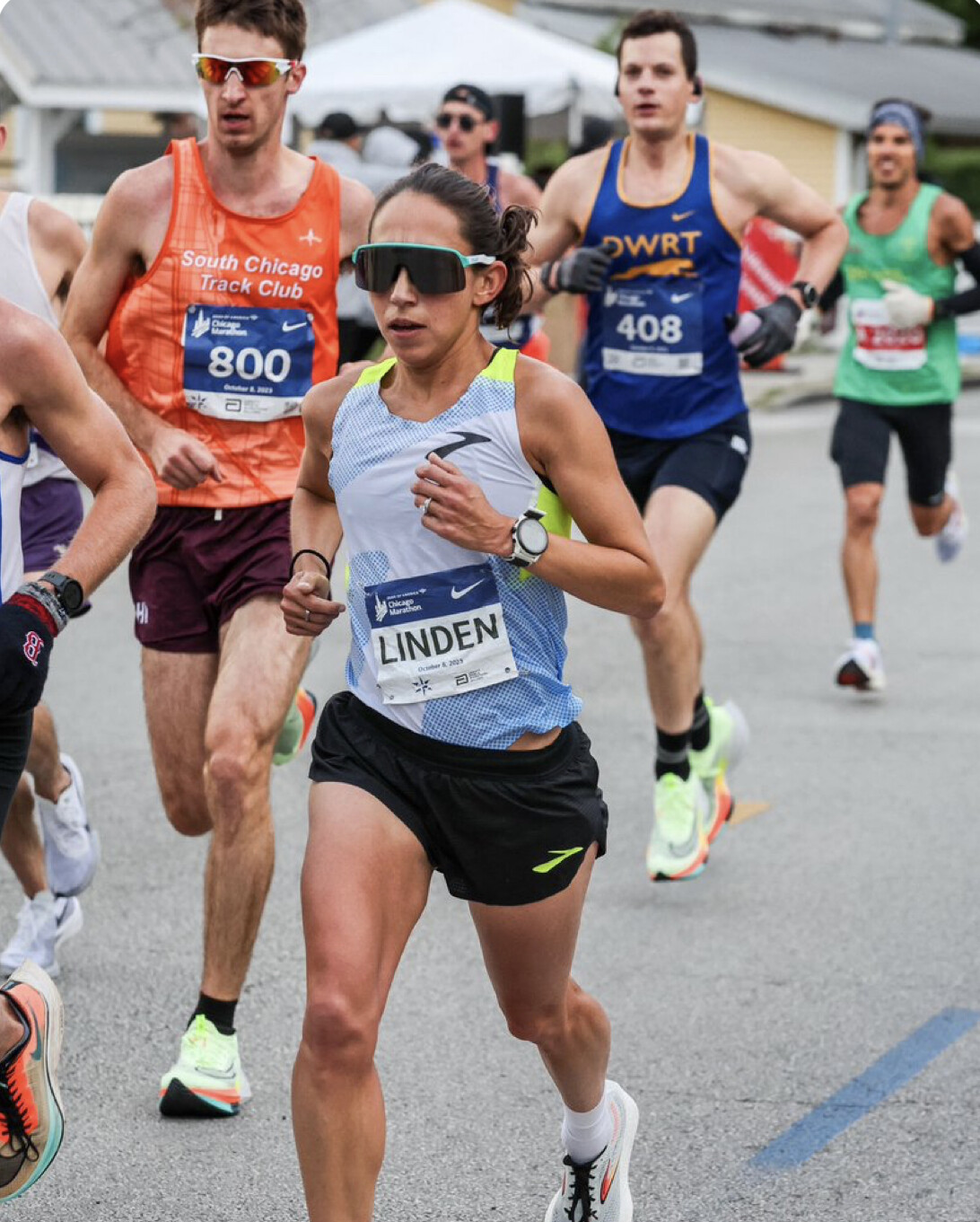
Three American women crack the top 10
A year after breaking the national record in Chicago, Emily Sisson returned as the top American with a seventh-place finish in 2:22:09. Olympic bronze medalist Molly Seidel finished eighth overall in 2:23:07, and Sara Vaughn placed 10th in 2:23:24.
After turning 40 in July, Des Linden broke the American masters record by running 2:27:35, beating the previous record (2:27:47) set by Deena Kastor.
Login to leave a comment
Bank of America Chicago
Running the Bank of America Chicago Marathon is the pinnacle of achievement for elite athletes and everyday runners alike. On race day, runners from all 50 states and more than 100 countries will set out to accomplish a personal dream by reaching the finish line in Grant Park. The Bank of America Chicago Marathon is known for its flat and...
more...Molly Seidel Stunned the World (and Herself) with Olympic Bronze in Tokyo. Then Life Went Sideways.
She stunned the world (and herself) with Olympic bronze in Tokyo. Then life went sideways. How America’s unexpected marathon phenom is getting her body—and brain—back on track.
On a clear December night in 2019, Molly Seidel was at a rooftop holiday party in Boston, wearing a black velvet dress, doing what a lot of 25-year-olds do: passing a joint between friends, wondering what she was doing with her life.
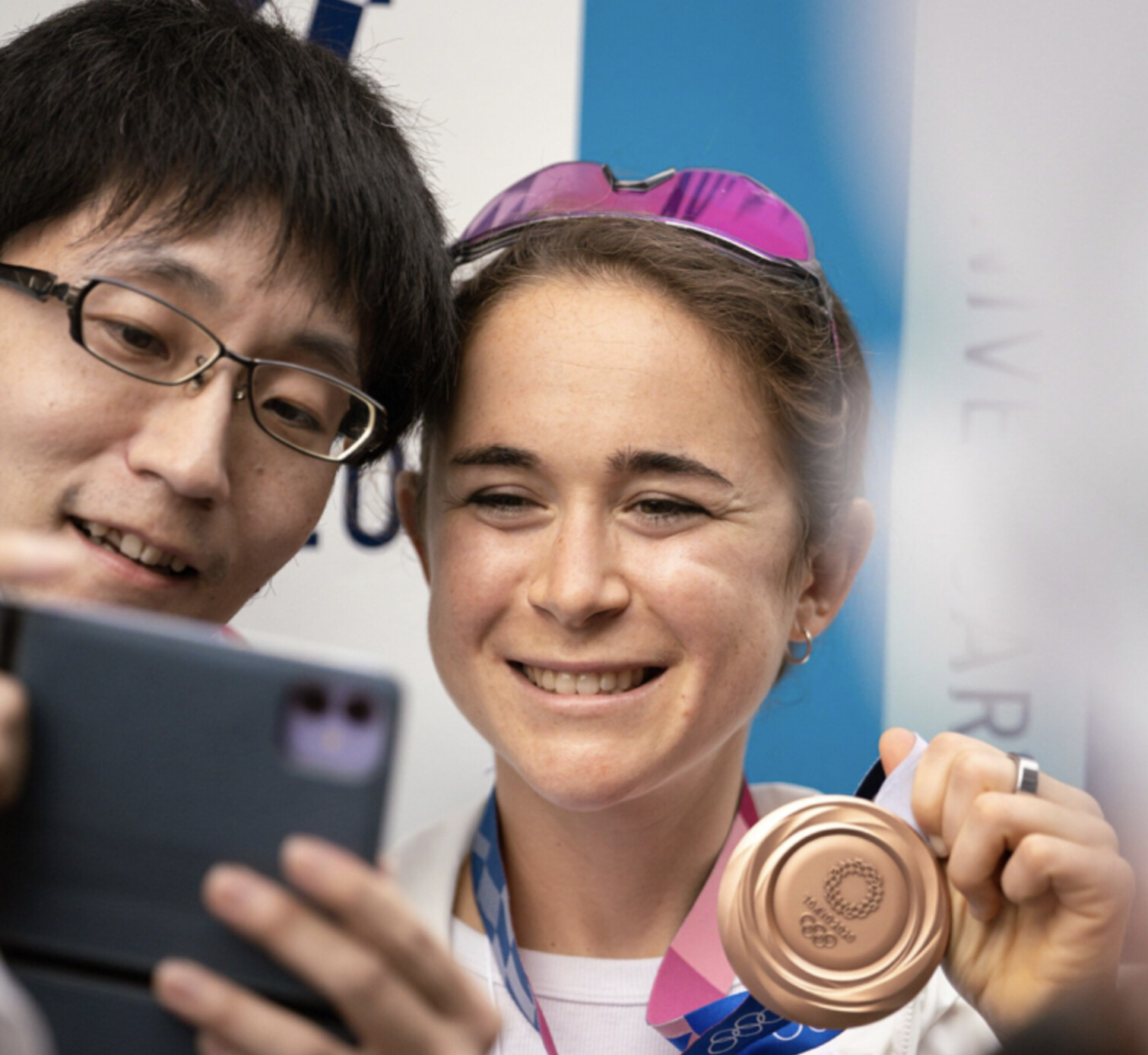
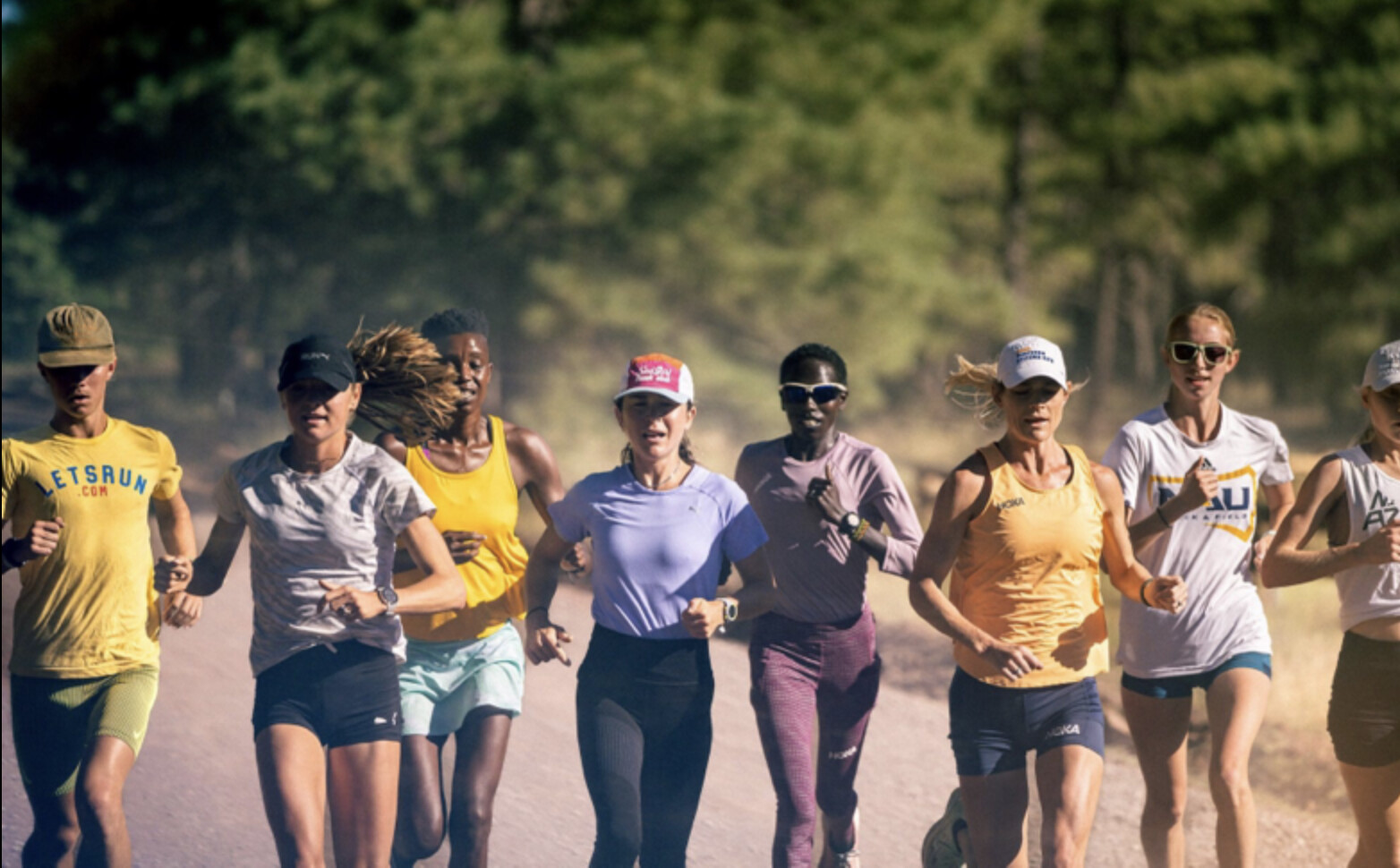
“You should run the Olympic Trials,” her sister, Izzy, said, as smoke swirled in the chilly air atop The Trackhouse, a retail shop and community hub on Newbury Street operated by the running brand Tracksmith. “That would be hilarious if you did that as your first marathon.”
Molly, an elite 10K racer who’d spent much of 2019 injured, looked out at the city lights, and laughed. Why the hell not? She’d just qualified for the trials, winning the San Antonio Half with a time of 1:10:27. (“The shock of the century,” as she’d put it.) True, 13.1 miles wasn’t 26.2—but running a marathon was something to do. If only because she never had before.
A four-time NCAA track and cross-country champion at The University of Notre Dame in Indiana, Molly had moved to Boston in 2017, where she’d worked three jobs to supplement her fourth: running for Saucony’s Freedom Track Club. The $34,000 a year that Saucony paid her (pre-tax, sans medical) didn’t go far in one of America’s most expensive cities. Chasing kids around as a babysitter, driving around as an Instacart shopper, and standing around eight hours a day as a barista—when you’re running 20 miles a day—wasn’t ideal. But whatever, she had compression socks. And she was downing free coffee and paying rent, flying to Flagstaff, Arizona, every so often for altitude camps, and having a good time. Doing what she loved. The only thing she’s ever wanted to do since she was a freckly fifth-grader in small-town Wisconsin clocking a six-minute mile in gym class.
“I was hustling, and I loved it. It was such a fun, cool time of my life,” she says, summarizing her 20s. Staring into Molly’s steely brown eyes, listening to her speak with such clarity and conviction about her struggles since, it’s easy to forget: She is still only 29.
After Molly had hip surgery on her birthday in July 2018, her doctors gave her a 50/50 chance of running professionally again. By summer 2019, she’d parted ways with FTC, which left her sobbing on the banks of the Charles River, getting eaten alive by mosquitoes and uncertainty. Her biggest achievement lately had been being named #2 Top Instacart Shopper (in Flagstaff; Boston was big-time).
The day after that rooftop party, Molly asked her friend and former FTC teammate Jon Green, who she’d newly anointed as her coach: “Think I should run the marathon trials?” Sure, he shrugged. Nothing to lose. Maybe it’d help her train for the 10K, her best shot—they both thought—at making a U.S. Olympic team.
“I’m going to get my ass kicked six ways to Sunday!” she told the host of the podcast Running On Om six weeks before the trials in Atlanta.
Instead, on February 29, 2020, she kicked some herself. Pushing past 448 of the fastest, most-experienced women marathoners in the country, coming in second with a 2:27:31, earning more in prize money ($60,000) than she had in two years of racing—and a spot on the U.S. trio for the 2020 Tokyo Olympics, along with Kenyan-born superstars Aliphine Tuliamuk and Sally Kipyego. “I don’t know what’s happening right now!” Molly kept saying into TV cameras, wrapped in an American flag, as stunned as a lottery winner.
Saucony who? Puma came calling. Along with something Molly hadn’t anticipated: the spotlight. An onslaught of social media followers. And two weeks later, a global pandemic and lockdown—and all the anxiety and isolation that came with it. She was drowning, and she hadn’t even landed in Tokyo yet.
The 2020 Olympics, as we all know, were postponed to 2021. An emotional burden but a physical boon for Molly, in that it allowed her to get in a second marathon. In London, she finished two minutes faster than her debut. When the Olympics finally rolled around, she was ready.
Before the race, Molly says, “I was thinking: ‘Once I cross the starting line, I get to call myself an Olympian and that’s a win for the day.’”
But then she crossed the finish line—with a finger-kiss to the sky and a guttural Yesss!—in third place with a 2:27:46, just 26 seconds behind first (Kenya’s Peres Jepchirchir). And realized: She gets to call herself an Olympic medalist forever. Only the third American woman to ever earn one in the marathon.
Lots of kids have fleeting hopes of making it to the Olympics. I remember thinking I could be Mary Lou Retton. Maybe FloJo, with shorter fingernails. Then I decided I’d rather be Madonna or president of the United States and promptly forgot about it. But Molly held tight to her Olympic aspirations. She still has a poster she made in 2004, with stickers and a snapshot of her smiley 10-year-old self, to prove it. “I wish I will make it into the Olympics and win a gold medal,” she wrote, and signed it: Molly Seidel, the “y” looping back to underline her name. In case there was any doubt as to who, specifically, would be winning the medal.
Molly grew up in Nashotah, Wisconsin, and is the eldest of three. Her sister and brother, younger by not quite two years, are twins. Izzy is a running influencer and corporate content creator for companies like Peloton; and Fritz favors Formula 1 racing and weightlifting and works for the family’s leather-tanning business. The family was active, sporty. Dad, Fritz Sr., was a ski racer in college; Mom, Anne, a cheerleader. You can tell. Watching clips of Molly’s mom and dad watching the Olympic race from their backyard patio, jumping up and down, tears streaming, is the kind of life-affirming moment you wish you could bottle. “I’m in shock. I’m in disbelief,” Molly says into the mic, beaming. “I just wanted to come out today and I don’t know…stick my nose where it didn’t belong and see what I could come away with. And I guess that’s a medal.” When the interviewer holds up her family on FaceTime, Molly breaks down. “We did it,” she says into the screen between sobs and smiles. “Please drink a beer for me.
Molly hasn’t always been unabashedly herself, even when everyone thought she was. A compartmentalizer to the core, she spent most of her life hiding a huge part of it: anorexia, bulimia, anxiety, obsessive-compulsive disorder, debilitating depression.
It started around age 11, when she learned to disguise OCD tendencies, like compulsively knocking on wood, silently reciting prayers “to avoid God getting mad at me,” she says. “It was a whole thing.” She says her parents were aware of the behaviors, but saw them more as odd little habits. “They had no reason to suspect anything. I was very high-functioning,” she says. “They didn’t realize that it was literally taking over my life.”
She wasn’t officially diagnosed with OCD until her freshman year of college, when she saw a therapist for the first time. At Notre Dame, disordered eating took hold, quietly yet visibly, as it does for up to 62 percent of female college athletes, according to the National Eating Disorders Association. As recently as the Tokyo Olympics, she was making herself throw up in the airport bathroom, mere days before taking the podium. Molly hesitates to share that detail; she fears a girl might read this and interpret it as behavior to model. “Having been in that place as a younger athlete, I know I would have,” she says. But she also understands: Most people just don’t get how unrelenting eating disorders can be.
In February 2022, she finally received a diagnosis of the root cause for all of it: ADHD. About being diagnosed, she says, “It made me feel really good, like [I don’t have] a million different disorders. I have a disorder that manifests itself in a lot of different symptoms.”
She waited to try Adderall until after the Boston Marathon in April, only to drop out at mile 16 due to a hip impingement. Initially, the meds made her feel fantastic. Focused. Free. Until she realized Adderall hurt more than it helped. She couldn’t sleep, couldn’t eat, lost too much weight. Within weeks, she devolved. “The eating disorder came roaring back,” she says, referring to it, as she often does, as its own entity, something that exists outside of herself. That ruthlessly takes control over her very need for control. “I almost think of it as an alter ego,” she explains. “Adderall was just bubblegum in the dam,” as she puts it. She ditched the drug, and her life—professionally, physically—unraveled.
In July 2022, heading into the World Championships, she bombed the mental health screening, answering the questions with brutal honesty. She’d been texting Keira D’Amato weeks prior. “Yo girl, things are pretty bad right now. Get ready…” Sobbing on the sidewalk in Eugene, Oregon, she texted D’Amato again. And the USATF made it official: D’Amato would take her spot on the team. Then Molly did what she’d been “putting off and putting off”— checked herself into eating disorder treatment for the second time since 2016, an outpatient program in Salt Lake City, where her new boyfriend was living at the time.
Somehow (see: expert compartmentalizer) mid-meltdown, in February 2022, she had met an amateur ultrarunner named Matt, on Hinge. A quiet, lanky photographer, he didn’t totally get what she did. “I didn’t understand the gravity of it,” he tells me. “I was like, Oh she’s a pro runner, that’s cool. I didn’t realize she was, like, the pro runner!”
Going back to treatment “was pretty terrible,” she says. At least she could stay with Matt. Hardly a honeymoon phase, but the new relationship held promise. “I laid it all out there,” says Molly. “And he was still here for it, for all the messiness. It was really meaningful.” And a mental shift. “He doesn’t see me as just Molly the Runner.”
Almost a year later, on a freezing April evening in Flagstaff, Molly is racing around Whole Foods, palming a head of cabbage, grabbing a thing of hummus, hunting for deals even though she doesn’t need to anymore.
“It’s all about speed, efficiency, and quality,” she says, explaining the secret to her earlier Instacart success. She checks the expiration date on a container of goat cheese and beelines for the butcher counter, scans it faster than an Epson DS3000, though not without calculation, and requests two tomato-and-mozzarella-stuffed chicken breasts. Then she darts over to the beverage aisle in her marshmallow-y Puma slip-ons that Matt custom-painted with orange poppies. She grabs a case of La Croix (tangerine), then zips to the checkout. We’re in and out in under 15 minutes and 50 bucks, nothing bruised or broken.
Other than her body. Let’s just say: If Molly were an avocado or a carton of eggs, she probably wouldn’t pass her own sniff test. The week we meet, she is just coming off a month of no running. Not a single mile. She’s used to running twice a day, 130 miles a week. No wonder she’s spraying her kitchen counter with Mrs. Meyer’s and scrubbing the stovetop within minutes of welcoming me into her new home.
The place, which she shares with Matt and his Australian border collie, Rye, has a post-college flophouse feel: a deep L-shaped couch draped in Pendleton blankets, a bar cluttered with bottles of discount wine, a floor lamp leaning like the Tower of Pisa next to a chew toy in the shape of a ranch dressing bottle. Scattered about, though, are reminders that an elite runner sleeps here. Or at least tries to. (“Pro runner by day, mild insomniac by night” reads the bio on her rarely used account on what used to be Twitter.) There’s a stick of Chafe Safe on the coffee table. Shalane Flanagan’s cookbooks on the counter. And framed in glass, propped on the office floor: Molly’s Olympic kit—blue racing briefs with the Nike Swoosh, a USA singlet, her once-sweat-drenched American flag, folded in a triangle. “I’m not sure where to hang it,” she says. “It seems a little ostentatious to have it in the living room.”
With long brown curls and a round, freckly face, Molly has an aw-shucks look so innocent that it’s hard, at first, to perceive her struggles. Flat-out ask her, though—How are you even functioning?—and she’ll tell you: “I’m an absolute wreck. There’s no worse feeling than being a pro runner who can’t run. You just feel fucking useless.” Tidying a stack of newspapers, she adds, “Don’t worry, I’ve had therapy today.”
She’s watched every show. (Save Ted Lasso, “too sickly sweet.”) Listened to every podcast. (Armchair Expert is a favorite.) She’s got nothing else to do but PT and go easy on the ElliptiGo in the garage, onto which she’s rigged a wooden bookstand, currently clipped with A History of God: The 4,000 Year Quest of Judaism, Christianity and Islam. “I don’t read running books,” she says. “I need something different.”
Like most runners—even the most amateur among us—running, moving, is what keeps her sane. “What about swimming? Can you at least swim?” I ask, projecting my own desperation if I were in her size 8.5 shoes. “I fucking hate swimming,” says Molly. Walking? “Oh, yeah, I can go on walks. Another. Long. Walk.”
The only thing she has on her schedule this week is pumping up a local middle school track team before their big meet. The invitation boosted her spirits. “Should I just memorize Miracle on Ice?” she says, laughing. “No, I know, I’ll do Independence Day.”
Injuries are nothing new for Molly. Par for the course for any professional athlete. But especially for women, like her, who lack bone density—and have since high school, when, according to a study in the Orthopedic Journal of Sports Medicine, nearly half of female runners experience period loss. Osteoporosis and its precursor, osteopenia, are rampant in female runners, leading to ongoing issues that threaten not just their college and professional running careers, but their lives.
Still, Molly admits, laughing: She’s especially accident-prone. I ask her to list every scratch she’s ever had, which takes her 10 minutes, and goes all the way back to babyhood, when she banged her head against the bathtub spout. There was a cracked spine from a sledding incident in 8th grade, a broken collarbone from a ski race in high school, shredded knee cartilage in college when a driver hit her while she was riding a bike. “Ribs are constantly breaking,” she says. In 2021, two snapped, and refused to heal in time for the New York City Marathon. No biggie. She ran through the pain with a 2:24:42, besting Deena Kastor’s 2008 time by more than a minute and setting the American course record.
Molly’s latest injury? Glute tear. “Literally a gigantic pain in the ass,” she posted on Instagram in March. Inside, Molly was devastated. Pulling out of the Nagoya Marathon—the night before her 6:45 a.m. flight to Japan, no less—was not in the plan. The plan, according to Coach Green, had been simple. It always is. If the two of them even have one. “Just to have fun and be consistent.” And get a marathon or two in before the Olympic Trials in February 2024.
She’d been finally—finally—fit on all fronts; ready to race, ready to return. She needed Nagoya. And then, nothing. “It feels like I’m back at the bottom of the well,” says Molly, driving home from Whole Foods in her Toyota 4Runner. “This last year-and-a-half has been so difficult. It’s just been a lot of doubt. How do I approach this, as someone who has now won a medal? Like, man, am I even relevant in this sport anymore?” She pops a piece of gum in her mouth. I wait for her to offer me some, because that’s what you do with gum, but she doesn’t. She’s so in her head. “It’s hard when you’re in the thick of it, you know, to figure out: Why the fuck do I keep doing this? When it just breaks my heart over and over and over again?”
We pull into her driveway. “I was prepared for the low period after Tokyo,” she says. “But this has been much longer and lower than I expected.”
The curse of making it to the Olympics, let alone coming back with a medal: expectations. Molly’s own were high. “I think I thought, after the Olympics, if I win a medal, then I will be fixed, it will fix everything.” Instead, in a way, it made everything worse.
That’s the problem that has plagued Molly for most of her running career: Her triumphs and troubles intermingle, like thunder and lightning. Which, by the way, she has been struck by. (A minor backyard-grill, summer-thunderstorm incident. She was fine.)
The next morning in Flagstaff, Molly’s feeling like she can run a mile, maybe two. It’s snowing, though, and she doesn’t want to risk the slippery track, so we meet at Campbell Mesa Trails. She loops a band around the back of her truck to stretch and sends me off into the trees to run alone while she does a couple of laps on the street.
Molly leaves for an acupuncture appointment, and we reunite later at Single Speed Coffee (“the best coffee in Flagstaff,” promises the ex-barista who drinks up to three cups a day). We curl up on a couch like it’s her living room, and she talks as freely—and as loudly—as if it was. Does she realize everyone can hear her? She doesn’t care. I guess that’s what happens when you’ve grown so comfortable sharing—in therapy, on podcasts, in a three-part video series on ADHD for WebMD—you just…share. Loud and proud.
Mental illness is so insidious, says Molly. “It’s not always this Sylvia Plath stick-my-head-in-a-fucking-oven thing, where you’re sad all the time,” she says. “High-functioning depressed people live normal successful lives. I can be having the happiest moment, and three days later I’m in a total downward spiral.” It’s something you never recover from, she says, but you learn to manage.
“I’m this incredibly flawed person who struggles so much. I think: How could I have won this thing when I’m so flawed? I look at all the people around me, all these accomplished people who have their shit together, and I’m like, ‘one of these things is not like the other,’” she says, taking a sip of her flat white. “I was literally in the Olympic Village thinking: Everybody is probably looking at me wondering: Why the hell is she here?”
They weren’t. They don’t. She knows that.
And yet her mind races as fast as she does. It takes up So. Much. Space. When she’s running, though, the noise disappears. She’s not Olympic Molly or Eating Disorder Molly, she’s not even, really, Runner Molly. “When I’m running,” she says, “I’m the most authentic version of myself.”
Talking helps, too. Molly first shared her mental health history a few years ago, “before she was famous,” as she puts it. After the Olympics, though, she kept talking and hasn’t stopped. The Tokyo Games were a turning point, she says. Suddenly the most revered athletes in the world were opening up about their mental health. Molly credits Simone Biles’s bravery for her own. If Biles, and Michael Phelps and Naomi Osaka, could come clean... then maybe a nerdy, niche-y, unlikely medaling marathoner could, too.
“Those guys got a lot more shit for it than I did,” says Molly. “I got off easy. I’m not a household name,” she laughs. She knows she can be candid and off the cuff—and chat freely in a not-empty café—in a way Biles never could. “I’m a nobody!” she laughs.
Still, a nobody with 232,000 Instagram followers whom she has touched in very IRL ways—becoming an unintentional poster woman for normalizing mental health challenges among athletes. “You are such an incredible inspiration,” @1percentpeterson posts, one comment of a zillion similar. “It’s ok to not be ok!” says another. Along with all the online love is, of course, online hate. Molly rattles off a few lowlights: “She’s an attention-seeking whore,” “Her bones are so brittle she’ll never race again,” “She’s running so badly and posting a lot she should really focus on her running more.” Molly finds it curious. “I’m like, ‘If you hate me, you don’t need to follow me, sir.’”
It’s Molly’s nobody-ness—what Outside writer Martin Fritz Huber called her “runner-next-door” persona, and I’ll just call “genuine personality”—that has made her somebody in running’s otherwise reserved circles.
Somebody who (gasp!) high-fives her sister in the middle of a major race, as she did at mile 18 of the 2021 New York City Marathon. “They shat on me in the broadcast for it,” she says. “They were like, ‘She’s not taking this seriously.’” (Except, uh, then she set the American course record, so…)
Somebody who, obviously, swears like a sailor and dances awkwardly on Instagram, who dresses up like a turkey, and viral-tweets about getting mansplained on an airplane. (“He starts telling me how I need to train high mileage & pulls up an analysis he’d made of a pro runner’s training on his phone. The pro runner was me. It was my training. Didn’t have the heart to tell him.”)
Somebody who makes every middle-aged mom-runner I know swoon like a Swiftie and say: “OMG! YOU HUNG OUT WITH MOLLY SEIDEL!!?” Middle-aged dad-runners, too. “I saw her once in Golden Gate Park!” my friend Dan fanboyed when he heard. “I waved!” Did she wave back? “She smiled,” he says, “while casually laying down 5:25s.”
And somebody who was as outraged as I was that I bought a $16 tube of French toothpaste from my hip Flagstaff motel. (It was 10 p.m.! It was all they had!) “For that price it better contain top-shelf cocaine,” she texted. Lest LetsRun commenters take that tidbit out of context: It’s a joke. It’s, in part, what makes Molly America’s most relatable pro runner: She’s not afraid to make jokes. (While we’re at it… Don’t knock her for smoking a little legal weed, either. That’s so 2009. Per the World Anti-Doping Agency: Cannabis is prohibited during competition, not at a Christmas party two months before it. Per Molly: “People would be shocked to know how many pro runners smoke weed.”)
I can’t believe I never asked to see it. Molly’s medal. A real, live Olympic medal. Maybe because it was tucked into a credenza along with Matt’s menorah and her maneki-neko cat figurines from Japan. But I think it was because hanging out with Molly felt so…normal, I almost forgot she’d won one.
People think elite distance runners have to be one-dimensional, she says. That they have to be sculpted, single-minded, running-only robots. “Because that’s what the sport has been,” she says.
Molly falls for it, too, she says. She scrolls the feeds, sees her fellow pros living seemingly perfect lives. She wants everyone to know: She’s not. So much so that she requested we not print the photos originally commissioned for this story, which were taken when she was at the lowest of lows. (“It’s been...refreshing...to be pretty open and real with Rachel [about] the challenges of the last year,” she wrote in an email to Runner’s World editors. “But the photos [were taken at] a time when I was really struggling and actively trying to hide how bad my eating disorder had become.”)
Molly finds the NYC Marathon high-five thing comical but indicative of a more serious issue in elite running: It takes itself too seriously. It’s too…elitist. Too stilted. “Running a marathon is a pretty freaking cool experience!” If you’re not having fun, she asks rhetorically, what’s the point? Still, she admits, she isn’t always having fun. Though you wouldn’t know it from her Instagram. “Oh, I’m very good at making it seem like I am,” she says.
She used to enjoy social media when it was just her friends. Before she gained 50,000 followers in a single day after the trials, and some 70,000 on Strava. Before the pandemic, before the Olympics. Keeping up with content became a toxic chore. “You feel like you’re just feeding this beast and it’s never going to stop,” she says. She’s taken to deleting the app off her phone, reloading it only to fulfill contractual agreements and post for her sponsors, then deleting it again.
As much as she hates having to post, she enjoys plugging products the only way that feels natural: through parody. As does Izzy, her influencer sister, who, like Molly, prefers to skewer rather than shill (à la their idea behind their joint Insta account: @sadgirltrackclub). “The classic influencer tropes make me want to throw up,” she says (perverse pun as a recovering bulimic not intended). “New Gear Drop!’ or ‘This is my Outfit of the Day!’ Cringe. “Hot Girl Instagram is not how I identify,” she says.
Nor is TikTok. “Sponsors tell me all the time: You should TikTok! I’m like, ‘I am not doing TikTok.’ I know how my brain works. They’ll say, ‘We’ll pay you less if you don’t’—and I’m, like, I don’t care.”
And to those sponsors who ghosted her after she returned to eating disorder treatment, good riddance. “Michelob dropped me like a bad habit,” she says. “Whatever. You have watery-ass beer anyway.”
To those who have stood by her, though, she’s utterly devoted. Pissed she couldn’t wear the Puma panther head to toe in Tokyo, Molly took off her Puma Deviate Elites and tied them over her shoulder, obscuring the Nike logo on her Olympic singlet for all the world to see. Or not see. “Nike isn’t paying my fucking bills.”
The love is mutual, says Erin Longin, a general manager at Puma. After decades backing legends like Usain Bolt, Puma was relaunching road running and wanted Molly as their guinea pig. “She’s a serious athlete and competitor, but she also has fun with it,” says Longin. “Running should be fun. Molly embodies that.” At their first meeting, in January 2020, Molly made them laugh and nerded out over their new shoes. “We all left there, fingers crossed she’d sign with us,” says Longin.
Come February, they all flipped out. Longin was watching the trials, not expecting much. And then: “We were all messaging, “OMG!!” Then Molly killed in London. Medaled in Tokyo. “What she did for us in that first year…” says Longin. “We couldn’t have planned it!”
Then came the second year, and the third, and throughout it all—injuries, eating disorder treatment, missed races, missed opportunities—Puma hasn’t flinched. “It’s easy for a company to do the right thing when everything is going great,” Molly posted in April, heartbroken from her couch instead of Heartbreak Hill. “But it’s when the sh*t hits the fan and they’re still right there with you….” She received 35,000 hearts—and a call from Longin: “You make me feel so proud.”
Does it matter to Puma if Molly never places—never races—again? “Nope,” Longin says.
My last afternoon in Flagstaff, it’s cloudy skies, still freezing. I find Molly on the high school track wearing neoprene gloves, black puffy coat, another pair of Pumas. Her breath is white, her cheeks red. Her legs churning in even, elegant strides. Upright, alone, at peace, backed by snow-dusted peaks. Running itself is what matters, not racing, she tells me. “I honestly don’t give a shit about winning,” she says. All she wants—really wants, she says—is to be healthy enough to run until she’s old and gray.
Molly’s favorite runner is one who didn’t get to grow old. Who made his mark decades before she was born: Steve Prefontaine. “Pre raced in such a genuine way. He made people feel something,” she says. “The sports performances you truly remember,” she adds, “are the ones where you see the struggle, the work, the realness.”
Sounds familiar. “I hate conversations like, ‘Who’s the GOAT?’” Molly continues. “Who fucking cares? Who’s got the story that’s going to get people excited? That’s going to make some kid want to go out and do it?”
I know one of those kids: My best friend’s daughter, Quinn, a rising track phenom in Oregon, who has dealt with anxiety and OCD tendencies. She has a picture of Molly Seidel, and her times, taped to her bedroom wall. This past May, Quinn joined Nike’s Bowerman Club. She was named Oregon Female Athlete of the Year Under 12 by USATF. She wants to run for Notre Dame.
“Quinn loves running more than anything,” her mom tells me, texting photos of her elated 11-year-old atop the podium. “But I don’t know…” She’s unsure about setting her daughter on this path. How could she not, though? It’s all Quinn wants to do. Maybe what Quinn, too, feels born to do.
It’ll be okay, I tell her, I hope. Quinn has something Molly never had: She has a Molly.
Molly and I catch up via phone in June. A team of doctors in Germany has overhauled her biomechanics. She’s been running 110 miles a week, feeling healthy, hopeful. Happy. A month later, severe anemia (and accompanying iron infusions) interrupts her summer racing schedule. She cancels the couple of 10Ks she had planned and entertains herself by popping into the UTMB Speedgoat Mountain Race: a 28K trail run through Utah’s Little Cottonwood Canyon—coming in second with a 3:49:58. Molly’s focus is on the Chicago Marathon, October 8th; her first major race in almost two years.
Does it matter how she does? Does it matter if she slays the Olympic Trials in February? If she makes it to Paris 2024? If she fulfills her childhood dream and brings home gold?
Nah. Not if—like Matt, like Puma, like, finally, even Molly herself—you see Molly the Runner for who she really is: Molly the Mere Mortal. She’s the imperfect one who puts it perfectly: What matters isn’t her time or place, how she performs on the pavement. Or social media posts. What matters—as a professional athlete, as a person—is how she makes people feel: human.
She’d been finally—finally—fit on all fronts; ready to race, ready to return. She needed Nagoya. And then, nothing. “It feels like I’m back at the bottom of the well,” says Molly, driving home from Whole Foods in her Toyota 4Runner. “This last year-and-a-half has been so difficult. It’s just been a lot of doubt. How do I approach this, as someone who has now won a medal? Like, man, am I even relevant in this sport anymore?” She pops a piece of gum in her mouth. I wait for her to offer me some, because that’s what you do with gum, but she doesn’t. She’s so in her head. “It’s hard when you’re in the thick of it, you know, to figure out: Why the fuck do I keep doing this? When it just breaks my heart over and over and over again?”
by Runner’s World
Login to leave a comment
Should I Tune In or Tune Out During My Run?
How to think on challenging runs depends on your intention. Here’s what the research says. Runners often develop a type of tunnel vision. Case in point: In 2006, Scott Douglas went to India to cover a five-day stage race in the Himalayan foothills. The day before the race, he and the eventual winner went for a run from the race headquarters in Mirik. There was a small lake with a perimeter path nearby that was perfect for the occasion—they could easily settle into a rhythm and crank out several 10-minute loops until it was time to call it a day.
When Douglas got back to the lodge, his wife, Stacey, asked, “Wasn’t that amazing!?” It turned out that Stacey had also gone to the lake for a stroll and had come upon a couple dozen women celebrating the Diwali festival. Clad in bright yellow and red wraps and head scarves, they squatted next to the lakeside trail with big bowls of bananas, melons, other fruits, vegetables, and flowers as offerings.
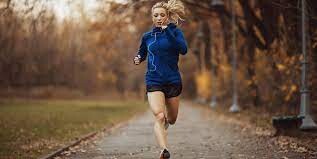
Douglas can relay these details, thanks to a photo Stacey took, but he hadn’t noticed them—not on the first loop around the lake, or the third, or any other one. Without making a conscious decision to do so, he’d been entirely focused on his run.There are far loftier examples of intense concentration in running history. In the 2004 Olympic marathon, Deena Kastor didn’t realize she was in the bronze-medal position until the final 100 meters. During the 2018 Boston Marathon, which was run in an apocalyptic rain-and-wind storm, eventual winners Des Linden and Yuki Kawauchi didn’t know they had taken the lead until well after doing so.
Some of this seeming tunnel vision stems from runners focusing on what are known as “process goals,” such as running the next mile as well as they’re able, rather than thinking about outcomes, such as winning an Olympic medal. Also, during hard efforts, seasoned runners are good at suppressing strong emotions like anxiety that can lead to focusing on distracting and irrelevant information.
Let’s look in more detail at how successful runners hone their ability to concentrate on the task at hand to the point of seeming oblivious to much of what’s going on around them.
Throughout his career as one of the world’s leading exercise psychology researchers, Noel Brick asked athletes ranging from beginners to Olympians a simple question: What were you thinking? The answers provide fascinating insight into what athletes think about during peak performances. Brick has lost count of the number of times he has sat captivated as athletes recounted how they struggled with, and overcame, the challenges they experienced when racing and training.
One of the most common themes that emerges is that running fast is incredibly hard, both physically and mentally. This is true for novices and Olympians alike. But what separates the best from the rest is their ability to extract exceptional performances through a process of deep focus and concentration. These athletes know what they need to focus on and, more importantly, have the mental tools in their kit to do it. Take this example from an elite cross-country runner whom Brick interviewed following one of her toughest races:
I went through two and four [kilometers] on the back of the leading group. And going into the third lap, I started falling off the leading group. And it was everything for me to stay attached [because I was distracted by a spectator] and suddenly I just lost a second’s concentration, and it was like, “Don’t lose concentration, concentrate now,” and I covered the move. I finished second in that race. But if I had fallen off that group, I wouldn’t have gotten back on and that would have been it.
Triumph in a footrace—however that’s defined for you—often requires winning the battle that takes place within your mind. For athletes like the one quoted above, this means resisting a range of different distractions. Some are external, like a spectator who momentarily captures the athlete’s attention. Others are internal thoughts, like worry or the sometimes-irresistible urge to stop or quit.
So how do they do it? What tools do athletes use to remain focused and on task? Just as important, how do they get their concentration back if they lose it?
The first answers to these questions began to emerge in the late 1970s. Across a series of studies, psychologist William Morgan and exercise physiologist Michael Pollock interviewed recreational and elite distance runners to discover what they focused on during training and competition.
Their findings revealed that national- and world-class marathoners adopted what Morgan and Pollock called an “associative strategy.” As described in a classic study, these runners “paid very close attention to bodily input such as feelings and sensations arising in their feet, calves, and thighs, as well as their respiration; . . . [their] pace was largely governed by ‘reading their bodies’; . . . [and] they constantly reminded or told themselves to ‘relax,’ ‘stay loose,’ and so forth.”
The details of what elite runners paid attention to when racing surprised the research team. Up until this point, the consensus was that it was best to tune out from bodily sensations. After all, if running fast was hard, then surely paying less attention to physical feelings would be better than focusing in on them.
But Morgan and Pollock soon realized that these elite marathoners were different from the recreational athletes they usually interviewed. Not only were their physical performances miles apart, literally and figuratively; so, too, were their mental strategies.
What non-elites preferred to do was adopt a range of distraction strategies. In other words, they preferred to tune out from the physical sensations they experienced. They did so by thinking about past memories, imagining listening to music (remember, this was pre-earbuds), singing, or, for one runner, visualizing stepping on the faces of two coworkers she detested.
With these two separate ways of thinking, we’ve now got a dilemma. What is the best way for athletes to think? Which type of strategy helps most: tuning out or tuning in?
These were the questions that grabbed Brick’s attention when he began to plot his PhD research in 2012. By 2014, he had published a review of 112 studies on the attentional strategies of endurance athletes—that is, what they focus their attention on. In it, he sifted through the evidence supporting distraction, on the one hand, and association, on the other.
Before we can answer this question, we first need to consider a much simpler one. What do we mean by best? If better—that is, faster—performance is the goal, then athletes probably want to avoid being distracted at all costs.
But that’s not the full picture. In Brick’s review, he noted that distractions, such as daydreaming, conversing with a training partner, or focusing on scenic views, can help to reduce boredom and make a run more enjoyable. In other words, when the outcomes are less about going faster and more about feeling better, then distraction is best. A recreational runner whom Brick interviewed put it like this:
My mind just wanders whenever I’m out. It’s as if it’s a freedom. It’s my time and it’s me thinking about my things, you know? You’re not sitting in the house or you’re not working or you’re not thinking about things. You’re just thinking about your things.
What these insights tell us is that distraction has its place in our mental tool kit. It can be a useful way to manage our emotions, especially when we need to switch off, chill out, and get away from it all.
One great way to do this is to spend time in natural spaces, such as the countryside or a park. Studies have found increased brain activity relating to calmness and meditative thoughts when people exercise in a park versus crowded urban settings. In the latter, brain activity linked with negative thoughts such as rumination has been found to be much higher than when people exercise in more natural settings.
But this is only half the story. Although positive distractions like nature have benefits, performing to the best of their capabilities is a more immediate priority for athletes during competition. In these instances, tuning in might be a better approach than tuning out.
When Brick dug deeper into the results of more than 35 years of research, he soon discovered that the effects of association strategies on performance were much more nuanced than previously thought. When athletes focused excessively on bodily sensations like breathing or muscle soreness, their performance suffered. Doing so made tasks feel harder. In contrast, strategies like keeping relaxed or optimizing movement technique improved performance, sometimes without increasing how hard a task felt.
An intricate study involving 60 experienced runners helps to explain some of these nuances. These individuals completed three 5-kilometer runs, once on a laboratory treadmill, once on a 200-meter indoor running track, and once on a flat outdoor road route. Half the runners—the association group—were asked to tune in every 30 seconds during each run to the heart rate and pace readings on their watch. The other half were assigned to a distraction strategy of listening to music through headphones. All participants were instructed to run as fast as they would like during each 5-kilometer run. The research team also recorded how good or bad runners felt, how hard each run was perceived to be, and their final 5-kilometer times.
In line with research on other distraction strategies, the findings revealed that those who listened to music felt calmer and more tranquil during their runs. Runners also felt better when running outdoors than they did in the indoor settings.In terms of performance, however, runners in the heart rate and pace-monitoring group ran faster than the music group by an average of 1 minute and 47 seconds. In a sport in which participants obsess over every second of a race time, that’s a significant difference!
Just as interesting were the effects of location on performance. Although 5-kilometer times were slower on the treadmill than both the track (by 3 minutes and 46 seconds) and the road route (by 4 minutes and 2 seconds), running on the treadmill felt hardest. This was most likely because of the treadmill environment, devoid of mental stimulation or distraction. In this setting, athletes probably focused on little else other than how tough their run felt. In contrast, running the outdoor road route, the fastest location of all, felt easiest.
Periodically monitoring bodily sensations and tuning into pace allows for better performance. In contrast, tuning out might result in a slower pace but can help make an activity feel more pleasant. In effect, our focus matters, and when best performance is a priority, then having the mental skill to focus effectively is essential.
Login to leave a comment
Olympian Deena Kastor named guest speaker for 2024 Bermuda Triangle Challenge
Olympic medal-winner Deena Kastor will be the honorary guest speaker at the 2024 Chubb Bermuda Triangle Challenge.
Kastor won a bronze medal in the marathon at the 2004 Olympics in Athens and also won the 2005 Chicago Marathon and the 2006 London Marathon, in which she set an American record of 2hr 19min 36sec that stood unbroken until last year. She was also a four-times Southeastern Conference champion and an eight-times All-American.
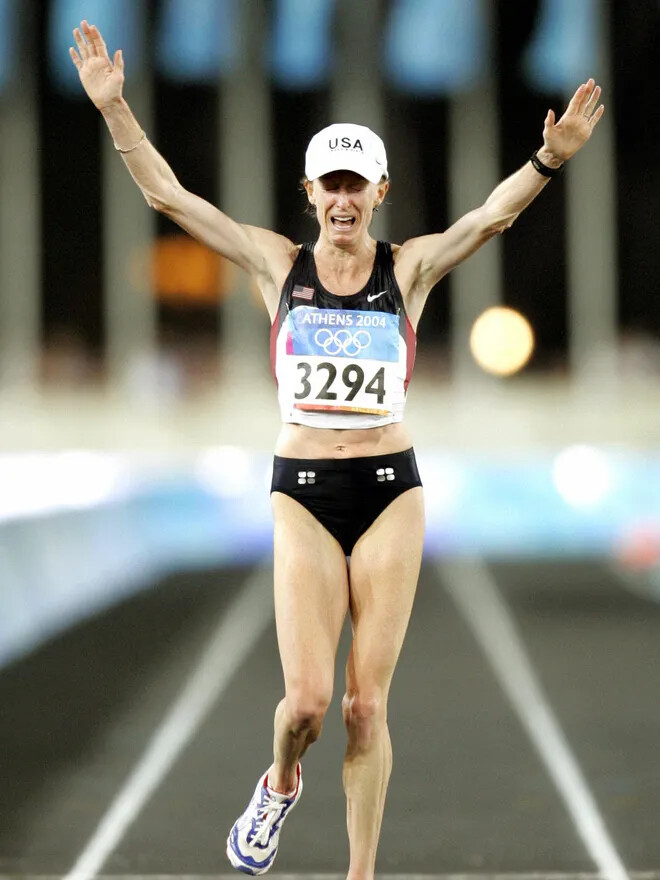
Also a previous US record-holder in the women’s half-marathon, 10,000 meters and 5,000 meters, Kastor still competes at a high level and is holds the US women’s masters marathon record of 2:27:47, which she achieved at the 2015 Chicago Marathon.
She also picked up the 2003 Jesse Owens Award as the top female track and field athlete in the US, the USATF Runner of the Year prize in 2001, 2003, 2004 and 2008, as well as the CC Jackson award in 2002, 2003 and 2004.
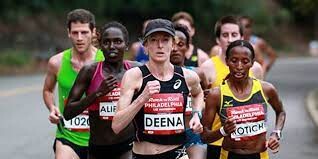
Kastor, 50, has also authored a New York Times bestselling book, Let Your Mind Run, in which she documents her journey to becoming a world-class Olympic runner, and is thrilled to be heading to the island.
“I am excited to have been selected as the ambassador and guest speaker for the 2024 Chubb Bermuda Triangle Challenge,” she said.
“I look forward to my first visit to the island, running the roads of Bermuda and meeting the event’s enthusiastic participants, spectators, sponsors and volunteers of Bermuda. I can’t think of a better way or a better place to spend a three-day weekend.”
Hazel Clark, Global Director of Sales and Business Development at the Bermuda Tourism Authority, and herself a three-times US Olympian, is pleased that her former team-mate is heading to Bermuda.
“It is with great pleasure that I welcome my Olympic team-mate Deena Kastor to Bermuda and to the 2024 Chubb Triangle Challenge,” Clark said.
“Allowing all of Bermuda the opportunity to meet and interact with another world-class athlete is what the Bermuda Tourism Authority has been working to develop and leverage through our Sports Tourism strategy, as part of the National Tourism Plan.
“During my track career, Deena was well known in the US track and field world as the foremost long-distance female runner in the early 2000s. Her drive and accomplishments inspired each of us to work harder and strive towards the continuous pursuit of our own personal goals.”
Samantha Froud, Chubb’s chief administration officer, Bermuda Operations, said: “Chubb is excited to welcome an athlete of such amazing talent and accomplishments of Deena Kastor to the 2024 Chubb Bermuda Triangle Challenge. As the title sponsor, we are pleased not only to host an Olympic athlete of this calibre at this international event but enable all the participants to meet and engage with Deena.
Next year’s Chubb Bermuda Triangle Challenge will begin on January 12, with the Butterfield Mile and continues on January 13 with the BF&M 10K Run/Walk. The event concludes on January 14 with the PwC Bermuda Marathon, Bermuda Half-Marathon and Bermuda Half-Marathon Relay.
by Ross Clarke
Login to leave a comment
Bermuda Triangle Challenge
Surrounded by crystal clear waters warmed by the Gulf Stream, Bermuda is the ideal winter time destination for the active minded traveler. With its lush foliage and pastel colored buildings, Bermuda is one of the most beautiful places on earth. A short flight of 2-hours or less from most US East Coast cities and Toronto, Bermuda only feels like it’s...
more...Sara Hall set a new American master record in Boston
Sara Hall just set a new American Record in the Marathon for the Masters division.
Hall now 40 years old finished the Boston Marathon in 17th place in 2:25:48.She of course won her division.Old American record was 2:27:47 by Deena Kastor in 2015.
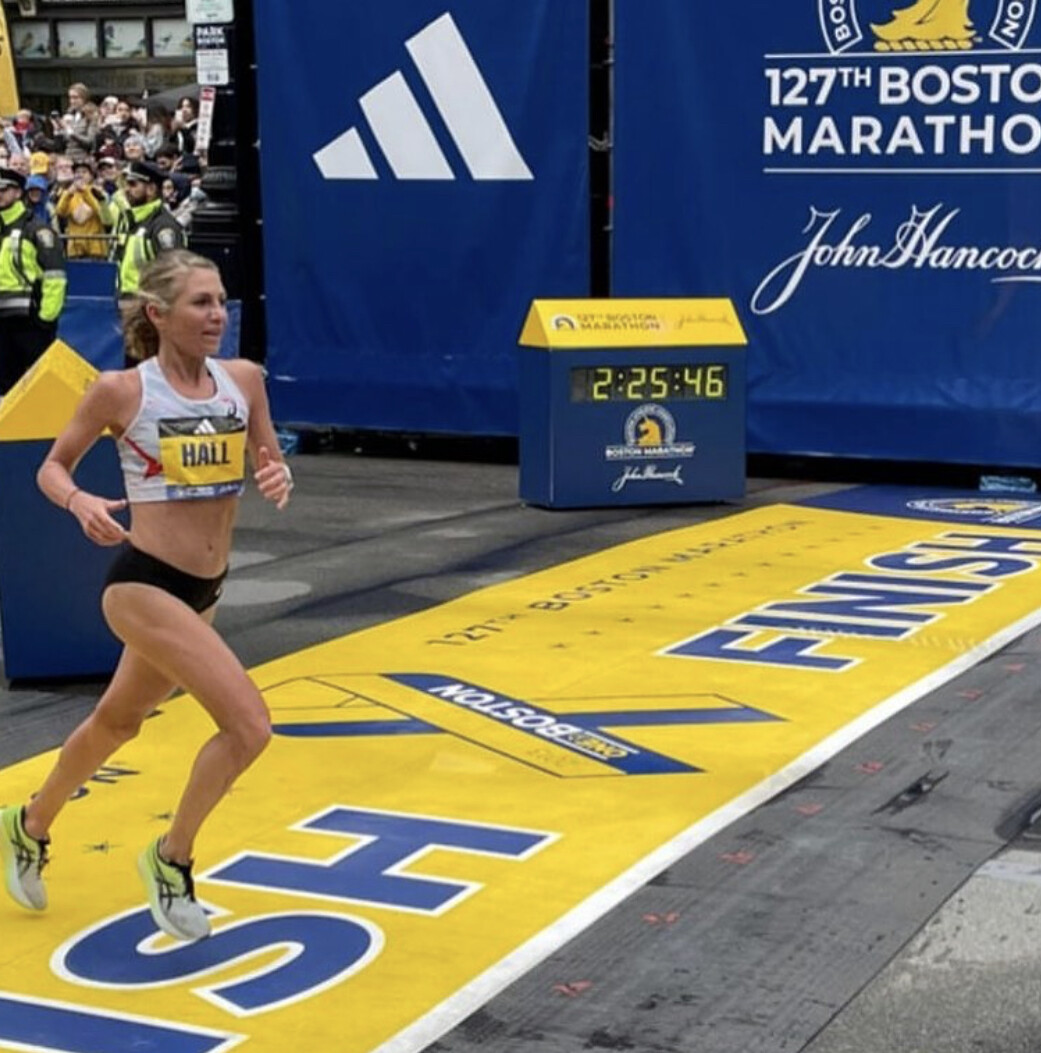
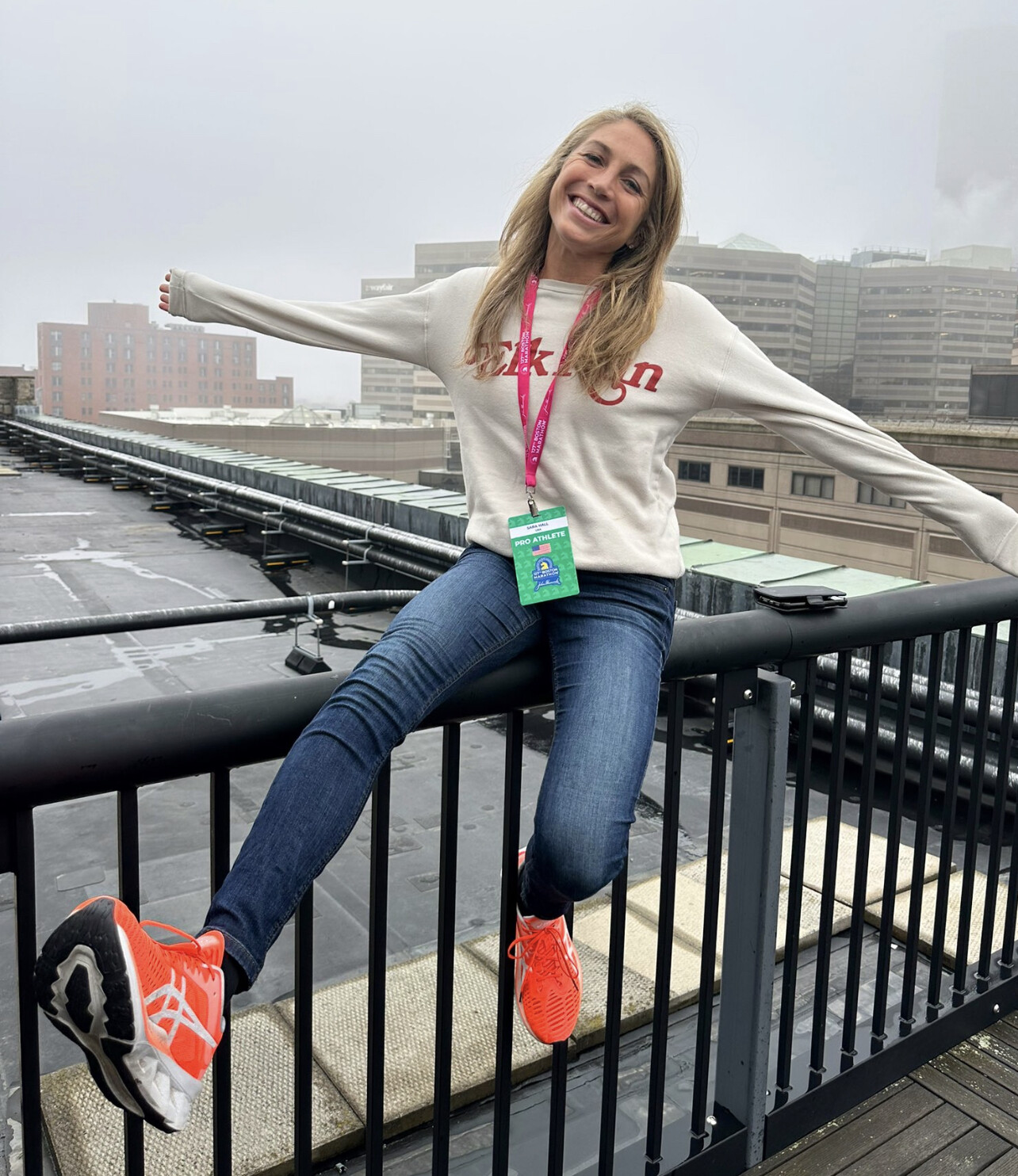
Login to leave a comment
Boston Marathon
Among the nation’s oldest athletic clubs, the B.A.A. was established in 1887, and, in 1896, more than half of the U.S. Olympic Team at the first modern games was composed of B.A.A. club members. The Olympic Games provided the inspiration for the first Boston Marathon, which culminated the B.A.A. Games on April 19, 1897. John J. McDermott emerged from a...
more...Eilish McColgan (30:00.87) and Alicia Monson (30:03.82) Break National Records At The TEN
The British and American records in the women’s 10,000 meters both went down late Saturday night in California as Eilish McColgan outdueled Alicia Monson over the final lap of The TEN in San Juan Capistrano. McColgan, the Commonwealth Games champion at 10,000 who is building up for her marathon debut in London on April 23, was only added to the field this week but felt confident in her fitness after five weeks of altitude training in Colorado. It proved an inspired decision as she ran 30:00.87 to narrowly break Paula Radcliffe’s British record of 30:01.09 set in August 2002.
A few seconds behind McColgan, Alicia Monson nabbed her second American record of 2023, running 30:03.82 to smash the previous record of 30:13.17 set by Molly Huddle in the 2016 Olympic final in Rio. Three weeks ago, Monson ran 8:25.05 at the Millrose Games to break the American indoor (and overall) record for 3,000 meters.
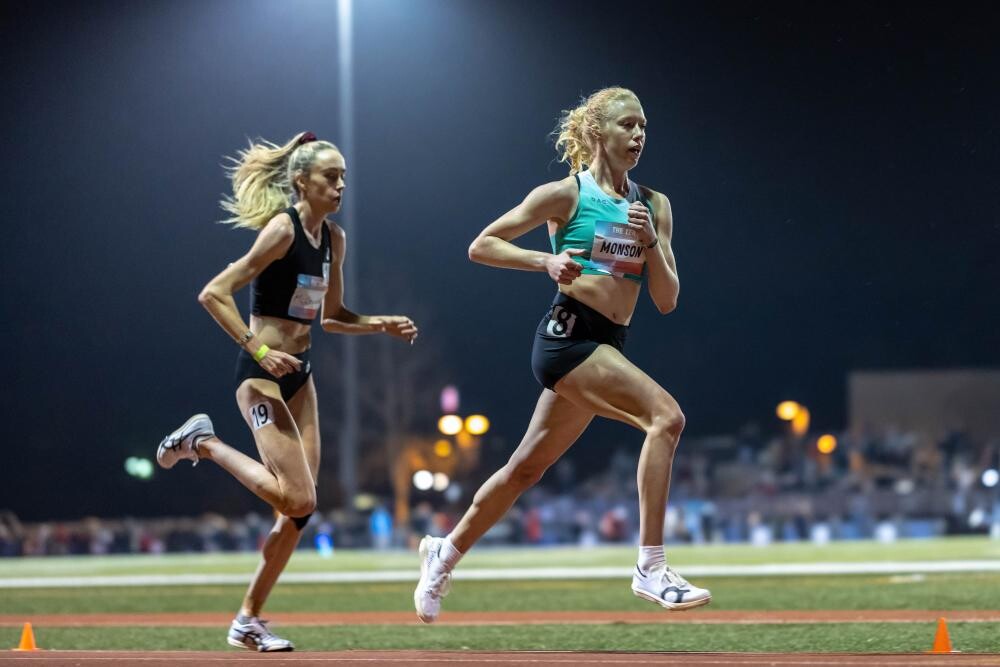
Both women were also safely under the 30:40 standard for the 2023 World Championships and 2024 Olympics on a good night for running fast (50-degree temps, still conditions).
Monson and her camp had billed the race as an American record attempt and they enlisted her On Athletics Club teammate Josette Andrews (a 14:51 5k runner) to handle pacing duties, along with Eleanor Fulton. When Andrews dropped out at 5k (15:09 for McColgan and Monson), they were actually a few seconds behind AR pace, but Monson took over and righted the ship, dropping the pace from 73-second laps to 72’s, then 71’s. By the bell, which Monson reached in the lead thanks to a 70.45 penultimate lap, the question was not whether the AR would go down, but whether either woman would break 30:00 – and of course, who would win the race?
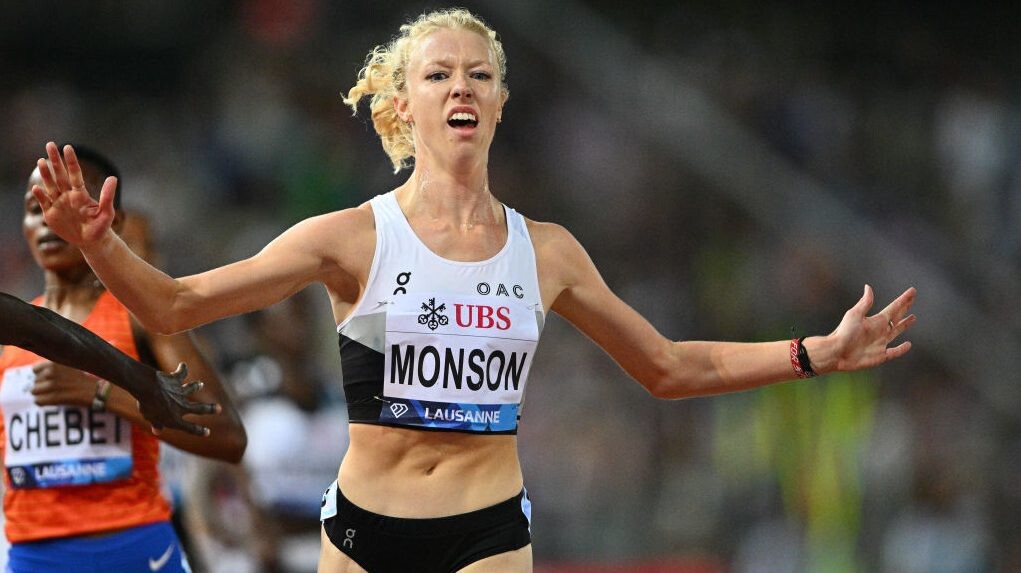
McColgan, who had clung faithfully to Monson throughout the race, finally went wide on the backstraight of the bell lap and passed Monson, and the American had no response as McColgan powered to victory with a 64.87 last 400m. Monson could not match that speed, closing out her effort in 67.99, and though she did not win, her American record was very well-deserved after so much grinding from the front.
No one else earned the World/Olympic standard, but a trio of Americans earned big personal bests in 3rd-4th-5th. Running just her second 10k, 2021 NCAA 5k champ Elly Henes won the battle for 3rd in 30:48.26 to edge 2022 Worlds team member Natosha Rogers (30:48.69) as both women moved ahead of Emily Sisson (30:49.57) and Deena Kastor (30:50.32) into 6th and 7th on the all-time US list. Rogers’ Puma Elite teammate Fiona O’Keeffe also got a pb in 5th, running 30:55.05 to become the 11th American woman to go sub-31.
Results (Analysis at bottom)
1 Eilish McColgan Asics 30:00.86 #$WRLD
2 Alicia Monson On Athletics Club 30:03.82 #$WRLD
3 Elly Henes Adidas 30:48.26
4 Natosha Rogers Puma Elite 30:48.69
5 Fiona O’Keeffe Puma Elite 30:55.05
6 Laura Galvan Hoka 31:04.08
7 Dominique Scott Adidas 31:14.00
8 Carrie Verdon TEAM Boulder 31:52.94
9 Susanna Sullivan unattached 31:55.80
10 Amy Davis-Green Hansons-Brooks ODP 32:10.59
11 Katie Izzo Adidas 32:22.47
12 Jeralyn Poe Tracksmith 32:39.10
Men’s race
The men’s race came down to a battle of the last two US 10,000-meter champions: Woody Kincaid and Joe Klecker. Just as he did five weeks ago over 5,000 meters in Boston, Kincaid earned the victory, though he made his move slightly earlier this time around, taking the lead with 900m to run and holding off Klecker on the last lap, closing in 55.96 to Klecker’s 56.92 as Kincaid ran 27:06.37 to Klecker’s 27:07.57. Both men ran personal bests (they now sit #5 and #7 on the all-time US list) and both hit the 2023 World Championship standard of 27:10, but neither was able to earn the Olympic standard of 27:00.
Klecker and Kincaid both went in with the aim of hitting the Olympic standard and joining Grant Fisher, Galen Rupp, and Chris Solinsky as the only American members of the sub-27:00 club. Klecker’s OAC teammate Ollie Hoare was the main pacemaker (though there were several: Ehab El-Sandali, Amon Kemboi, and Athanas Kioko all helped out) and he took them through 5k in 13:35, at which point British Olympian Sam Atkin, running with the lead pack, surprisingly dropped out.
When Hoare stepped off after covering 6400m in 17:23.90 (27:11 pace), sub-27:00 was within striking distance. But Klecker, despite working hard, could not increase the pace, and Kincaid showed no interest in sharing the lead despite Klecker motioning for him to do so.
By a mile to go, Klecker and Kincaid had dropped everyone else, and Kincaid, sensing the World standard slipping away, hit the front with 900 to go. Klecker stuck right with him, however, and it wasn’t until the final turn that Kincaid was able to gain real separation as both men closed well to get under the World standard – though not the Olympic standard.
Kioko, who stayed in the race, was the best of the rest, running 27:23.84 for 3rd, holding off Conner Mantz, who ran 27:25.30 in the midst of his Boston Marathon buildup (just .07 off his personal best from this meet last year).
Results (analysis below results) *Lap by lap splits
1 Woody Kincaid Nike 27:06.37 WRLD
2 Joe Klecker On Athletics Club 27:07.57 WRLD
3 Athanas Kioko pacer 27:23.84
4 Connor Mantz Nike 27:25.30
5 Jonas Raess On Athletics Club 27:26.40
6 Ren Tazawa Komazawa Univ 27:28.04
7 Nils Voigt Puma 27:30.01
8 Sam Chelagna US Army WCAP 27:38.02
9 Luis Grijalva Hoka 27:42.56
10 Alex Masai Hoka NAZ Elite 27:42.80
11 Wesley Kiptoo Hoka NAZ Elite 27:45.81
12 Ben Flanagan On Running 27:49.67
13 Kanta Shimizu Subaru 27:51.23
14 Benjamin Eidenschink unattached 27:51.74
15 Tatsuhiko Ito Honda 27:54.64
16 Aaron Bienenfeld unattached 27:55.96
17 Ahmed Muhumed unattached 27:56.99
18 Frank Lara Altra/Roots Running Project 28:00.75
19 Emmanuel Bor unattached 28:01.09
20 Alberto Gonzalez Mindez Guatemala 28:30.63
21 Zach Panning Hansons-Brooks ODP 28:35.52
Login to leave a comment
The Ten
The world's fastest 10,000m races each year have taken place in a sleepy little coastal town in southern California. More national records were broken in 2022 than any other race on the planet as the best in the western hemisphere launched into rarified zones of time and space. The best return to San Juan Capistrano this year to cap off...
more...New study suggests running helps your gaming
Have you ever wondered why your gaming keeps getting in the way of your running? Could it be because running makes you good at it? Asics, the Japanese sporting brand, invited 77 competitive gamers from around the world who specialize in games that rely on their cognitive function, such as chess, poker and e-sports, to begin a physical training program–and they found some surprising results.
The study was carried out over a four-month period, as of the 77 study subjects followed a training program designed by international runner-turned-coach Andrew Kastor (husband of Olympic medallist Deena Kastor), which included 150 minutes per week of medium-impact strength and run-based training.
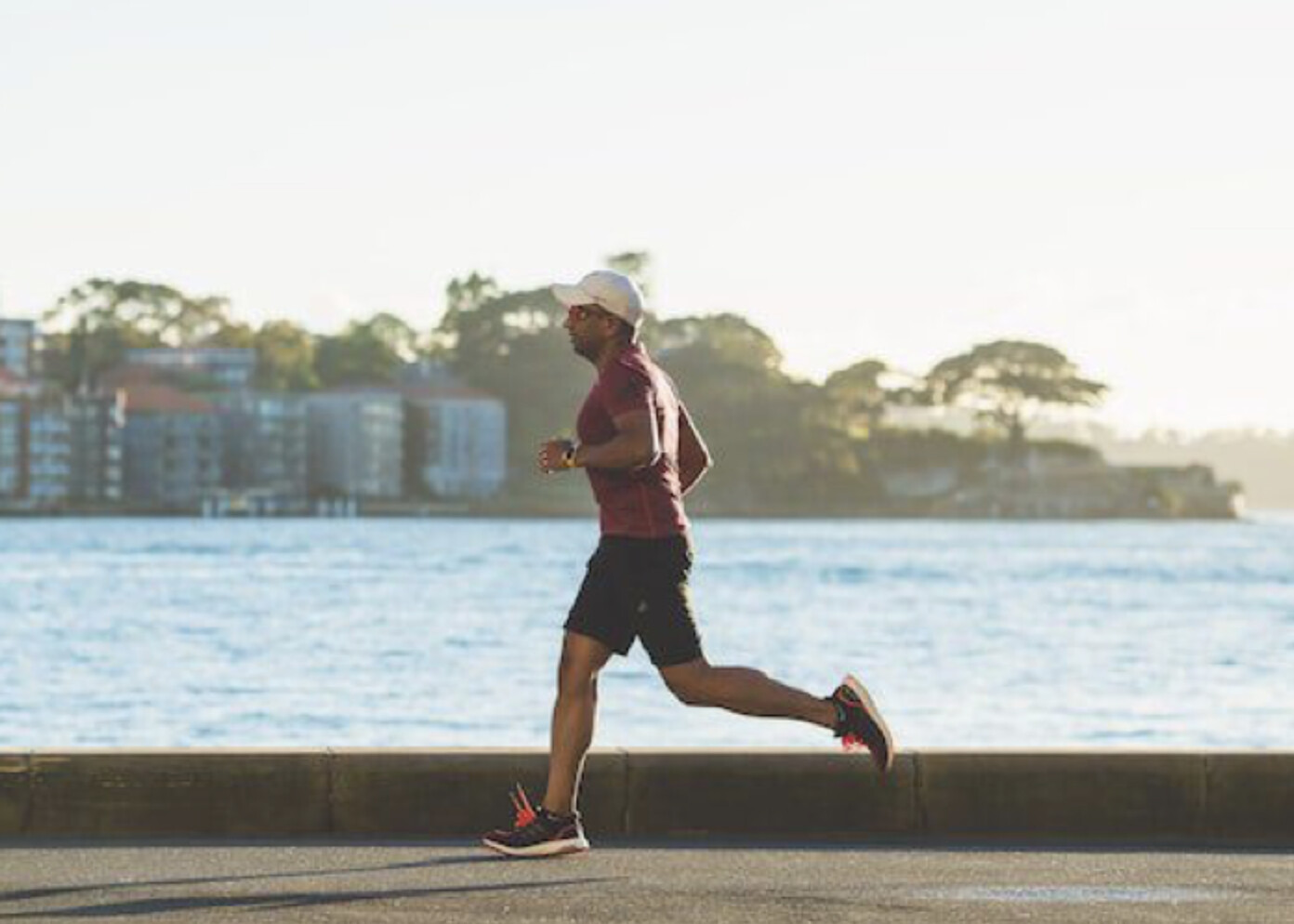
Renowned mind and movement researcher Brendon Stubbs of King’s College in London led the experiment, measuring the mental improvement of participants based on their performance on brain games, cognitive tests and well-being questionnaires over the course of the study.
Stubbs found that after found months, the previously inactive gamers increased their cognitive function, well-being and gaming performance. “The results show significant improvements in their cognitive functioning, including concentration levels and problem-solving abilities,” Stubbs reported.
Participants’ international gaming ratings improved by 75 per cent
Mental gamers’ cognitive function was boosted by an average of 10 per cent, with problem-solving skills improved by nine per cent, short-term memory increased by 12 per cent, and processing speed and alertness improved by 10 per cent.
Confidence levels increased by 44 per cent.
Focus improved 33 per cent and anxiety levels plummeted by 43 per cent
Players’ mental well-being was significantly better, with average mental state scores improving by 31 per cent
We all know that running is good for our mental and physical health, but the impact on acquiring information has been less well explored. The goal of the study was to examine the effects running has on people who depend on their cognitive abilities (like competitive gamers).
“Running stimulates cell growth in the brain and rapidly increases blood flow to the hippocampus and prefrontal cortex, mechanisms that enable us to better retain memories, process information, and problem solve quickly,” said Stubbs. “If running can significantly increase the mental performance of professional mind gamers, imagine what it could do for the rest of us.”
Inspired by the experiment, a camera crew followed four of the 77 competitive gamers as they exercised regularly to improve their (gaming) rankings.
The documentary, called Mind Games: The Experiment, documents the journeys of four gamers who specialize in chess, mahjong, poker and e-sports while competing in professional tournaments around the world. The documentary is currently available on Amazon Prime Video.
by Running magazine
Login to leave a comment
5 Reasons Why Athletes Can Embrace Aging
My grandfather lived until he was 94. By the time he died in 2009, he was the sole survivor of 13 siblings. His secret? For as long as I can remember he used to say, with a gusto I have yet to match, "You just have to keep moving!" And with every passing birthday he'd also remind me: "Getting older is better than the alternative."
Those two pearls of wisdom have continued to serve me well. But it has also occurred to me that since I became a masters runner (defined as 40 and older), I've focused primarily on the negative aspects of aging-albeit, mostly factors that my grandfather never had to experience. Women face a lot of challenges in mid-life that make it hard to maintain a cheery disposition, even as that simple advice to "keep moving!" holds true.
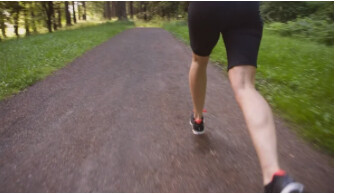
The decline of estrogen levels has an effect on just about everything, including mood, sleep, body composition, bone density, muscle mass, and more. It's a lot to navigate-especially for those of us who've been athletes for most of our lives. We have to adjust expectations and relearn how to properly train our bodies that have new needs and capabilities.
It's natural to fixate on what we're potentially losing as the years go by. But what if we explored the ways that aging serves us, instead? I'm not trying to pollyanna our way out of perimenopause, but taking a little time to reflect on the happier sides of getting older might entice some of us to relish this phase instead of fear it.
So I called Selene Yeager, host of the podcast Hit Play Not Pause and content manager for Feisty Menopause, a site that covers training, nutrition, and lifestyle advice to help women maximize performance during menopause and beyond. She shared some expertise and insight on how athletes can find hope and enjoyment during the second half of their active lives. Out of that conversation and many others over the years with runners who have experienced longevity in the sport, I came up with five reasons to embrace masters running.Perspective.
It is impossible to acknowledge or appreciate the bigger picture when you're younger. Every botched workout, every missed PR, every off-pace long run seems like a big deal. But then life expands in wild ways. Whether it's a spouse or children or career or aging parents, everybody seemingly needs something from you for quite a while.
The upside? Those important people who need you can also put performance into perspective. Before running the Berlin Marathon in September, Keira D'Amato, 37, who was trying to improve her American record during the race (2:19:12, which has since been broken by Emily Sisson at the Chicago Marathon in 2:18:29), remarked that while her goals are a priority, her results actually don't matter much in the grand scheme.
"At the end of the day, no matter what happens, I'm still going to come home to two kids who will ask me what's for dinner," D'Amato said during a pre-race interview.
Similarly, Yeager remembers when her daughter was younger, she felt a pivot in her outlook, too. "You're not sitting there ruminating about yourself anymore-it's a similar sort of transition phase in a woman's life that can bring that better head space."
The even better news is that eventually a lot of those people become less dependent as we enter midlife, leaving new-found time to focus more on your own endeavors.
"The shedding of those ovarian hormones that have you nurturing everybody but yourself gives you the brain space to look at what you need and want," Yeager says. "And that is a great thing. Not that nurturing is bad, but it's time for you."Liberation.
The older we get, the less we care. In a good way. In the best ways, really. As Yeager puts it, "You can say it however you want, but you get to this point where you don't actually give a f*ck and it's very liberating and empowering."
You don't care what people think when you try something new, like mountain racing. You don't care what your time is and realize that nobody else does either (spoiler alert: nobody ever did care what your personal bests or weekly mileage were). You start to realize that the performances and goals can be broader and more creative than ever before-your effort can go toward something besides qualifying for the Boston Marathon, for example.
Look no further than somebody like Deena Kastor, who won the Olympic marathon bronze medal in 2004. Now 49, she still trains at a high level, but has continually redefined what success means to her, whether it's going after age-group records or racing all the World Marathon Major events, a goal she just completed when she finished the Berlin Marathon a few weeks ago, in 2:45:12.
"There's lots of empowerment that comes with midlife, especially around 50," Yeager says. "It takes some time and it might take hormonal changes-I don't know; they're still doing their research-to really accept and embrace that you are the only one thinking about you as much as you're thinking about you."Community.
Not long ago I spoke with Kathryn Martin, who at 70 years old had just taken a five-year break from competing on the masters track scene. She has two dozen age-group American records and a dozen world records, but was feeling a little burned out from the high-intensity pursuits. During that break, she didn't stop running, but she did cease serious training. What brought her back? Aside from a renewed desire to tackle more records, she missed all the friends she made on the circuit.
"What I really missed was the camaraderie. Masters runners are so unique," Martin told me. "You can be warriors on the track, but prior to and immediately afterward, everybody's hugging. We're just so happy to see each other and be in each other's company."
While you don't have to grow older to appreciate the running community, Martin is right. The masters category hits a little different. Yeager sees it, too-and hears about it from plenty of women she interviews.
"Even if you're really competitive still, there's a genuine appreciation for your peers," Yeager says. "We've seen a lot of shit in our lives at this point and that creates a lot of camaraderie. You're also just more secure in your skin and not having all your self-worth wrapped up in beating another person."Technology and research.
Sara Hall, 39, is the poster woman for longevity. She started having the best races of her career in her mid-30s, now one of the fastest U.S. women at the marathon (2:20:32). Many factors have worked in Hall's favor, but one thing she's continually given credit to is the advancement in shoe technology-not just the way in which they've elevated everybody's performances, but also how they've reduced the pounding on her legs and allowed quicker recovery between big efforts.
The generation entering its 50s now is the first to grow up in a post-Title IX world, with increased access to sports for their entire lives. As Yeager says, we aren't in the "Golden Girls" era anymore. Women remain competitive and active for far longer than they ever have not only thanks to that critical piece of policy, but also because of the technology (think: gear, nutrition, recovery tools, etc.) that keeps us healthier, longer. The research on all phases of the female athlete lifecycle still has plenty of catching up to do, but as it advances and we know better how to care for our maturing bodies, the possibilities will only increase.
"Everything we thought we knew about women after they had babies or when they go through the menopause transition-really about women at any stage-is being rewritten and discovered," Yeager says. "It's a huge thing, when performance and fitness is exponentially different because we've started and built it all from the time we were adolescents, many not stopping during pregnancy, either. Are you kidding? We're just different human beings than the women back in the Golden Girl time."Reinvention.
Ever want to try different distances? Different terrain? Are you triathlon curious? Have you heeded the often repeated advice to start lifting weights (seriously, you need to lift weights)? After all is said and done, if you're still not convinced that growing older as a runner can become an equally enjoyable experience, then reinvent yourself. Try something new and see the comparisons to your former self disappear.
Yeager, for example, didn't start CrossFit until she was 48 years old, when "it was time to start 'lifting heavy sh*t' as they say.'" Desiree Linden, 39, winner of the 2018 Boston Marathon, has said she's looking forward to exploring trails and ultra-distance races after she retires from competitive road racing.
"If you are open to expanding your horizons, it makes all the difference in the world," Yeager says. "You have nowhere to go but up. You're learning new things and experiencing something for the joy of it again. That's enormously positive."
It looks like my grandfather had a point. All you have to do is keep moving
by Trail Runner Magazine
Login to leave a comment
Emily Sisson sets a new American record in the marathon today in Chicago. clocking 2:18:29!
Three days shy of her 31st birthday and with only one previous marathon on her resume, Emily Sisson took to the streets of Chicago and lowered the American women’s marathon record by 43 seconds, becoming the first American woman to run a marathon in less than 2 hours 19 minutes.
Conditions on the Chicago Marathon’s relatively flat course were ideal, with Sisson — who won the 10,000 at the U.S. Olympic Track and Field Trials last summer — finishing second to Ruth Chepng’etich. The Kenyan repeated as the Chicago champion with a time of 2:14:18, fractions of a second off the world record of 2:14:04 set by Kenya’s Brigid Kosgei in the 2019 Chicago Marathon.
Sisson finished in 2:18:29, taking 43 seconds off the American record set by Keira D’Amatoin January in Houston. Before D’Amato, the record had stood for 16 years; now it has been lowered twice in 10 months, something D’Amato expected.
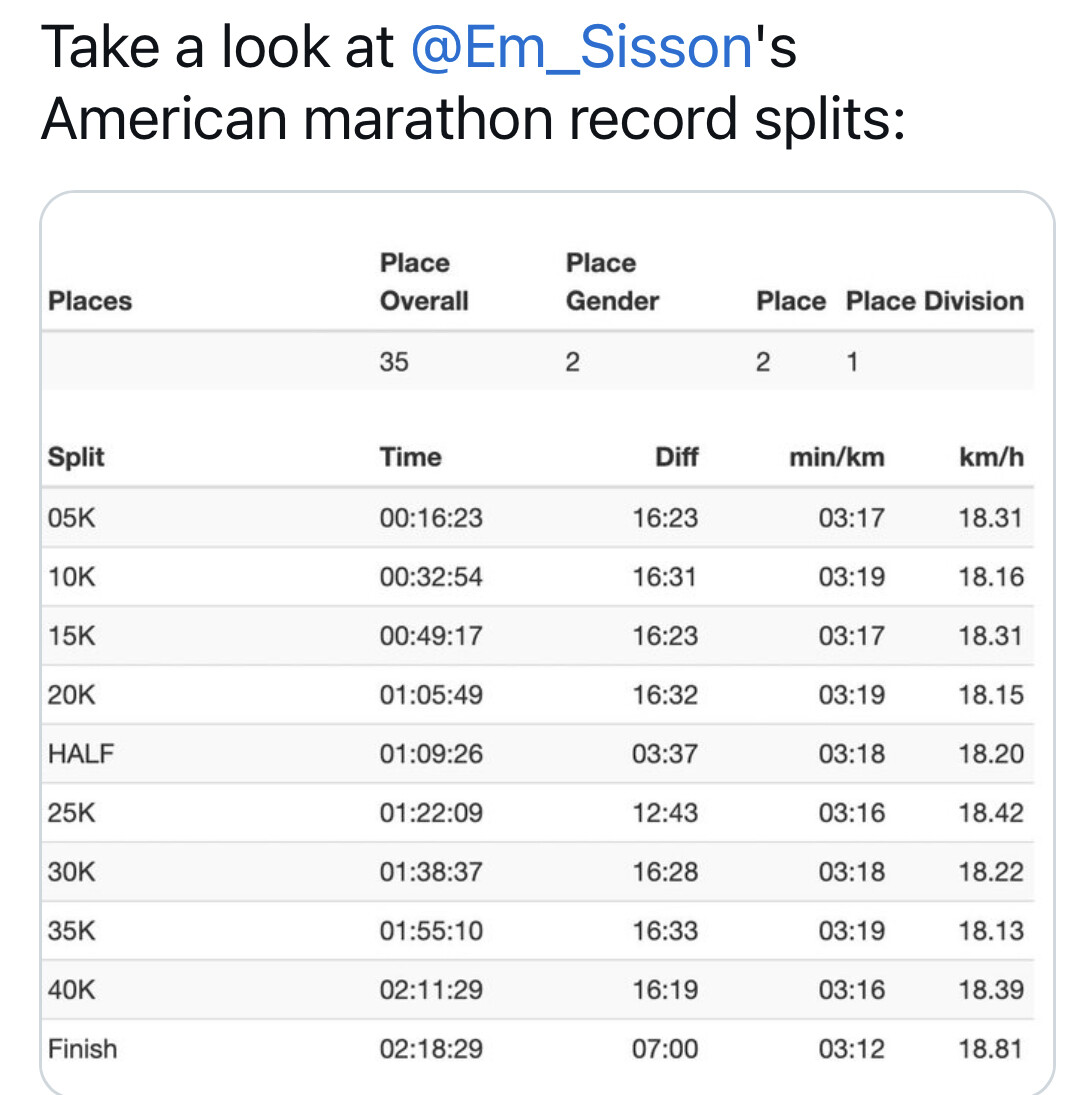
“There’s a number of American women that are also gunning for that record, so I think if I don’t lower it myself, it’s not going to be mine for very much longer,” she said before the Berlin Marathon two weeks ago. D’Amato, who did not run in Chicago, joined Sisson at the finish line, along with Deena Kastor and Joan Benoit Samuelson — women who held the American record before her.
“It’s amazing,” Sisson said, according to NBC Chicago. “I mean, the women standing here today, they’ve all accomplished so much, so just to be amongst them is an incredible honor.”

Sisson said she wasn’t aware that the record was in reach until very close to the finish line.
Emily Sisson (born October 12, 1991) is a professional runner for New Balance in Phoenix, Arizona. Emily Sisson was 9th at the 2017 London IAAF World Outdoor Track and Field Championships for 10,000 meters, and won the USATF road 10k Championships in 2016 and 5k in 2018. In the 2019 London Marathon, her first try at the distance, she placed 6th in a time of 2:23:08.
In December 2020, she ran the Valencia Half-Marathon in 1:07:26, narrowly missing the American record set by Molly Huddle in Houston on January 14, 2018. Sisson subsequently qualified to compete at the 2020 Olympics in the 10,000 m run, by coming in 1st place at the US Olympic Trials; she finished 10th at the event. On May 7, 2022, clocking in at 1:07:11 she broke the USA woman's half marathon record at the 500Festival Mini-Marathon in Indianapolis, Indiana.
On October 9, 2022, she broke the American women's marathon record at the 2022 Chicago Marathon, running 2:18:29 to finish 2nd
Login to leave a comment
Bank of America Chicago
Running the Bank of America Chicago Marathon is the pinnacle of achievement for elite athletes and everyday runners alike. On race day, runners from all 50 states and more than 100 countries will set out to accomplish a personal dream by reaching the finish line in Grant Park. The Bank of America Chicago Marathon is known for its flat and...
more...Results and Highlights From the 2022 Chicago Marathon
Ruth Chepngetich narrowly missed the world record on the women’s side, while Benson Kipruto It was a terrific day for racing at the 2022 Chicago Marathon and the performances proved that. Over 40,000 runners took to the streets of the Windy City on Sunday morning on what turned out to be a fast day all around.
There was an American record and nearly a world record on the women’s side, while the men’s race saw a good battle between a number of the the world’s top marathoners.Chepngetich Narrowly Misses World Record, Repeats as Champion
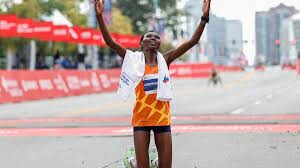
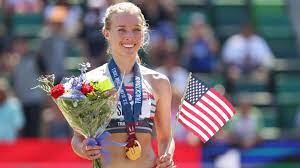
Ruth Chepngetich of Kenya went out guns blazing and clocked an incredible 2:14:18 to win the Chicago Marathon in the second-fastest time in world history, just 14 seconds off Brigid Kosgei’s world record which was also set in Chicago.
She went out super hot in 65:44 at the halfway mark—on pace for a 2:11!—and though she slowed after that, she was still on world record pace through 40K before missing the time.Benson Kipruto Breaks Away for the Win
With a late surge in the 25th mile, Benson Kipruto of Kenya won the 2022 Chicago Marathon in 2:04:24, a personal best and the fastest winning time in Chicago since 2014. He also won the 2021 Boston Marathon.
His older brother, Dickson Chumba, won the Chicago Marathon in 2015 and twice won the Tokyo Marathon in 2014 and 2018.
Defending champion Seifu Tura was second in 2:04:49.
Emily Sisson Breaks the American Record
Emily Sisson ran 2:18:29 to place second at the Chicago Marathon and smash the American record, which was set earlier this year in 2:19:12 by Keira D’Amato in Houston after being held by Deena Kastor for 16 years.
Sisson also set the American record in the half marathon this year in 1:07:11. The U.S. Olympic Trials champion in the 10K, who turns 31 this week, suffered an injury during her buildup to the Olympic Games in Tokyo and had to withdraw from a planned marathon last fall.
Login to leave a comment
Deena Kastor completed all sixth World Major Marathons
On Sunday, former American women’s marathon record holder, Denna Kastor, 49, finished the 2022 Berlin Marathon in 2:45:12 to place 48th overall in the women’s field. Kastor earned her sixth star with her results in Berlin, for having finished all six World Major Marathons. She is only the fourth woman to achieve all six world majors, in addition to the Olympic and World Athletics Championships marathons.
Kastor had hopes of hitting the U.S. Olympic Trials standard of 2:37:00in Berlin, but came up short. She finished second in the women’s 45-49 age group.
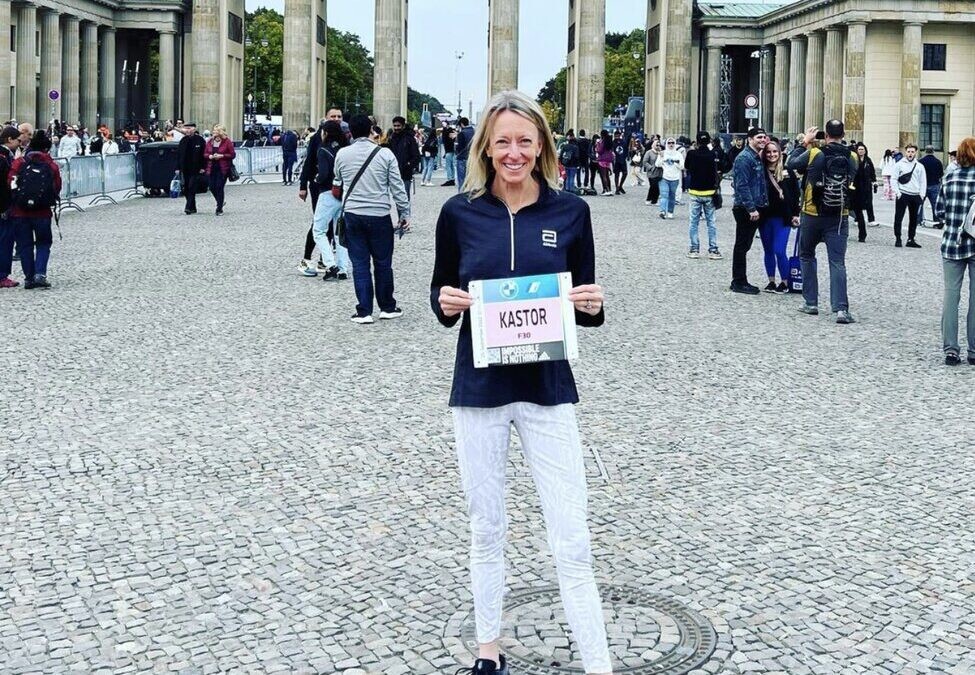
Kastor has raced the other five majors (Boston, London, Tokyo, Chicago and New York City), and although she was set to race Berlin in 2019, an ankle injury dashed those plans. Kastor is one of the top marathoners in American history, and up until this year, she held the national record at 2:19:36, set at the 2006 London Marathon, which she won. (She won the Chicago Marathon in 2005.)
Keira D’Amato broke Kastor’s record at the Houston Marathon in January 2022, when she ran 2:19:12; some predicted she would run even faster in Berlin on Sunday, but a mere nine weeks after her eighth-place finish at the World Athletics Championships, she was two minutes off the record in Berlin, with a sixth-place finish in 2:21:28.
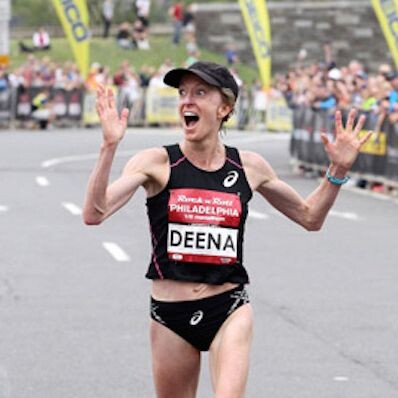
Kastor also held the American half-marathon record of 1:07:34 until 2018, when Molly Huddle ran 1:07:25. She also won a bronze medal in the marathon at the 2004 Athens Olympics. She ran the Tokyo Marathon in 2019.
Kastor’s goal of completing all six World Majors is a goal held by many marathoners (both amateur and pro) around the world, including the great Eliud Kipchoge, who bested his world record time in the Berlin marathon with a time of 2:01:09.
by Keeley Milne
Login to leave a comment
BMW Berlin Marathon
The story of the BERLIN-MARATHON is a story of the development of road running. When the first BERLIN-MARATHON was started on 13th October 1974 on a minor road next to the stadium of the organisers‘ club SC Charlottenburg Berlin 286 athletes had entered. The first winners were runners from Berlin: Günter Hallas (2:44:53), who still runs the BERLIN-MARATHON today, and...
more...The former American marathon record holder Deena Kastor is ready to run the only World Major Marathon missing from her resume
Former American marathon record holder Deena Kastor has hinted that she’s planning to race this year’s Berlin Marathon, which would officially complete her six-star World Major Marathon campaign.
She has raced the other five majors (Boston, London, Tokyo, Chicago and New York City), and although she was set to race Berlin in 2019, an ankle injury dashed those plans. She’s back, and ready to tackle the race now, and she will be on the start line in Germany on Sept. 25.
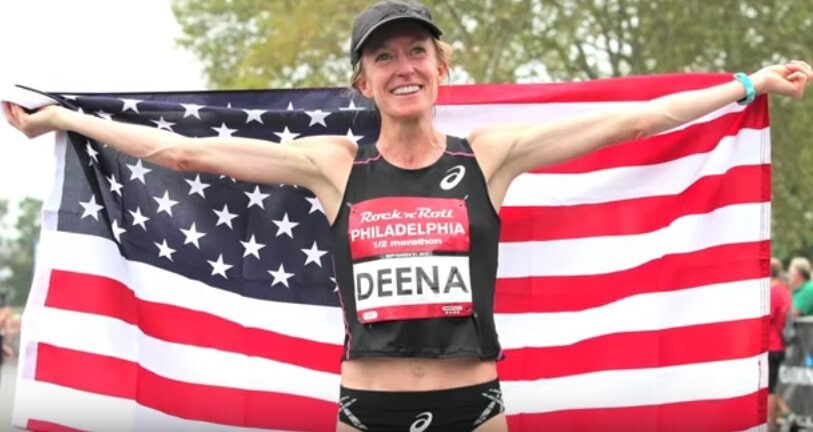
Kastor is one of the top marathoners in American history, and up until this year, she held the national record at 2:19:36, set at the 2006 London Marathon, which she won. (Keira D’Amato broke Kastor’s record at the Houston Marathon in January 2022, when she ran 2:19:12.) Kastor also owned the American half-marathon record of 1:07:34 until 2018, when Molly Huddle ran 1:07:25.
In addition to her name in the record books, she won many races in her career, including several World Majors. (In addition to London in 2006, she won Chicago in 2005.) She also won a bronze medal in the marathon at the 2004 Athens Olympics. Her most recent World Major Marathon appearance came in 2019, at the Tokyo Marathon.
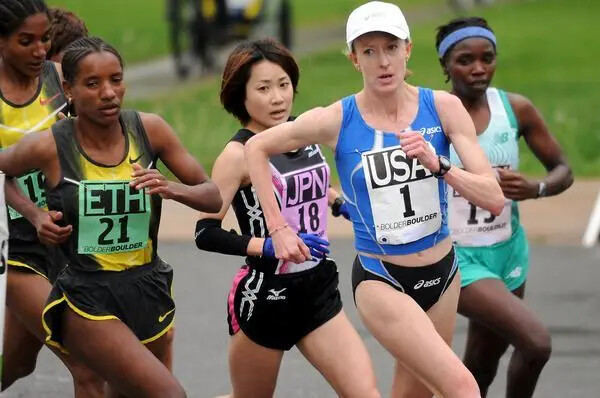
Kastor won’t be going for the win in Berlin, but she’s had her fair share of time on podiums. Instead, she will be shooting for the final part of her six-star medal, a bucket-list goal shared by many marathoners (both amateur and pro) around the world.
by Ben Snider-McGrath
Login to leave a comment
BMW Berlin Marathon
The story of the BERLIN-MARATHON is a story of the development of road running. When the first BERLIN-MARATHON was started on 13th October 1974 on a minor road next to the stadium of the organisers‘ club SC Charlottenburg Berlin 286 athletes had entered. The first winners were runners from Berlin: Günter Hallas (2:44:53), who still runs the BERLIN-MARATHON today, and...
more...Tim Murphy founder of San Diego Elite Racing Inc has died at age 77
Tim Murphy, founder of San Diego’s Elite Racing, Inc., the man who reinvented running, not once but three times, succumbed to pneumonia Wednesday night (August 17, 2022) passing in hospice care at his home in San Diego, California. He was 77 years old.
Today, though smaller than it once was, the Rock ‘n’ Roll Marathon Series remains the largest purveyor of running events in the world, with 29 events in 16 U.S. states, Washington D.C., and seven foreign countries. But a quarter century ago, who knew what lay ahead in the wild open spaces of the first Rock `n` Roll Marathon?
Some observers even questioned the concept of rock bands strung along the marathon course altogether. What does rock`n` roll have to do with San Diego, much less with running a marathon, the ultimate test of endurance?
Well, on June 21, 1998 the world got its answer. With the snarl of a blistering guitar solo, the tight syncopation of a snare drum, and the slap of millions of accompanying footfalls, the second-wave running boom announced its arrival in San Diego with a carnival of music, endorphins, and sweat. It’s like Tim turned over the calendar two years early to introduce the new century.
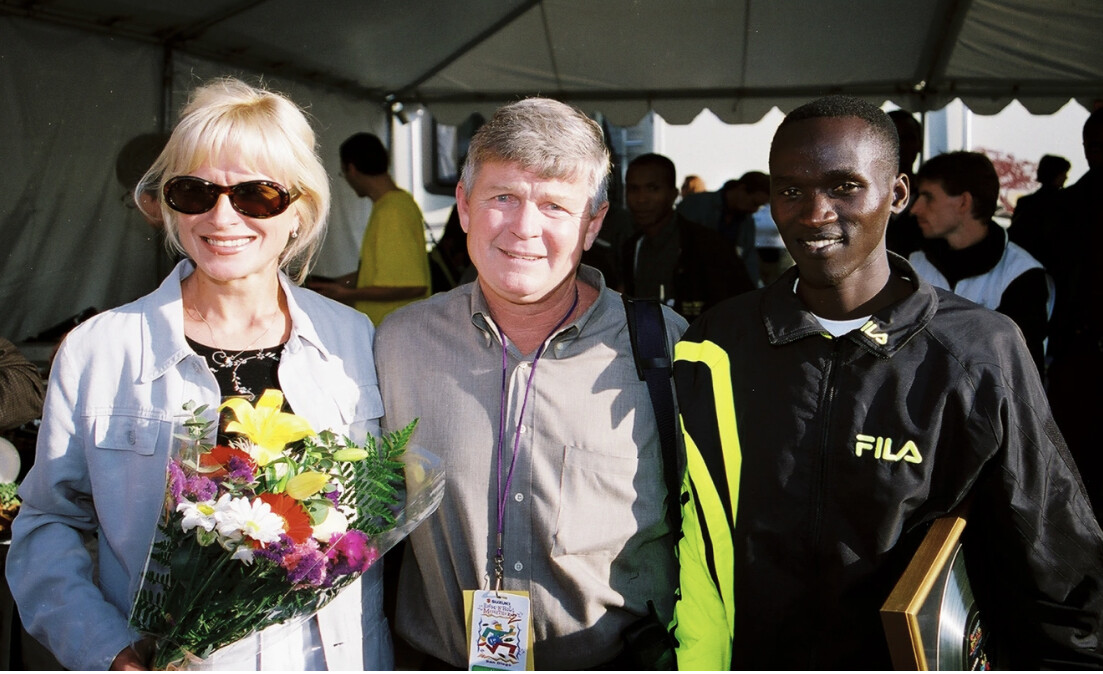
“We created a theme marathon without intending to,” said Tracy Sundlun, Tim’s long-time partner at Elite Racing.
NEW DEMOGRAPHICS
No new major marathon had sprung up in the U.S. or the world since the Los Angeles Marathon arrived in 1986. In its first year, LA registered 10,787 runners, making it the largest inaugural marathon in history. Instantly, that number became Tim‘s goal for San Diego to beat LA.
Even before its first steps were run, though, there was the feel of a major marathon about the Rock ‘n’ Roll Marathon. Tim had conceived the idea years before while running the final lonely miles of the Heart of San Diego Marathon out along Friar’s Road to Qualcomm Stadium in Mission Valley. Wishing there were some kind of support along the road to help out, Murphy thought, wouldn’t it be great to have music to run to.
It took a long time for his idea to gestate, but the seed had been planted.
After a decade of developing his reputation as an event innovator, beginning in 1986 with the Carlsbad 5000 just north of San Diego – the event that proved runners in a then 10k / marathon focused world would run a 3.1 mile race, while introducing “spectator running” where the professional field followed age and gender specific races over the same tight-looped course – Murphy’s idea of a musical marathon came to life, born out of two separate, but catalyzing events.
“When they opened the Rock & Roll Hall of Fame in Cleveland (1995), there was so much hype about it,” Tim told San Diego YuYu in 2004. “So I was running along one morning and I thought, “If I lived in Cleveland I would do a marathon that would start and finish at the Rock & Roll Hall of Fame and do a big concert afterwards.”
One year later 273 San Diegans were among the record 38,000 entrants at the 100th anniversary of the Boston Marathon.
“Afterwards, they had this get together and all they could talk about was why there wasn’t a major marathon in San Diego. And all the runners, some of them pretty important, just wouldn’t leave me alone about it. So I essentially dusted off the old idea I had for Cleveland and started.”
With the backing of a set of investors, led by Hollywood A-list producers Frank Marshall and wife Catherine Kennedy – “Jurassic Park”, “Indiana Jones” , “Jason Bourne” – along with celebrity ambassadors like basketball Hall of Famer Wilt Chamberlain, Tim promoted his concept relentlessly at race expos around the country, touting his new baby with posters and ads that said, ‘You missed the first Boston. Don’t miss the first Rock ‘n’ Roll!’
No longer a simple feat of speed endurance, the grueling marathon had been reinvented as a rollicking 26-mile long block party through America’s Finest City.
Despite a 37-minute delay at the start due to some perceived traffic issues on the course – which led to a water-dousing through the first aid station – the high-spirited music rocking the sidelines caused an immediate sensation.
Nearly 20,000 entrants from 30 countries and all 50 states passed the word, ‘You gotta try this one!” And that was before they got to the post-race concert that night featuring Huey Lewis and the News, Pat Benatar, and the Lovin’ Spoonful!
The makeup of year one’s field proved historic, as well. 50% of the field was women, far and away the largest such percentage of any co-ed road race of any distance to date, and a pivot-point in the history of the sport. Before RnR San Diego, the largest percentage of women in a major marathon had been just 23% at New York City. Most road races had only 10% to 15% women at the time.
Rock ‘n’ Roll’s runners were also slightly older than the norm, slightly wealthier, and slightly slower than the average marathon runners.
At a time when road race courses were designed to be minimally visible and impact their communities as little as possible, the initial Rock ‘n’ Roll Marathon layout was designed to be an infomercial for the city, regardless of the potential inconvenience for some.
When city officials asked how long they would have to keep the streets closed, Tim based his projections on the New York City Marathon, saying, ‘we might have 50 or 60 runners who will take longer than six hours 30 minutes. But we’ll just direct them onto the sidewalk, so you can reopen the streets.’ As it turned out, 1500 runners took over seven hours to complete their 26.2 mile journey.
But Tim Murphy wasn’t just in it for the large participation numbers, important as they were. He always had his eye on top talent, too, and urged elite athlete coordinator Mike Long to pull in a world-class field, like he did every year for the Carlsbad 5000 where so many world records were set.
Mike Long, the late Elite Racing athlete recruiter with Rock `n` Roll 1999 champs Tarus & Bogacheva
Nobody knew how fast RnR could be run until young Kenyan, Philip Tarus, busted a 2:10 opener for the men, with Russian women Nadezhda Ilyina and Irina Bogacheva battling just nine seconds apart at the finish for the women in 2:34. That told the athletes of the world, ‘This one is worth having a go,” especially after all the Suzuki products and prize money checks were handed out.
Not since the New York City Marathon’s first five-borough extravaganza in 1976 had a marathon come on the calendar with such dramatic impact: The largest first-time running event in history; the most ingenious show along the sidelines and at the finish ever produced; $18.6 million (net) raised by and for The Leukemia & Lymphoma Society’s Team In Training charity – the largest amount ever for a single-day sporting event; and to cap it off, world-class performances by its champions.
Though the race lost over $1 million in its first year, it instantly became the number one economic impact event in Southern California, generating $39.3 million in its inaugural year, as two-thirds of its entrants came from outside the region. With Murphy’s persistence and the continued backing of his investors, Rock ‘n’ Roll eventually broke even in year three. Thus was the foundation set for what has become a global phenomenon, the so-called second-wave running boom.
Born and raised with two sisters in Denver, Colorado, Tim attended high school in Nebraska where he competed in the 880-yard run and threw the discus. He then spent the first part of his professional life toiling in the health care industry, selling hospital supplies on the road while moving across the country time and time again. Finally, in the late 70s, he decided to abandon the rat race and settle in San Diego where his two sisters lived.
Though he ran track in high school, he wasn’t a distance man. But once in San Diego and introduced to the area’s vibrant running community, like so many before him, he got hooked on the sport. Tim often trained up to 10 miles a day, which led him into the race organization business and the founding of Elite Racing in 1988.
Always more of a behind the scenes workaholic than a flashy frontman, Tim did serve as interim race director for the troubled Chicago Marathon in 1989. But mostly he focused like a laser on the business side of Elite Racing. Tracy Sundlun, former head of New York City’s Metropolitan Athletics Congress, and a former collegiate and club track coach, joined as Tim’s partner in 1997, taking on the role of political go-between and liaison with the sporting world.
Through it all, Tim used his marketing and sales skills to build his race business from a fledgling local concern into the most successful for-profit organization in running.
“We have lost someone who – I don’t think many of the insiders even grasp his importance, his significance,“ said Tracy Sundlun. “Besides Fred Lebow in New York City, Tim was the best retail marketer the sport has ever known. It makes me happy all the people who’ve reached out from all over the world when they heard news of his passing. Tim would’ve felt good knowing the people recognized what he built, what he reinvented.”
Beginning with the Carlsbad 5000 in 1986, Tim bucked the conventional norms of the sport. Nobody thought people would pay to run a 5K. Running at the time was a 10K and marathon trade. But Tim turned it into a 5K and half marathon business and the sport soon followed along.
Ethiopian great Tirunesh Dibaba breaks another world record at Carlsbad 2005 (14:51)
The success of the Rock ‘n’ Roll Marathon in San Diego changed Murphy’s fortunes for good. Over the next several years, Tim developed the brand into a seven event juggernaut that spread from San Diego to Virginia Beach, Nashville to Phoenix, San Jose, California to San Antonio, Texas.
Elite Racing was the first organization to stage more than one marathon in a year, and the first to put on events outside their own home city. Designed as a for-profit company in a not-for-profit industry, Elite Racing was the first organization to build a brand in the sport, though, initially they didn’t realize they were doing it. They were also the first to buy events and the first to sell to private-equity.
When the City of Virginia Beach, VA wanted to start a new marathon on Labor Day weekend in 2001, Tim made a site visit. He realized that with the heat and humidity of late summer in Virginia Beach, and not wanting to conflict with the fall marathons which had been so supportive of his races in San Diego in the summer and Nashville in the spring, there was no way that a full marathon would work. So Tim convinced VB to create the first destination half-marathon, The Rock ‘n’ Roll Virginia Beach Half Marathon. Until then, half marathons were just local training races for marathons.
“Just like with Carlsbad in the 5K, nobody thought people would travel to run a half marathon,“ remembered Sundlun. “When we proposed Virginia Beach, we were one of Runner’s World Magazine‘s biggest advertisers. We said we were going to sell out at 12,000 for the Labor Day weekend race. People at Runner’s World said we were nuts. At the time, the largest half marathon was the Philadelphia Distance Run at 6000, the largest inaugural half marathon was on Long Island at 2900.
“Runner’s World bet us a full, center-spread, double page ad that we wouldn’t hit our number. They didn’t even think vendors would come to a Labor Day weekend race in Virginia Beach. But we sold out by July and eventually got 14,990 entrants. Getting that check back from Runner’s World, that was really something.”
Deena Kastor headlined the inaugural Rock ‘n’ Roll Virginia Beach Half Marathon in 2001, setting an American debut record as a prep race for her marathon debut in New York City that fall. Kenyan superstars Martin Lel and Paul Tergat both tuned up for fall marathon victories with wins in Virginia Beach.
Records were always important to Tim. He would often have side bets with Mike Long about the outcome of races. Two-time Olympic champion and multiple-time world record holder Haile Gebrselassie of Ethiopia broke the half marathon world record at Rock ‘n’ Roll Arizona in 2006 (58:55). And with 16 World Records / Bests and 11 American Records, Carlsbad was always recognized as The World’s Fastest 5K.
“Tim felt if you created special events with a team of people who were passionate about the space they were in, the money would follow,” Sundlun told me. “He also understood that an event was only as good as its weakest link. So he was laser-focused on every aspect of the event, from the expo to the medal to the course to the elite athletes to the give-a-ways to the ads to the water stations, you name it.
“We never had a meeting about what to cut, just about how to improve. Tim understood you had to invest and promote relentlessly. He was tireless in his pursuit of greatness. Good people would join him and he empowered them and got out of their way. But he refused to take no for an answer, and had a single-minded focus.”
Tim even bought television’s Road Race of the Month from Salmini Films in 1991, the series that aired on ESPN for over a decade featuring the best races in the country and around the world. Tim understood that with television as a promotional arm, he could sell more advertising and attract more runners.
The string of happy days ended abruptly in July 2007, however, when Elite Racing’s beloved athlete recruiter Mike Long died suddenly of a heart attack. Mike’s passing seemed to take the spark out of Tim.
Later that year he sold the business to Falconhead Capital for more than $40 million. Elite Racing essentially became the event division of the new Competitor Group, Inc., and Tim moved on. Eventually, after Tracy also left, CGI abandoned the elite aspect of running altogether, before leaving San Diego, as well.
At times, Tim could be a volcanic boss, as his business was his life’s passion. Yet he engendered a deep dedication and respect from his Elite Racing family, out of which 17 marriages were spawned (including my own with Toya), growing families, and lifelong friendships. Tim’s final years were spent quietly, visiting with friends and his two sisters who were with him at the last.
R.I.P., Tim. You were a true visionary who has left a legacy that moved us all both body and soul.
by Toni Reavis
Login to leave a comment
Keira D’Amato Will Attempt to Lower Her American Record at Berlin Marathon
After winning the Falmouth Road Race on Sunday morning, Keira D’Amato confirmed that she will be running the Berlin Marathon on September 25 in an attempt to lower her own American record.
D’Amato set the current record of 2:19:12 in Houston in January, eclipsing Deena Kastor‘s 16-year-old American record of 2:19:36.
“I think I can run faster than I did in Houston, and I’m going to go to try to prove it in Berlin,” D’Amato told Citius Mag after Falmouth, confirming what many insiders expected as she wasn’t listed in the NY or Chicago elite fields and former NY elite athlete coordinator David Monti had previously tweeted out (but then deleted) that D’Amato was headed to Berlin.
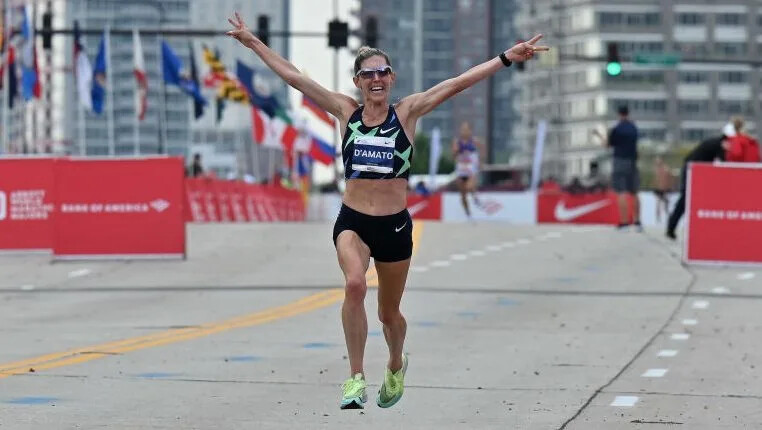
This will be D’Amato’s second Berlin Marathon. In 2019, she finished 17th in 2:34:55 in what was then a PR of more than six minutes. This time around, she will be looking to run more than 35 seconds per mile faster.
As the American record holder, D’Amato would have attracted a hefty appearance fee from either of the two American major marathons this fall, Chicago and New York. She also would have had more time to recover from her last marathon, an eighth-place finish at the World Championships on July 18 (there are 10 weeks between Worlds and Berlin; there are 12 weeks between Worlds and Chicago and 16 between Worlds and NYC).
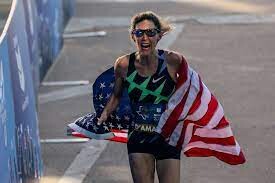
But D’Amato typically bounces back quickly between races — she won Falmouth less than five weeks after Worlds — and did not log a full buildup for Worlds as she was named as a late injury replacement for Molly Seidel barely two weeks before the championships. Additionally, American records result in big endorsement bonuses from shoe sponsors.
Berlin has become the go-to course for world record attempts in recent years, as it has hosted the last seven men’s world records and was also the venue of choice for Shalane Flanagan‘s American record attempt in 2014 (Flanagan fell short of the AR but still ran her lifetime best of 2:21:14). But three of the last four women’s world records have fallen in Chicago, including the current mark of 2:14:04 set by Brigid Kosgei in 2019. Either would have been fine options for an American record attempt; the better option may come down to weather on race day.
by Jonathan Gault
Login to leave a comment
BMW Berlin Marathon
The story of the BERLIN-MARATHON is a story of the development of road running. When the first BERLIN-MARATHON was started on 13th October 1974 on a minor road next to the stadium of the organisers‘ club SC Charlottenburg Berlin 286 athletes had entered. The first winners were runners from Berlin: Günter Hallas (2:44:53), who still runs the BERLIN-MARATHON today, and...
more...Defending Champions Set to Return to the 2022 Bank of America Chicago Marathon
The Bank of America Chicago Marathon announced today the return of its defending champions as the event continues to build on its comeback to global racing. Ruth Chepngetich (KEN), Seifu Tura (ETH), Tatyana McFadden (USA) and Daniel Romanchuk (USA) will be at the helm of this year’s elite field with a strong contingency of the world’s best athletes vying to dethrone them. The stage will be set for a fierce competition up front, highlighting Chicago’s long tradition of record chases, fast times, and gripping finishes.
“We’re thrilled to welcome our defending champions back to Grant Park this fall,” said Carey Pinkowski, Executive Race Director of the Bank of America Chicago Marathon. “Chicago has a storied history of head-to-head competitions, world records and some of the best elite racing in marathon running. This year’s competition, which also includes American half marathon record holder Emily Sisson and American half marathon champion Conner Mantz making his debut, is going to bring much energy and enthusiasm to fans and spectators. We are ready for October 9.”
Defending Champions Return
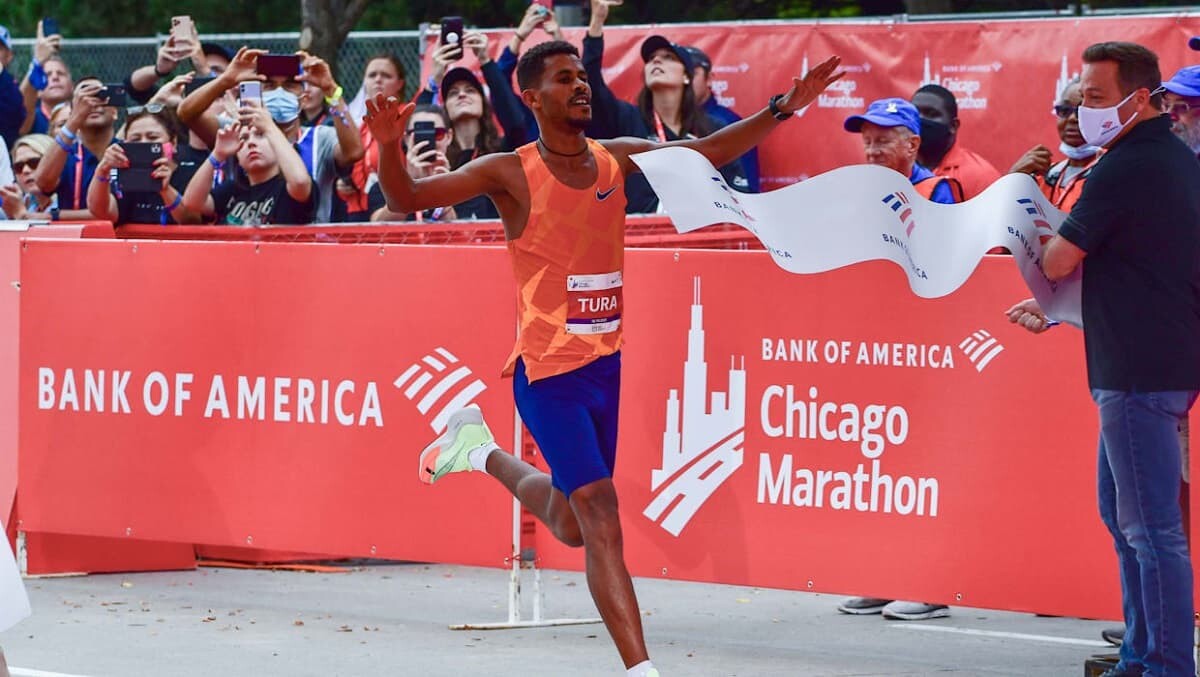
Chepngetich, the 2019 World Marathon champion and the fourth fastest woman in the history of marathon running, started on a world record pace at the 2021 Bank of America Chicago Marathon, dropping her pacer eight miles in while racing against the clock. She decelerated over the second half of the course but had enough to take the crown in 2:22:31. Chepngetich, who is self-coached, kicked off her 2022 season with a win and a course record at the Nagoya Marathon (2:17:18). She recently dropped out the of the World Championships Women’s Marathon due to health issues but is ready to take to the streets of Chicago and defend her title.
Unlike the fast pace set by Chepngetich, Tura ran a controlled strategic race last fall in the elite men’s race, waiting until 38K to pull ahead and win the biggest race of his career so far. Tura, who holds a 2:04:29 personal best, clocked 2:06:12 to win last year. His 2022 season includes a personal best in the half marathon, 58:36, and a second place finish in the Paris Marathon. Following last year’s victory, Tura noted that he was not prepared for warm weather, but that he was “determined to fight to the very end.” Tura’s determination may make him just the fifth man in Chicago’s history to win twice in a row.
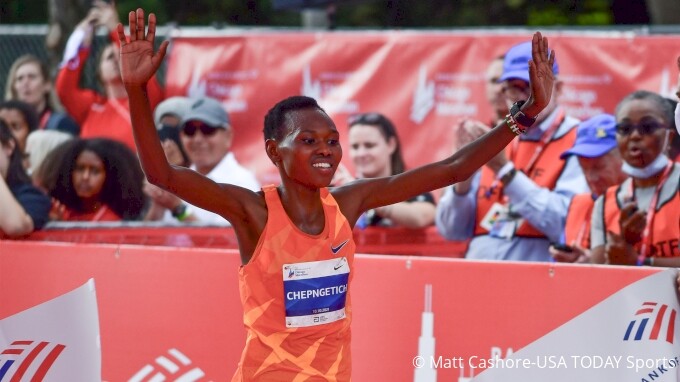
In the wheelchair competition, McFadden, whose nine titles make her the most decorated athlete in Bank of America Chicago Marathon history, returns to contend for her 10th win. McFadden boasts 20 Paralympic medals, including eight gold medals, 24 World Marathon Major wins, including four consecutive Grand Slams (first place in Boston, Chicago, New York City and London in the same year) and has broken six world records in track and field.
Romanchuk, a two-time Paralympian, completed the Bank of America Chicago Marathon hat trick with a victory last fall and returns to pursue a fourth title. Romanchuk rose to the top of road racing in 2018 and his campaign continues today. At the 2020 Paralympic Games, he took home a gold on the track and a bronze in the marathon.
Sisson and Mantz Headline Strong American Field
The Bank of America Chicago Marathon has a long history of welcoming America’s best runners across its finish line, stretching back to Joan Benoit Samuelson setting the American record en route to her victory in 1985. Khalid Khannouchi dominated at the turn of the century with four victories, including both world and American records, Deena Kastor clutched the win in 2005, and Galen Rupp stole the show in 2017. Last October saw five American men and seven American women finish in the top 10, a feat that highlights the strength of U.S. distance running. This year’s field includes several top American runners, including Emily Sisson and Conner Mantz.
Sisson, a six-time national champion and the American half marathon record holder (1:07:11), could put the American Marathon record (2:19:12) in jeopardy as she races to break the tape in Chicago. Sisson stands out as one of the most dominant American women on the track and the roads, making her Olympic debut in the 10,000m at the Tokyo Olympics and her marathon debut in 2019 in London. Sisson ran the fastest ever marathon debut by an American on a record eligible course (2:23:08), and she set an Olympic trials record in the 10,000m on the track (31:09) in 2021, breaking a record that stood for 17 years. This October marks Sisson’s first appearance in the Bank of America Chicago Marathon.
Mantz, known for his front-running style and capacity to handle pain (referred to as the “Mantz pain chamber”), made a splash on the collegiate level, winning the NCAA Division I Cross Country championships in 2020 and 2021, and earning his first U.S. title in the half marathon in 2021. Mantz’s time in the half marathon, 1:00:55, ranks him ninth on the all-time American list of half marathon performances. Mantz, an exciting newcomer to welcome to the marathon distance, could conquer the American marathon debut record, 2:07:56, set in 2019. Mantz is coached by 1994 Chicago Marathon runner-up, Ed Eyestone.
The Elite Fields
In addition to Sisson, Celestine Chepchirchir (KEN), Vivian Kiplagat (KEN) and Haven Hailu (ETH) are among some of this year’s elite women hoping to prevent a repeat victory from Chepngetich. Chepchirchir, winner of the 2019 Sanlam Cape Town Marathon, enters this year’s race fresh off a personal best, 2:20:10, set at the Seoul International Marathon. The Bank of America Chicago Marathon marks her Abbott World Marathon Major (AbbottWMM) debut. Kiplagat, winner of the 2022 Milan Marathon in a personal best, 2:20:18, ran valiantly in Chicago last year, attempting to stay on Chepngetich’s heels before fading to fifth place. Like Chepchirchir, Hailu will be making her first appearance in an AbbottWMM. Hailu made her marathon debut in 2020, set a personal best, 2:20:19, in 2021 to take third in Amsterdam, and claimed her first marathon victory in Rotterdam this past April.
Laura Thweatt (USA), Sarah Sellers (USA) and Sara Vaughn (USA) lead a strong delegation of American women. Thweatt holds a marathon personal best of 2:25:38, and finished eighth in both Chicago (2019) and New York (2021). Sellers initially turned heads in 2018 when she finished second in the Boston Marathon while running from the open field. Sellers smashed her PR to finish second at this spring’s Grandma’s Marathon in 2:25:43. Vaughn, a versatile runner who started her career on the track as a 1500m runner, made her marathon debut in 2021, winning the California International Marathon in 2:26:53. Vaughn’s time stands out as the fifth fastest debut ever by an American woman.
The women’s field also includes Diane Nukuri (USA), Ursula Sanchez (MEX), Carrie Verdon (USA) and local favorite Kristen Heckert (USA).
In the men’s competition, Tura will be chased to the line by compatriots Herpasa Negasa (ETH), Dawit Wolde (ETH), Asrar Abderehman (ETH), Ugandan Olympian Stephen Kissa and Kenyan Benson Kipruto.
Negasa had a career breakthrough in 2019 when he subtracted nearly six minutes from his marathon PR in Dubai to run 2:03:40. He comes to Chicago after a strong second place performance in Seoul, clocking 2:04:49. Wolde initially made a name for himself as a junior competitor on the track. His transition to the roads started in 2014, and he boasts a marathon personal best of 2:04:27, set in 2021 to finish third in Rotterdam. Abderehman made headlines in February when he broke the course record at the Zurich Seville Marathon, taking three minutes off his PR to run 2:04:43. Chicago marks his first appearance in an AbbottWMM.
Kissa, a 2020 Olympian in the 10,000m, stands out as an exciting athlete to watch. He brings years of track speed to the road, recently debuting in the marathon in 2:04:48. In addition to the Olympic Games, he also represented Uganda at the World Championships Half Marathon. The Chicago Marathon marks his first time racing in the United States and his first time racing in an AbbottWMM. Kipruto’s 2:05:13 personal best may not be the fastest in the field, but he has performed well at the marathon distance, winning the Boston and Prague Marathons in 2021 and finishing third in Boston this April. He also finished seventh in London in 2020 and won the Toronto Marathon in 2018.
The men’s field also includes sixth place finisher in 2021 and local elite Colin Mickow, Hiroto Fujimagari (JPN), John Korir (KEN), Frank Lara (USA) and making his debut, Patrick Tiernan (AUS).
by Running USA
Login to leave a comment
Bank of America Chicago
Running the Bank of America Chicago Marathon is the pinnacle of achievement for elite athletes and everyday runners alike. On race day, runners from all 50 states and more than 100 countries will set out to accomplish a personal dream by reaching the finish line in Grant Park. The Bank of America Chicago Marathon is known for its flat and...
more...Get Ready to Run with Marathon Legends
Run with Abbott World Marathon Major Legends!
The AbbottWMM Global Run Club today launched Legends Week – a new free virtual Challenge taking place from August 15-19.
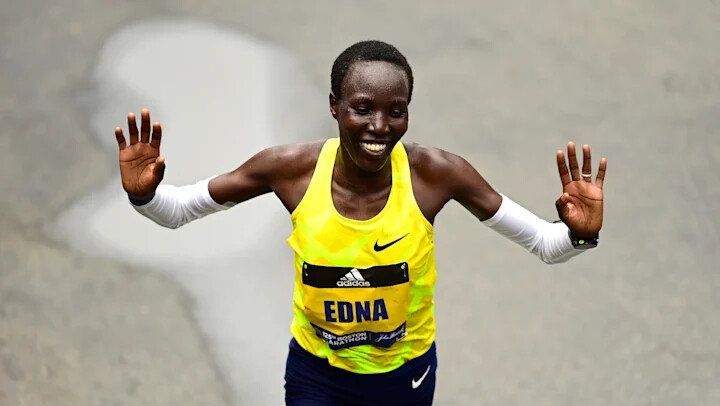
Runners must complete one challenge a day, for five days, to earn their Legends Week virtual badge and enter a prize draw for a special signed gift from five incredible athletes.
Each daily workout has been chosen by one of the legends to offer a mix of distances and training styles for everyone to enjoy.Edna Kiplagat, the Kenyan superstar who is a former World Champion, three-time AbbottWMM Series Champion and a Six Star finisher. She loves to add some speed and repetitions into her weekly routine and kicks things off with 4 x 1-mile repeats.Deena Kastor, a former American record holder and Olympic Bronze medalist for the marathon but also a 5km champion too! She set the 5km world record on the road at Carlsbad in 2002 (14:54) and she still enjoys racing them today.
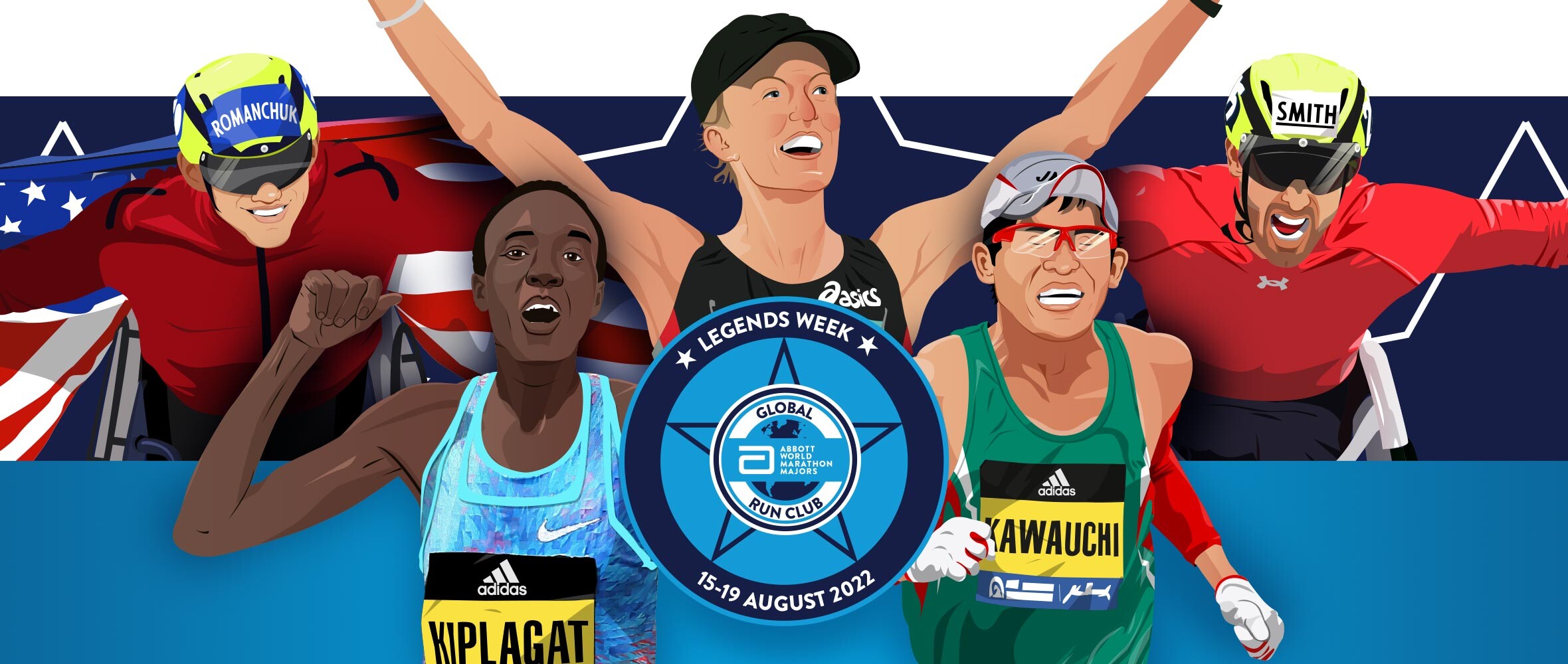
Multiple Major winner Daniel Romanchuk is a master of many distances. Representing the United States, he claimed the gold medal and a new World Record at the Tokyo Paralympic Games in the T54 400m in 45:72, coming from behind to win by 0.1 second! His workout is 4 x 400m on the track or road.
British wheelchair racer Johnboy Smith the newly-minted 2022 Commonwealth Games Marathon champion, is also a Six Star finisher! Smith, who took second place in the 2017 New York City Marathon, completed his Six Star journey in Tokyo earlier this year. His challenge is a six-mile run to celebrate this success.
Japanese marathon legend Yuki Kawauchi who ran his final mile of that grueling 2018 Boston Marathon in 5:12! He survived rain, wind, and hail to take the finisher tape on Boylston Street for the Boston Marathon victory. We are closing the week with a 1-mile challenge to celebrate and appreciate that amazing feat.
This is a fun and free challenge to motivate runners before we move into a busy fall calendar with four Abbott World Marathon Majors in close succession. A chance to mix things up, test your limits and enjoy a break from the norm!
Participants can walk or run your way through these workouts:
Monday 15 Aug: 4 x 1-mile with Edna Kiplagat
Tuesday 16 Aug: 5km with Deena Kastor
Wednesday 17 Aug: 4 x 400m with Daniel Romanchuk
Thursday 18 Aug: 6 miles with Johnboy Smith
Friday 19 Aug: 1-mile with Yuki Kawauchi
Login to leave a comment
World Athletics Championships Oregon22 preview: marathon
Kenya’s Geoffrey Kamworor, whose career was traumatized in June 2020 when he was hit by a motorbike during a training run and required surgery on a broken tibia, is due to contest his first major championship marathon in Eugene on July 17.
The 29-year-old from Nyen was named on the Kenyan team for the World Athletics Championships Oregon22 along with 33-year-old Lawrence Cherono – who missed a medal by one place in the marathon at last year’s Olympics – and 35-year-old Barnabas Kiptum.
Kamworor, confident and outgoing, was flying high when he had his accident.
Although he had performed to high levels on the track, where he earned 10,000m silver at the 2015 World Championships in Beijing, it was on grass and roads that he had excelled, winning the world cross-country senior titles in 2015 and 2017, and world half marathon titles in 2014, 2016 and 2018.
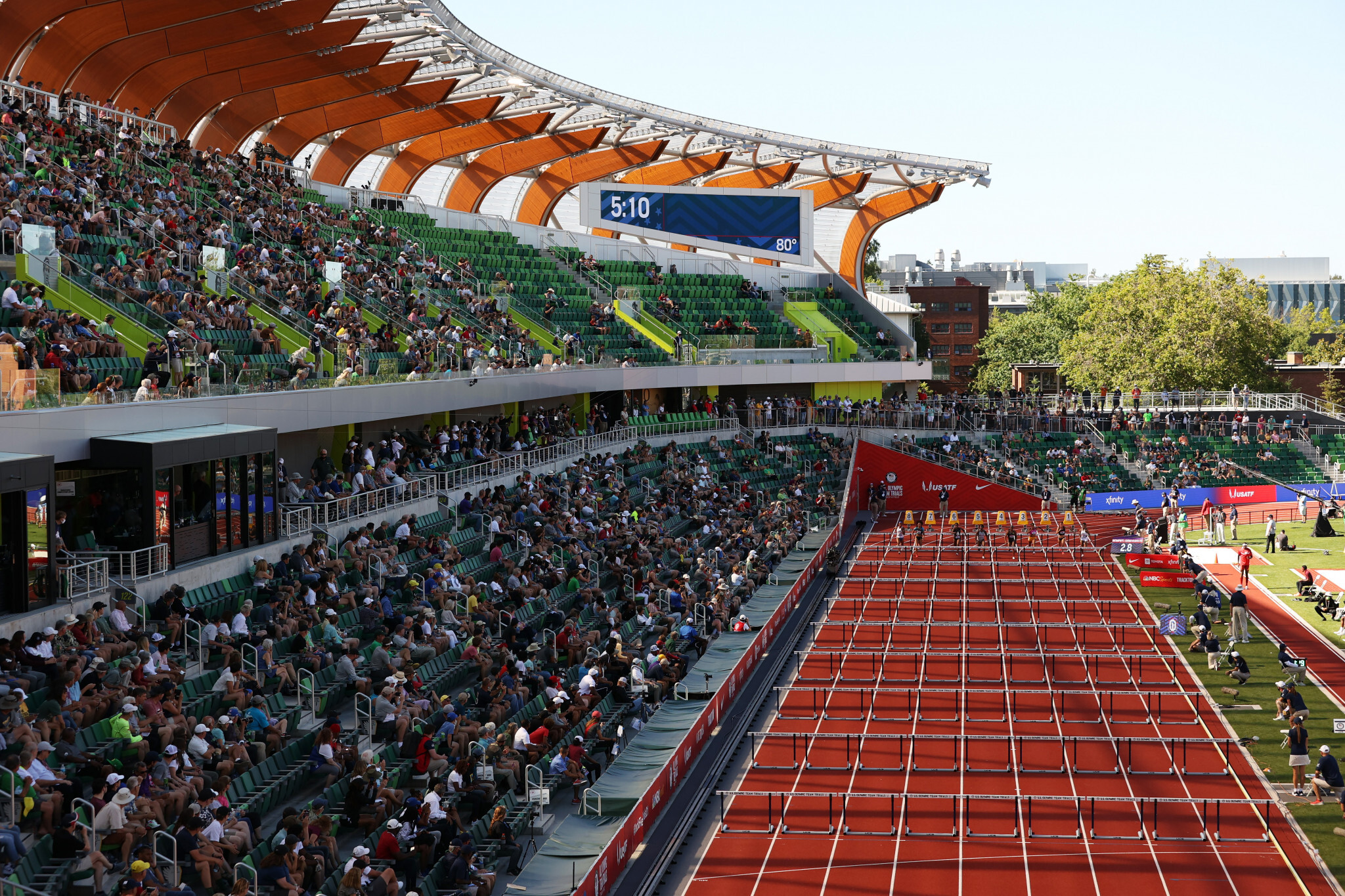
In his first competitive marathon in 2012 he finished third in Berlin in 2:06:12, and he was a consistent presence on the podium at World Majors Marathons thereafter, particularly in New York, where he finished second in 2015, first in 2017, third in 2018 and first again in 2019.
Kamworor ran his first race since the accident in January 2021, winning the Kenyan Police Cross Country Championships before going on to secure a place on Kenya’s Olympic 10,000m team after winning the national trials, only to have to pull out with an ankle injury.
But at the Valencia Marathon last December he was able to perform to the peak of his ability once more as he set a personal best of 2:05:23 in finishing fourth.
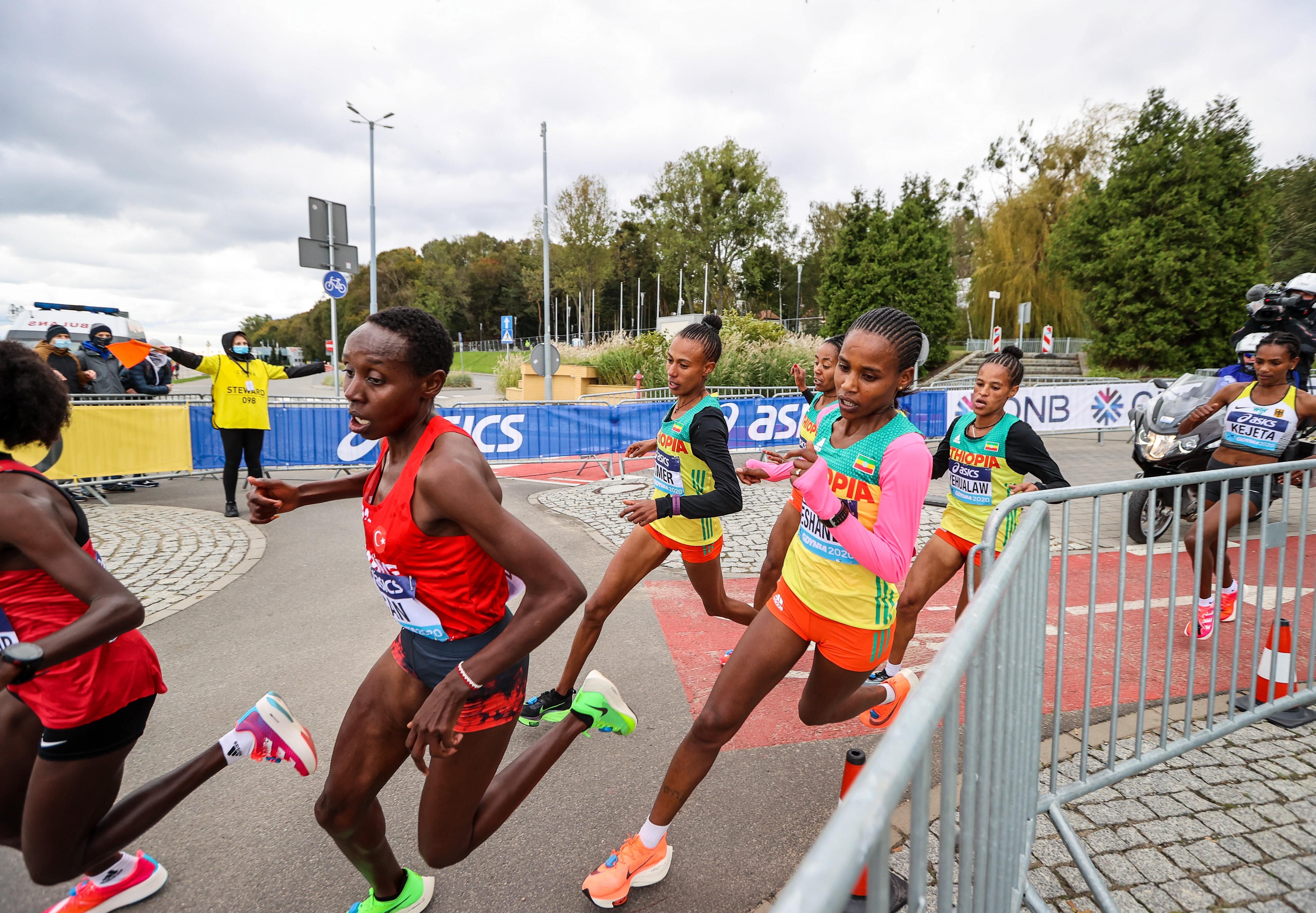
At the previous year’s running in Valencia, Cherono was second in a personal best of 2:03:04, putting him eighth on the world all-time list, having made his World Marathon Majors breakthrough in 2019 when he won in Boston in 2:07:57 and then Chicago in 2:05:45.
Like Kamworor, Kiptum also set a personal best last year as he clocked 2:04:17 in placing third at the Milan Marathon and he has a solid top-three record in virtually every race he has contested.
Such is the depth of Kenyan talent that they can name 2017 world champion Geoffrey Kirui as a reserve.
Meanwhile Kenya’s perennial rivals Ethiopia will be looking to their current world champion Lelisa Desisa, who found the way to win in the steamy heat of Doha three years ago, to make the most of his wild card entry to this year’s competition.
Desisa had early track success, winning the African U20 10,000m title in 2009, and he has since become a highly consistent performer at the highest level, achieving podium finishes four times in New York, including victory in 2018, and four times in Boston, where he won in 2013 and 2015.
He also has championship pedigree, having earned world silver in 2013 six years before his Doha gold, and has a personal best from 2013 of 2:04:45.
The formidable talent Ethiopia can call upon was made clear when it was confirmed that Desisa will have as teammates Tamirat Tola, Mosinet Geremew and Seifa Tura.
Tola earned Olympic 10,000m bronze in 2016 and world marathon silver in 2017. He set his personal best of 2:03:38 last year.
Geremew took silver behind Desisa at the 2019 World Championships, having finished second at that year’s London Marathon in 2:02:55, the third-fastest time in history.
Tura set his personal best of 2:04:29 last year in Milan before going on to win the Chicago Marathon in 2:06:12.
Uganda, the rising nation in distance running, earned this title in 2013 thanks to their 2012 Olympic champion Stephen Kiprotich. But the 33-year-old hasn’t been selected for Oregon, nor have Stephen Kissa, who ran a national record of 2:04:48 in Hamburg earlier this year, and Victor Kiplangat who was third in the second-fastest time ever by a Ugandan, 2:05:09.
Instead, Filex Chemonges, Fred Musobo and Jackson Kiprop will run the World Championships marathon, according to the Uganda Athletics Federation. So Kiprop, who helped Kiprotich to win the 2013 world title, is back at the World Championships for the first time since 2015.
Kissa, meanwhile, is due to be in Oregon in the 10,000m, where he will run with fellow Ugandan Joshua Cheptegei, the world 5000m and 10,000m record-holder, while Kiplangat is reported to be running the Commonwealth Games marathon.
Abdi Nageeye of the Netherlands and Belgium’s Bashir Abdi earned surprise silver and bronze medals respectively at the Olympics last year, but went on to confirm that their performance in Sapporo was anything but a fluke. Abdi set a European record of 2:03:36 to win the Rotterdam Marathon just two months later, while Nageeye was victorious at the Rotterdam Marathon earlier this year in a Dutch record of 2:04:56, finishing ahead of Abdi.
Both men will line up for the marathon in Oregon, only this time it will be less of a surprise if they reach the podium.
The United States will be looking to the highly consistent figure of Galen Rupp. After taking Olympic 10,000m silver in 2012, Rupp moved to the roads and earned Olympic bronze in 2016.
In 2017 he became the first US man to win the Chicago Marathon since 2002 and finished second at the Boston Marathon. He qualified for Oregon by finishing eighth at last year’s Olympics.
The championships will be in Rupp’s home state, in the same city where he made his first Olympic team in 2008 while he was a student at the University of Oregon.
The other US selections are Elkanah Kibet and Colin Mickow. Kibet, who is with the US military, finished 16th at the 2017 World Championships and set a personal best of 2:11:15 in finishing fourth at last year’s New York marathon.
Mickow is a 32-year-old full-time financial analyst for an organic and natural foods distributor who took up road running six years after finishing his college track career. He qualified for his first international vest after being the top US man home at last year’s Chicago Marathon, where he was sixth in 2:13:31.
Japan’s trio of male runners will be headed by Kengo Suzuki, who set a national record of 2:04:56 in February 2021 at the Lake Biwa marathon in Otsu. Daniel Do Nascimento of Brazil has run a 2:04:51 personal best this year and is another one to watch.
The three-loop World Athletics Championships marathon course only varies by about seven meters between its high and low points and the weather is likely to be considerably cooler than it was in Sapporo or Doha, where the men's marathon had to be held at midnight and the start time temperature was 29C/84F with 51% humidity.
Women's marathon
Ruth Chepngetich will defend her marathon title at the World Athletics Championships Oregon22 on July 18 by virtue of a wild card.
Chepngetich claimed the first gold medal of the 2019 World Championships, clocking 2:32:43 in the steamy heat to gain her first major gold.
She went on to finish third at the 2020 London Marathon before a roller coaster 2021, when she set a world record of 1:04:02 at the Istanbul Half Marathon, failed to finish the Tokyo 2020 Marathon in Sapporo but then won the Chicago Marathon.
At this year’s Nagoya Women's Marathon she won in 2:17:18, just 10 seconds off her personal best and the second-fastest ever women-only marathon.
She will be joined on the Kenyan team in Oregon by Judith Jeptum and Angela Tanui. Jeptum set a French all-comers’ record of 2:19:48 to win the Paris Marathon this year, while Tanui won the 2021 Amsterdam Marathon in 2:17:57.
Ethiopia will be represented by Gotytom Gebreslase, who won the 2021 Berlin Marathon on her debut and finished third in this year’s Tokyo Marathon in 2:18:18, Ababel Yeshaneh, second at the 2019 Chicago Marathon in a personal best of 2:20:51, and Ashete Bekere, third in last year’s London Marathon in 2:18:18, who has run 2:17:58 this year.
USA’s Keira D’Amato, who broke the North American record when winning January’s Houston Marathon in 2:19:12 – taking 24 seconds off the mark set by Deena Kastor in 2006 – has answered a late call to join the host nation’s team following the withdrawal of Olympic bronze medalist Molly Seidel.
Seidel has been suffering from a hip injury that forced her to drop out of the Boston Marathon in April and withdrew from the team after being unable to resolve her issue, giving the 37-year-old D’Amato, who only began serious marathon running in 2017, three weeks to prepare, but she is reported to be in “great shape”.
Her teammates will be Emma Bates, runner-up at last year’s Chicago Marathon, and Sara Hall, who finished second at the 2020 London Marathon and third at last year’s Chicago Marathon.
Japan has named Mizuki Matsuda, who has a personal best of 2:20:52, Mao Ichiyama, who has run 2:21:02, and Hitomi Niiya, who has a best of 2:21:17.
Britain will be represented by Rose Harvey, Olympian Jess Piasecki and Charlotte Purdue, who ran a personal best of 2:23:26 in finishing 10th at last year’s London Marathon.
Other names to watch out for are Bahrain’s Eunice Chumba, who ran 2:20:02 in Seoul in April this year, and Israel’s European 10,000m champion Lonah Salpeter, who won the 2020 Tokyo Marathon in 2:17:45 and was going well in the lead group at last year’s Olympic marathon before dropping down to 66th place in the closing stages.
After also dropping out of the 2019 World Championships marathon, Salpeter will be seeking to make the global impact her talent warrants.
Meanwhile Eritrea’s Nazret Weldu, who has run a personal best of 2:21:56 this year, is another one to watch.
by World Athletics
Login to leave a comment
World Athletics Championships Budapest23
Budapest is a true capital of sports, which is one of the reasons why the World Athletics Championships Budapest 2023 is in the right place here. Here are some of the most important world athletics events and venues where we have witnessed moments of sporting history. Throughout the 125-year history of Hungarian athletics, the country and Budapest have hosted numerous...
more...Twelve Olympians will lead star-studded lineup at 50th anniversary of Mastercard New York Mini 10K
Twelve Olympians and five Paralympians will line up in Central Park for the 50th anniversary of the Mastercard® New York Mini 10K, the world’s original women-only road race, on Saturday, June 11, New York Road Runners (NYRR) announced today.
U.S. Olympians Emily Sisson, Molly Seidel, Aliphine Tuliamuk, and Rachel (Schneider) Smith will lead a strong American contingent that will go up against previously announced Olympic, TCS New York City Marathon, and Boston Marathon champion Peres Jepchirchir, United Airlines NYC Half champion and 5K world-record holder Senbere Teferi, and two-time Mini 10K champion Sara Hall.
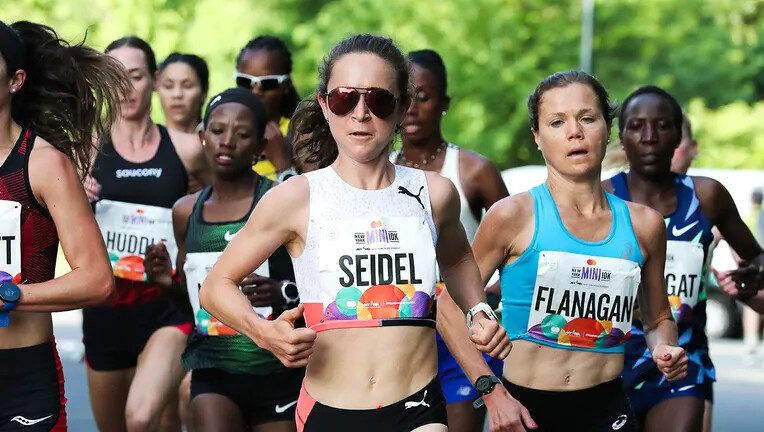
Sisson will come into the race after claiming her sixth national title last month in an American record 1:07:11 at the USATF Half Marathon Championships. She made her Olympic debut in Tokyo last summer after winning the 10,000 meters at the U.S. Olympic Track and Field Trials, where she broke the 17-year-old Trials record set by Deena Kastor in 2004. She has been very successful in her last three trips to New York, finishing as the runner-up at the United Airlines NYC Half twice and winning the USATF 5K Championships.
“After breaking the American record in the half-marathon, I’m excited to step down in distance and compete in the Mastercard® New York Mini 10K for the first time,” Sisson said. “It will be a privilege to take part in such a powerful event that has paved the way for so many women over the last 50 years.”
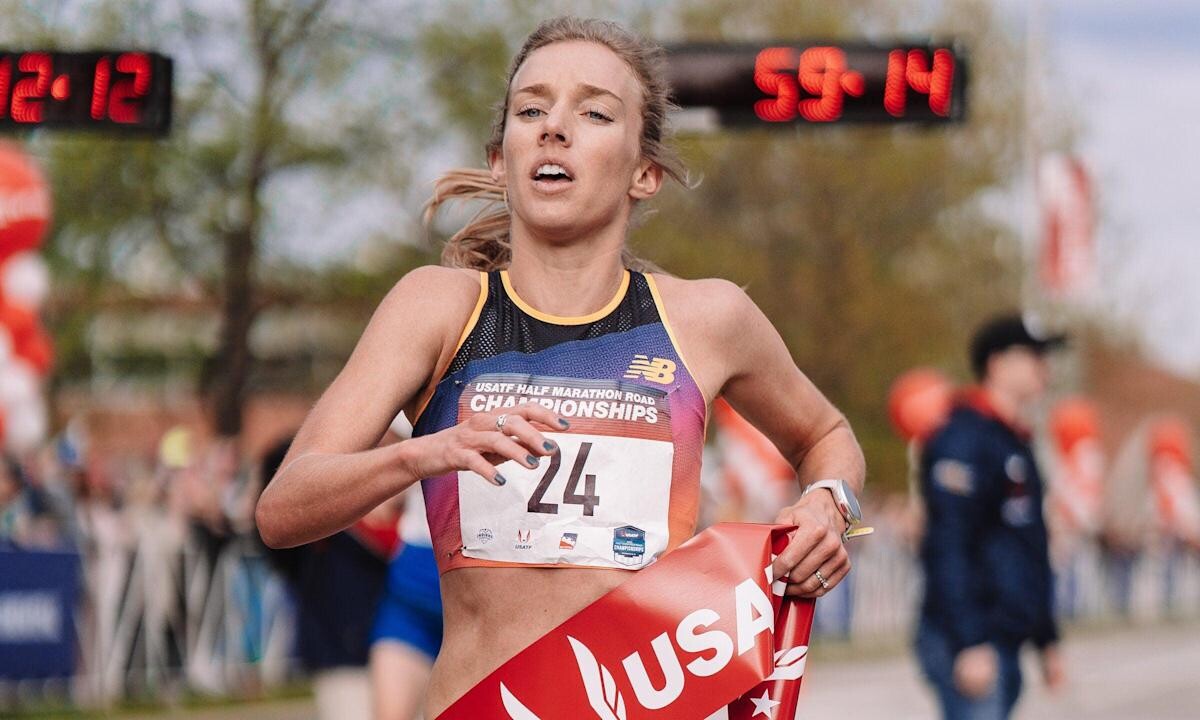
Seidel owns a bronze medal from the Tokyo Olympic marathon last year and in her last trip to New York set an American course record and recorded a fourth-place finish at the TCS New York City Marathon. Tuliamuk won the 2020 U.S. Olympic Marathon Trials and then gave birth to her daughter before running in the Olympic marathon in Tokyo. She will be making her first trip to New York since 2019 and is coming off winning the 25km national title, bringing her national title count to 11. Smith represented the U.S. at the Tokyo Olympics in the 5,000 meters after finishing third in the distance at the U.S. Olympic Track and Field Trials.
The deep U.S. women’s contingent also includes American marathon record-holder Keira D’Amato, the top American finisher at the last two Boston Marathons Nell Rojas, 2019 New York Mini 10K runner-up Stephanie Bruce, U.S. national champion Erika Kemp, and the top American finisher at the 2022 United Airlines NYC Half Lindsay Flanagan.
Returning to the event 10 years after her victory will be Kenya’s Edna Kiplagat, a two-time world champion in the marathon who won the 2010 New York City, 2014 London, and 2017 Boston marathons, and was the runner-up in Boston in 2019 and 2021.
“Winning the New York City Marathon 12 years ago changed my life, and now, 10 years after also winning the Mini 10K, I still enjoy my racing and am happy to still be competing at a high level,” Kiplagat said. “NYRR always invites the highest quality fields, so I always like lining up in New York with the best in the world. There are so many inspiring women who have participated in this race over the years who set a positive example for everyone – both runners and non-runners – and I’m lucky to be part of such a prestigious group.”
Last year’s TCS New York City Marathon runner-up and Mastercard® New York Mini 10K runner-up Viola Cheptoo of Kenya and former NCAA 10,000-meter champion Sharon Lokedi of Kenya will contend for the title as well.
The professional wheelchair division will be headlined by two-time Paralympic medalist and three-time Mastercard® Mini 10K defending champion Susannah Scaroni. Since the addition of the professional wheelchair division in 2018, Scaroni is the only athlete to have won the race.
“The Mastercard New York Mini 10K is a special one to me for so many reasons, and I’m excited at the chance to race on what will be a milestone day for women’s running in Central Park,” Scaroni said. “Not only is the Mini 10K the world’s original women-only road race, but it is also one of the only women-only wheelchair races at the present time, which will hopefully pave the way for future generations of women’s wheelchair racers in the next 50 years.”
Lining up against Scaroni will be U.S. Paralympians Jenna Fesemyer, Yen Hoang, Hannah Dederick, and Eva Houston.
The Mini 10K, which began in 1972 as the Crazylegs Mini Marathon, was the first women-only road race and has gone on to garner more than 200,000 total finishers to date. Former NYRR President Fred Lebow named the race after the miniskirt, which back then was in vogue. A total of 72 women finished the first race, and three weeks later, Title IX was signed into law, guaranteeing girls and women the right to participate in school sports and creating new opportunities for generations of female athletes.
The Mastercard® New York Mini 10K will offer $45,000 in total prize money, including $10,000 to the winner of the open division and $2,500 to the winner of the wheelchair division. The professional athlete races will be streamed live on USATF.TV beginning at 7:40 a.m. ET. Mastercard® will serve as title sponsor of the event for the second time, and as part of its on-going partnership with NYRR will also serve as the presenting sponsor of professional women’s athlete field.
by Running USA
Login to leave a comment
New York Mini 10K
Join us for the NYRR New York Mini 10K, a race just for women. This race was made for you! It’s the world’s original women-only road race, founded in 1972 and named for the miniskirt, and it empowers women of all ages and fitness levels to be active and to look and feel great on the run. Every woman who...
more...Reigning Champ Ed Cheserek defends his title winning again at the Carlsbad 5000
More than 6,000 runners and joggers raced along a traffic-free Pacific Coast Highway 101 Sunday for the Carlsbad 5000, returning after its pandemic pause.
Reigning champion Ed Cheserek of Kenya won again – just barely – with a time of 13:44.
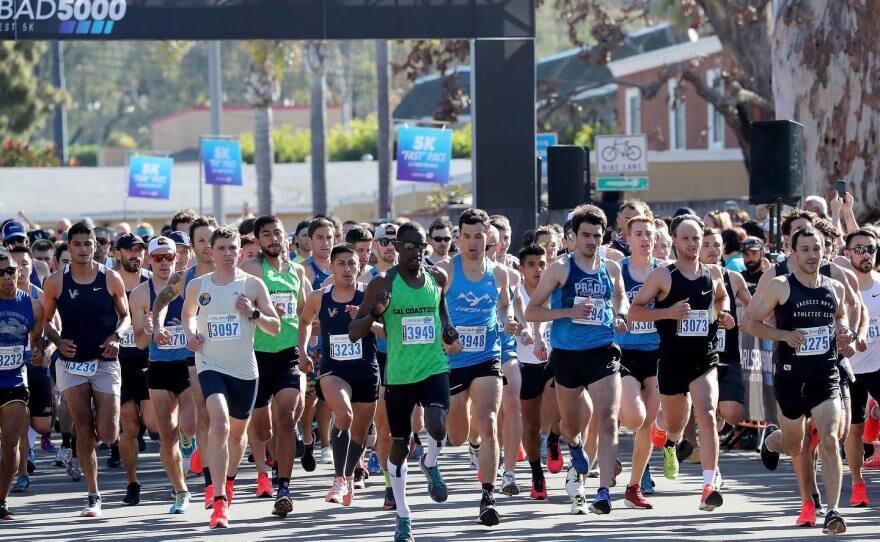
“I’m excited to return to the Carlsbad 5000,” Cheserek said before the race. “Last time in 2019 was a lot of fun and after everything our running community has been through since then, I’m really looking forward to being back at the beach in sunny Southern California.”
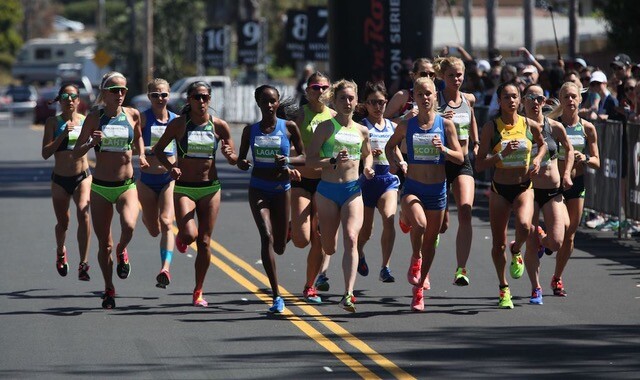
Reid Buchanan of San Diego trailed Cheserek by just one second, in the men’s elite, in 13:45, followed by Jack Bruce of Australia.
In the women’s elite, Biruktayit Degefa of Ethiopia won with a time of 15:29. Dominique Scott of South Africa followed in 15:48, with Carina Viljoen, also of South Africa, taking third in 16:00.
The Carlsbad 5000 is renowned as “The World’s Fastest 5K,” with 16 world records having been set there, plus a slew of national records and age group bests.
Olympic gold medalists Tirunesh Dibaba, Meseret Defar and Eliud Kipchoge have run Carlsbad, along with U.S. Olympic medalists Deena Kastor and Meb Keflezighi.
Keflezighi, the San Diego High product and only male runner in history to win both the Boston and New York City marathons, plus an Olympic medal, now co-owns the event.
The race was first held in 1986; this was the 36th edition. Another plus – the race fits well on runners’ calendars, with the elite athletes being in peak fitness after running the World Cross Country Championships.
It may have been three years since the Carlsbad 5000 was held live (there was a virtual race in 2020), but the elements that characterize the race were back – the left-hand, downhill turn onto Carlsbad Village Drive, the sprint to the finish, and the ocean views along the way.
Login to leave a comment
Carlsbad 5000
The Carlsbad 5000 features a fast and fun seaside course where 16 world records have been set. Both rookie runners and serious speedsters alike enjoy running or walking in Carlsbad. Weekend festivities kick off Saturday morning with the beloved Junior Carlsbad, a kids-only event in the heart of Carlsbad Village featuring fun runs, toddler trots, and diaper dashes! On Sunday,...
more...2022 Carlsbad 5000 Announces Its Elite Field
eigning champion and 17-time NCAA All-American Edward Cheserek headlines men’s race; Olympians Kim Conley and Dom Scott lead women’s elite fields
36-Year Southern California Running Tradition Returns with over 6,000 runners on Sunday, May 22
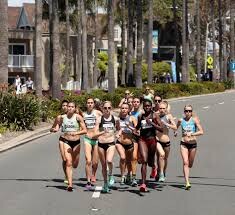
One by one, America’s most famous road races have returned after being waylaid by COVID. The Boston Marathon, Peachtree Road Race, New York City Marathon.
Familiar images unfolded. Runners excitedly talked to friends and strangers in corrals. Spectators delivering high-fives. Medals draped around necks.
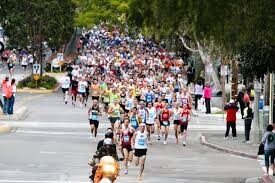
Bolder Boulder, Bay to Breakers, the Los Angeles Marathon.
Come Sunday, the last of the United States’ iconic road races returns after a three-year pandemic hiatus when the Carlsbad 5000 presented by National University celebrates its 36th running. Over 6,000 runners and joggers will enjoy the splash of the surf and clean salt air along the traffic-free Pacific Coast Highway 101, then sipping brews in the Pizza Port Beer Garden.
“I’m excited to return to the Carlsbad 5000,” said reigning champion Ed Cheserek of Kenya. “Last time in 2019 was a lot of fun and after everything our running community has been through since then, I’m really looking forward to being back at the beach in sunny Southern California.”
The Carlsbad 5000 is renowned as “The World’s Fastest 5K” and the moniker was earned.
Sixteen world records have been set on the seaside course, plus a slew of national records and age group bests. Olympic gold medalists Tirunesh Dibaba, Meseret Defar and Eliud Kipchoge have run Carlsbad.
So have U.S. Olympic medalists Deena Kastor and Meb Keflezighi. Keflezighi, the San Diego High product and only male runner in history to win the Boston and New York City marathons, plus an Olympic medal, is now co-owner of the race.
“The San Diego community is very proud of the fact that Carlsbad hosts the world’s most famous 5k race,” said San Diego Track Club coach Paul Greer, a former sub-4-minute miler. “We’re proud of the race. And local runners are endeared by the fact that Meb is involved in the event because he’s one of our own.”
Many people deserve credit for the Carlsbad 5000’s success. Chief among them are Tim Murphy, the race’s creator, Steve Scott, the former American mile record holder who designed the course, and the late Mike Long, the beloved man who built relationships with African athletes and recruited them.
When the race was first held in 1986, the 10K and marathon were road racing’s popular distances. The 5K was considered a casual fun run.
“That’s how innovative Tim was,” said Scott. “He was going to start something when there wasn’t anything there.”
Scott not only designed the course. He won the first three races.
Another plus for The ’Bad: the race fell perfectly on the calendar, with the elite runners being in peak fitness after running the World Cross Country Championships.
“The world records were produced by the quality of the fields and the expectations of running fast,” said road racing historian and announcer Toni Reavis.
It may have been three years since the Carlsbad 5000 was held live (there was a virtual race in 2020), but all the charms will be back Sunday. The custom beer garden IPAs, the ocean views, the left-hand, downhill turn onto Carlsbad Village Drive, and the sprint to the finish.
The race’s official charity is the Lucky Duck Foundation, a local non-profit dedicated to fighting homelessness in San Diego County.
“Homelessness is San Diego’s number one social issue right now, and I couldn’t be prouder to partner with Lucky Duck Foundation as an official charity of the Carlsbad 5000,” said Keflezighi.
As in the past, the Carlsbad 5000 will feature a series of age-group races, starting with the Men’s Masters at 6:55 am, the Women’s Masters at 8:00 am, Open Men at 9:15 am, Open Women at 10:08 am, Junior Carlsbad Kids Mile at 11:20 am, Junior Carlsbad Kids Half-Mile at 12:13 pm, Elite Men at 1:20 pm and Elite Women at 1:23 pm.
The morning-long races create a cheering audience for the pros.
“That’s the other thing that made the elites run fast,” said Reavis. “The crowds.”
So after a three-year pause, the Carlsbad 5000 is back. For why the race continues to maintain its iconic appeal, Reavis said, “It’s those ocean breezes, the lapping waves, the laid-back lifestyle. It is perfect for this little Southern California town which gets transformed into a race course.”
For a complete race day schedule and more, visit Carsbad5000.com.
— Elite Rosters Follow —
Elite Men
Bib Number , Name, Country, Career Highlight, Birthday
1. Edward Cheserek, KENYA, Defending Champion . 17x NCAA Champion, 02/02/1994
2. Kasey Knevelbaad, USA – Flagstaff, 13:24.98 5000M(i) Personal Best, 09/02/1996
3. Reid Buchanan, USA – Mammoth, 2019 Pan American Games 10,000m Silver, 02/03/1993
4. Jose Santana Marin, MEXICO, 2019 Pan American Marathon Silver Medal, 09/03/1989
5. Eben Mosip, KENYA, Road 5k Debut, 12/31/2002
6. James Hunt, GREAT BRITAIN, 4-time Welsh Champion, 04/28/1996
7. Dennis Kipkosgei, Kenya, 2021 Philadelphia Broad Street 10 Miler Champion, 12/20/1994
8. Sean Robertson, USA, Butler University Athlete, 09/16/2001
9. Tate Schienbein, USA – Portland, 2013 U.S. Junior Steeplechase Champion, 04/04/1994
10. Hosava Kretzmann, USA – Flagstaff, AZ, 14:15 5000m PB, 09/02/1994
11. Dylan Belles, USA – Flagstaff, AZ, 2X Olympic Trials Qualifier, 05/16/1993
12. Dylan Marx, USA, San Diego’s Fastest Marathoner, 01/14/1992
13. Steven Martinez, USA – Chula Vista, 2x U.S. Olympic Trials Qualifier, 09/15/1994
14. Spencer Johnson, USA – San Diego, 14:39.09 (2022 Oxy Distance Carnival), 03/20/1995
15. August Pappas, USA – San Diego, 14:05 PB, Big Ten Indoor Track Champs, 04/10/1993
16. Dillon Breen, USA – San Diego, 14:43 Virtual Carlsbad 2020, 09/01/1992
17. Dante Capone, USA – San Diego, Phd Student at Scripps Institute, 11/07/1996
18. Jack Bruce, AUSTRALIA, 13:28.57 5000m Best on Track, 08/31/1994
Elite Women
Bib Number , Name, Country, Career, Highlight, Birthday
20. Kim Conley, USA, One of America’s best 5000m runners, 03/14/1986
21. Dominique Scott, SOUTH AFRICA, Two-time Olympian, 05/24/1992
22. Grace Barnett, USA – Mammoth, Silver at 2021 USATF 5k Championships, 05/29/1995
23. Carina Viljoen SOUTH AFRICA, 5k Road Racing Debut, 04/15/1997
24. Ayla Granados, USA – Castro Valley, 15:53 Personal best, 09/18/1991
25. Biruktayit Degefa, ETHIOPIA, 2022 Crescent City 10k Champion, 09/09/1990
26. Andrea Ramirez Limon, MEXICO, 2021 National 10000m Champion, 11/05/1992
27. Claire Green, USA – San Francisco, NCAA All-American, 05/12/1996
28. Caren Maiyo, KENYA, 5k Road Debut. 7th At 2022 Houston Half Marathon, 04/17/1997
29. Nina Zarina, RUSSIA, California resident, 3rd at the 2021 LA Marathon, 03/17/1987
30. Emily Gallin, USA – Malibu, Finished 4th 2022 LA Marathon, 10/30/1984
31. Lauren Floris, – USA – Oak Park, 2020 U.S. Olympic Trials Qualifier, 07/07/1990
32. Sara Mostatabi, USA – Los Angeles, 09/27/1993
33. Ashley Maton, – USA – Toledo, 16.37 PR at U.S. Road 5k Championships, 11/20/1993
34. Judy Cherotich. KENYA, 16:50 PR
35. Lindsey Sickler, USA – Reno, 16:59 PR, 09/05/1997
36. Megan Cunningham, USA – Flagstaff, 15:53 Track Best 5000M, 03/01/1995
37. Jeannette Mathieu, USA – San Francisco, 2020 Olympic Trials Qualifier, 04/19/1990
38. Bre Guzman, USA – San Diego, 17:37 5k/ 36:00 Road 10k PR, 10/30/1992
39. Aubrey Martin, USA – San Diego, 17:33 5k /1:19 Half Personal Best, 10/10/1997
40. Chloe Gustafson, USA – San Diego, Division II – NCAA All-American, 11/10/1992
41. Sammi Groce, USA – San Diego, 2021 Rock ‘n’ Roll Marathon Winner, 04/29/1994
42. Kristi Gayagoy, USA – San Diego, 17:06 PR
43. Annie Roberts, USA – San Diego, 16:58 5k, 07/10/1996
44. Alexa Yatauro, USA – San Diego, 17:40 5k, 10/18/1995
45. Jessica Watychowicz, USA – Colorado Springs, 15:47.51 5000m Track PB, 02/27/1991
About the Carlsbad 5000
The Carlsbad 5000 annually attracts amateur, competitive and professional runners from around the world. The 36th running of the iconic race will take place on the weekend of May 21-22, 2021. The inaugural 1986 event helped establish the 5K as a standard road running distance, and today, the 5K is the most popular distance in the United States. Throughout its history, the Carlsbad 5000 has seen 16 World records and eight U.S. records, as well as numerous national and age group marks. Race day begins at 7:00 am with the Masters Men (40 years old and over), the first of seven races to take place on Sunday. The “Party by the Sea” gets started as soon as the first runners cross the finish line with participants 21 and older celebrating in the Pizza Port beer garden with two complimentary craft brews and runners of all ages rocking out to live music on the streets of the Carlsbad Village. Further information about the Carlsbad 5000 can be found online at Carlsbad5000.com and on Facebook, Instagram and Twitter.
by Running USA
Login to leave a comment
Carlsbad 5000
The Carlsbad 5000 features a fast and fun seaside course where 16 world records have been set. Both rookie runners and serious speedsters alike enjoy running or walking in Carlsbad. Weekend festivities kick off Saturday morning with the beloved Junior Carlsbad, a kids-only event in the heart of Carlsbad Village featuring fun runs, toddler trots, and diaper dashes! On Sunday,...
more...Peres Jepchirchir, Senbere Teferi and Sara Hall Headline 50th New York Mini 10K
With one month to go until the 50th anniversary of the Mastercard® New York Mini 10K, New York Road Runners (NYRR) announced today that Olympic, TCS New York City Marathon, and Boston Marathon champion Peres Jepchirchir, United Airlines NYC Half champion and 5K world-record holder Senbere Teferi, and two-time Mastercard® New York Mini 10K champion Sara Hall will headline the professional athlete field for this year’s race.
The Mini 10K, which began in 1972 as the first women-only road race known as the Crazylegs Mini Marathon, has gone on to garner more than 200,000 total finishers to date. Former NYRR President Fred Lebow named the race after the miniskirt, which back then was in vogue. A total of 72 women finished the first race, and three weeks later, Title IX was signed into law, guaranteeing girls and women the right to participate in school sports and creating new opportunities for generations of female athletes.
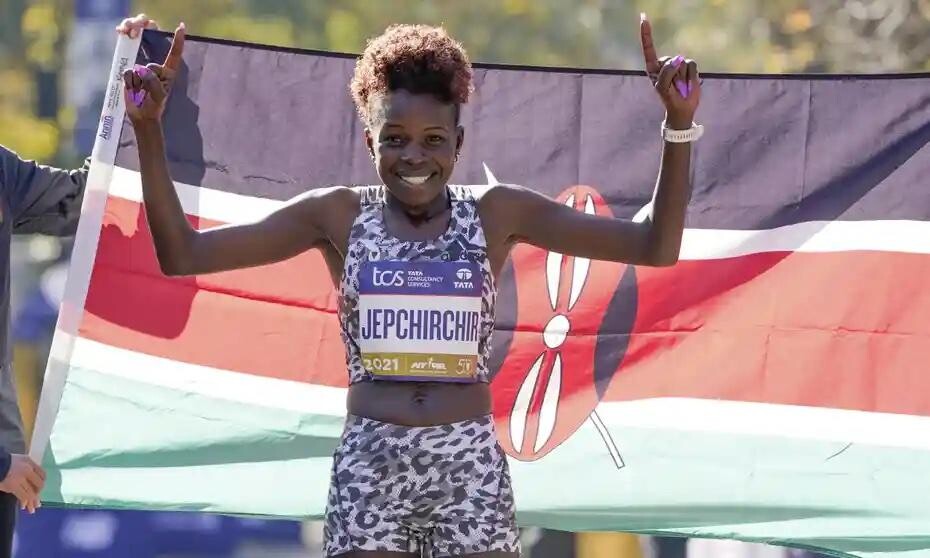
Jepchirchir, of Kenya, is the only athlete – male or female – to have won the Olympic, New York City, and Boston marathons, and is also a two-time world champion in the half marathon. Last year, she won gold in the Tokyo Olympic marathon by 16 seconds, and then four months later ran the third-fastest time in TCS New York City Marathon history (2:22:39) to win the race in her U.S. debut. In April, in a back-and-forth race that came down to the final mile, she fended off Ethiopian Ababel Yeshaneh to take the Boston Marathon title in her debut in the event and will now be racing the Mastercard® New York Mini 10K for the first time.
“I have heard about the Mini and how it is a wonderful celebration of women and running,” Jepchirchir said. “It is very important to me that I use my success to inspire young women and girls coming after me. It is very special to be able to return to New York City after my marathon victories in New York and Boston to be a part of the 50th anniversary of this race.”
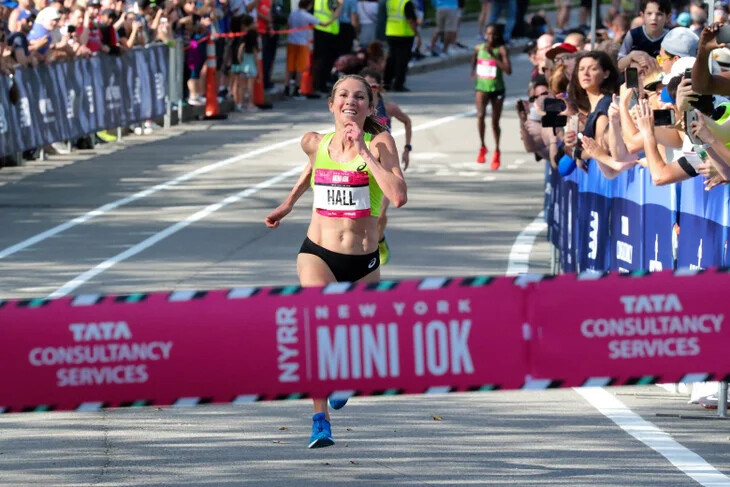
Teferi, of Ethiopia, is a two-time Olympian, two-time world championships silver medalist, and the 5K world-record holder. Earlier this year, she set both the course and event records at the United Airlines NYC Half, finishing in a time of 1:07:35 to win the race. She followed that up a month later by winning the B.A.A. 5K in a course-record time of 14:49. In her NYRR race debut, Teferi won the 2019 UAE Healthy Kidney 10K with a time of 30:59, breaking the previous course record set in 2014 by Joyce Chepkirui.
“My first race in the United States was in New York City in 2019, and I broke the event record at the Healthy Kidney 10K in Central Park,” Teferi said. “Then, earlier this spring, I broke the event record at the United Airlines NYC Half, again crossing the finish line in Central Park. I cannot promise another record on June 11, but I am happy to return to Central Park for my first Mini 10K, and look forward to be joined by thousands of my sisters-in-running.”
Hall, of the United States, who has 10 national titles to her name, ran what was then an American record-breaking 1:07:15 half marathon at the Houston Half Marathon in January. She was the runner-up at the 2020 London Marathon and that same year clocked what was then the second-fastest marathon ever by an American woman at The Marathon Project. She is the two-time reigning champion of the Mastercard® New York Mini 10K, having won the 2019 event that also served as the USATF 10 km championships and then following it up in 2021 with another victory.
“My three races at the Mini have all aligned with big important milestones in the history of the event: The first time hosting the USA Championships in 2019, the first big NYRR race coming out of the pandemic in 2021, and now the 50th anniversary in 2022,” Hall said. “I’m very aware that many of the opportunities I’ve had as an athlete are because of the groundbreaking work of the women who came before me, and of my duty to inspire the young women who will follow me, including my daughters. I will do everything I can to honor all of them with another top finish on June 11.”
The Mastercard® New York Mini 10K will offer $45,000 in total prize money, including $10,000 to the winner of the open division and $2,500 to the winner of the wheelchair division. The professional athlete races will be streamed live on USATF.TV beginning at 7:40 a.m. ET. Mastercard® will serve as title sponsor of the event for the second time, and as part of its on-going partnership with NYRR will also serve as the presenting sponsor of professional women’s athlete field.
To mark the 50th anniversary, several legends and pioneers of the sport will also be joining the Mastercard® New York Mini 10K race weekend festivities this year, including Jacki Marsh-Dixon, the first Mini 10K champion; Kathrine Switzer, the 1974 New York City Marathon champion who also ran the first Mini 10K; Deena Kastor, Olympic medalist and 2004 Mini 10K champion; and Lynn Blackstone, Pat Barrett, Jane Muhrcke, and Nina Kuscsik, four of the “Six Who Sat” at the 1972 New York City Marathon. Both Switzer and Blackstone will run the Mini 10K again this year.
by Letsrun
Login to leave a comment
New York Mini 10K
Join us for the NYRR New York Mini 10K, a race just for women. This race was made for you! It’s the world’s original women-only road race, founded in 1972 and named for the miniskirt, and it empowers women of all ages and fitness levels to be active and to look and feel great on the run. Every woman who...
more...Emily Sisson, Nico Montanez Take 2022 USATF 15-K Titles in Jacksonville
Emily Sisson and Nico Montanez scored convincing wins today at the 45th Gate River Run in Jacksonville, Fla., the traditional home of the USATF 15-K Championships. Sisson, who represents New Balance, successfully defended her 2021 title in 47:28, collecting her fifth national title across all distances and surfaces. Montanez, who trains with the Mammoth Track Club and represents Asics, clocked 43:10 to collect his first national title in any discipline.
While both athletes earned $10,000 in prize money, Sisson won an additional $5,000 for winning the race’s gender challenge. The women were given a six-minute head start and Sisson crossed the finish line one minute and 42 seconds ahead of Montanez.
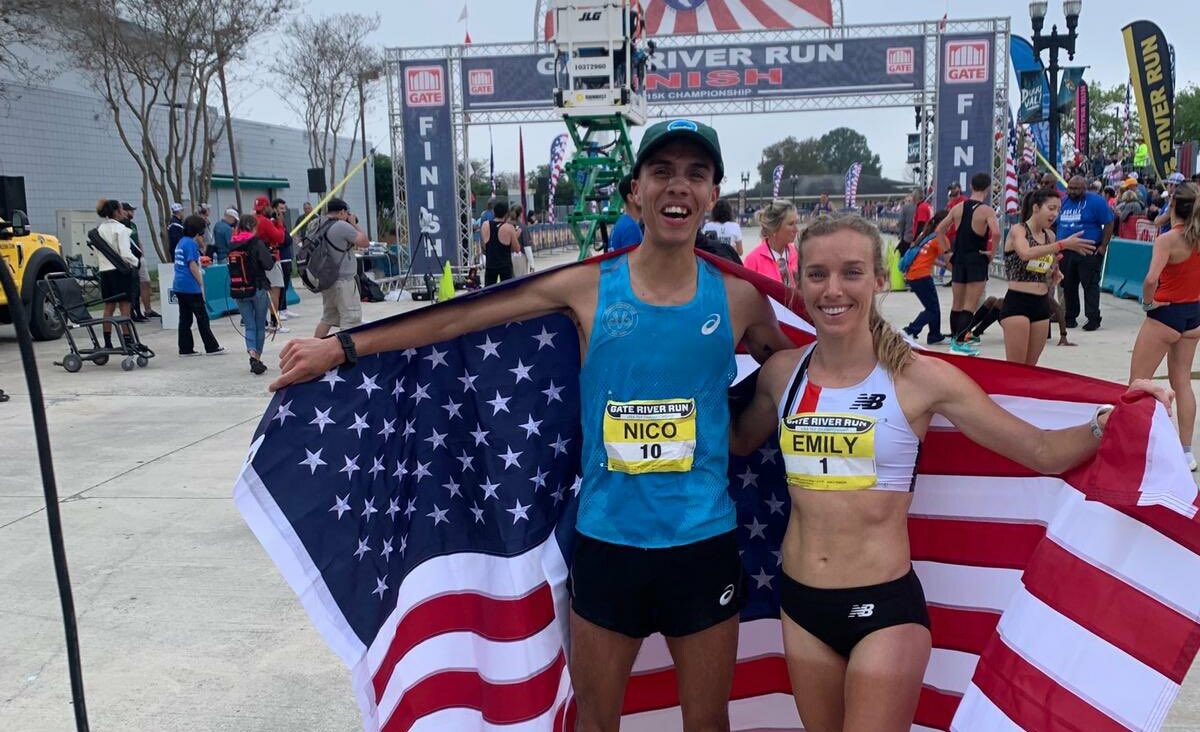
In typically humid Florida conditions, Sisson led the elite women’s race right from the gun. In the early kilometers she had company from both Emily Infeld (Nike) and Emily Durgin (adidas), but by the 5-kilometer mark (15:38) she already had a six-second lead. Running her first race since placing tenth in the 10,000m at the Tokyo Olympics last August, Sisson found herself in the same position as last year: running alone and against the clock.
“It’s my first race back from Tokyo, so it’s just good to push my body that hard,” Sisson told Chris Nickinson of USATF.tv in her post-race broadcast interview. “I haven’t done that in so long now.”
Sisson, 30, who lives in the Phoenix area but has been training recently at high altitude in Flagstaff, Ariz., checked her watch a few times as she clicked off her kilometers in the 3:10 range. Her splits were showing that she had a chance at Shalane Flanagan’s American record of 47:00 set at the same race in 2014. But ascending the 141 foot (43m) high Hart Bridge which begins at about 13 km, Sisson lost too much time and had to settle for the #4 USA performance ever, behind only Flanagan and Olympic bronze medalist Deena Kastor who ran 47:15 in 2003 and 47:20 in 2007.
“It felt good to get out there and hoping this is a good springboard for the rest of the year,” Sisson added.
Emily Durgin was a clear second in 49:17 and Emily Infeld got third in 49:46.
Nico Monatanez Gets 1st National Title
Montanez, 28, who is coached by Andrew and Deena Kastor, stayed tucked-in to the men’s lead pack for nearly the entire race. Two-time Olympic medalist Galen Rupp (Nike) led for more than two thirds of the race, splitting 5-K in 14:27 and 10-K in 28:52 with steeplechaser Hilary Bor (Hoke One One) on his heels. Montanez waited for the incline on Hart Bridge before attacking the field. He quickly opened a big lead. Montanez said that his move wasn’t spontaneous.
“It wasn’t a moment like that where I’m like, oh, I had the lead and time to go,” Montanez said in his post-race broadcast interview. “This thing was planned, it was maneuvered, it was thought out, it was prayed for. This is something that has been on my mind. This is Andrew and Deena Kastor, both of my coaches. This is their recipe.”
Montanez crested the bridge with none of the other men still within striking distance and was able to enjoy the final kilometer to the finish. Behind him, Leonard Korir, a 2016 Olympian, out-sprinted Bor for second place, although both men were given the same time: 43:14. Rupp, who is also running the United Airlines NYC Half on March 20, faded in the last two kilometers and finished seventh in 43:31.
Todd Williams’s championships, race and national record of 42:22, which was set in 1995, stood up yet another year.
The Gate River Run was never cancelled due to the pandemic. It was held on March 7, 2020, just before the initial pandemic shutdown, and race director Doug Alred was able to stage the race in 2021 early in the USA mass-vaccination process by cutting the field size in half to about 6700 finishers and employing social distancing. The event has hosted the USATF Championships since 1994.
The Gate River Run is part of the USATF Running Circuit. The next event is the USATF 1 Mile Road Championships to be held in Des Moines, Iowa, on April 26
Login to leave a comment
Gate River Run
The Gate River Run (GRR) was first held in 1978, formerly known as the Jacksonville River Run, is an annual 15-kilometer road running event in Jacksonville, Fla., that attracts both competitive and recreational runners -- in huge numbers! One of the great running events in America, it has been the US National 15K Championship since 1994, and in 2007...
more...Camille Herron Breaks Her Own 100-Mile World Record- And Then Some
"What a difference a year makes."
That was the first thing Camille Herron had to say when she reflected on her latest record-breaking run at the Jackpot Ultra Running Festival on February 19. Herron, a new addition to the master's division (as of December 2021), opened her 2022 campaign with a commanding performance.
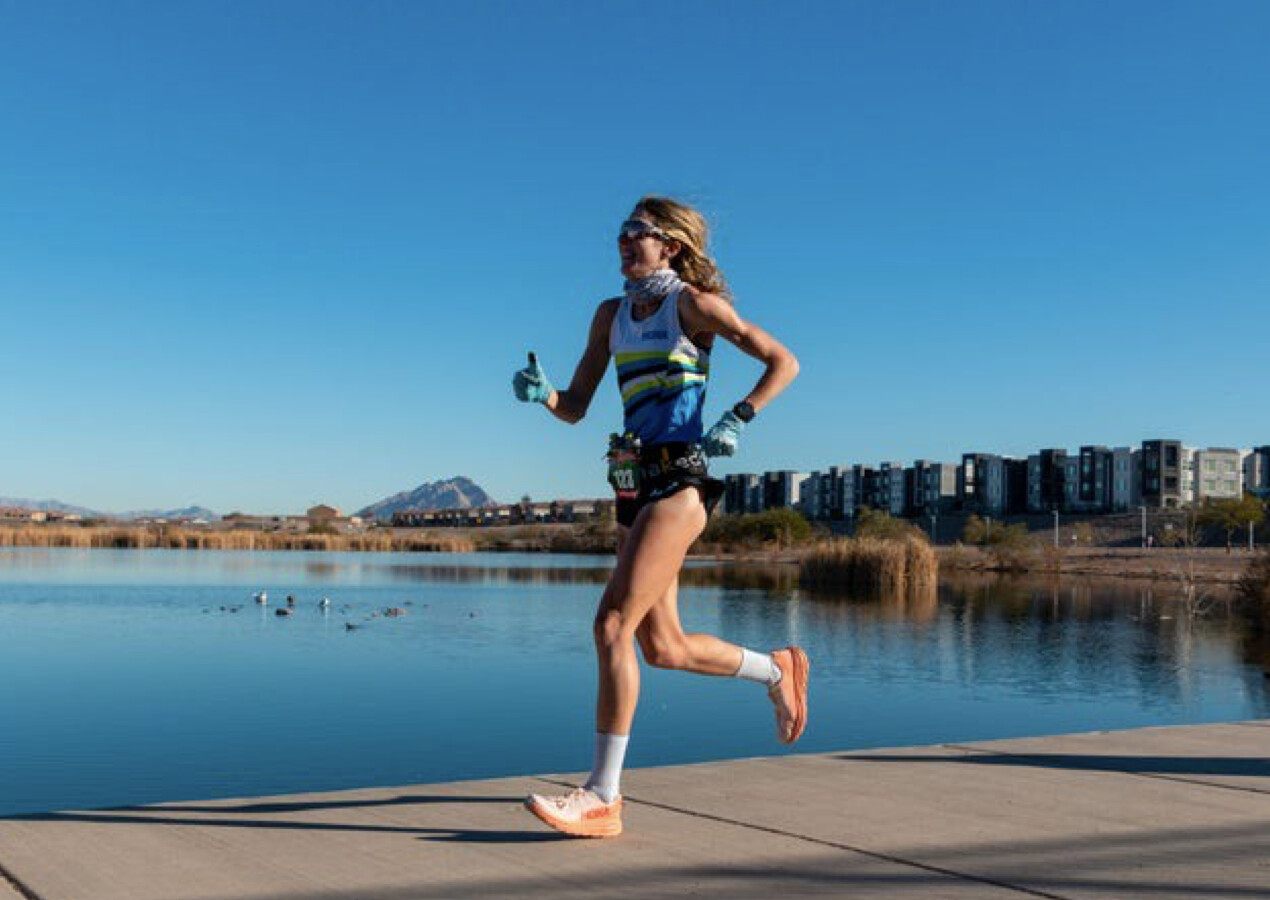
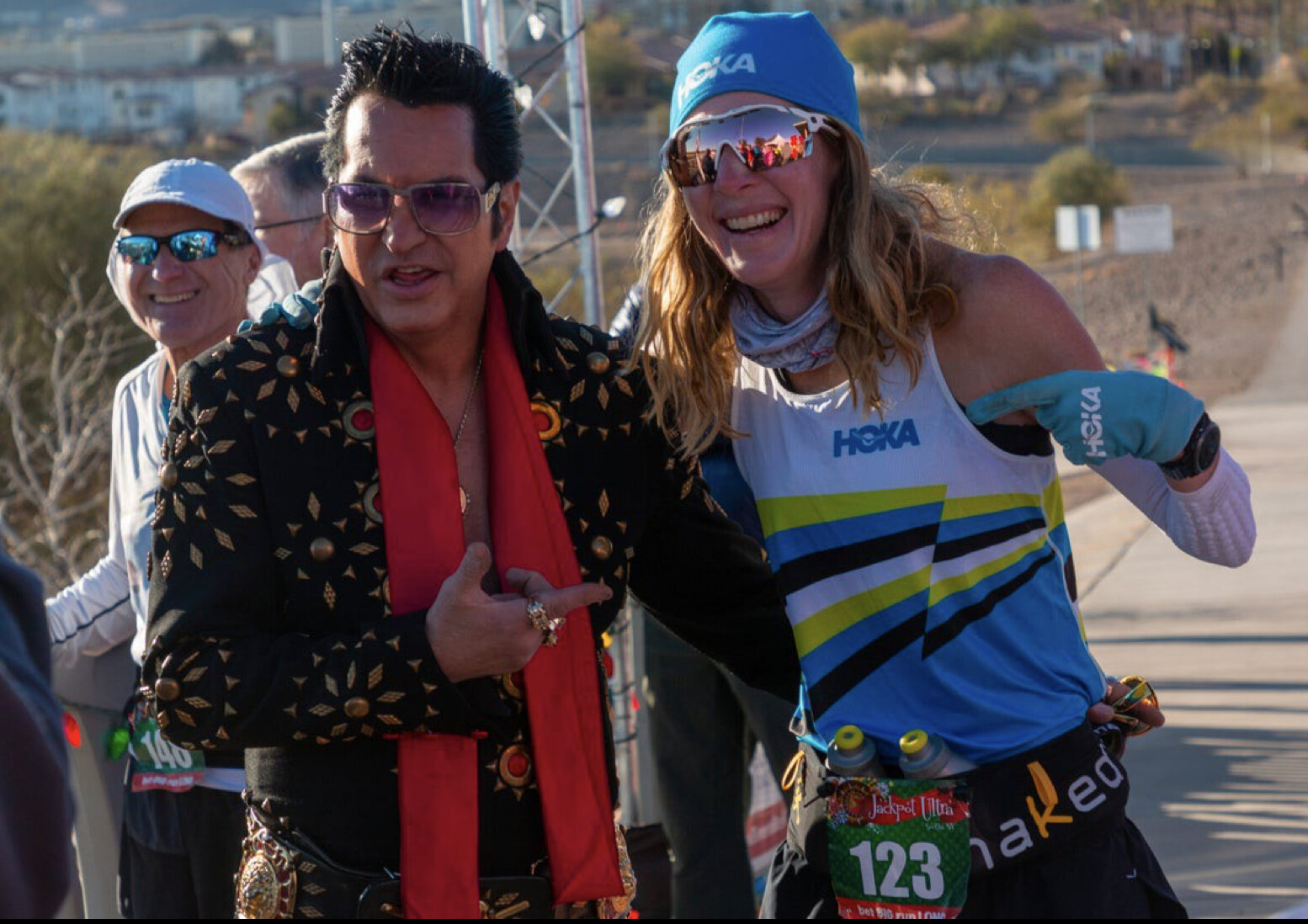
She was the outright winner of the 100-mile race and the USATF 100-mile national champion; she set a 50-mile age group world record (6:08:24), a 12-hour world record (94.5 miles), and a 100-mile world record (12:41:11, breaking her own previous record of 12:42:40 from the 2017 Tunnel Hill 100).
For Herron, this performance, coupled with dominant wins last fall at the Javelina Jundred and Desert Solstice, is just what the doctor ordered after a tough 2021.
"I ran the Jackpot 100 last year and I just didn't feel good during that race," Herron says. "It was the fourth race that I just didn't feel right. I'd hit 40 miles and want to lie down and sleep. That followed me to Western States."
That tired feeling turned out to be a result of high iron levels and low levels of magnesium and vitamin B12. The iron overload was the main culprit, which she learned from InsideTracker data. Most endurance athletes commonly have low iron levels. The result of Herron's iron excess was anemia-like symptoms.
"I was feeling so bad. My breathing was heavy, I was extremely tired, and it wasn't normal race fatigue," Herron says. "It was pretty scary."
To normalize her iron, Herron worked with her longtime friend and dietitian, Jackie Dikos. Together, they mapped out a plan starting in July. By mid-August, Herron "had [her] mojo back and was feeling energized."The jumpstart catapulted Herron back into training, hitting paces she hadn't seen in years. That's when she got the bug to go after her 2017 100-mile record.
The record was something she'd contemplated for 2020 before the pandemic hit. She nearly went for it after feeling better in 2021 at a race in Hungary, but food poisoning pulled her from the start. That was after a hip flexor injury cost her a six-day race in Germany.
Fast forward to Javelina Jundred and Desert Solstice, Herron was looking for redemption.
"Going into Javelina, I was fired up," Herron says. "I was overdue for a good race. I broke the course record by like 49 minutes. I wanted to keep that fire going."Hitting the Jackpot
A week and a half after moving home to Oklahoma after three years in Arizona, Herron was on a plane with her husband and coach, Conor Holt, to Las Vegas for the Jackpot 100. Most of all, she wanted redemption from her 2021 outing there. Breaking 13 hours sounded good, but if her record was in reach, she wanted it.
That's where she found herself at the 50-mile mark. Her 6:08:24 split was enough for the 40-44 age group world record, and that had her on pace for the 100-mile record. She kept her foot on the pedal.
"Between the elevation gain and the heat, it was much more fatigue than I felt in previous world records," Herron says. "I was trying to assess how my body felt at 50, and I was feeling quite a bit of fatigue. I had to wrap my head around having to endure the second half of the race."
Battling minor issues from the heat and a nosebleed, Herron troubleshot everything the race threw at her. Around mile 75, she caught race leader Arlen Glick.
Herron saved time by only stopping once during the entire race. That lone,15-second break came around mile 70, when she shotgunned a non-alcoholic beer: an Upside Dawn Golden from Athletic Brewing."You know when you do long runs and you have a craving for a beer? Because of the iron overload, I've had to cut out alcohol. So, I've been hooked on non-alcoholic beer," Herron says. "I've never done a beer mile, but I guzzled it pretty fast."
With three laps to go of the 85 total, Herron had already secured the 12-hour record. Doing the math, she realized she was 20 seconds under her 100-mile world-record pace. There was no margin for error. With three miles to go, Herron dropped the hammer.
"I went into beast mode," she says. "I thought about Keira D'Amato chasing down Deena Kastor's marathon record. [Keira] powered through those last miles. I channeled that and thought back to what my high school track coach would say, 'Lift your knees. Drive your arms.'"
Holt cheered Herron on until she came across the line in 12:41:11 for the new world record and the outright win. In the final three miles, she went from a 20-second cushion to break the record by almost 90 seconds. Her final mile was 7:08, and her average pace over the full 100 was 7:37.
"As a woman, you can't be afraid that you could win the race," Herron says. "I've done it a few times now. It was added motivation as I was going after [eventual men's winner] Arlen Glick. Everything worked out. Pretty much, every goal I had, I achieved. I was overjoyed."Eyes on the Prize
Herron is back to the top of the 100-mile ranks as she enters her Western States training block. At 40, she's more fired up than ever to deliver the best performances of her career.
"I can remember hitting my 30s and thinking I'm on some downward slope," Herron says. "We need to shift that mindset. When I look at my training logs from 10 years ago, it's crazy. I used to do long runs every Sunday. As I've gotten older, I've taken better care of myself. If I do one or two long runs a month, that's good enough for me. I've said, women ultrarunners age like fine wine. What I may not have in leg speed anymore, I make up in physical and mental strength to keep going."
Herron credits changes in her diet and training, and the addition of a squat rack, for her continued strength as she enters into the master's ranks. These are the tools she plans to use in preparation for Western States. If all goes to plan, she will be a force to be reckoned with come June.
"I just feel like I have to keep going back and try to have a magical day there," Herron says. "Now that I've run the entire course, it's gonna be fun to go back and push my human limits. I'm hoping to have that dream day."
by Trail Runner Magazine
Login to leave a comment
Best Simple Ways to Make Running Feel Easier
Let’s be honest, running isn’t known for being easy. Even professional athletes who run for a living admit that yeah, sometimes it can be really hard. Of course, the more you do it and the more conditioned your body becomes, the easier running feels. But no two runs are ever the same, and some days, it can be really tough to get through a few miles.
The good news? There are things you can do—other than just calling it a day and texting a friend to meet for happy hour (though we definitely recommend doing that after your run, because, balance)—to make it easier on yourself.
Next time you're about to lace up, try these expert-approved tricks for before and during your run to make it feel a little bit easier.
1. Use your core.
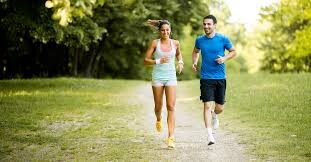
Making a few small tweaks to your running form can make things feel easier, Corrine Fitzgerald, coach at Mile High Run Club in New York City, tells SELF. "Focusing on running tall, being light on your feet, relaxing, and finding your rhythm will help," she says. Also, engage your core. "If your chest is going side to side, your energy is going that way. Pulling the core in and minimizing any side-to-side movement will keep all the energy moving forward," she explains.
2. Set mini distance goals.
If a set mileage or time goal feels daunting, set mini goals throughout your run. “There are so many different variations you can do. You can go by time, distance, or as you’re running you can say, ‘I’ll run to that building and then walk,’” Katie Bottini, a NASM-certified physical trainer and running and triathlon coach, tells SELF. You’ll feel a renewed sense of accomplishment each time you hit one.
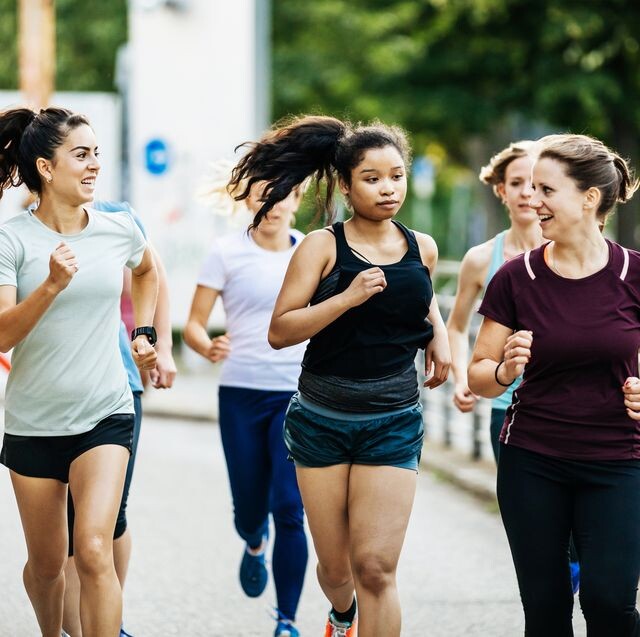
3. Try a new route.
Sometimes running feels hard because you've fallen into a routine and it's become boring. "Find a different way or go on new roads that are more visually stimulating," Bottini suggests. "It may go by a little faster if you’re running and seeing new spots."
4. Warm up.
This sounds so simple, but it's surprising how many runners skip the warm-up because they think they don't need it. "To make a run feel easier, every runner should start with a 5- to 15-minute dynamic warm-up,” says Fitzgerald. “Getting your blood pumping, loosening up your muscles and heating up your core will make the first few miles easier on your body and also reduce the risk for injury.” A dynamic warm-up includes movements such as high-knee marches that stretch your muscles as you move. And don’t forget to cool down after, too!
5. Be flexible.
Sometimes, you go out planning to run 6 miles and end up really only feeling like you can do 4. That’s OK. “You need to be flexible in races and in your workouts,” Skechers Performance athlete Meb Keflezighi tells SELF. If you force yourself to get the mileage in, then it just becomes a chore. “I try to have fun as much as I can with it and try to be flexible once I get out the door and start running. Whether it’s a short or long run, focus on the exhilaration and excitement that you did it,” he adds.
6. Drink coffee.
“Caffeine can give you an energy boost and make your perceived effort go down,” ASICS elite athlete Sara Hall tells SELF. Research has shown that coffee can improve sprint performance and can also improve endurance because it delays the onset of muscle fatigue and central nervous system fatigue. Sip on a cup an hour to 30 minutes before your run so that the effects are in full force by the time you hit the pavement.
7. Breathe.
Of course you’re breathing. But Hall says that when a run starts to feel really tough, she likes to take “deep, cleansing breaths, to become more controlled.” Sometimes simply controlling your breath can make running easier.
8. Think about how cool it is that you can do this.
“Think about the people less fortunate than you who aren’t able to physically do what you can do,” Keflezighi says. A trainer I know ends every class by saying, “Take a moment to be thankful and grateful for the ability to move your body as you did today, because it is a gift.” I think about that when I’m running, and it always puts some extra pep in my step.
9. Slow down.
If you come out of the gates at full speed, it's going to be really hard to maintain. "Slowing down and adjusting your pace as you go is part of the art of running—you have to learn to listen to your body," Hall says. There's nothing wrong with slowing down when you need to and running at a pace that's comfortable. Over time, your comfortable pace will get faster.
10. Keep chafe in check.
“There's nothing worse than running with uncomfortable clothes,” Fitzgerald says. “The dreaded chafing can occur from having clothes loose in a certain area. When we're uncomfortable, we make adjustments to prevent that painful feeling. This is compensation, and can result in you running differently, with bad form.” Ditch clothes that rub or squeeze too tightly. You can also carry an anti-chafe stick (like Body Glide) or a small tube of Aquaphor.
11. Switch to strength.
If you're really not feeling a run, mix it up by adding some strength intervals throughout. "Run five minutes and then stop and do squats and push-ups," Bottini suggests. "Or even, if you're running at a track, run the stadium stairs. Not that it will make running easier, but it makes the run more fun." Running up and down stairs might not be your idea of fun, but it'll break up the monotony if that's what you need.
12. Think about literally anything else.
"Running is great because you can think about whatever serves you in the moment," Deena Kastor, ASICS elite athlete and American record holder in the marathon and half marathon, tells SELF. "Sometimes it’s my to-do list, other times I’m focused on my upcoming race goal or what craft I’ll do with my daughter when she comes home from school." Focus on whatever occupies your mind, but just make sure it's positive so you don't ruin your momentum.
If you’re having a tough time keeping your head in the game, think about why you’re running. What are your goals? Is it race related? Is it health related? Are you trying to PR, or just finish the race? “Whatever that goal is, keep it in mind throughout the run to stay present," Fitzgerald says. "For example, if you are training for a race, visualize yourself succeeding in that race. If you run for fun, then just get lost in your run and have fun with it. Enjoy the process and the journey of becoming and staying a healthy, strong runner."
by Amy Marturana Winderl, C.P.T.
Login to leave a comment
New women American Marathon and Half Marathon records set in Houston
Keira D'Amato just broke the American marathon record after running 2:19:12 at the Houston Marathon today.
Keira D’Amato, a 37-year-old who quit running competitively soon after college, then returned eight years later as a mother of two, broke the American record in the women’s marathon on Sunday.
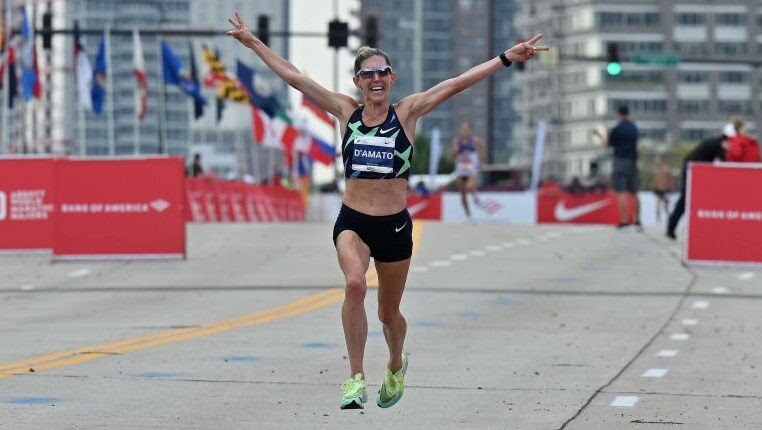
D’Amato won the Houston Marathon in 2:19:12, taking 24 seconds off Deena Kastor‘s record from the 2006 London Marathon.
D’Amato competed collegiately for American University, then gave up middle-distance running in 2009.
She worked in real estate, got married and had two kids. She started running again to lose baby weight, setting a goal to sign up for a marathon.
D’Amato made it to the 2017 Shamrock Marathon in Virginia Beach, hoping to break three hours, and clocked 3:14:54 in sleet, wind and hail. She kept running and lowered her best time over the next three years.
She was 15th at the 2020 U.S. Olympic Trials, then on Dec. 20, 2020, ran 2:22:56 at the Marathon Project in Arizona to become the eighth-fastest American woman in history.
Now she’s tied as the 22nd-fastest woman in history counting all courses, according to World Athletics.
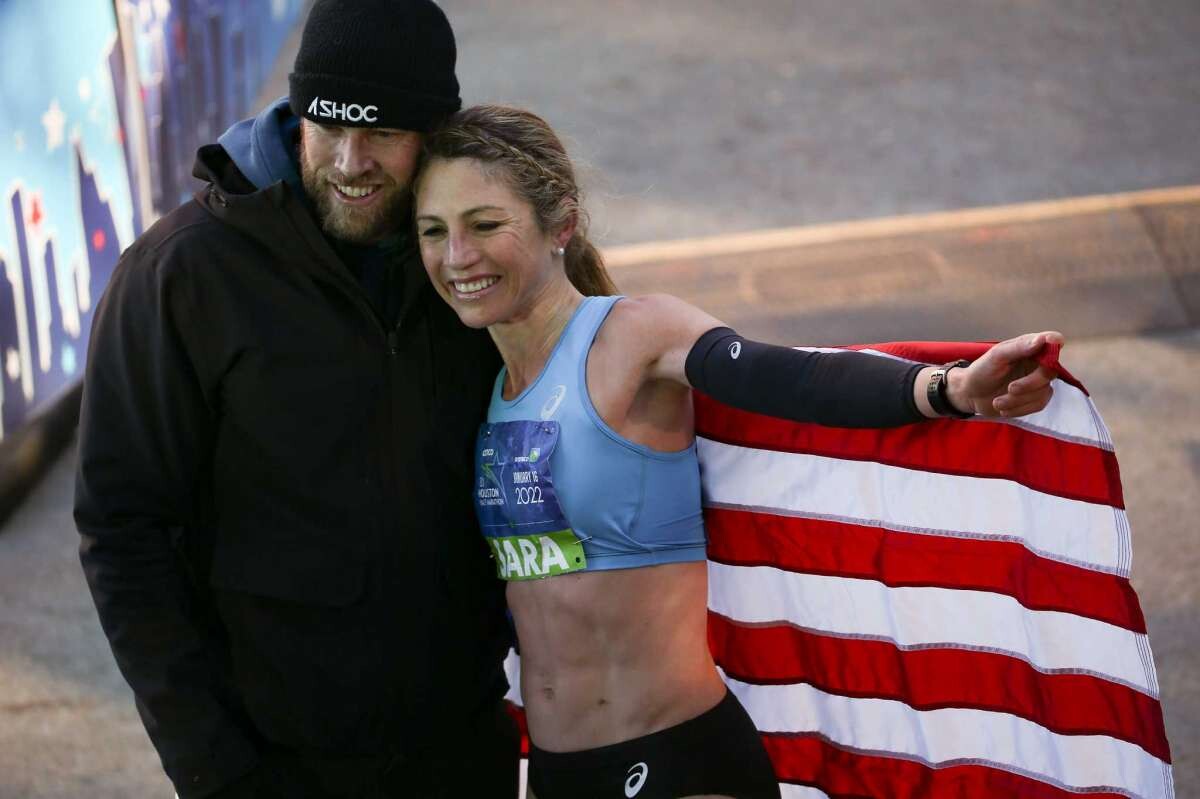
Also in Houston on Sunday, Sara Hall, a 38-year-old mom, broke the American record in the half marathon, clocking 1:07:15, taking 10 seconds off Molly Huddle‘s record from four years ago.
Additionally, Outstanding marathon debut by @LukeACaldwell today with his 2:11:33 run for 7th place at #houstonmarathon - the fastest marathon debut by a Scot, bettering @callhawk 2:12:17 at Frankfurt in 2015.
Login to leave a comment
Chevron Houston Marathon
The Chevron Houston Marathon offers participants a unique running experience in America's fourth largest city. The fast, flat, scenic single-loop course has been ranked as the "fastest winter marathon" and "second fastest marathon overall" by Ultimate Guide To Marathons. Additionally, with more than 200,000 spectators annually, the Chevron Houston Marathon enjoys tremendous crowd support. Established in 1972, the Houston Marathon...
more...Keira D’Amato is set to run fast at the Houston Marathon
On Sunday, Keira D’Amato will head to the start line of the Houston Marathon with the expectation that she will run under two hours and twenty-two minutes. Her current personal best sits at 2:22:56, achieved at the Marathon Project in Arizona, but D’Amato knows, based on her workouts and performances like her 67:55 to win the US Half Marathon Championships in December, that she is fitter than when she ran that 2:22:56 in December 2020. In fact, things are going so well that on December 28, she told Women’s Running that, if she had a strong final month of training, she might even go for Deena Kastor‘s 2:19:36 American record.
That the 37-year-old D’Amato is in a position to even discuss the American record is one of the unlikelier stories in US distance running history. This was a woman who started out as an 800/1500 runner, took seven years away from the sport as she got married, became a mom of two and a full-time realtor, and as recently as 2019 had never run faster than 2:40 in the marathon.
“It seriously blows my mind,” D’Amato told LetsRun on Wednesday. “On my warmup before my workout today, I was thinking that in my second marathon back on my comeback tour [in Richmond in 2017], I went into the marathon thinking that I didn’t think I could break 3:00 that day.”
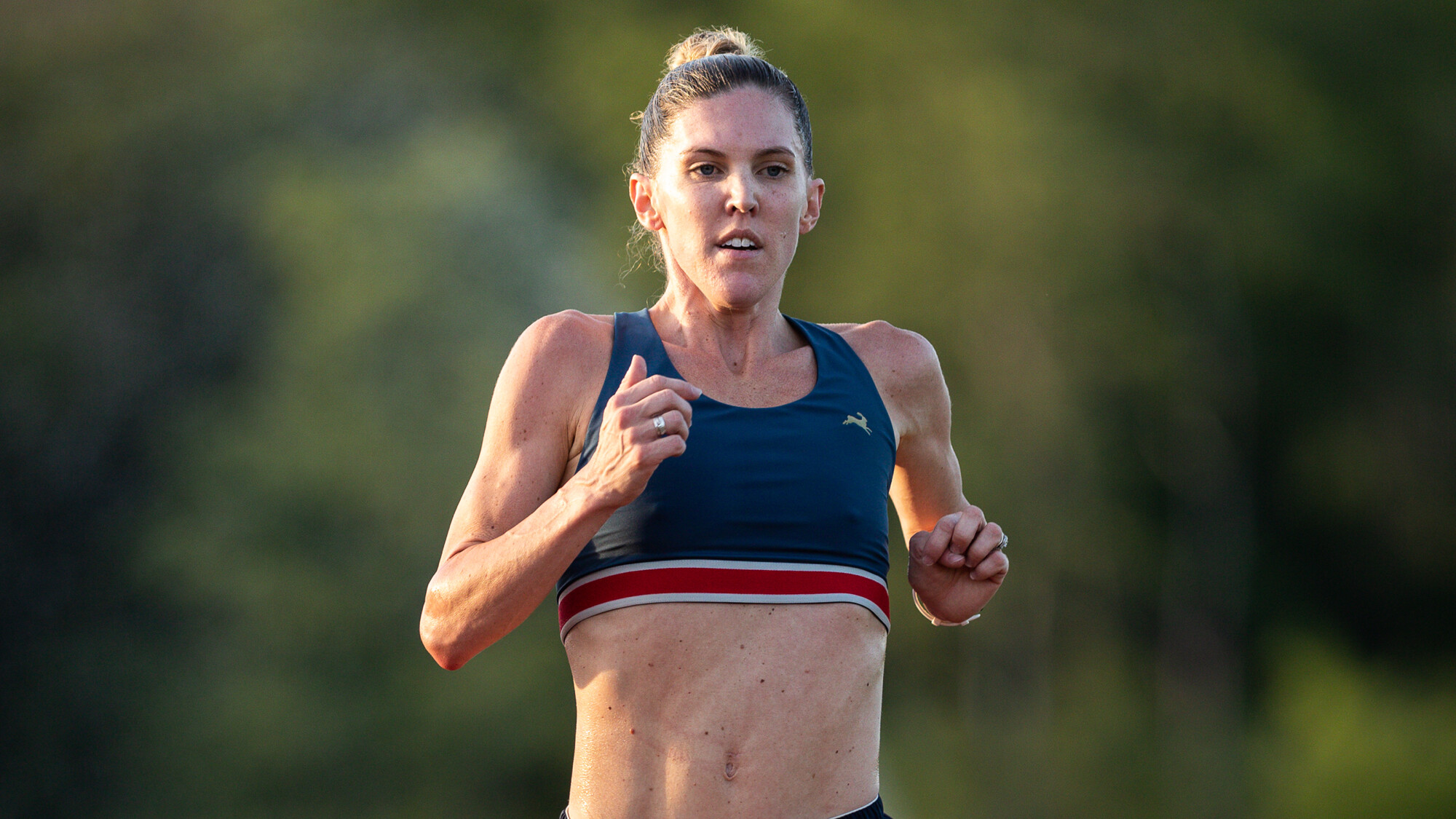
D’Amato wound up running 2:47 and hasn’t stopped improving.
“It’s so hard to wrap my head around it because there’s 50% of my brain that is like, ‘What in the world is going on, how did I get there?’ And there’s 50% that is like really confident, that’s like, ‘Keira, you’ve worked your tail off, you’ve been putting in the miles for years and years and years, and you have, in my opinion, the best coach in the nation, Scott Raczko.'”
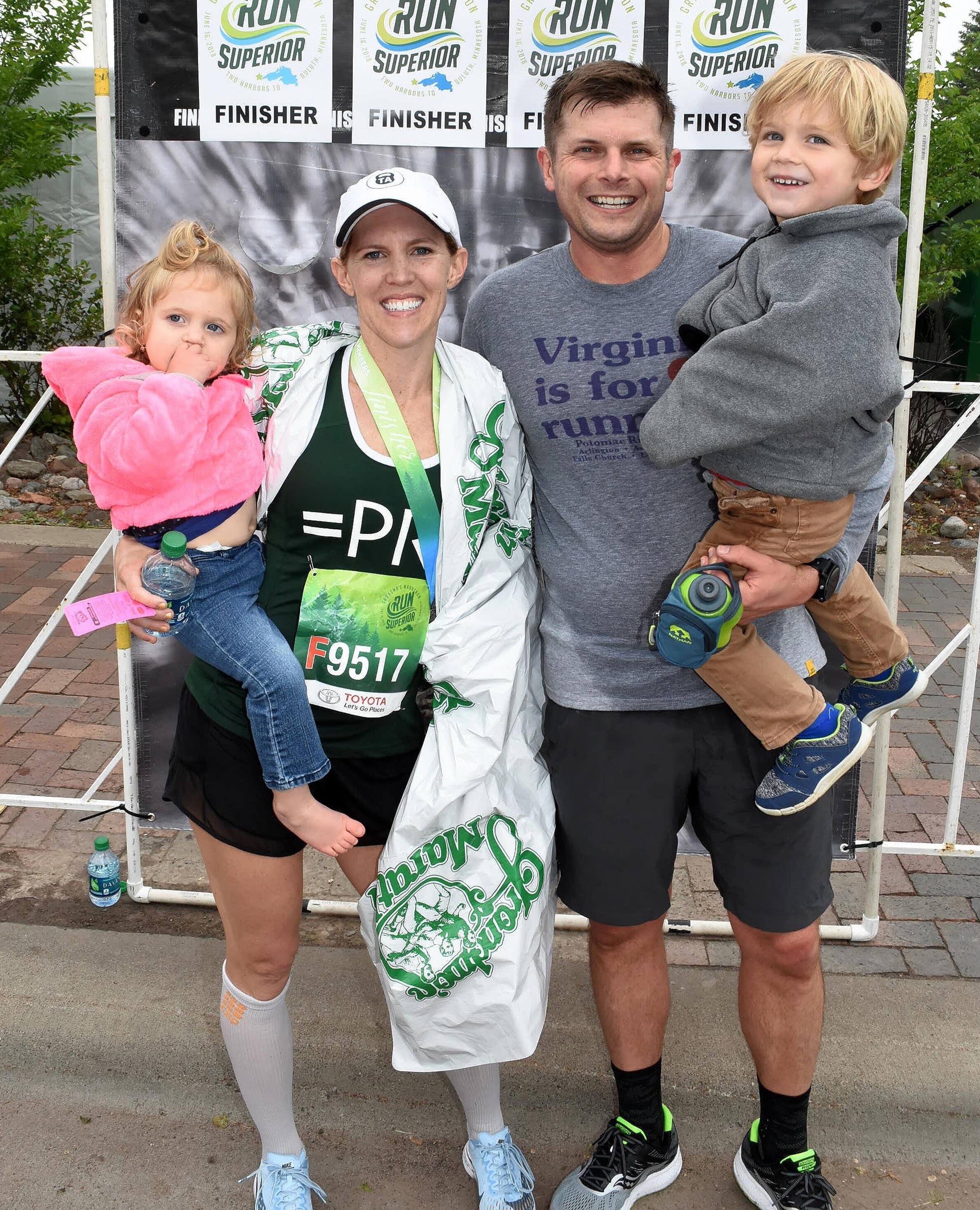
A number of fast Americans will descend on Houston this weekend for the half and full marathons on Sunday. Sara Hall, Nell Rojas, and Annie Frisbie are all set to feature in the half, while 61:00 half marathoner Frank Lara will make his marathon debut. But the most fascinating storyline is D’Amato, who will look to start 2022 with a bang after an up-and-down 2021 season.
Following a 2020 campaign featuring personal best after personal best, D’Amato spent the first half of 2021 battling a hamstring injury. She tried to fight through it but ultimately had to take time off to treat the underlying muscle imbalance, realigning her hips and strengthening her glutes. That recovery knocked her out of the biggest meet of the year, the US Olympic Trials, where D’Amato had planned on running the 5,000 and 10,000 meters.
“It sucked, man,” D’Amato said.
D’Amato started working out again in August and ran the Chicago Marathon in October, finishing 4th in 2:28:22. But she knew she wasn’t at 100%. Under Raczko, D’Amato trains in four-week cycles, building up for those four weeks before taking a down week to reset. Usually, she likes to have four of those cycles under her belt for a marathon; her late start meant she only had two of them before Chicago.
D’Amato will face three-time Houston champion Biruktayit Eshetu Degefa (2:22:40 pb) and 2016 Boston Marathon champion Atsede Baysa (2:22:03) in the women’s race, and while she’d like to earn her first career marathon victory, her focus is squarely on running fast.
Leading into the race, D’Amato has done everything she can to maximize her chance of success. She has still been working her job as a realtor in Virginia, but in recent weeks she has scaled back her hours and not taken on any new clients. She even took her kids out of school this week to limit her exposure to COVID — cases have been on the rise in her area and the last thing she wanted was to withdraw at the eleventh hour because of a positive test (they will return to school after the race). It’s not a decision D’Amato feels completely comfortable with — “I’m definitely not up for any mom of the year awards,” she said — but she hopes she can make it worth it with a special performance on Sunday.
by Jonathan Gault
Login to leave a comment
Chevron Houston Marathon
The Chevron Houston Marathon offers participants a unique running experience in America's fourth largest city. The fast, flat, scenic single-loop course has been ranked as the "fastest winter marathon" and "second fastest marathon overall" by Ultimate Guide To Marathons. Additionally, with more than 200,000 spectators annually, the Chevron Houston Marathon enjoys tremendous crowd support. Established in 1972, the Houston Marathon...
more...How to make a running mantra, for when you need a little motivational self-talk to get you to the finish line
Running is as much mental as it is physical. When you reach the inevitable part in a workout or race when your body wants to give up, it’s your mind that gets you to the end. Developing mental strength is no easy task, and requires constant work to maintain.
Creating a running mantra can help silence negative thoughts and encourage you to push through tough spots, but not just any random combination of words will do. Not sure how to create a mantra of your own? We’re here to help.
Why do mantras work?
It’s very easy for negative thoughts to creep in when you’re completing a hard workout or running a race. As you start to fatigue, thoughts telling you you’re too tired, you’re not good enough, you won’t reach your goal or that you should quit can get louder and louder to the point where it’s difficult to hear anything else. That’s when a mantra comes to your rescue. Having a mantra ready and waiting for when you need it most requires very little thinking or mental energy, but repeating it can drown out the negative thoughts going on in your head.
In fact, a 2017 study found runners who were completing a 60-mile (95Km) overnight race reported that using a mantra was helpful both in training and racing, and continued to use their mantras even after the study was complete.
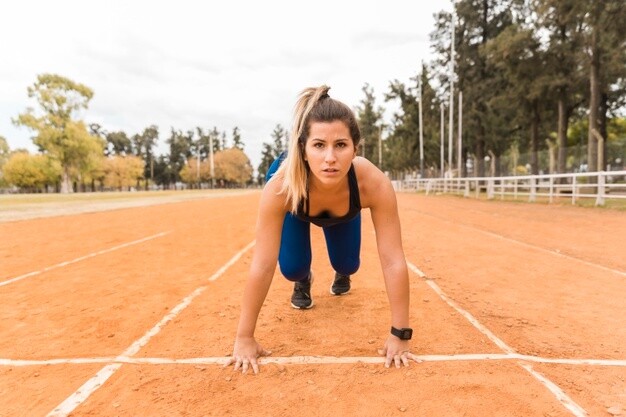
The anatomy of a good mantra
A mantra can be whatever you want it to be, but there are a few things to keep in mind if you want it to be effective. Use these guidelines to create your own personalized motivational mantra:
It should be short. You want your mantra to be easy to remember and easy to repeat, so a long-winded phrase is not a great option here. Usually one or two affirmative words that bolster your confidence is all you need.
Use your struggles as inspiration. Do you lack confidence in yourself in the later stages of a race? Do you get stressed or begin to panic when it starts to get difficult? These are the things you want your mantra to address. If you lack confidence, a simple phrase like “I am strong” or “I can do hard things” can remind you what you’re capable of. If you start to feel stressed during the race, something like “stay calm, stay relaxed” could be exactly what you need to turn those feelings around.
Remind yourself why you’re doing this in the first place. When you get to the hard part of a run, workout or race, you might find yourself asking why you do this at all. In this case, you could use your mantra to remind you why you’re out putting one foot in front of the other. For example, “I’m loving this challenge,” or even simple, “I am a runner,” can remind you that you love the sport, and turn it around in your mind to be a fun experience.
Examples of elite mantras
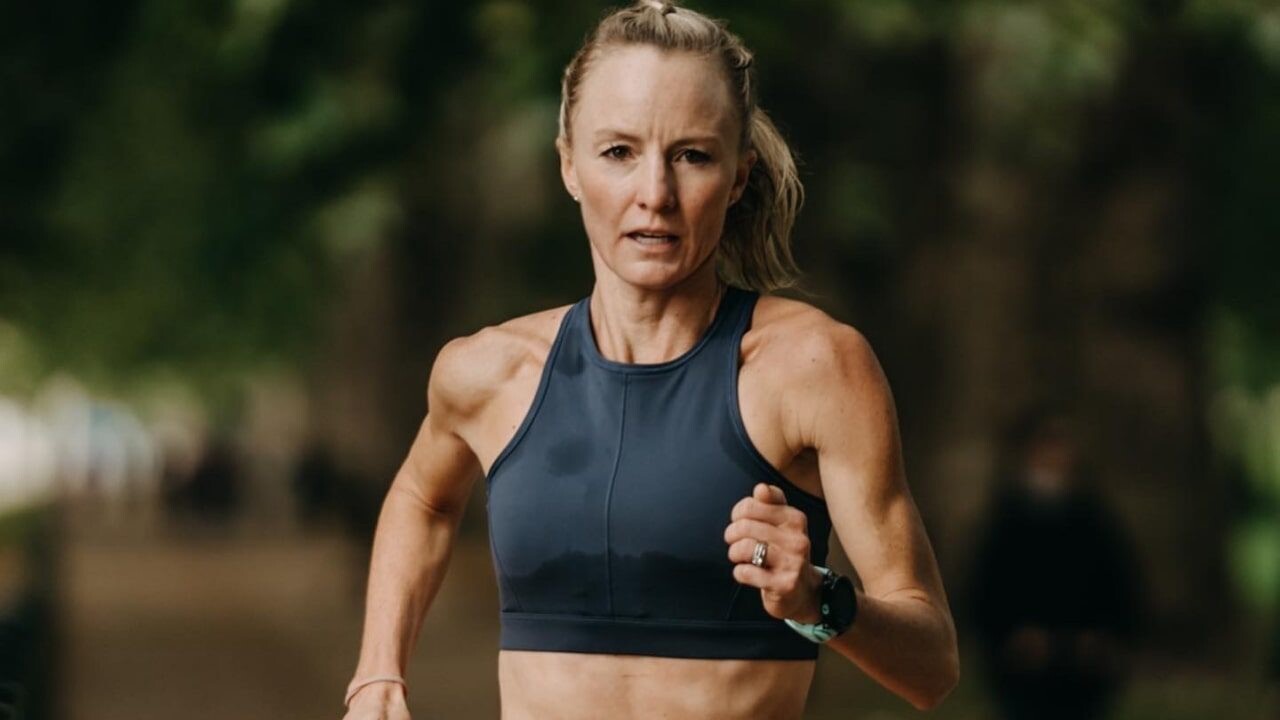
If you’re having trouble figuring out a mantra that resonates with you, take inspiration from one of these elite runners instead:
Shalane Flanagan: Run without any regrets
Kara Goucher: Fighter
Deena Kastor: Go Faster. Push Harder. Today, Define Yourself.
Bill Rodgers: Relentless
It may take some trial and error for you to find a mantra that works for you. Start practicing them in your harder workouts and runs so that by the time race day arrives, you’re armed with the words to get you to the finish line.
by Brittany Hambleton
Login to leave a comment
Bernard Lagat and Deena Kastor to Join TCS New York City Marathon Broadcast Team
Five-time Olympian Bernard Lagat and Olympic medalist and American record holder Deena Kastor will join fellow Olympian Carrie Tollefson as part of the broadcast team for the 50th running of the TCS New York City Marathon on Sunday, November 7, which will be aired live on ABC7/WABC-TV in the New York City area and on ESPN2 nationwide.
WABC-TV and ESPN have been home to the award-winning broadcast of the world’s largest marathon since 2013. The race will be available globally in more than 180 countries and territories and in over 500 million homes through various international broadcast partners.
The trio of Olympians will join a team of 15 commentators, led by ESPN’s John Anderson, who will serve as race-day host and play-by-play analyst for his eight consecutive race. Both Lagat and Tollefson will join Anderson in the commentary booth. Kastor will join Lewis Johnson in covering the professional athlete races throughout the course from the women’s and men’s motos, respectively. Johnson will then join ABC7’s Sam Ryan in hosting the post-race award ceremonies for the champions.
Lagat competed at every summer Olympics on the track from 2000 to 2016, winning a silver and bronze medal in the 1,500 meters in 2004 and 2000, respectively. He ran the TCS New York City Marathon in 2018, finishing as the top men’s masters athlete. He will now make his broadcast debut at the event at the same time his sister, Viola Cheptoo, makes her marathon debut in the professional athlete field.
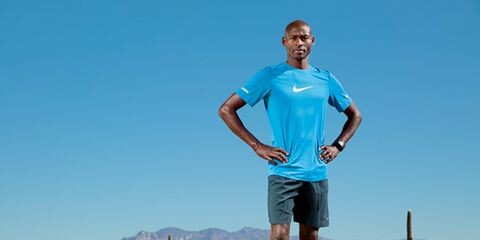
“In 2008, I got to watch the TCS New York City Marathon from a lead vehicle, and in 2018 I ran New York for my debut marathon,” Lagat said. “I’m excited that in 2021, I get to see the race unfold from yet another angle – in the broadcast booth. I hope my experiences as an athlete can add a different perspective to the race for those watching throughout New York City and across the country.”
Kastor is the American record holder in the marathon and a three-time Olympian who won a bronze medal at the Athens 2004 Games. She finished as the top American woman in her marathon debut at the 2001 New York City Marathon in an American debut record time, and had three top-10 finishes at the event in her career.
“Twenty years ago, I fell in love with the marathon distance when I debuted at the New York City Marathon,” Kastor said. “I feel privileged to commentate on this historic race by joining the ESPN2 broadcast with my fellow Olympians Bernard Lagat and Carrie Tollefson. I can’t imagine a better way to celebrate 50 years of this race.”
The group will be joined by a talented array of reporters at the start, finish, along the course, and in the sky, including ABC7’s Eyewitness News reporters Ryan Field, Anthony Johnson, Kemberly Richardson, Michelle Charlesworth, Lee Goldberg, John Del Giorno, and Josh Einiger.
The international feed will be led by local sports radio personality Ed Cohen calling the play-by-play, and veteran track and field broadcaster, Paul Swangard.
The broadcast, produced in coordination with 45 Live and distributed by IMG, will air on ABC7/WABC-TV and ESPN2 from 8:30 a.m. to 11:30 a.m. EST. Pre and post-race coverage will air on WABC-TV from 7:00 a.m. to 8:30 a.m. EST, and 11:30 a.m. to 1:30 p.m. EST.
Long-time director of the broadcast Bruce Treut, who has directed every New York City Marathon broadcast since 1989, is handing the reins to Brigette Boginis. Boginis, the first women at the helm of the show, will pick up Treut’s duties directing 35 live cameras.
The 50th running of the race will also stream live on abc7ny.com, and the ABC7New York app in the tristate viewing area and the ESPN App nationally from 8:30 a.m. to 1:00 p.m. EST. Pre-race and continuing coverage will also be streamed live nationally on ESPN3 (accessible on the ESPN App and ESPN.com) from 7:00 a.m. to 8:30 a.m. and from 11:30 a.m. to 1:00 p.m.
A two-hour encore presentation of the race broadcast will air on ABC affiliates around the country from 4:00 p.m. to 6:00 p.m. EST and on ESPN2 from 8:00 p.m. to 10:00 p.m. EST.
International broadcast partners secured by IMG for the race include: ESPN Brasil (Brazil), SMG Sports (China), Eurosport (Pan Europe, Pan Asia, India), L’Equipe (France), RAI (Italy), TV Asahi (Japan), Sky Mexico (Mexico), NOS (Netherlands), New Zealand (Sky), SuperSport (South Africa), ESPN International (South America), and TVE & Esports3 (Spain).
This year’s broadcast features an engaging story on U.S. Olympic marathon medalist Molly Seidel; a look back at the first New York City Marathon in 1970 through the spoken word of its first champion, Gary Muhrcke; and an insightful piece on New York City during the pandemic from the perspective of Ana Johnson, an Oncology Nurse at Memorial Sloan Kettering Cancer Center racing in the professional women’s field.
by Running USA
Login to leave a comment
TCS New York City Marathon
The first New York City Marathon, organized in 1970 by Fred Lebow and Vince Chiappetta, was held entirely in Central Park. Of 127 entrants, only 55 men finished; the sole female entrant dropped out due to illness. Winners were given inexpensive wristwatches and recycled baseball and bowling trophies. The entry fee was $1 and the total event budget...
more...Ruth Chepngetich went out at world record pace in Chicago
In the first major race in the U.S. since the pandemic began, the American women had their best showing at the Chicago Marathon since 1994 Sunday October 10.
Ruth Chepngetich of Kenya did it the hardest way possible, but after starting the 2021 Chicago Marathon at a blistering pace, she held on for the win on Sunday, finishing in 2:22:31. Emma Bates and Sara Hall placed second and third, respectively—the first time since 1994 that two American women finished the race in the top three.
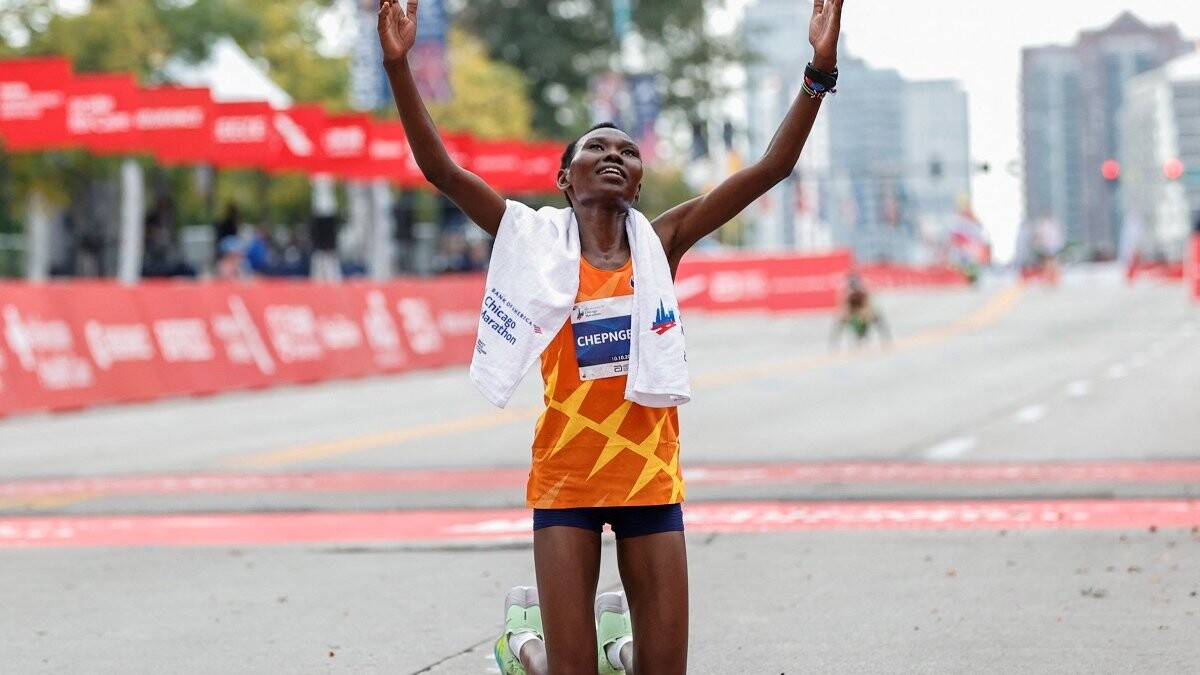
Chepngetich, 27, was racing among some of the elite men in the first half of the race, touching a potential 2:11 finish time at one point (the world record is 2:14:04, set by Brigid Kosgei at the 2019 Chicago Marathon). She began to slow right before hitting 13.1 miles in 1:07:34 and faded drastically over the final miles, her slowest 5K split was her final one, 18:15, compared to her first, which was 15:37. It was Chepngetich’s first race in the United States and she was greeted with some steamy midwest conditions—at the start it was 70 degrees with 70 percent humidity.
The victory was a bit of a redemption run for Chepngetich, who dropped out of the Olympic marathon in August.
“The race was good; it was nice,” she said afterward, “but it was tough. To push alone is not easy.”
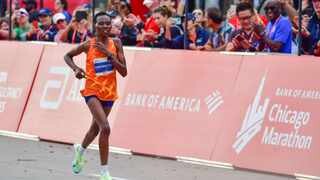
Bates, 29, executed an opposite race strategy, starting off conservatively and closing the last 10K with her fastest miles. It resulted in a personal best on two levels: her time, 2:24:20, and her first podium finish at a World Marathon Major event. Since placing seventh at the U.S. Olympic Marathon Trials, then fourth in December at the Marathon Project (2:25:40), Bates moved from her base in Idaho to Boulder, Colorado, to join Team Boss, the training group coached by Joe Bosshard.
“I didn’t want to push too much, too soon, and so I went through halfway still feeling really, really good,” Bates said. “And then I was like, ‘Oh crap, I don’t know how far ahead all these women are.’ I was getting a little nervous and I needed to pick it up. I just started slowly and surely just like picking it up, just bit by bit.”
As Bates stepped it up, she was able to catch the U.S.’s Keira D’Amato, who ultimately placed fourth in 2:28:22, and Hall, as well as Vivian Kipligat, who had spent most of the race in second place but finished fifth in 2:29:14.
“Having all those people lining the streets again just really gave me the energy to press on and really pick up my legs faster,” said Bates, who is now the ninth-fastest American woman at the 26.2-mile distance.
It was the first major marathon held in the U.S. since the pandemic shut most events down for the past 19 months. The 2021 Boston Marathon, delayed from its typical April date, will also go off on Monday.
Hall, 38, who lives in Flagstaff, Arizona, was able to compete at an impressive level through the pandemic, becoming the second-fastest American woman in history when she finished the Marathon Project in 2:20:32. She had originally planned to go for the American record on Sunday, but changed her objectives because of the weather. Deena Kastor keeps that title for now, running 2:19:36 at the 2006 London Marathon.
It was Hall’s second top-three finish at a World Marathon Major event—she placed second at the 2020 London Marathon, out-sprinting Chepngetich in the final meters of that elite-only race around Buckingham Palace. On Sunday Hall said she thought she had started the race at a conservative pace (she went through the halfway point in 1:11:37) but the humidity caught up with her over the second half. Still, she said she’s “in the best shape of my life” and will continue pursue that record if the opportunity presents itself—it’s a matter of having the fitness on the right day with the right conditions.
“I’m really excited to have a chance to go for [the American record] sometime. I knew today wasn’t going to be the day to do that,” Hall said. “I would have had to be in sub-2:18 shape to try for that today, maybe even faster. It’s going to take preparation meeting opportunity…hopefully in the near future I’ll get a stab at that.”
With all six major marathon events being held within a short window this season, the elite fields were spread thin between them, giving the American women a chance to showcase their talent in Chicago, placing seven in the top 10.
Chepngetich wins $55,000 for first place, while Bates takes home $45,000 for second place, Hall banks $35,000 for third, and D’Amato wins $25,000 for placing fourth.
by Erin Strout (Women’s Running)
Login to leave a comment
Bank of America Chicago
Running the Bank of America Chicago Marathon is the pinnacle of achievement for elite athletes and everyday runners alike. On race day, runners from all 50 states and more than 100 countries will set out to accomplish a personal dream by reaching the finish line in Grant Park. The Bank of America Chicago Marathon is known for its flat and...
more...Kenya’s Reuben Kipyego and Ruth Chepngetich will target Chicago Marathon crowns
Reuben Kipyego and Ruth Chepngetich head the fields for the Bank of America Chicago Marathon on Sunday (10), with Sara Hall and Galen Rupp leading US hopes at the World Athletics Elite Platinum Label road race.
After action in Berlin and London in recent weeks, Chicago is the next race in a busy period of major marathons and the Boston event follows just one day later. The weather in Chicago looks set to be warm, with temperatures of around 21°C expected for the start of the elite races at 7:30am local time.
The last edition of the Chicago Marathon in 2019 saw a world record fall as Kenya’s Brigid Kosgei clocked 2:14:04 to take 81 seconds from Paula Radcliffe’s 2003 mark. This time her compatriots Chepngetich, who won the 2019 world title, and Vivian Kiplagat are among the athletes in the spotlight.
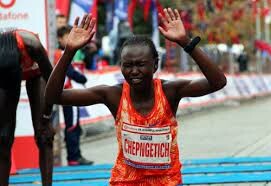
Chepngetich sits fourth on the women’s marathon all-time list thanks to the 2:17:08 PB she set when winning in Dubai in 2019 and she ran a world half marathon record in Istanbul in April with 1:04:02. The 27-year-old was unable to finish the Olympic marathon in Tokyo but is looking forward to her US debut race in Chicago.
“I have never raced in the States and making my debut in such a great race like the Bank of America Chicago Marathon is more than a dream to me,” she said. “I will give all myself trying to run as fast as possible.”
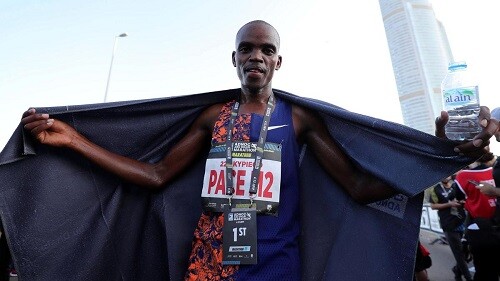
Hall will be among those looking to challenge her. The US athlete beat Chepngetich at last year’s London Marathon, as the pair finished second and third respectively behind Kosgei, and Hall went on to run a PB of 2:20:32 in Arizona a couple of months later. Now she has her eye on Deena Kastor’s 2:19:36 US record, should the conditions allow.
“When I thought about where I wanted to chase the American record, I thought it would be more exciting to do it at home, in the US, and Chicago is such an epic race,” she said.
The other sub-2:25 women in the field are Kiplagat, the USA’s Keira D'Amato and Ethiopia’s Meseret Belete. Kiplagat, who ran her marathon PB of 2:21:11 in 2019, clocked 2:39:18 in Eldoret in June but showed her current form with a personal best performance in the half marathon of 1:06:07 in Copenhagen last month. Like Hall, D'Amato also ran a PB in Arizona in December, clocking 2:22:56, while 22-year-old Belete – who was sixth at the 2018 World Half Marathon Championships and ran a world U20 best of 1:07:51 later that year – has a marathon PB of 2:24:54 set when finishing fourth in Houston last year.
Among those joining them on the start line will be the USA’s Emma Bates, Diane Nukuri and Lindsay Flanagan.
Kipyego ready to turn up the heat
With his PB of 2:03:55 set at the Milan Marathon in May, Kipyego goes into the Chicago race as the second fastest man in 2021. The 25-year-old made his marathon debut in Buenos Aires in 2019, clocking 2:05:18, and later that year he improved to 2:04:40 to win in Abu Dhabi, despite having started the race as a pacemaker. He also seems unfazed by the warmer than expected temperatures, simply replying: ‘No problem’ at the pre-race press conference when asked about the weather.
Ethiopia’s Seifu Tura, meanwhile, explained how he is not as comfortable in the heat but he will go into the race looking to build on the 2:04:29 PB he set when finishing fourth in that same Milan Marathon in May. He also has experience of the Chicago event, having finished sixth in 2019 in 2:08:35.
Rupp leads US hopes as the 2016 Olympic bronze medallist returns to action after his eighth place in the Tokyo Olympic marathon nine weeks ago and third-place finish in the Great North Run half marathon in 1:01:52 last month. Eighth fastest among the entries, his PB of 2:06:07 was set in Prague in 2018 but he will be looking to regain the crown he claimed in 2017.
Kenya’s Dickson Chumba is also a former Chicago winner, having triumphed in 2015, and he set his PB of 2:04:32 in the same city the year before that. The fourth sub-2:05 runner in the field is Kengo Suzuki, who broke the Japanese record with his 2:04:56 to win the Lake Biwa Marathon in February.
Kenya’s Eric Kiptanui is also one to watch. Having helped to pace world record-holder Eliud Kipchoge in the past, the 58:42 half marathon runner made his own marathon debut last year and improved to 2:05:47 to win in Siena in April.
“I was so happy to run 2:06 for my first marathon,” he told NN Running Team. “What it proved to me was, yes, I was in good shape but that I had the mentality to perform over the marathon distance.” Looking ahead to Chicago, he added: “I aim to run 2:03/2:04 but my first priority is to win the race."
Ethiopia’s Chalu Deso and Shifera Tamru have respective bests of 2:04:53 and 2:05:18, while Ian Butler, who is coached by former world record-holder Steve Jones and balances his running with his job as a teacher, is the second-fastest US runner in the field with a PB of 2:09:45 set in Arizona last year.
by Jess Whittington for World Athletics
Login to leave a comment
Bank of America Chicago
Running the Bank of America Chicago Marathon is the pinnacle of achievement for elite athletes and everyday runners alike. On race day, runners from all 50 states and more than 100 countries will set out to accomplish a personal dream by reaching the finish line in Grant Park. The Bank of America Chicago Marathon is known for its flat and...
more...Previous champions will headline the men's and women's races at the 125th Boston Marathon
It’s official – Boston is back with 20,000 of the world’s best marathoners taking to the start line on Monday, Oct. 11. This year’s field is locked and loaded, for the first-ever fall edition of the marathon.
This race will feature a massive elite field of 140 athletes, headlined by previous champions Lelisa Desisa, Des Linden and Edna Kiplagat plus top American runners Jordan Hasay, Molly Huddle and Abdi Abdirahman.
The women’s race
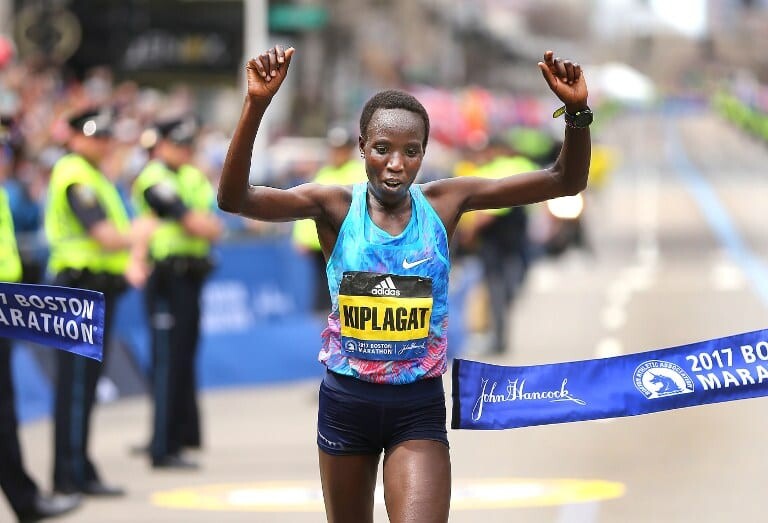
The women’s race only features two women who have run under 2:20, Mare Dibaba of Ethiopia (2:19:52) and 2017 champion Kiplagat (2:19:50). Kiplagat has raced twice this year at NYRR races, finishing sixth and third. This will be her first marathon since finishing second at Boston in 2019. Dibaba had a DNF in 2019 and was plagued with an injury at the start of the pandemic. This race will mark the return of the 2015 world champion to the marathon distance.
Another athlete to keep your eye on is Kenya’s Angela Tanui, who won the Siena Marathon in Italy earlier this year, running a nine-minute personal best of 2:20:08. Atsede Bayisa of Ethiopia, who is a part of the NN Running Team, is competing as well, after taking four years off competition. Bayisa has two road race victories to her name, which came during her training build-up to Monday’s race. Former 10-mile world record holder Caroline Chepkoech makes her marathon debut, with a half marathon personal best of 1:05:07. Chepkoech has recently changed citizenship from Kenya to Kazakhstan and will be representing her new country at this event.
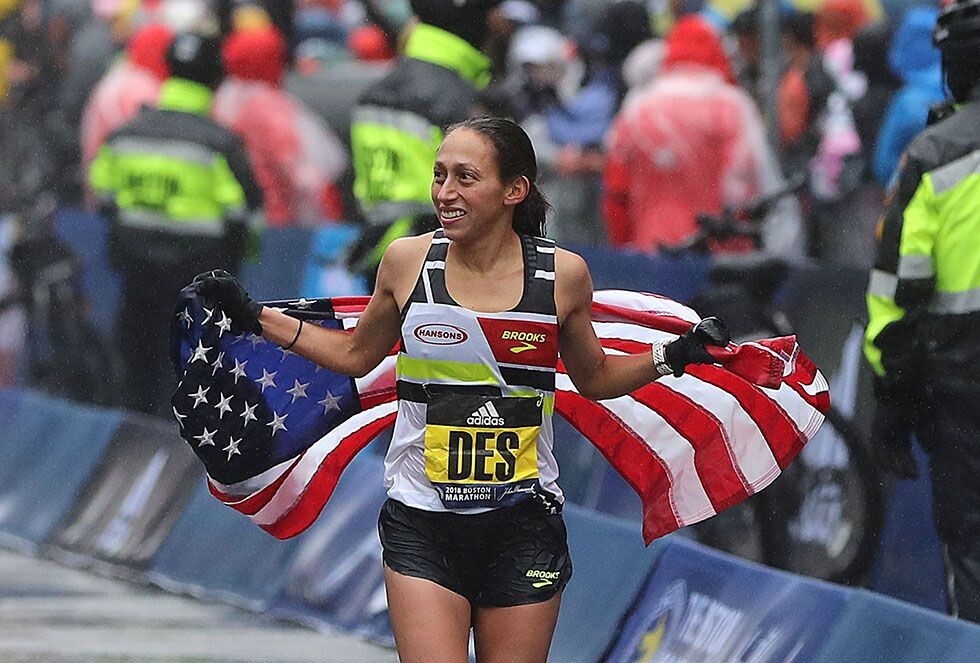
Outside of the international favorites, American track fans continue to wait for Hasay’s breakthrough. She has been third at two major marathons and has been agonizingly close to Deena Kastor’s American record, running the second-fastest time by an American (2:20:57 at Chicago 2017). Since then Hasay has changed coaches, from the controversial Alberto Salazar to former marathon world record holder Paula Radcliffe, when the Nike Oregon Project disbanded due to Salazar’s investigation. Linden was the last American to win the Boston Marathon, in 2018, and will be running Boston for her seventh time. She enters the race with a PB of 2:22:38.
Toronto’s Brittany Moran is the only elite Canadian in the women’s field, coming in with a personal best of 2:36:22. Moran won Toronto’s Yorkville 5K in mid-September in a time of 16:40.
The men’s race
The men’s race is loaded, having eight men who have run under 2:06. It is headlined by two-time Boston champion, Ethiopia’s Lelisa Desisa. Desisa is one of the best marathoners in the world in recent years, having won the event twice in 2013 and 2015, and finishing second in 2016 and 2019. Desisa will be challenged by his countrymen Asefa Mengstu (2:04:06) and Lemi Berhanu (2:04:33). Berhanu beat Desisa to get on the 2016 Ethiopian Olympic team, but has only finished one of his last five marathons, which was a second-place finish at Toronto’s Scotiabank Waterfront Marathon in 2019.
Kenya’s Benson Kipruto (2:05:13) and Wilson Chebet (2:05:27) are two experienced racers in the field who can wear down opponents over the Newton hills. Kipruto won the 2018 Scotiabank Toronto Waterfront Marathon. 2012 Olympian Dylan Wykes is the top-seeded Canadian in the field, with a personal best of 2:10:47. The last time Wykes competed in a marathon was at the Scotiabank Toronto Marathon in 2019, where he placed 30th. Rory Linkletter from Alberta will compete in his first Boston Marathon, and will look to follow in the footsteps of his U.S. Hoka NAZ Elite training partner Scott Fauble, to run under 2:10 at this race. Linkletter ran his marathon personal best of 2:12:54 at the Marathon Project in 2020. Thomas Toth (2:16:28) of Ontario is the other Canadian in the men’s elite field. 44-year-old American runner Abdirahman will be on the start line as the top U.S. athlete, only 64 days after he competed in the Tokyo Olympic marathon.
The 2021 Boston Marathon will mark the first time the race will take place on the same day as a Boston Red Sox playoff game. The Red Sox will play Game 4 of the ALDS series at Fenway Park on Monday evening. The weather is calling for 17 to 20 degrees C in the morning, with only a 20 per cent chance of precipitation.
How to watch the 2021 Boston Marathon
Live coverage of the event will begin at 8 a.m. ET, with the men’s and women’s wheelchair races setting off at 8:02 and 8:04 a.m. ET. The elite female runners will begin at 8:32 a.m., followed by the men at 9:00 a.m. ET.
Live race coverage will be broadcasted on NBC Sports Network for cable subscribers from 7:30 a.m. to 12:00 p.m. ET. If you are looking for an online stream of the race, it will be on RunnerSpace, where you can sign up to follow all the action.
by Marley Dickinson
Login to leave a comment
Boston Marathon
Among the nation’s oldest athletic clubs, the B.A.A. was established in 1887, and, in 1896, more than half of the U.S. Olympic Team at the first modern games was composed of B.A.A. club members. The Olympic Games provided the inspiration for the first Boston Marathon, which culminated the B.A.A. Games on April 19, 1897. John J. McDermott emerged from a...
more...Will Sara Hall take down the American record at Chicago marathon?
The 43rd running of the Bank of America Chicago Marathon is returning to the streets of the Windy City on Sunday, and all eyes will be on Sara Hall, who will be attempting to break Deena Kastor’s 15-year-old American record of 2:19:36, which she set when she won the London Marathon in 2006.
Hall will have an impressive elite field to help her get there, including world half-marathon record-holder Ruth Chepngetich. Newfoundland’s Kate Bazeley will be the only Canadian elite on the start line.
The women’s field
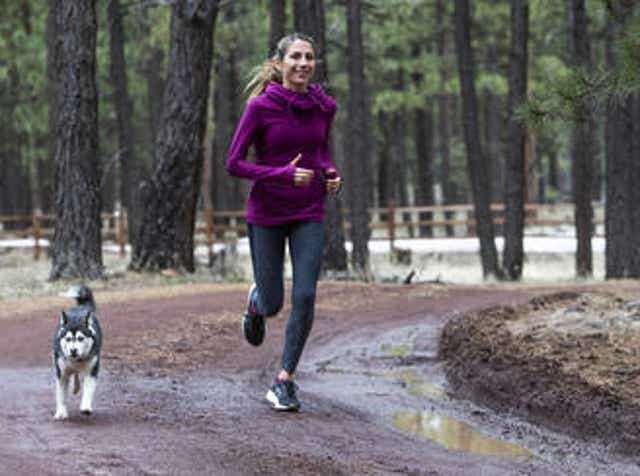
Chepngetich, who is the reigning world champion in the marathon, is the favourite to win on the women’s side, boasting a personal best of 2:17:08, which she ran in Dubai in 2019. Since her marathon debut in 2017, she has finished in the top three in every race she has completed and is the only woman in the field who has run under 2:20 for the marathon. She was one of the favourites to contend for gold at the Tokyo Olympic marathon in August, but struggled under the intense heat and dropped out at 30K, the first DNF of her marathon career. She is the fourth-fastest woman in history, and this will be her first marathon on American soil.
“I have never raced in the States and making my debut in such a great race like the Bank of America Chicago Marathon is more than a dream to me,” she said in an interview with NBC Chicago. “I will give all myself trying to run as fast as possible. The presence of such a wonderful elite field will boost me.”
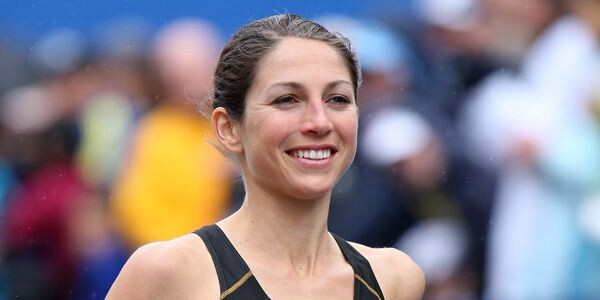
Hall had to drop out of the 2020 U.S. Olympic Marathon Trials, but won the Marathon Project in Arizona in 2:20:32 last December, putting her in second place in the American record books behind Kastor. If she breaks Kastor’s record on Sunday she will be only the second American woman to ever run under 2:20.
Hall will be joined on the start line by several other Americans, including Keira D’Amato, Emma Bates, Lindsay Flanagan and Diane Nukuri, among several others. Canada’s Bazeley has also recently been added to the elite field and will be entering the race with a personal best of 2:36:35, which she ran in 2019.
Live coverage of the event will begin at 8 a.m. ET (7 am local time), with the men’s and women’s wheelchair race setting off at 8:20 and 8:21. The first wave of runners is set to begin at 8:30 a.m. ET (7:30 local time).
Unfortunately, there are no free platforms covering the Chicago Marathon in Canada. Canadians can sign up for a FloTrack membership to watch the action or you can follow the live results here, which will be updated every five kilometers.
The weather is expected to be dry and partly sunny on Sunday, with temperatures starting around 18 C and rising to a high of 26 C later in the day.
by Brittany Hambleton
Login to leave a comment
Bank of America Chicago
Running the Bank of America Chicago Marathon is the pinnacle of achievement for elite athletes and everyday runners alike. On race day, runners from all 50 states and more than 100 countries will set out to accomplish a personal dream by reaching the finish line in Grant Park. The Bank of America Chicago Marathon is known for its flat and...
more...It is Going to Be a Busy 7 Weeks With All 6 World Marathon Majors Taking Place
For the first time ever, all six World Marathon Majors will be contested in the fall of the same year. Due to postponements caused by COVID-19, the Berlin, London, Tokyo, Chicago, Boston, and New York City marathons are all scheduled to take place within a seven-week timeframe.
For many athletes, these marathons will be their first 26.2 since the onset of the pandemic, and they’ve set big goals for the return of the sport.
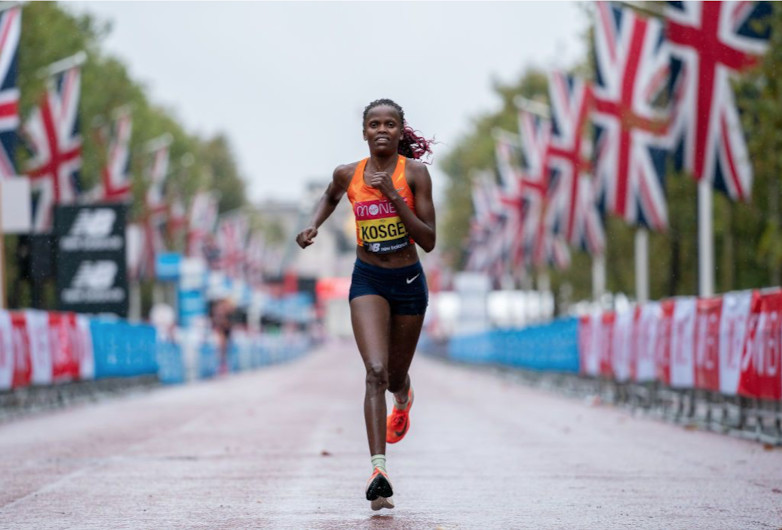
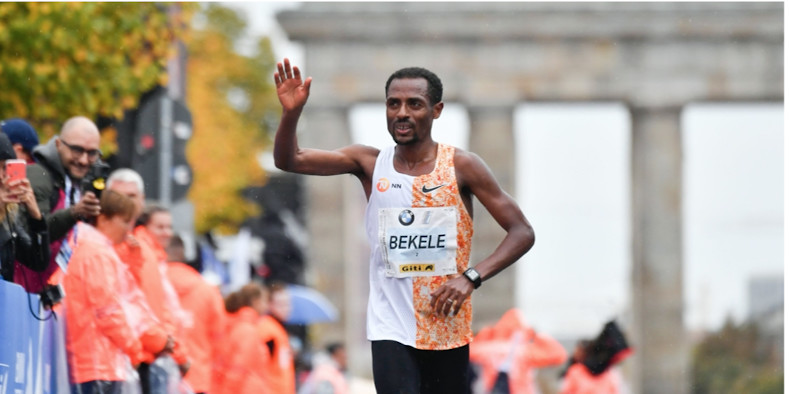
Between runners doubling in events to some chasing national records, the best marathoners in the world are taking full advantage of these highly anticipated competitive opportunities. Here, we outlined some quick takeaways and storylines we’ll be watching based on the early elite field announcements. (And we’ll keep this list updated if and when top runners throw their name into one of these amazing fields!)

Berlin Marathon—Sunday, September 26
MEN:
Kenenisa Bekele, Ethiopia (2:01:41)
Right now, the only elite runner confirmed for the Berlin Marathon is Kenenisa Bekele. Berlin will be the first of two marathons in 42 days for the Ethiopian runner, who is also scheduled to race the New York City Marathon on November 7, a grueling double that will mark Bekele’s first races since March 2020.
As three-time Olympic champion told Sports Illustrated, he is ready for the challenge.
“For a whole year, I couldn’t race and it’s been really difficult for athletes,” Bekele said. “I want to take this chance and see what is possible.”
London Marathon—Sunday, October 3
Eight weeks after winning silver at the Tokyo Olympics, Brigid Kosgei aims to defend her title in London. The world record-holder from Kenya will be going for her third consecutive victory in London against a stacked field that includes defending New York City Marathon champion Joyciline Jepkosgei and two-time Tokyo Marathon winner Birhane Dibaba.
On the men’s side, Shura Kitata will also be looking to defend his title in London after a disappointing performance in Tokyo. The Ethiopian standout struggled in the heat during the Olympic marathon in Sapporo and dropped out of the race, but he’s aiming for redemption on a course where he experienced a breakthrough last year.
“I was disappointed to have to pull out of the Olympic Games Marathon, but I just did not adapt to the weather well,” Kitata told World Athletics. “It was very cold in Ethiopia prior to leaving for Tokyo and when we got there the weather took its toll on my body and made my breathing very hard. But I’m healthy and looking forward to racing in the Virgin Money London Marathon again. I am preparing very well and my coach has me very ready to defend my title in London.”
Chicago Marathon—Sunday, October 10
Almost a year after she nearly broke Deena Kastor’s American marathon record, Sara Hall is gearing up to again chase the elusive time set 15 years ago. In Chicago, Hall aims to continue her breakthrough streak, which started during the 2020 COVID-adjusted season, and run under the record of 2:19:36.
“It has been too long since I’ve been back, and when I thought about where I wanted to chase the American record, I thought it would be more exciting to do it at home, in the U.S., and Chicago is such an epic race,” Hall said in a statement. “I’m really excited to have my best marathon yet on U.S. soil.”
After dropping out of the 2020 Olympic Marathon Trials, Hall made an impressive comeback with a runner-up finish at the London Marathon last October, and a victory at the Marathon Project in December. Hall’s winning time of 2:20:32 is her personal best and the second-fastest performance ever by an American woman.
Hall will have stiff competition up front with Ruth Chepngetich in the field. The Kenyan marathoner set the half marathon world record in April. She had an off day at the Tokyo Games and dropped out of the marathon around the 20-mile mark. Chicago will be the 2019 world champion’s first major marathon since the Olympics and her first race on U.S. soil.
Another American to watch will be Keira D’Amato; she made headlines in 2020 with huge improvements on the track and the roads, which helped her land her first professional contract with Nike at 36 years old. D’Amato was expected to be an Olympic team contender in the 10,000 meters, but she withdrew from the U.S. Olympic Track and Field Trials, citing a hamstring injury. The Chicago Marathon will be D’Amato’s first race since February.
Galen Rupp, who placed eighth in 2:11:41 at the Tokyo Olympics on August 8, is returning to race the marathon in Chicago. This marathon holds some significance for Rupp, who became the first American male athlete since Khalid Khannouchi to win the race in 2017. The last time he competed in the Windy City was during his comeback to the sport after having Achilles surgery. In the 2019 race, he dropped out just before the 23-mile mark, but he’s looking to improve this time around.
“My goal is winning,” Rupp said in a statement. “I want to come back and win. 2019 left a sour taste in my mouth. I didn’t finish that race so I cannot wait to get back out there and come back stronger than ever. It has been a wild ride since then. I’m healthy, I’m happy, and it’s going to be tremendous to come back.”
Boston Marathon—Monday, October 11
Boston will have one of the deepest elite fields on the women’s side with nine women who have run under 2:22, including Olympic bronze medalist Mare Dibaba and 2017 Boston Marathon winner Edna Kiplagat.
The race will also be Des Linden’s first of two marathons this fall. The 2018 Boston Marathon champion is entered in the New York City Marathon on November 7, a shorter than normal timeframe between major marathons. Boston will be Linden’s first major marathon since she finished fourth at the 2020 Olympic Marathon Trials. This spring, Linden set the 50K world record by averaging 5:47 pace for more than 31 miles.
Fellow Americans Jordan Hasay and Molly Huddle will also be returning to Boston after the event took a two-year hiatus due to the pandemic.
​
In the men’s field, several past podium finishers are making their return to Boston, including Kenyan standouts Wilson Chebet, Felix Kandie, and Paul Lonyangata. A large American contingent will be led by four-time Olympian Abdi Abdirahman, who finished 41st in the marathon at the Tokyo Games. Including Abdirahman, eight of the top 12 finishers from the U.S. Olympic Marathon Trials are scheduled to compete.
New York City Marathon—Sunday, November 7
The field assembled for the women’s race, especially the American contingent, is the most stacked marathon of all the fall races. Tokyo Olympians Molly Seidel, Sally Kipyego, and Aliphine Tuliamuk are all slated to return to competition in the Big Apple after representing Team USA in Sapporo.
Fellow podium finisher Peres Jepchirchir of Kenya is also returning to the distance after dominating the marathon to win gold in her first Olympic Games. She has the fastest personal best among the field after running 2:17:16 in Valencia last year. Including Jepchirchir, the New York City field includes four women who have run under 2:21.
Outside of the Olympic team, a handful of the top Americans are also gearing up for fast times in the city. Emily Sisson, Kellyn Taylor, Stephanie Bruce, Roberta Groner, and Laura Thweatt are scheduled to compete. And Des Linden will be racing her second marathon of the fall after competing in Boston on October 11.
Along with Bekele’s double, Abdi Nageeye’s performance will draw fans in to watch the men’s race in New York City. The runner from the Netherlands secured a silver medal in the Tokyo marathon by crossing the finish line in 2:09:58, a huge improvement from his 11th-place finish in Rio. He’s finished in the top 10 twice at the Boston Marathon, but this fall will mark his debut in New York City and he’s feeling confident in his chances.
“For me, winning the silver medal in the Olympic Games was not a surprise,” Nageeye said in a statement. “There were many good athletes in the race, but I knew my preparation had been good. I was ready for the conditions, and most importantly I believed in myself. I will take that same focus into my preparations for New York, and my belief and confidence in my abilities is even higher than it was in Sapporo. There is nothing I want more than to bring a New York City victory back home along with my Olympic medal.”
There will also be a couple of highly anticipated marathon debuts, including Kibiwott Kandie and Ben True. Kandie is the half marathon world record-holder and a world championships silver-medalist. True will be aiming for redemption after finishing fourth in the 10,000 meters and narrowly missing out on making Team USA at the Olympic Trials in June.
by Runner’s World
Login to leave a comment
SARA HALL RUNS FASTEST HALF MARATHON BY AMERICAN THIS YEAR, MISSES RECORD ATTEMPT
Hall clocks 68:44 in return to Cottage Grove as part of buildup for Chicago Marathon in October, now boasts three career-sub 69 performances
Sara Hall has produced two of the strongest half marathon performances in U.S. history during the past 13 months in Cottage Grove, Ore., but just like last year, Saturday’s effort along the Row River bike path came up short of her pursuit of the American record.
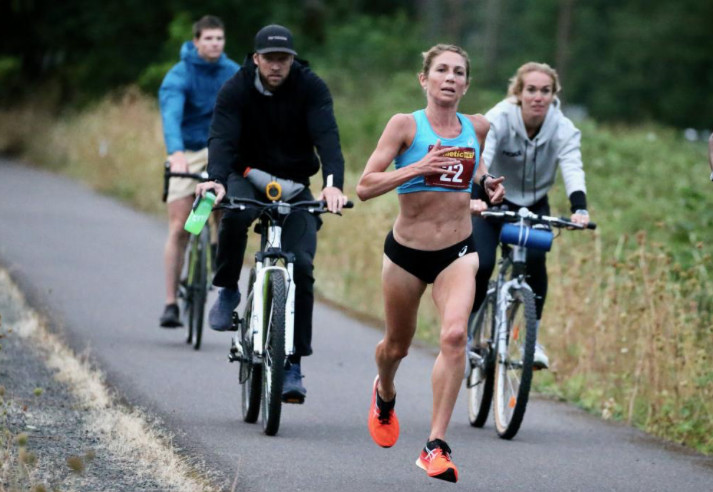
Hall, representing ASICS, clocked 68 minutes, 44 seconds, after she ascended to the No. 6 all-time U.S. competitor last year by running 68:18 along the Harms Park boat ramp parking lot in Cottage Grove.
Hall, who became the fastest American and No. 19 performer in the world this year, now has three career marks under 69 minutes. She also ran 68:58 at the Houston Half Marathon last year.
Molly Huddle still holds the record of 67:25 from the 2018 Houston Half Marathon.
Hall, 38, joined Shalane Flanagan, Jordan Hasay, Emily Sisson and Huddle as the only American women with at least three career sub-69 performances on record-eligible courses.
Hall used Saturday’s opportunity as part of her preparation for the Chicago Marathon, scheduled for Oct. 10.
Hall, who ran the second-fastest performance by a U.S. female with her 2:20:32 effort in December at the Marathon Project in Chandler, Ariz., will be again taking aim at the 2006 American record of 2:19:36 held by Deena Kastor.
Login to leave a comment
Molly Seidel Shocks the World With Bronze Medal, as Kenya’s Peres Jepchirchir and Brigid Kogei Go 1-2 in 2020 Olympic Marathon
In one of the most remarkable and unlikely runs ever by an American distance runner, Wisconsin native Molly Seidel earned a bronze medal in the 2020 Tokyo Olympic marathon, running 2:27:46 in the heat of Sapporo on Saturday morning. Seidel established herself near the front of the race early, and remained there throughout. Late in the race, Seidel was in a battle for bronze with Israel’s Lonah Chemtai Salpeter, but with three miles to go, Salpeter stopped running, leaving Seidel in bronze-medal position, which she protected to the finish line.
Kenya’s Peres Jepchirchir, the world record holder in the women’s-only half marathon, pulled away from teammate Brigid Kosgei, the marathon world record holder, in the final two kilometers to take the gold in 2:27:20. Kosgei settled for the silver in 2:27:36, her first loss in her her last five marathons.
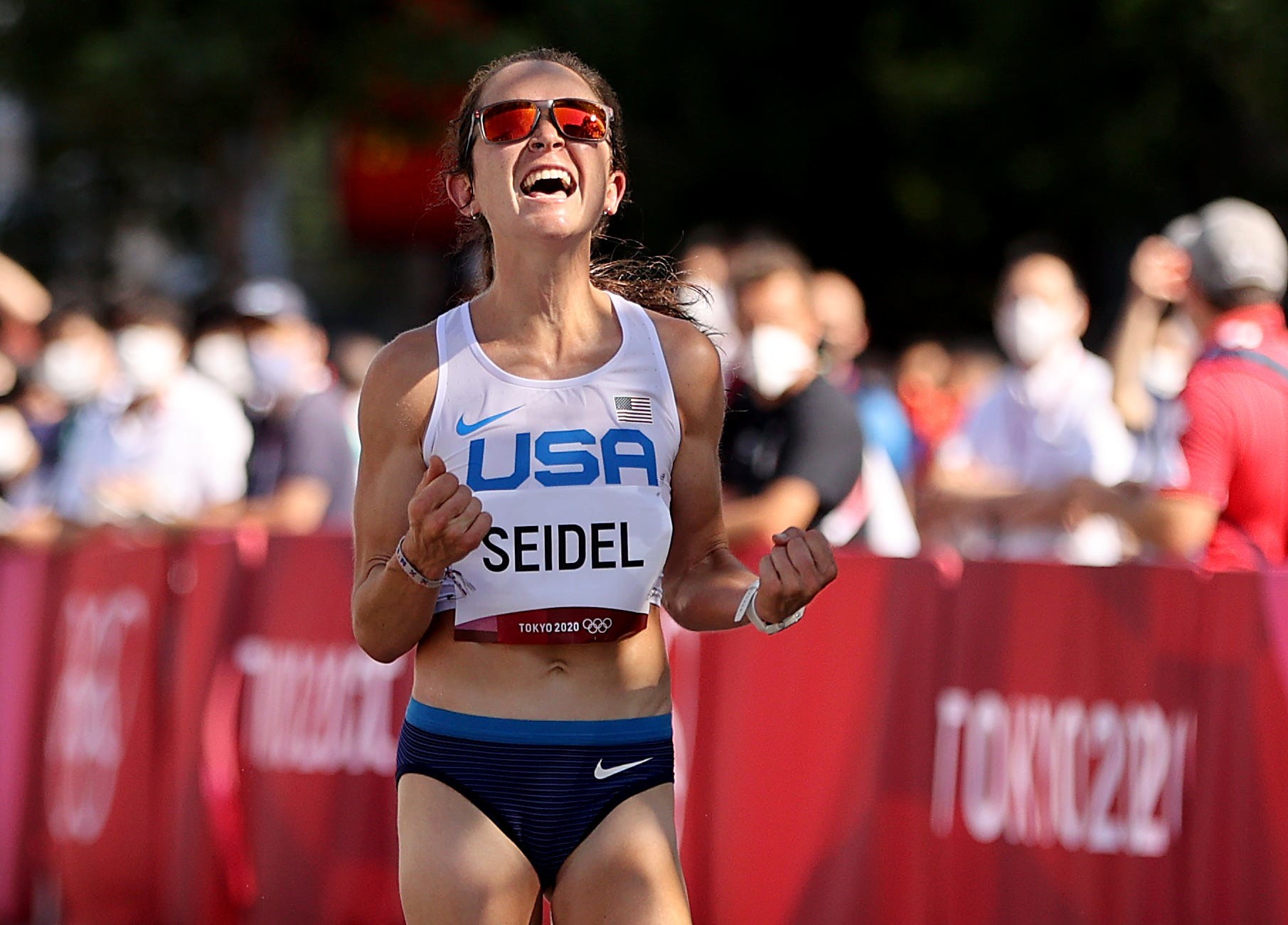
The story for American distance running fans was Seidel, running in only her third marathon of her life (her first was the Olympic Trials marathon in 2020 to get here). Seidel beat five sub-2:20 women. She entered the race with a 2:25:13 personal best and yet was in the conversation for the gold until the final 2k. She joined American running legends Joan Benoit Samuelson (gold in 1984) and Deena Kastor (silver in 2004), as the only American women to medal in the Olympic marathon.
The race
At race time, it was sunny and 76 degrees with 87% humidity, despite the race being moved up an hour because of the heat to start at 6 a.m. local.
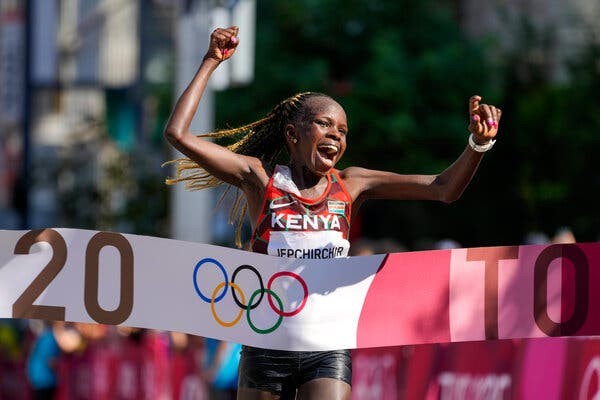
As a result, the race went out slow, with 5K and 10K splits of 18:02 and 36:16 for the leaders (2:32:50 marathon pace at 10K). The lead pack remained about 40 or 50 women strong at the 10-kilometer split, but the effect of the heat was unmistakable, with women applying ice bags on themselves and running wide to get into the shade. By this point, US champion Aliphine Tuliamuk had fallen off the pace (she would eventually drop out).
From there, as the race advanced north on a slight downhill, it picked up. Honami Maeda of Japan took a few turns at the front, as did Americans Seidel and Sally Kipyego, but it was mostly shared. The next two 5K splits (17:31 and 17:41) were quicker and reduced the lead pack to less than 20 women by 20K. Zeineba Yimer, a 2:19 woman from Ethiopia, dropped out at the 17K mark.
The lead group went through halfway in 1:15:14, and the lead group was whittled down to 11 with Ethiopian contender Birhane Dibaba falling off the back.
Americans Seidel and Kipyego remained in the lead pack of 12 at 25K (Volha Mazuronak of Belarus rejoined the lead pack between halfway and 25k), which the women went through in 1:28:51 (2:29:47 pace). Ethiopian Roza Dereje Bekele (2:18:30 pb) and Salpeter (2:17:45 pb), along with the three Kenyans, were pushing the tempo slightly.
After that split, as the women continued to weave through the north Sapporo suburbs and Hokkaido University, racers started dropping off the lead pack like flies: first Kipyego, then Mazuronak and then a big casualty — Ruth Chepngetich of Kenya, the reigning world champ, falling back around the 29K mark.
Meanwhile at the front, Seidel led the entire 18th mile in around 5:26. The lead group of nine went through 30K in 1:46:03 (17:12 previous 5K, quickest of the race). The Japanese spectators pulled for their countrywoman Mao Ichiyama, who was still there.
The 30-35K split was the quickest of the race (16:54) and those five kilometers caused the biggest carnage: four women, including Ichiyama and Dereje, the final Ethiopian, dropped off the lead pack.
Now with the group down to five and less than five miles remaining, and Seidel continuing to run with confidence and share the lead with the two remaining Kenyans, the curiosity surrounding Seidel turned into a real possibility…could she snag a medal?
Bahrain’s Eunice Chumba dropped off just after the 35K mark, making it a four-woman race for three medals: Kosgei, Jepchirchir, Salpeter, and Seidel. Women with personal bests of 2:14, 2:17, 2:17, and 2:25. But in the summer Japan heat, the strongest women would win, not the fastest.
In the 24th mile, the Kenyans finally struck, Jepchirchir throwing in a surge and Kosgei covering it. They opened up a small gap on Salpeter and Seidel immediately, and Salpeter had a few meters on Seidel.Before one even had time to process whether Seidel’s fairytale quest for a medal was coming to an end, her fortunes changed drastically. At the 38-kilometer mark, Seidel caught Salpeter, who was still less than five seconds behind the leaders, but slowing slightly. Salpeter, however, was broken. Within a span of seconds she slowed to a walk and Seidel was into the bronze position, with the leaders still in her sights, Jepchirchir in front and Kosgei sitting on her.
At 40k, Jepchirchir and Kosgei were still together with Seidel only six seconds back, 31 seconds ahead of fourth place, comfortably in bronze position, barring a blowup. Seidel appeared to be closing on the leaders. Could she even get the silver or the gold?
Not quite. Jepchirchir had one final gold-medal move, dropping Kosgei just after the 40K split and quickly opening a 10-second gap. She would extend her winning margin to 16 seconds by running the final 2.195 kilometers at 5:23 pace.
Kosgei was fading slightly but so was Seidel. Both held their positions through the line, as Seidel could not quite summon the finish to get back to Kosgei and finished 10 seconds behind her in the bronze medal position.
Seidel yelled in delight as she crossed the finish line, while Kosgei looked slightly disappointed with the silver. The third American, Sally Kipyego, finished 17th in 2:32:53.
The temperature at the finish was 84 degrees with 67% humidity.
Login to leave a comment
Tokyo 2020 Olympic Games
Fifty-six years after having organized the Olympic Games, the Japanese capital will be hosting a Summer edition for the second time, originally scheduled from July 24 to August 9, 2020, the games were postponed due to coronavirus outbreak, the postponed Tokyo Olympics will be held from July 23 to August 8 in 2021, according to the International Olympic Committee decision. ...
more...Galen Rupp and Sara Hall will headline the 43rd annual Bank of America Chicago Marathon elite field
The Bank of America Chicago Marathon announced today that two-time Olympic medalist Galen Rupp and America’s second fastest female marathon runner ever, Sara Hall, will be at the helm of this year’s elite field, a year that marks a global comeback for the road racing industry. Rupp stands out as one of the most decorated runners on the track and in the marathon, winning the 2016 and 2020 U.S. Olympic Marathon trials and the 2017 Chicago Marathon; he is a five-time U.S. record holder, and eight-time U.S. 10,000 meter champion. Hall, a seven-time Olympic trials qualifier with ten national titles from the mile to the marathon, to her name, hopes to rewrite history by breaking the American marathon record, 2:19:36, set in 2006 by Deena Kastor.
“We are thrilled to welcome Galen and Sara, two of the most talented runners in U.S. history, to our start line this fall,” said Bank of America Chicago Marathon Executive Race Director Carey Pinkowski. “This is a celebratory moment not only for U.S. running, but for the global running community. The resilience and determination that Galen and Sara have shown throughout their careers is the same kind of resilience and determination that lives within every runner showing up in Grant Park this fall.”
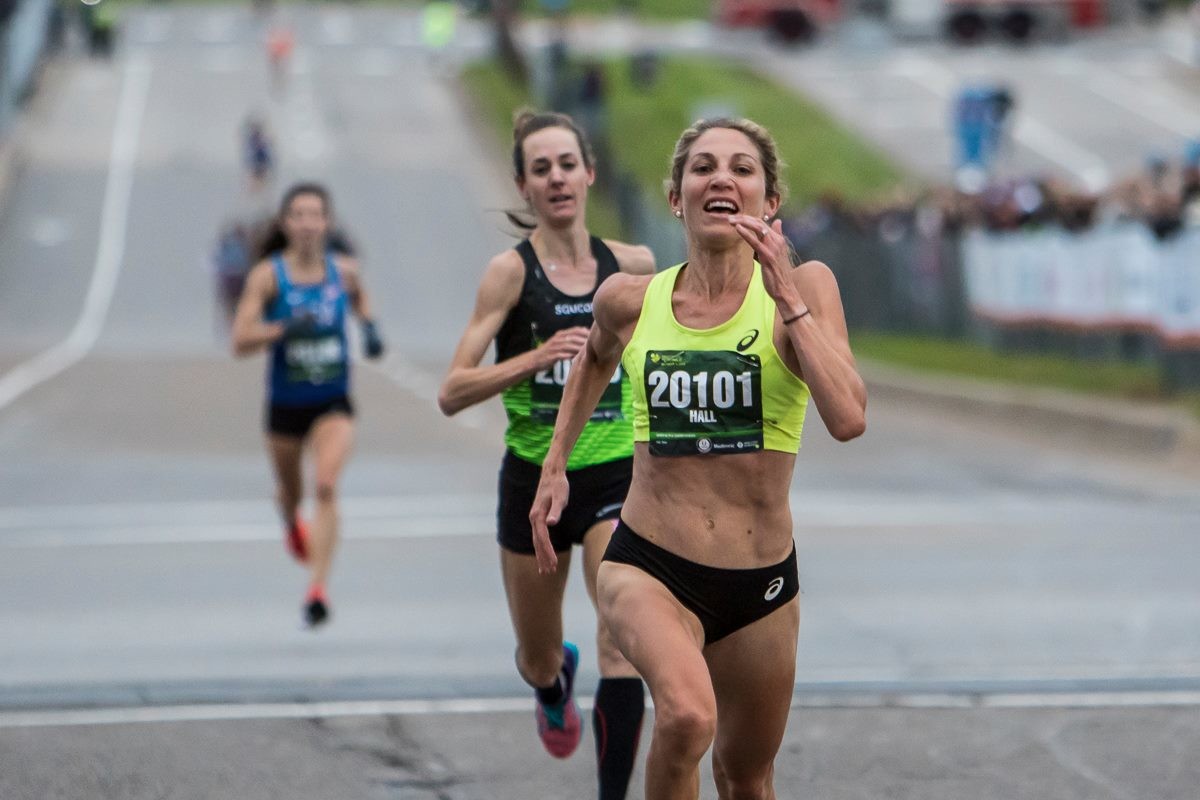
Rupp, a four-time Olympian with a bronze medal in the marathon and a silver medal in the 10,000m, will make a quick turn-around to Chicago after going for gold in Tokyo. Rupp put on a show during his first appearance in Chicago in 2017 when he became the first American male since Khalid Khannouchi to stand on top of the podium. He returned in 2018, finishing fifth in 2:06:21, the fifth fastest time in American history on a record eligible course (he also owns the third fastest time ever run, 2:06:07). Shortly after his performance in 2018, he underwent surgery to correct Haglund’s Deformity. Rupp used his 2019 and 2020 seasons to announce his comeback to the top of elite running.
On an unrelenting hilly course in Atlanta, Rupp showcased his dominance at the 2020 U.S. Olympic Marathon trials, swiftly winning the race while making his fourth Olympic team. Since then, he has continued to run well, setting an American record for 10 miles in 2020 (en route to a half marathon victory), and running in the Olympic Trials in the 10,000m. In addition to his accolades on the track and in the marathon, he is the second fastest American ever over the half marathon distance (59:47). If Rupp breaks the tape first this fall, he will be only the seventh man in Bank of America Chicago Marathon history to claim victory twice.
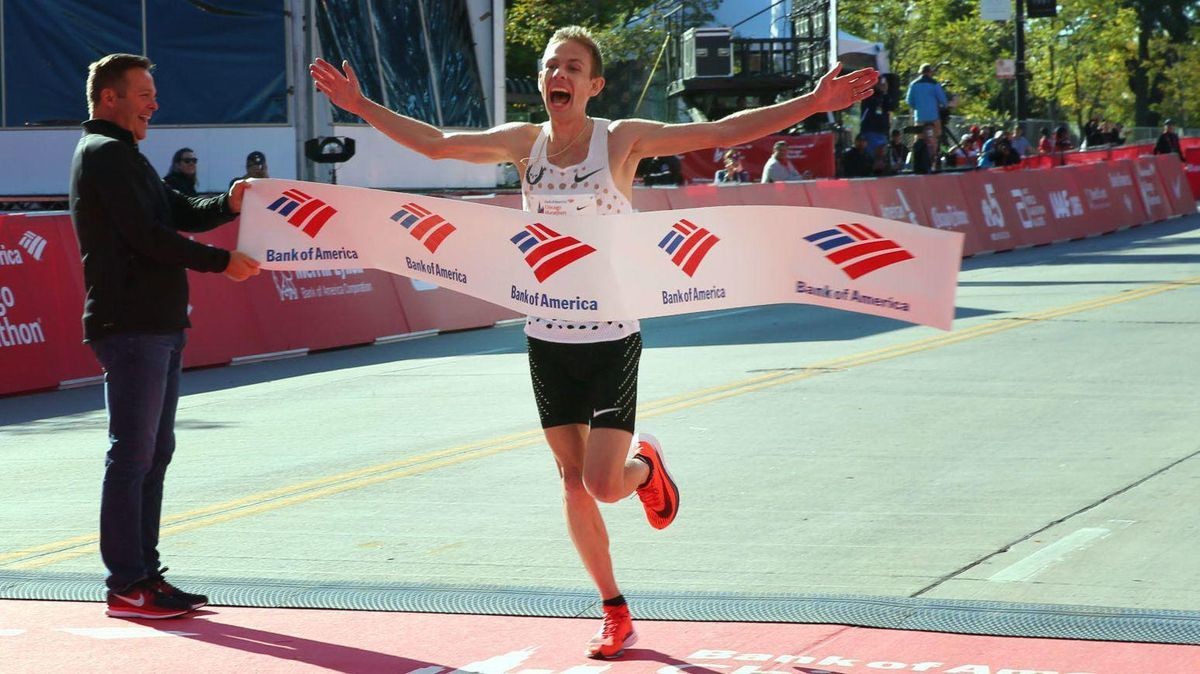
“Chicago is a special city and I’m excited to be coming back after so long,” said Rupp. “I have a personal connection to the city, and the 2021 Bank of America Chicago Marathon is going to be an awesome celebration.
“My goal is winning,” Rupp continued. “I want to come back and win. 2019 left a sour taste in my mouth. I didn’t finish that race so I cannot wait to get back out there and come back stronger than ever. It has been a wild ride since then. I’m healthy, I’m happy, and it’s going to be tremendous to come back.”
Like Rupp, Hall stands out as one of the most versatile athletes in any elite field. She launched her professional career as a middle-distance specialist and steeplechaser while slowly migrating to the roads and, in 2015, to the marathon. She finished 10th in Chicago in 2015, ninth in New York in 2016, sixth in Tokyo in 2017, first in the California International Marathon in 2017 (her first U.S. title in the marathon), and third in Ottawa in 2018. But those achievements pale in comparison to what came next.
In 2020, Hall picked herself up from a disappointing DNF at the U.S. Olympic Marathon Trials, refocused, and commenced her campaign to make history. She finished as the runner-up in 2:22:01 at the London Marathon last October (one of the only elite events in 2020), becoming the first American to finish in the top three in 14 years. Eleven weeks later - unconventional timing for a marathon runner - she competed in the Marathon Project, winning in a personal best, 2:20:32, while also inching closer to Kastor’s American record. Hall enters this year’s Chicago Marathon with a goal written on her bathroom mirror: “American Marathon record-holder.”
“I am excited to run the Bank of America Chicago Marathon again,” said Hall. “It has been too long since I’ve been back, and when I thought about where I wanted to chase the American Record, I thought it would be more exciting to do it at home, in the U.S., and Chicago is such an epic race. I’m really excited to have my best marathon yet on U.S. soil.”
American marathon record holder and 2005 Chicago Marathon champion, Deena Kastor, is eager to watch Hall chase history.
“It’s exciting to see Sara go after the American record again,” said Kastor. “Her incredible fitness and joy of running makes this an opportunity worth fighting for. Chicago is certainly a great choice to be your best, so spectators can expect to witness some exciting performances on race day.”
The 43rd annual Bank of America Chicago Marathon will take place on Sunday, October 10.
by Business wire
Login to leave a comment
Bank of America Chicago
Running the Bank of America Chicago Marathon is the pinnacle of achievement for elite athletes and everyday runners alike. On race day, runners from all 50 states and more than 100 countries will set out to accomplish a personal dream by reaching the finish line in Grant Park. The Bank of America Chicago Marathon is known for its flat and...
more...Former University of Wisconsin athlete Alicia Monson qualifies for Olympics in the 10,000 m
Taking the lead in the fifth lap and never letting up, Emily Sisson won the 10,000 in 31:03.82 on June 26 at the U.S. Olympic Track & Field Trials. Despite a start temperature of 85 degrees, Sisson broke the 17-year-old Trials record of 31:09.65, set by Deena Kastor in 2004.
Karissa Schweizer moved from third to second in the final lap, finishing in 31:16.52, and Alicia Monson claimed the third team spot in 31:18.55.
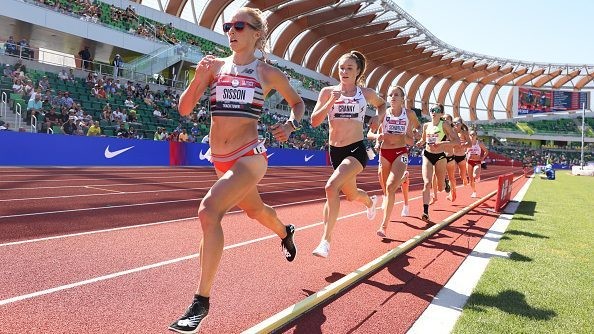
Monson, 23, who runs for On Athletics Club in Boulder, Colorado, also made her first Olympic team. She was wobbly in the final few laps, and after the medal ceremony, she collapsed and started vomiting and had to go to the hospital as a precaution, according to her coach, Dathan Ritzenhein.
“She’s the toughest person, the quietest, toughest person you could imagine,” he said. “I think she’s one of the next greats. She showed it today.”
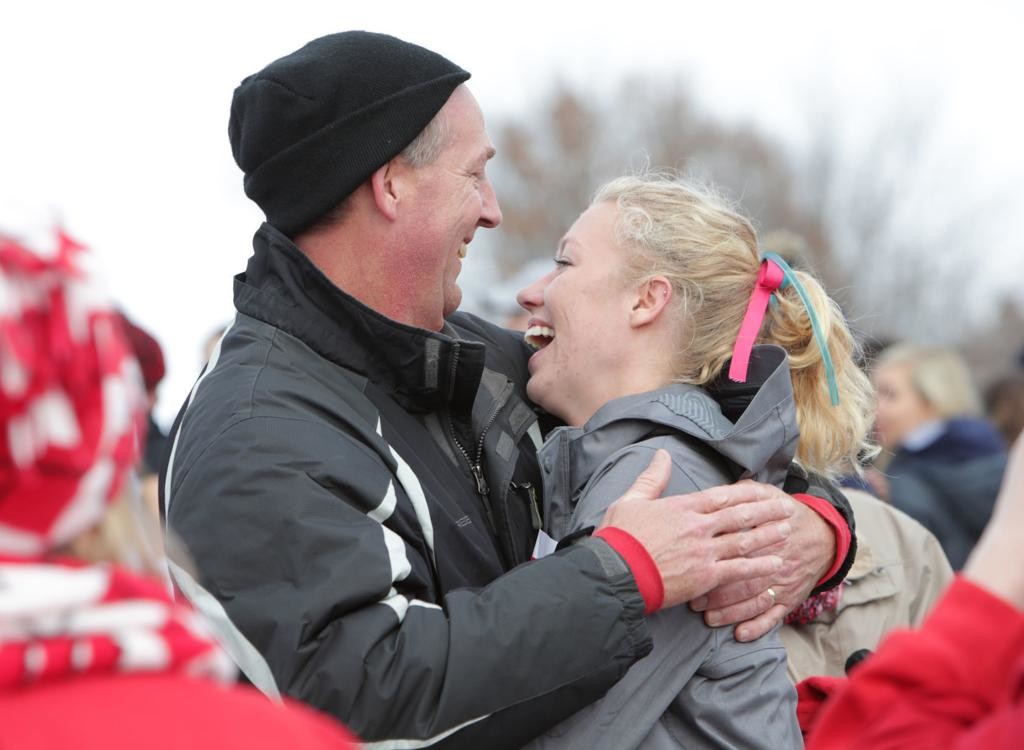
Schweizer also qualified for the 5,000-meter squad on Monday, and she said she was exhausted in the day’s heat. It is unclear whether Schweizer plans to run both events in the the Olympics. If she gives up her 5,000-meter spot, Abbey Cooper will be named to that team. If she gives up her 10,000-meter spot, Niwot native Elise Cranny, fourth in 31:35.22, and Rachel Schneider, fifth in 31:42.92, are eligible to run the 10K in Tokyo.
Cranny and Schneider, however, are also already on the 5,000-meter team. So if Schweizer, Cranny, and Schneider all decide to skip the 10K, then Sara Hall, sixth in 31:54.50, will run the 10K in Tokyo.
by Colorado Runner
Login to leave a comment
Tokyo 2020 Olympic Games
Fifty-six years after having organized the Olympic Games, the Japanese capital will be hosting a Summer edition for the second time, originally scheduled from July 24 to August 9, 2020, the games were postponed due to coronavirus outbreak, the postponed Tokyo Olympics will be held from July 23 to August 8 in 2021, according to the International Olympic Committee decision. ...
more...How Doing Nothing May Make You A Better Runner
The last few decades have witnessed a proliferation of research uncovering the profound effects of meditation on emotional wellbeing and mental health. The ancient Eastern practice has boasted a wide swath of miraculous benefits including the ability to reduce stress, enhance empathy, improve cognition, and even slow aging. But does it offer any aid to runners looking for a mental edge?
The answer is a resounding yes. While runners grind through speed work, tempo runs, and weight sessions vigorously training their bodies to perform to maxim capacity in races, the mind doesn't receive nearly as much attention - yet victory or defeat happen in the mind first. Our brain is an organ that can be either our greatest ally or most ruthless enemy in those vulnerable moments during a race when we are faced with the choice to push victoriously through pain or succumb to suffering by slowing down. It all depends on how we train it - and research has found certain meditation techniques to be unrivaled in powerfully honing the mind.
Beyond running, if you haven't tried meditation yet, this chaotic and precarious year is a good time to start a practice.
What Exactly is Meditation?
The mind tends to produce a lot of chatter, creating stories about the future, replaying the past, worrying, judging, fantasizing, etc. Meditation seeks to calm the erratic thought currents of what is sometimes referred to as the "monkey mind" by attuning us to the present moment.
An internet search will take you down a rabbit hole of various meditation practices, but one of the most well studied, and that which most of the research in this article refer to, is mindfulness meditation. In this practice, you focus intently on one specific thing or sensation, whether it be your breath, an object, or a body part, for a set amount of time. The mind will naturally wander, the idea is to notice when it does and bring your attention back to your point of focus.
And somehow, this "do-nothing" practice boasts some pretty profound benefits for endurance athletes.
Benefits of Meditation

Enhanced Focus and Mental Resilience
Running is a form of stress. The greater the intensity of the run relative to a person's level of fitness, the more stress is generated. While a good deal of that strain is physical, some of it is mental. Prolonged strenuous training, such as a tempo run or distance race, requires enhanced attention and focus on continuing to push oneself into increasing levels of discomfort. Research has shown that practicing mindfulness meditation a few minutes each day can increase the willpower, focus, and emotional resilience necessary for sustained endurance performance by building up gray matter in areas of the brain that regulate emotions and dictate decision making.
For example, in a 2017 study on college football players, mindful meditation was found to strengthen sustained attention and wellbeing among participants in periods of high stress. The participants were divided into two groups and enrolled into either a 4-week "relaxation training" program or a "mindfulness meditation" program, each lasting 2 hours per session. The relaxation group listened to soothing music and learned to systematically and progressively relax their muscles (a common tactic within sports psychology), while the other group was taught mindfulness meditation, which involves paying close attention to breathing and the present moment. Both groups were given 12-minute daily practices to do five days per week. The study was conducted over a stressful 4-week period during the players pre-season summer athletic training when they do especially intensive drills, as well as take summer school courses. As a group, the players degraded in their attentional capacity and their emotional wellbeing, but the amount of degradation differed between the mindfulness meditation group and the relaxation group.
"The mindfulness group didn't decline, they stayed stable over time, whereas the relaxation group actually got worse" says Dr. Amishi Jha, an associate professor of psychology at the University of Miami in Florida, who was a part of the research team. "Within the mindfulness group, those that practiced more, they did their daily homework mindfulness exercises more regularly, they actually benefited more. Their wellbeing was better and their attention was better."
The study was done on football players, but it holds some pretty profound implications for athletes of other disciplines such as running. In fact, 2004 Olympic 2004 Olympic bronze medalist and American marathon record holder Deena Kastor has used meditation practices to enhance her running performance with one of the primary benefits being enhanced focus.
"The benefits I've seen from a performance side, is being able to focus solely on the rhythm of my breath under stressful races," says Kastor, who has been practicing versions of mindfulness meditation and visualization-based meditation for two decades. "Whether I'm anxious to make a move, being shoved or tripped, feeling doubt or fatigue, I can easily focus on my breath until a better thought comes in to help me through the moment."
Dr. Jha emphasizes that when elite athletes underperform, it isn't typically because their body gave out, but rather that their mind gave up.
"What we find in most elite athletes is that their downfall is not because the body conks out, it's that the mind is fighting with them," explains Jha. "So these capacities to focus and really regulate your mood and reactivity become really key in preserving their performance."
Better Cope With Discomfort and Pain
During more intensive training periods, meditation practices can be helpful for reducing muscle soreness and pain. It may also help you push through make-or-break moments in a race or training session when you can either transcend pain or let it slow you down.
Recent findings have demonstrated that mindfulness meditation significantly reduces an individual's sensitivity to pain. A 2015 study published in the Journal of Neuroscience looked at how study participants responded to painful heat stimuli before and after attending four 20-minute meditation training sessions over a four-day period. After the meditation training, participants rated pain, on average, as 57% less unpleasant and 40% less intense.
"This study is the first to demonstrate that mindfulness meditation is mechanistically distinct and produces reductions in pain intensity and pain unpleasantness ratings above and beyond the analgesic effects seen with either placebo conditioning or sham mindfulness meditation," wrote the researchers in their paper.
Race More Intuitively
By increasing your awareness and observation, mindfulness meditation may also give you a mental edge during a race by allowing you to better read your competition and react accordingly.
"The senses meditation I practice has allowed me to take in the rich racing experience and has even allowed me to sense a competitors moves before she makes it," says Kastor, referring to a type of mindfulness meditation technique she uses that focuses on a sensation. "And the visualization has created a powerful belief that what I want to accomplish is possible. In visualizing I try to see a variety of race scenarios and succeeding in all of them. When I can see it, I can believe it, and then become it."
This relates to an area of research that Dr. Jha is interested in further exploring called "embedded practices," which involves being able to integrate mindfulness practices into a physical activity. While mindfully running does not replace the mindfulness meditation practice where you sit in silence focusing on your breath, it can supplement it.
"If you can start incorporating mindfulness practices into your running, then you're kind of getting more bang for your buck," says Dr. Jha. "You're both training your body and you're training your mind. And frankly, because you'll want to use your mindfulness practice during the competition itself, it's really good to start practicing that while you're actually running."
Treat Anxiety and Lower Cortisol
Excessive stress and elevated cortisol levels associated with anxiety can be detrimental to recovery and performance resulting in unpleasant consequences like fatigue, insomnia, hormonal disruptions, mental fog, vulnerability to infection, and increased risk of injury. If you are someone who struggles with anxious thoughts or racing anxiety, meditation can help you regulate your emotions to calm yourself down in moments that trigger stress.
Kastor says that the most unexpected benefit she experienced through her meditation practice was being able to have complete control to calm herself in moments of stress such as traffic, a cancer diagnosis, grief, and fatigue. By strengthening a person's cognitive ability to regulate his or her emotional response, mindfulness meditation has long been recognized as an effective antidote for anxiety. Studies using brain imaging have found that meditation provides relief to anxiety by activating the anterior cingulate cortex, ventromedial prefrontal cortex, and anterior insula - areas of the brain that are involved with executive function and governing worrying. Other studies have shown that mindfulness meditation reduces stress by lowering cortisol levels in the blood.
By activating this relaxation response, meditation has been shown to reduce inflammation and facilitate higher quality sleep making it a promising powerful tool for speeding up recovery in athletes.
How to Start Meditating
If you're interested in beginning your own practice, Dr. Jha lays out a practical template for beginning your own mindfulness meditation.
"A very common foundation of mindfulness meditation practice involves sitting comfortably, paying attention in a quiet place for a dedicated period of time, and then the instruction is to pay attention to, for example, breath-related sensations," explains Dr. Jha. "It can be any kind of anchoring object you want. And your job is to keep your attention focused on that. And then when your mind wanders away, as it will, you just bring it back."
One of the techniques Kastor practices is breath-awareness meditation in which she says she finds 5-10 minutes to be calming. "If I have time, I love to get to a place where my breathing focus dissolves and I can be clear of any and all thoughts," she says, estimating the meditation to last 10-30 minutes. Other times, she closes her eyes and focuses on the sounds, smells, tastes, and feel of her surroundings, typically in nature. For her visualization meditation, Kastor imagines a successful event, such as a race or a presentation. "By visualizing, allowing your mind's eye to see something happening, your body gets to work neurologically to see it to fruition," she explains.
Kastor suggests that anyone who wants to get into the habit of meditating practice at the same time and place every day. Typically, whenever fits best into your schedule whether it's right away in the morning or in the afternoon before picking up the kids from school. (Though, you should try to avoid practicing at times that you're so tired you risk falling asleep mid-meditation.) "The key is to keep at it long enough so you can feel the broad power of its benefits," Kastor notes.
So how long is long enough? Dr. Jha recommends practicing for 10 to 15 minutes a day, the point at which some immediate results of meditation begin to kick in, for five days a week. Her lab has found that some of the benefits of mindful meditation, such as sustained attention, begin to show around four weeks of practicing. A 2016 meta-analysis on mindfulness meditation found that the practice begins to alter brain structure and activity after two months.
As meditation has become more mainstream, various digital programs and apps have been marketed over recent years to make meditation practices more accessible to the public. Kastor uses the Headspace app and recommends it for beginners because it includes guided meditation practices and can feel less intimidating.
"We think of the body as something that needs training to achieve excellence and wellness, and the mind, the brain, are no different," emphasizes Dr. Jha. "The challenge has been that we don't have great science as to what to offer as a training program, and mindfulness meditation happens to be a very good candidate based on the research."
by Trail Runner Magazine
Login to leave a comment
Molly Seidel Racing A Special Edition Of The Atlanta Half-Marathon On The Atlanta Motor Speedway February 28
Gripping the steering wheel of her Audi Allroad while driving on an Arizona highway three days ago, Molly Seidel spoke breezily on her cell phone about what it’s like to go fast. Seidel, whose stunning second place finish at the USA Olympic Team Trials nearly a year ago in Atlanta catapulted her into the national spotlight, enjoys both running and driving fast.
“This thing goes fast,” she said of her car. “I’m a bit of a leadfoot.”
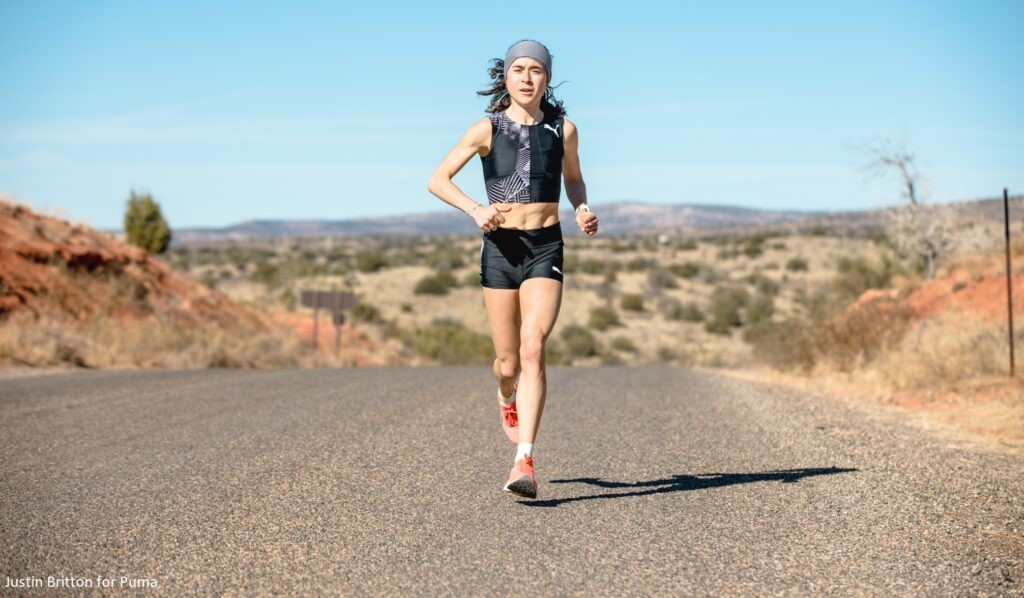
Seidel, 26, will be returning to Atlanta on February 28, where she will run a special edition of the Atlanta Half-Marathon which will be held at the sprawling Atlanta Motor Speedway, partly on the facility’s 1.5-mile race track. The race, part of Atlanta’s Marathon Weekend organized by the Atlanta Track Club, was moved from the streets of the city a year ago to the racetrack grounds in order to offer athletes of all abilities a COVID-safe, in-person running competition. Seidel said she’s never actually run on a racetrack, but she’s very excited by the concept.
“When the race opportunity came up in Atlanta we immediately jumped on that,” Seidel told Race Results Weekly. She added: “I’ve had a lot of exposure to race tracks because my dad and my brother race cars semi-professionally. It’s super cool to watch. I love it.”
Speed is what Seidel will be after in Atlanta. She’ll be using this event as part of her build-up to the Olympic Marathon in Sapporo on August 7, and thinks it fits perfectly into the training plan she and coach Jon Green have devised. She is trying to use as productively as possible the extra year of preparation time she’s been given by the pandemic in advance of the Tokyo Olympics.
“Basically being in kind of a unique position of having already secured the spot several months out we, my coach Jon and I, got to plan backwards a little bit,” Seidel said. “A big part of that is try to, like, get in a combination of strength and speed that I need for Sapporo. For me I really wanted to be able to focus on the half-marathon a little bit more just because… doing stuff on the roads gets me a little bit more excited than doing stuff on the track. The half-marathon is a distance that I haven’t been able to deeply explore yet. It’s been fun getting to learn that distance a little bit better.”
It’s hard to believe that Seidel only ran her first half-marathon on October 26, 2019, at the low-key Cape Cod Half-Marathon in Massachusetts. Facing no competition, she clocked 1:14:10 and finished ahead of the next woman finisher by more than eight and a half minutes. Some five weeks later, she ran her first serious half off of full training, winning the Humana Rock ‘n’ Roll San Antonio & Half-Marathon in a very elite 1:10:27, bettering Shalane Flanagan’s course record by 22 seconds. That performance was pivotal because it qualified her for the Olympic Trials where she made her marathon debut.
Since then, Seidel has lowered her half-marathon best to 1:09:20, a mark she set in a “micro race” outside of Las Vegas last month which only had 37 finishers. For that event, called the Las Vegas Gold Half-Marathon, Seidel said that she went into it with no set goals and just tried to have fun.
“It felt great,” she said of the race which was only for elite athletes. “Really my coach just told me, don’t look at the watch. Just go out, hop between groups of guys as they come back to you, but have fun with it. That’s really what it was. It was just a chance to bust a run, trying to get back into the swing of things, try out the new shoes. Yeah, it was a good day.”
The “new shoes” were her Puma racing shoes, the first time she wore them in competition after announcing she had switched sponsors from Saucony to Puma last month. She’s excited by that transition, and got very comfortable with her new competition footwear by wearing them extensively in training.
“Everybody at Puma, from the first time I went in to meet with them to now when I’m working with them in an official capacity, has been just awesome,” said Seidel whose cell phone signal cut out a few times as she drove through a forest. “That was one of the reasons I wanted to go with them, like, really game for some awesome ideas. It’s really a lot of innovation going on and a really cool attitude. It’s been very fun. It’s been a really good transition. I’ve been enjoying it immensely. Even more so getting to wear, frankly, a really great pair of racing shoes, not only training in them but racing in them, exploring new things that I can do.”
As good as her performance was in the Las Vegas race, Seidel was quick to point out that it did not represent a full effort off of dedicated preparation. The Atlanta race will be different. She wants to see what she can do after putting everything into it, like a race car driver bringing out a new car with a newly tuned engine.
“The Vegas one we just kind of trained through that,” she explained. “We just used that as a workout. This one we’ll go into it with a full-on race mentality, taper a little bit that week.”
While Seidel wouldn’t offer a specific time goal, the Atlanta Track Club has recruited two male pace makers to shepherd her through the two-loop, record-eligible course at a sub-1:09 pace. Depending on how she feels, it is always possible that the American record could enter her mind. The USA record is 1:07:25 by Molly Huddle set in Houston in 2018. Only four American women have run sub-1:08 on a record-quality course: Huddle, Emily Sisson (1:07:30), Deena Kastor (1:07:34), and Jordan Hasay (1:07:55). (Kara Goucher also ran 1:06:57 at the slightly downhill Great North Run in England in 2007).
“Road racing is just exciting to me in a way that track racing is not,” Seidel admitted. “Not that track racing isn’t exciting, but it’s just a different style of running. It’s much more similar to cross country in college, rather than that exacting nature of hitting your exact paces every lap on the track. I think I love the competition and… the fact that it will be different every time. I personally find that road racing lights my soul on fire more.”
Of the other 16 elite women entered in the race at least two, Eilish McColgan of Scotland and Natosha Rogers of Rochester Hills, Mich., could challenge Seidel. McColgan, the 2018 European Championships silver medalist at 5000m, will be making her half-marathon debut. She has covered the distance before, unofficially, working as a pacemaker at the 2020 Virgin Money London Marathon last October where she went through halfway in 1:12:26. She was supposed to run the super-fast RAK Half-Marathon in Ras Al Khaimah in the United Arab Emirates, but that race was recently cancelled due to the pandemic. Rogers, now part of the Hansons-Brooks Original Distance Project, was the USA half-marathon champion in 2017 where she set a personal best of 1:10:45. Seven women in the field have run sub-1:14.
Motor racing may excite Seidel, but she won’t be driving her father’s race car any time soon. She’s 5′-4″ (163cm), and the driver’s seat is permanently set for his six-foot height.
“I’d love to but, frankly, I’m not tall enough,” she said with a laugh. “It’s very set for their specific heights. So, I’d need to wear stilted shoes, or something. I do enjoy driving very much. I’m definitely not the fastest in my family, though.”
by Let’s Run
Login to leave a comment
Sarah Hall ran the second fastest time for the marathon at the Marathon Project
Sara Hall won The Marathon Project in Chandler, Arizona, on Sunday, December 20, running 2:20:32—making her the second-fastest American marathoner of all time. She took almost 90 seconds off her previous PR of 2:22:01, which she ran only 11 weeks ago at the London Marathon.
For about the first 18 miles of the race Hall, 37, flirted with the pace of Deena Kastor’s American record— 2:19:36—which has stood since 2006. But Hall, who ran behind two male pacesetters, couldn’t quite maintain the pace through the later miles.
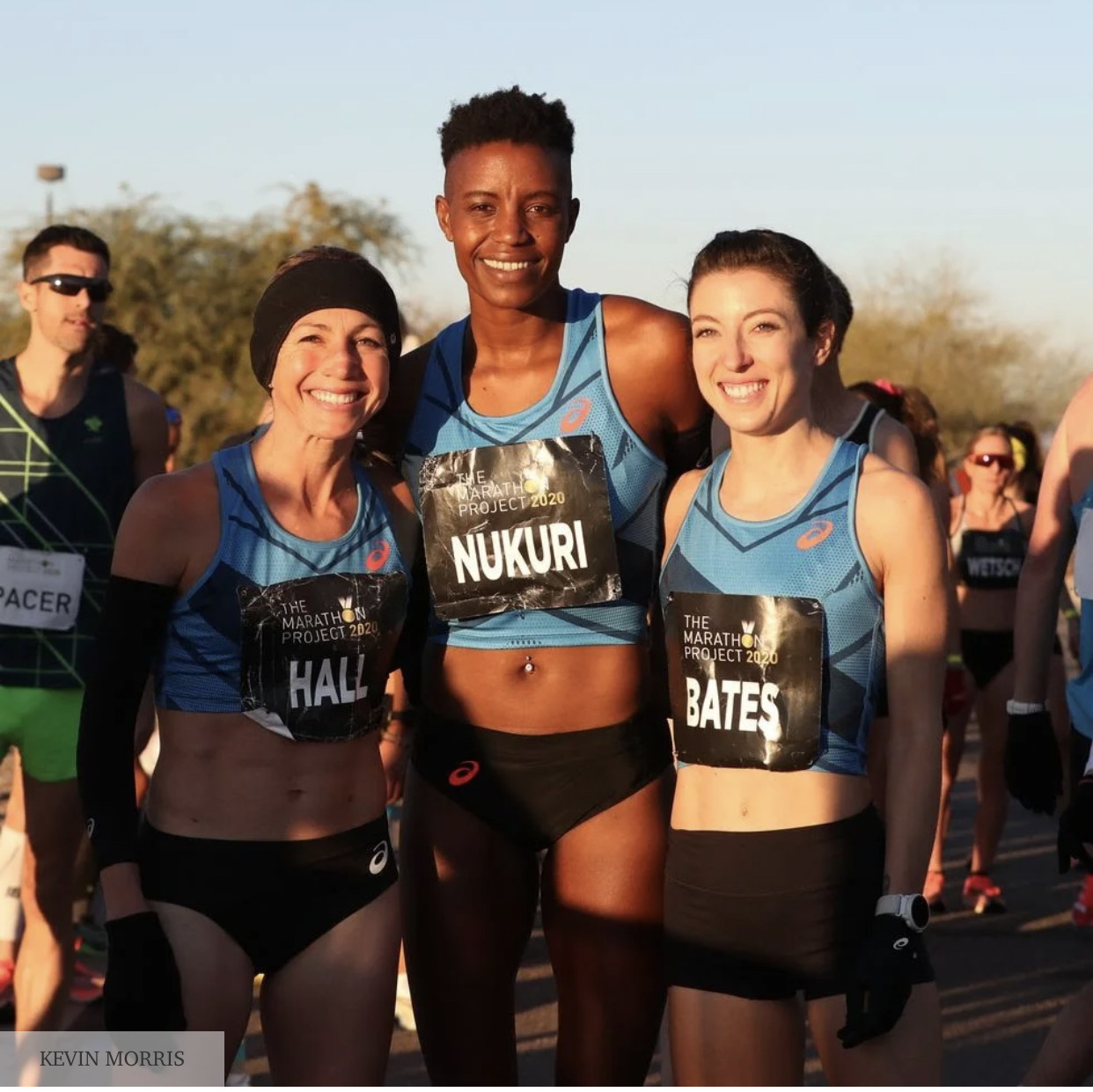
Keira D’Amato, the Virginia realtor who earlier this year ran an American record for the women’s-only 10 mile, finished second in 2:22:56, taking nearly 12 minutes off her previous marathon best.
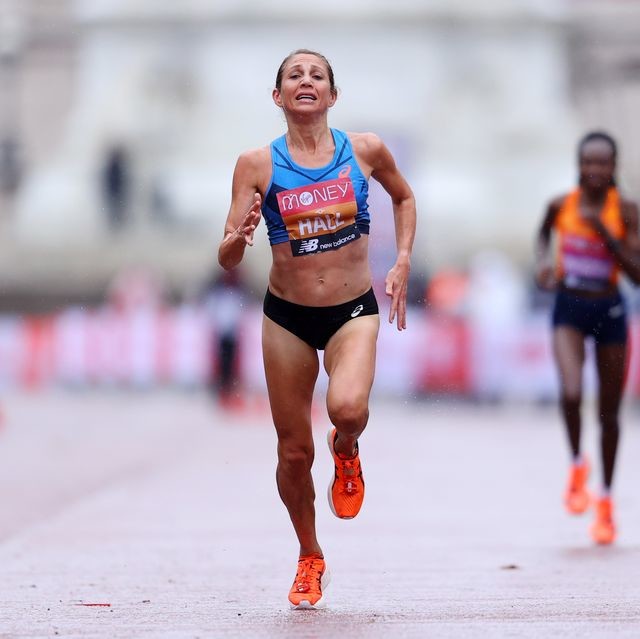
Kellyn Taylor, 34, who went with Hall for the first half of the race, fell back in the second half and finished in 2:25:22.
The 37-year-old Hall ran a personal best 2:22.01 at London on Oct. 4 and was hoping on a short turnaround to better Deena Kastor's 14-year American record of 2:19.36, set at London in 2006. She came close with another significant PR drop, improving from sixth best in U.S. history to second ahead of Jordan Hasay's 2:20.57 at Chicago in 2017.
"London was so wonderful getting to place as high as I possibly could have," Hall said. "This was more of a time trial, and that's kind of tough when it feels like training sometimes. I really look forward to when we can get back to normal races with crowds, but I feel so grateful for the guys I was able to run with. They kept me honest in the second half when I was really struggling."
She said being No. 2 on the American marathon list is "kind of surreal. I've had so much disappointment in my career (including not finishing at the U.S. Olympic Trials in February) and I would have walked from this sport 10 years ago. But my husband just relentlessly believed in me and God encouraged me there was more there. I kind of (rediscovered) my love for it. Getting rid of the fear of failure really helped me enjoy it a lot more."
Two-time Olympian Ryan Hall, third fastest all-time among American men's marathoners, now coaches his wife, whose next goal is to make the U.S. Olympic track team for Tokyo in the 10,000-meter.
Sara Hall 2:20:32
Keira D'Amato 2:22:56
Kellyn Taylor 2:25:22
Emma Bates 2:25:40
Natasha Wodak 2:26:19
Login to leave a comment
5 reasons why The Marathon Project will be the race of the year
With just over 100 of the top athletes in North America (and several athletes representing other nations) prepared to race on Sunday on a flat and fast course in Chandler, Ariz., The Marathon Project has the potential to be the best race of 2020. Records could be broken, Canadians could hit Olympic standard and drama could unfold, all of which makes the event mandatory viewing for all fans of the sport. There are many reasons why The Marathon Project could be a top event, but here are just a few if you needed any more convincing.
It’s one of the only races of the year

The Marathon Project could be one of the best races of the year because, well, it’s one of the only races of the year. So far this year, the biggest races we’ve seen have been the U.S. Marathon Trials in February, the Tokyo Marathon in March, the London Marathon in October and the Valencia Marathon in December. Based on its stacked lineup, The Marathon Project will likely join this list as one of the top events of 2020, and if the contenders are firing on all cylinders on Sunday, it could beat out those other events as the top race of this strange year.
Canadians are racing
Six Canadians are set to race in Arizona on Sunday, and we can’t wait to see any of them run. On the men’s side, Cam Levins will look to better his Canadian marathon record of 2:09:25, and he’ll be joined by Rory Linkletter, who has a marathon PB of 2:16:42, and Ben Preisner and Justin Kent, who will be running their debut marathons. (Preisner ran a solo marathon earlier this year, but this will be his first official race over 42.2K.) While Levins is the only one to have ever run under the Olympic qualifying standard of 2:11:30 (although he has yet to do it in the current qualifying window for Tokyo 2021), they’re all certainly capable of hitting this time, and it will be exciting to see how they fare on Sunday.
Natasha Wodak and Kinsey Middleton will represent Canada in the women’s race, and like the runners on the men’s team, they’re both threats to beat the Olympic standard, which is 2:29:30 for women. Wodak has run one marathon before, but that was all the way back in 2013. She ran a 2:35:16 back then, and now, seven years later, she’ll be looking to take a significant chunk off that result. Middleton won the Canadian Marathon Championships in 2018, when she ran her PB of 2:32:09. Two years removed from that result, she’s likely hungry to run even quicker in Arizona.
Records could fall
Sara Hall is the top-seeded runner in the women’s field, and she’s coming off a spectacular PB at the London Marathon, where she ran 2:22:01. If she has a good run, she could be in the hunt for the American record of 2:19:36, which belongs to Deena Kastor. On the men’s side, Levins could challenge his own Canadian record, which he set at the 2018 STWM.
It’s a chance to race
Not being able to race in 2020 has been hard on all runners, but for these elites, this is how they pay their bills. Racing brings prize money and sponsorships, and with so few chances to race this year, it has been extremely tough on these athletes. The Marathon Project is giving runners the opportunity to earn some cash, which is a great gift in time for the winter holidays.
Olympic spots are up for grabs
The Olympic qualifying window was closed for runners throughout the summer, and even if it had been open, there were next to no chances for athletes to run standard at official races. The American Olympic marathon team was decided at the trials in February, but for athletes from other countries, this presents an opportunity to potentially book their tickets to Tokyo next summer. With so much at stake, there will definitely be some thrilling racing on Sunday.
by Running Magazine
Login to leave a comment


